
Explore the legal fee landscape in Canada: trends, median costs, and pricing shifts across practice areas

Source Details:
Report Purpose:
This report aims to uncover key trends regarding legal fee changes across Canada and the factors influencing these trends. Canadian Lawyer gathered comprehensive data from law firms across diverse industries and provinces throughout Canada. The goal was to analyze where the legal industry is seeing changes and challenges and analyze these to inform business decisions.
Report Intro
This report identifies key trends when it comes to legal fees in Canada. These trends are impacted by several factors, including the cost of living, increasing salaries, and rising administrative and technological costs.
Report Insight Part 1: What does Canada’s legal employment landscape look like?
The number of law firms and lawyers increased in Canada between 2019 and 2022. Despite this increase, positions are not filled equally, with three- to six-year in-house counsel positions being the easiest to fill and technology lawyers being the most difficult.
Report Insight Part 2: Legal fees are generally increasing
Legal fees are generally increasing across the seven practice areas highlighted in our survey. In 2024, 64 percent of firms plan to increase their fees compared to 2023. However, the labour and employment practice area is an exception, as it has experienced consistent decreases in fees across all firm sizes. This trend may reflect its declining contribution to overall firm revenue.
Report Insight Part 3: The correlation between fees and salaries
Legal fees are increasing primarily due to inflation and the rising cost of living, which are creating demand for higher salaries within the legal profession. Technology and administrative costs are also rising and further contributing to increasing fees.
Report Insight Part 4: Fee structure and hourly billing rates
While the cost of legal fees increases in correlation with experience, regional differences were evident, with the East region seeing the highest hourly billing rates across all experience levels and Ontario seeing the lowest for most experience levels.
Report Insight Part 5: Revenue growth and economic challenges
Real estate is the leading practice area for firm revenue in 2024, showing growth of almost 10 percentage points since 2020/2021. Despite growth in certain sectors, challenges remain, with recruiting and training reported as the top economic challenge, closely followed by increasing revenue and expense management.
Between 2019 and 2022, most provinces saw an increase in the number of law firms under the Federation of Law Societies of Canada, with the total number of law firms across the country increasing from 36,500 in 2019 to 40,674 in 2022 – an increase of 11.4 percent. (This excludes Quebec, Prince Edward Island, and Nunavut, which did not have sufficient data to be included in this comparison.)
Broken down by region, the Northwest Territories saw the greatest percent change, with an increase of 37.3 percent, followed by Nova Scotia at 19.6 percent, Alberta at 16.7 percent, and Ontario at 12.7 percent. British Columbia, Newfoundland and Labrador, Yukon, and New Brunswick saw smaller increases of below 10 percent, while Saskatchewan saw a decrease of 3.2 percent
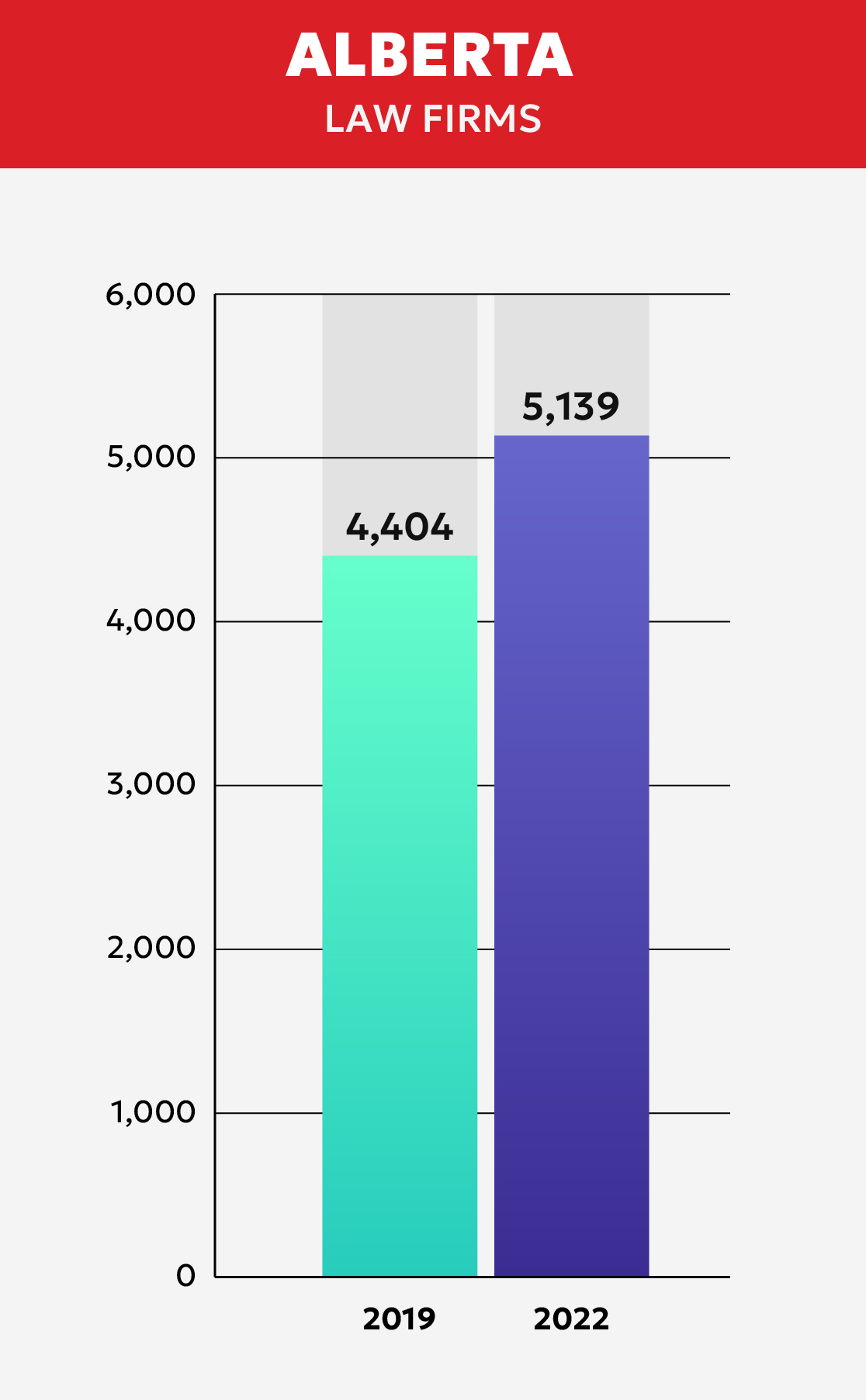 |
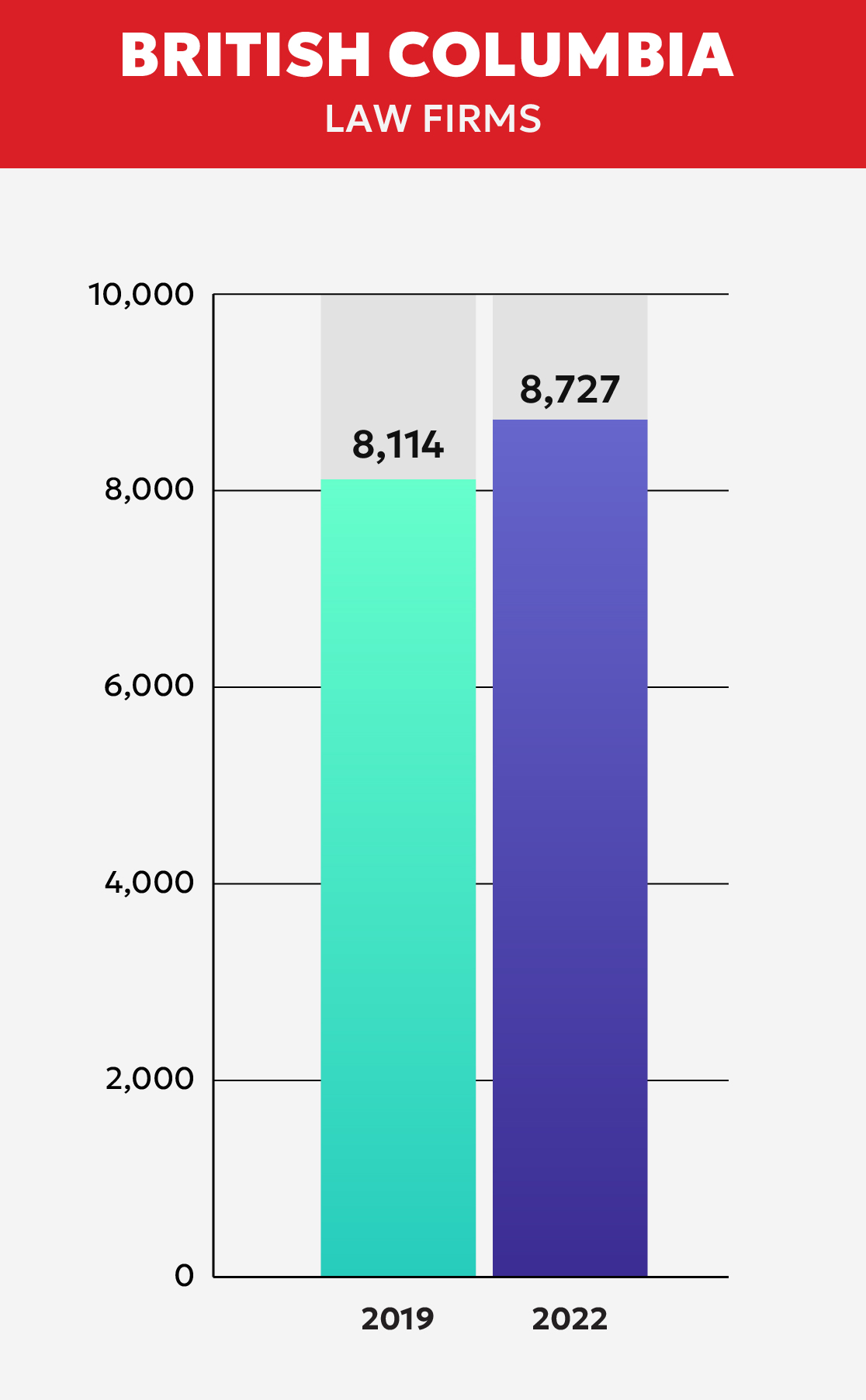 |
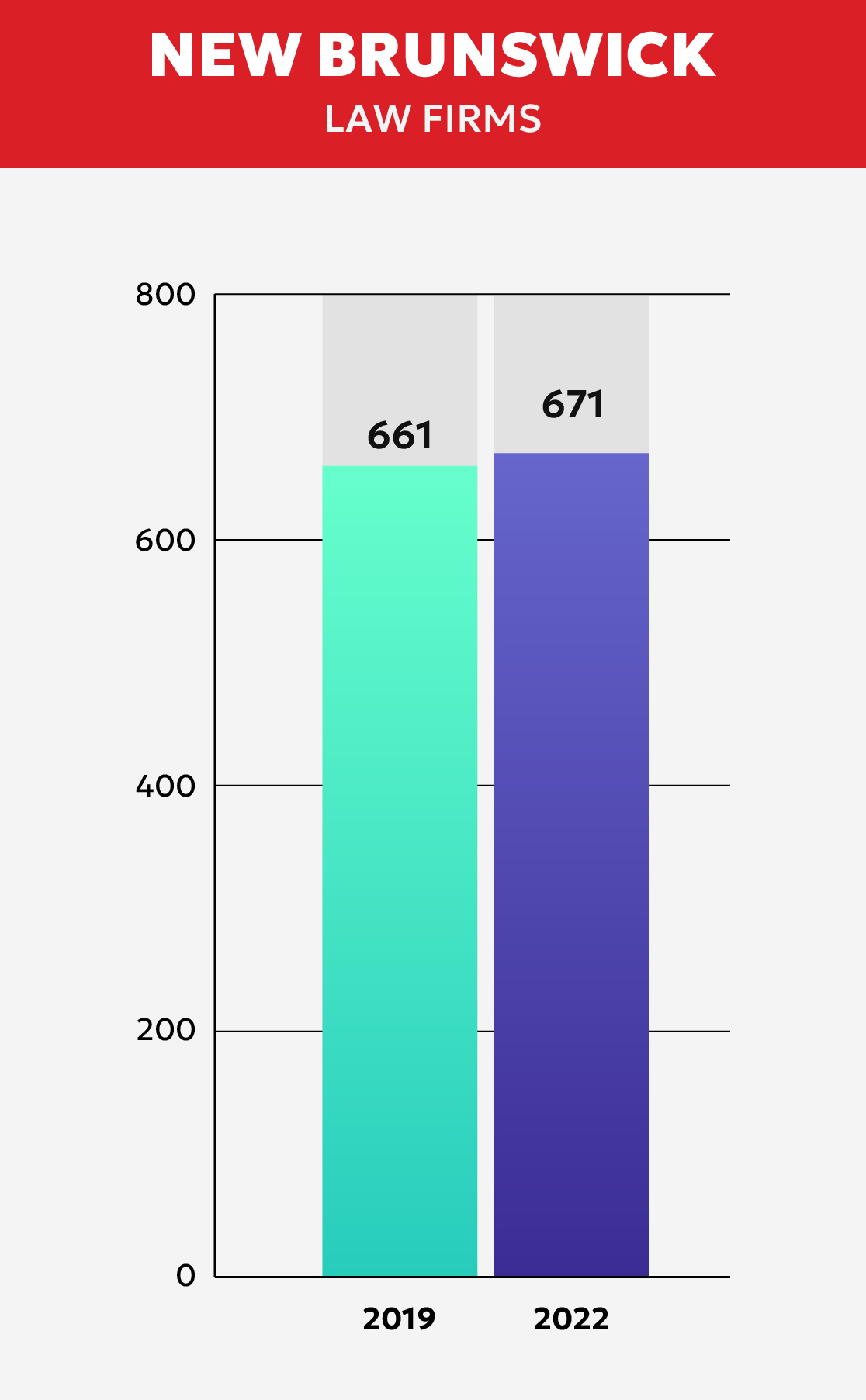 |
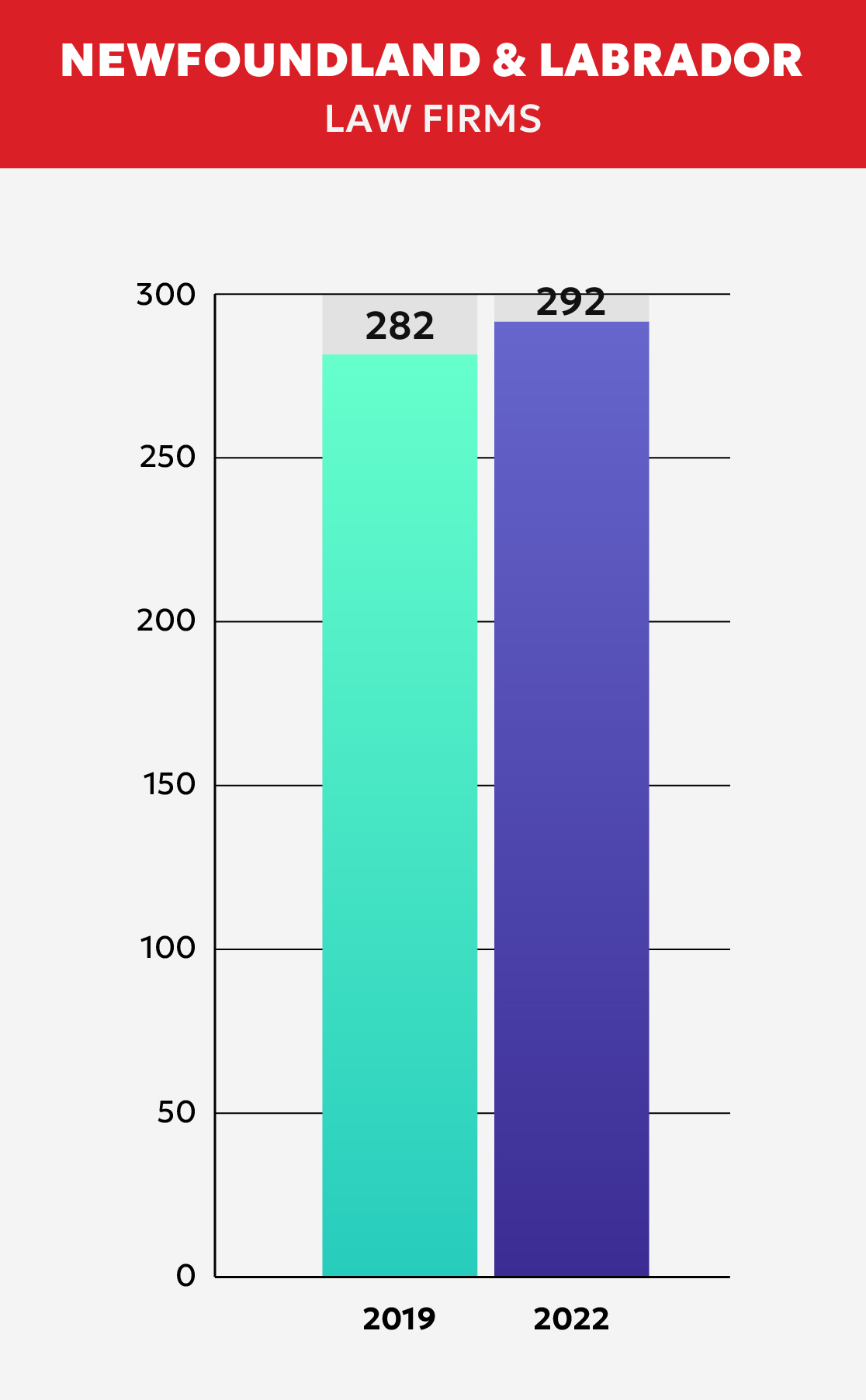 |
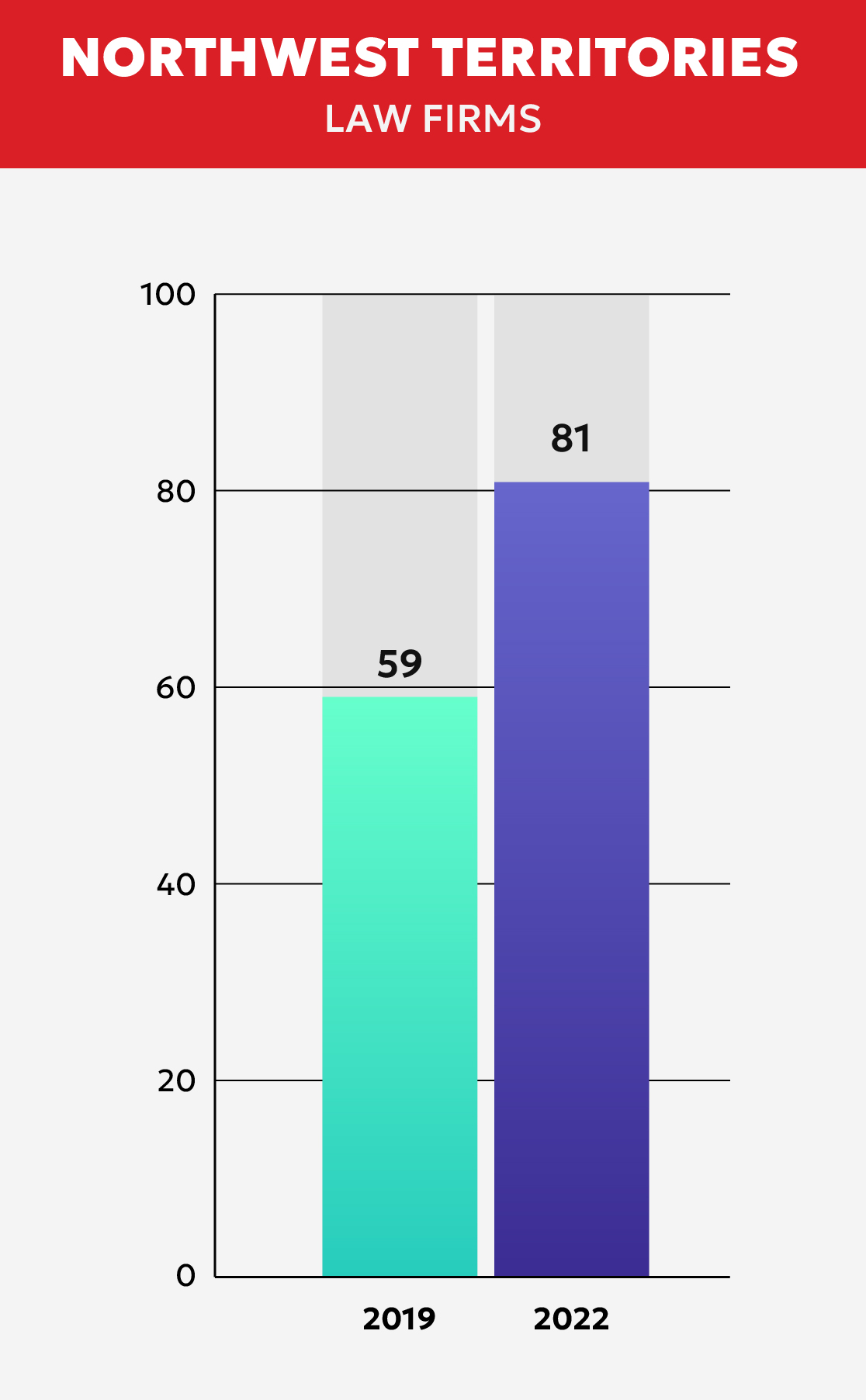 |
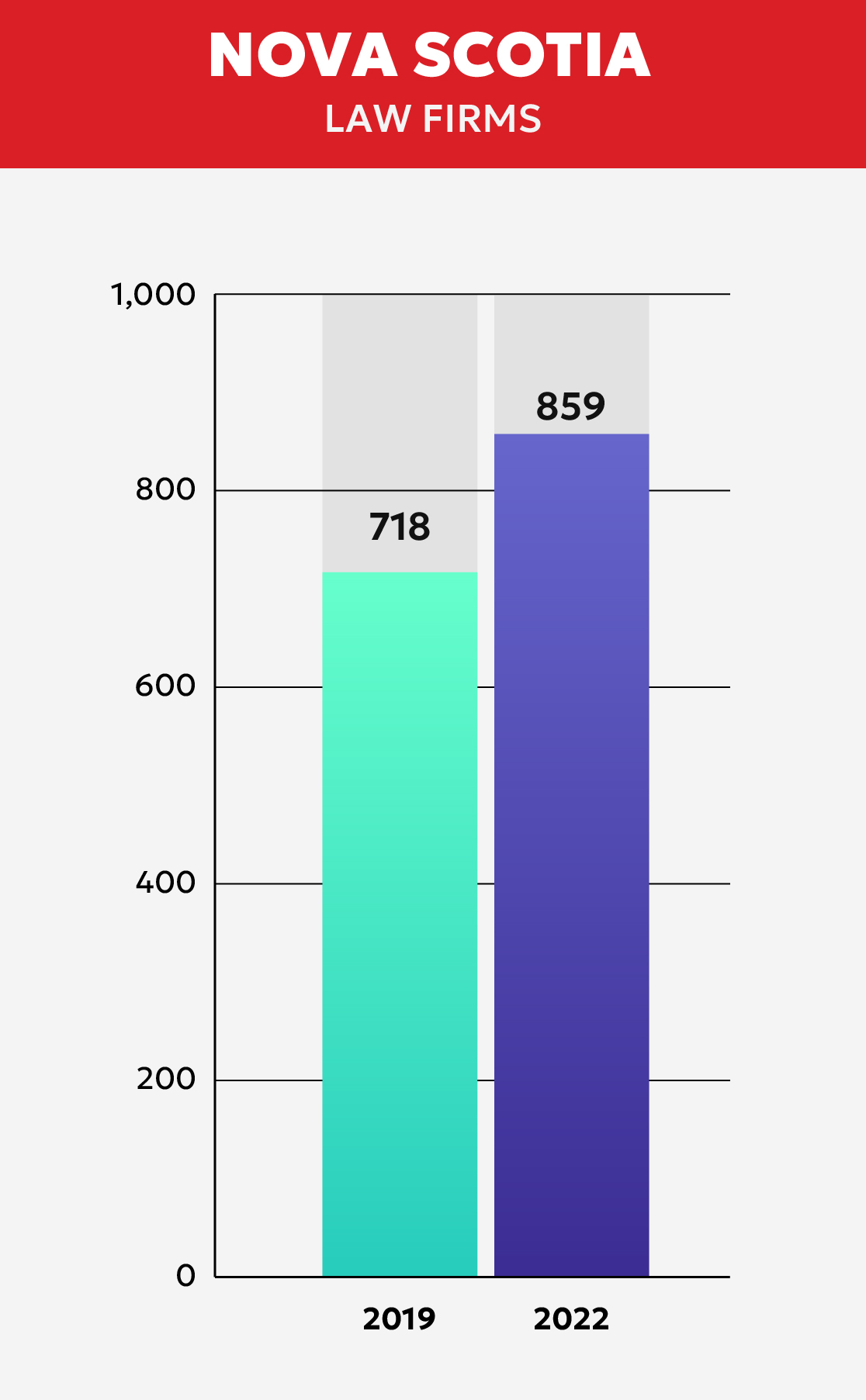 |
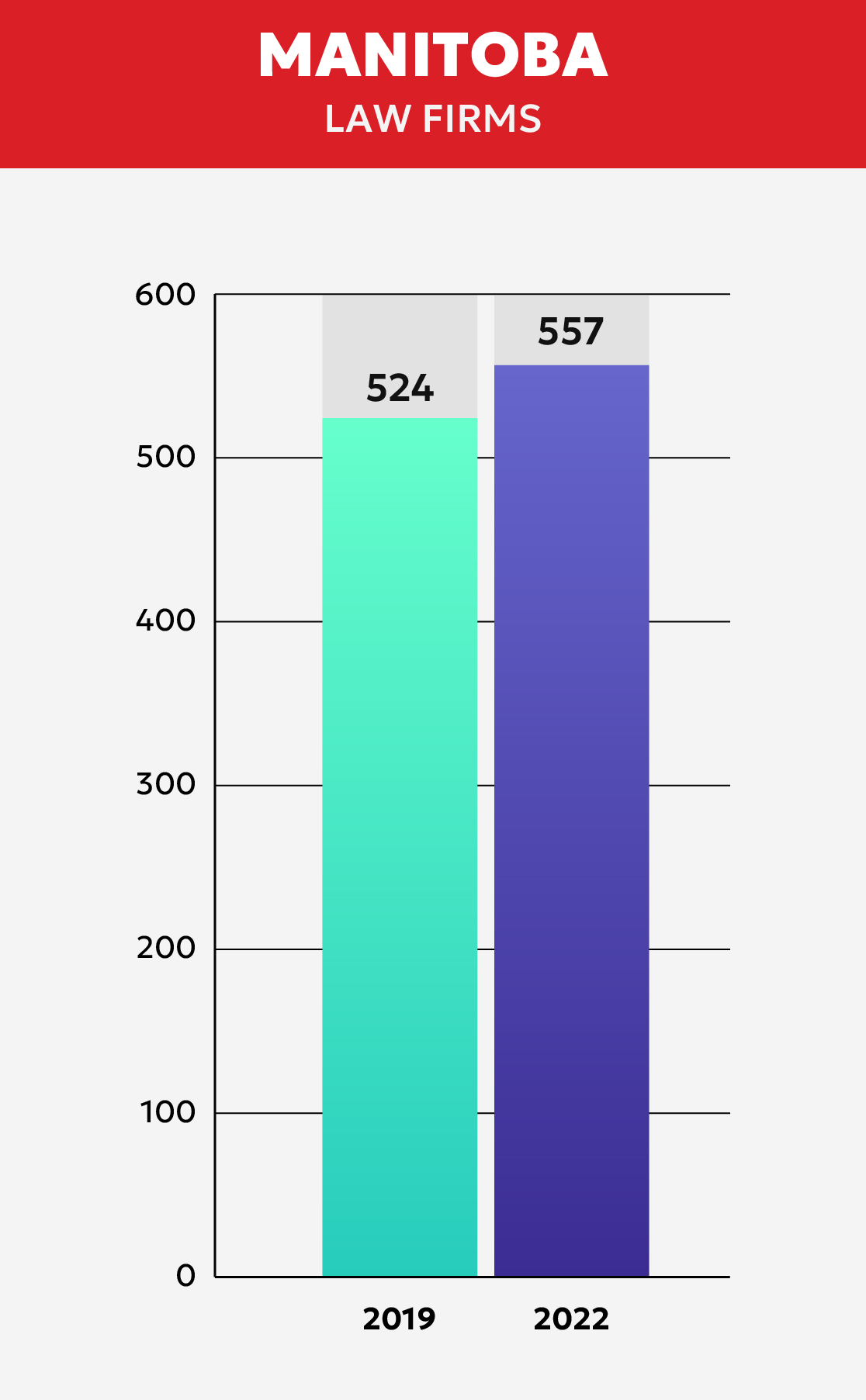 |
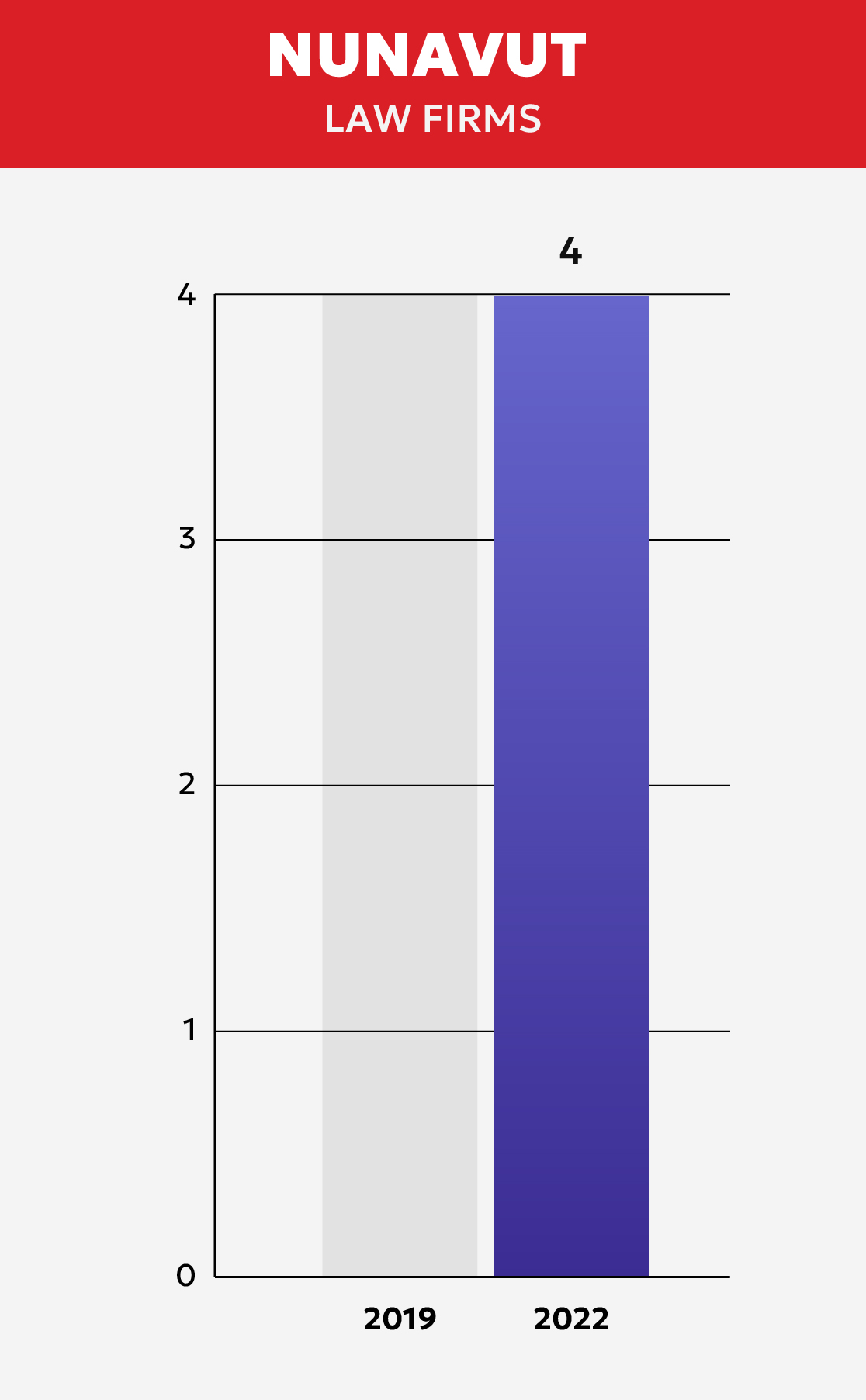 |
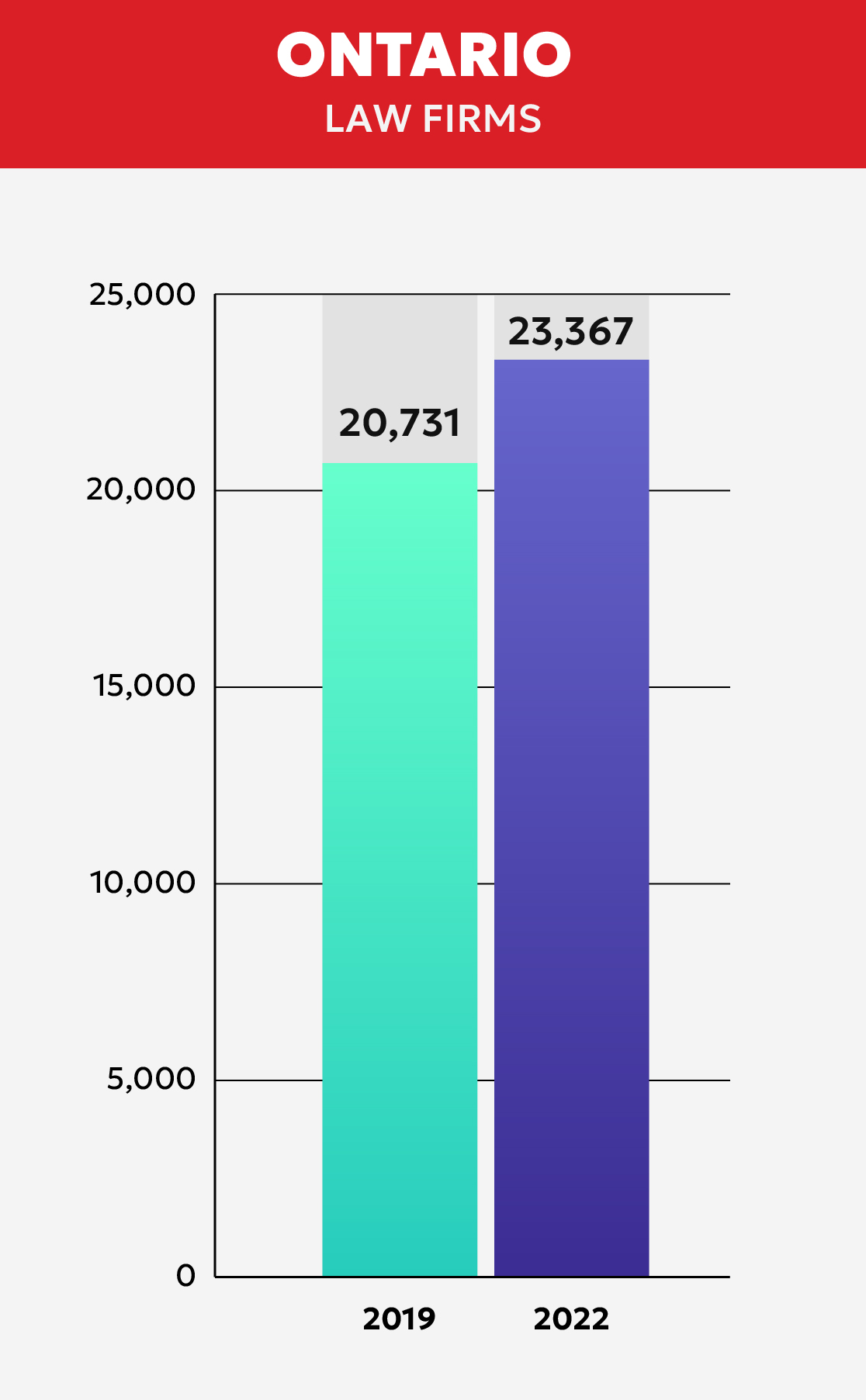 |
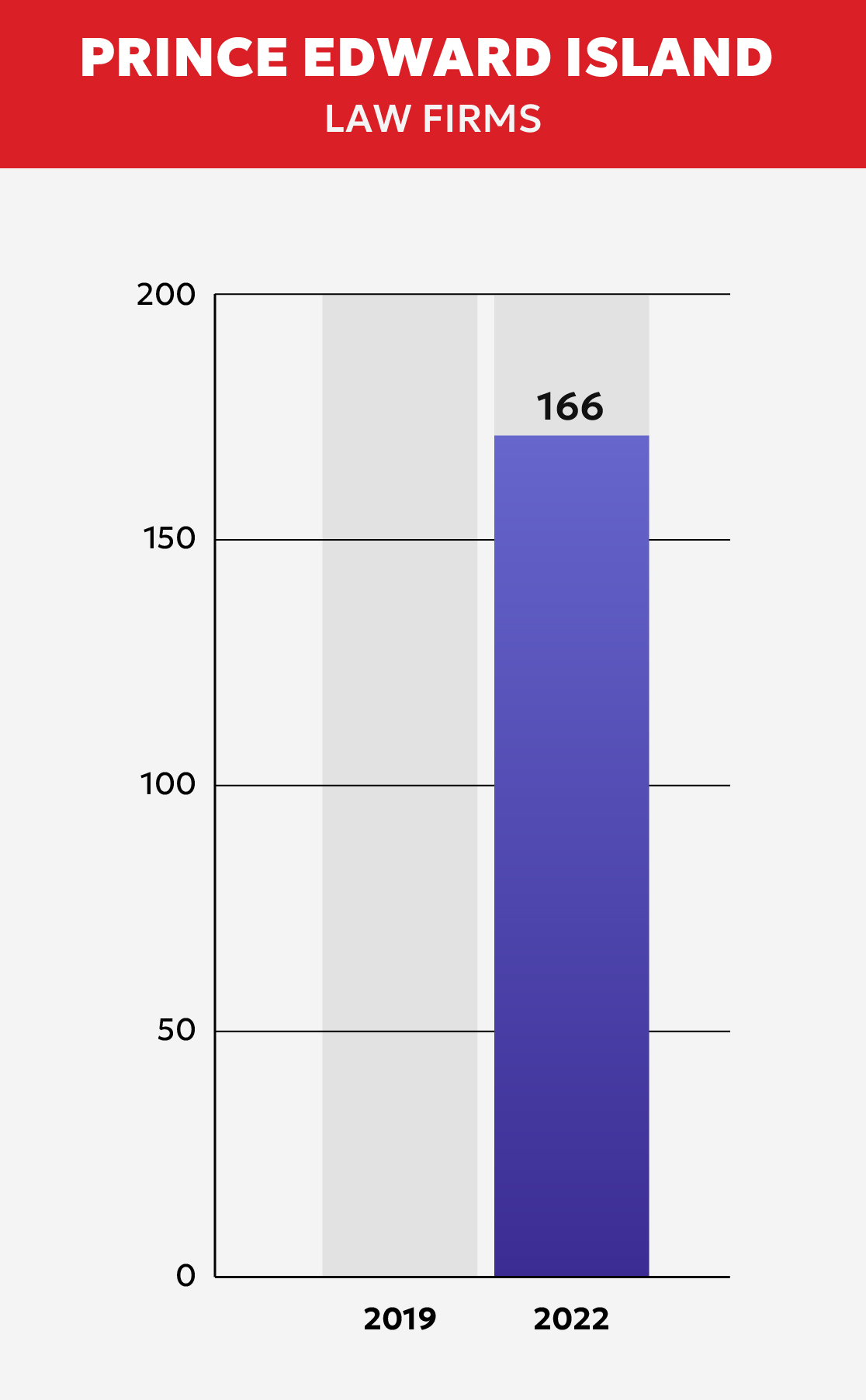 |
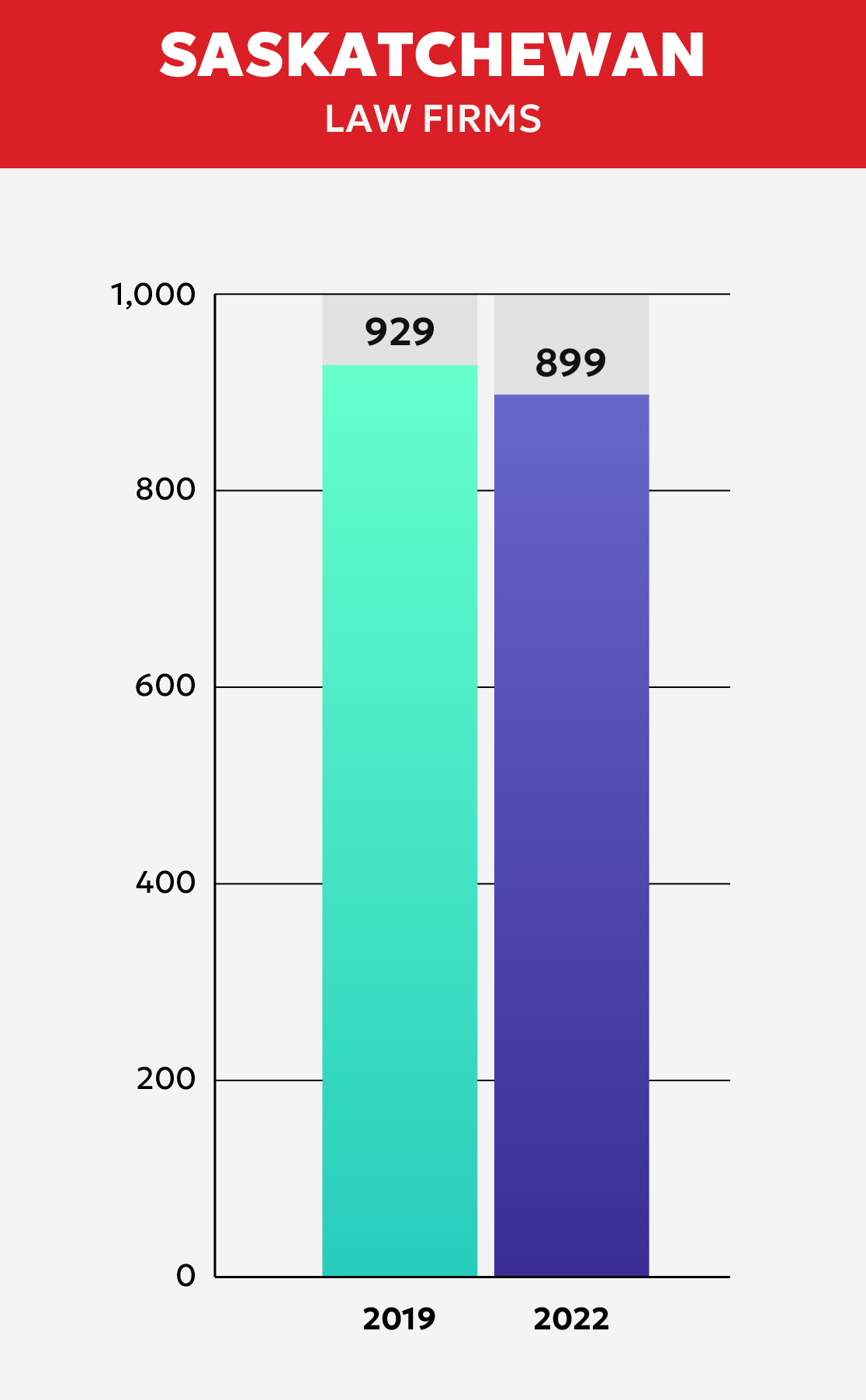 |
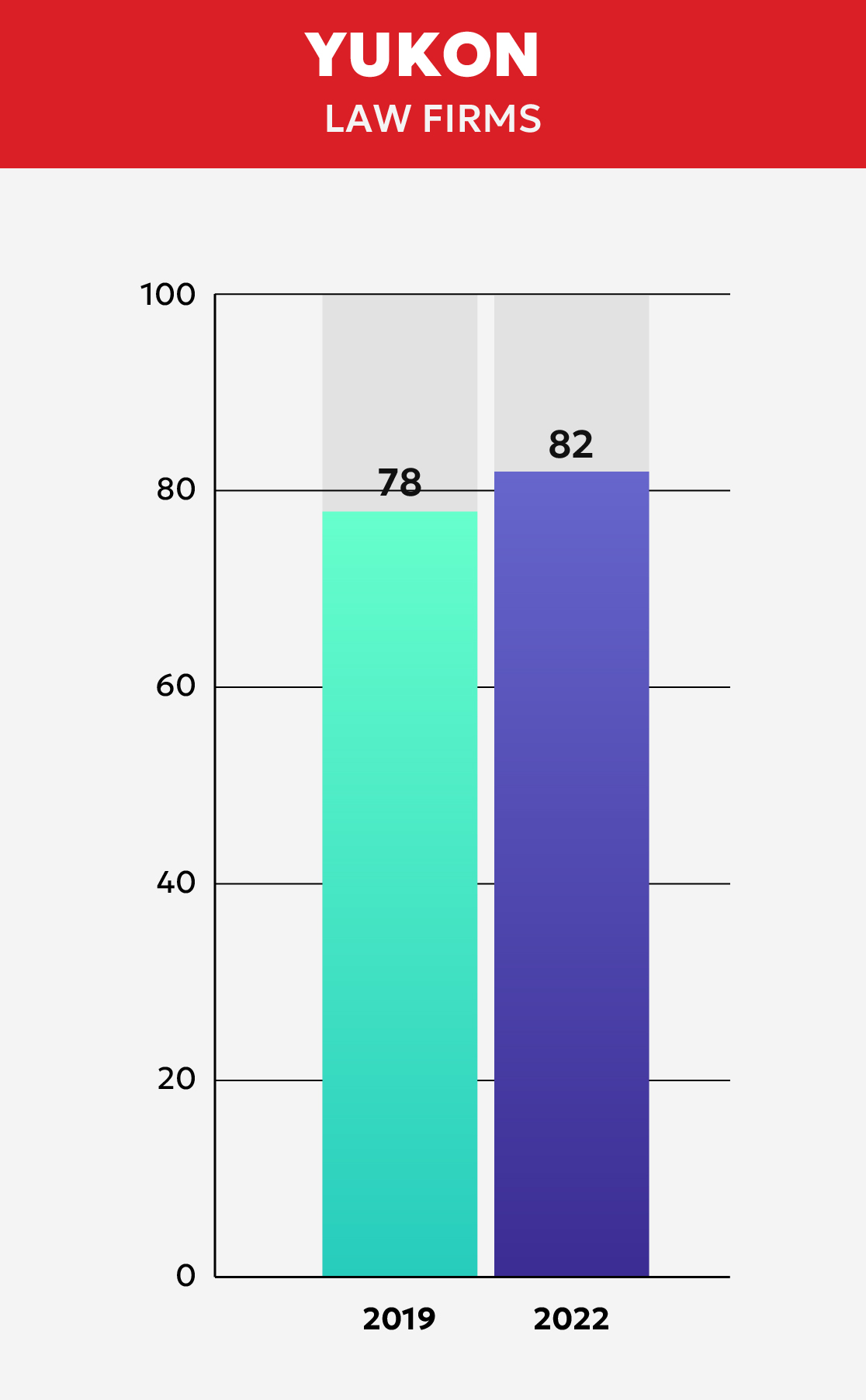 |
Unsurprisingly, total active/practising law society membership numbers reflected increases and decreases in the number of registered law firms, but this time with Yukon seeing the highest percent increase of 23.3 percent. Saskatchewan and Chambre des notaires du Québec both saw decreases of 13.2 percent and 1.2 percent, respectively (Prince Edward Island and Nunavut did not have sufficient data to be included in this comparison).
Overall, total active/practicing membership increased by 8.14 percent, from 105,853 in 2019 to 114,472 in 2022.
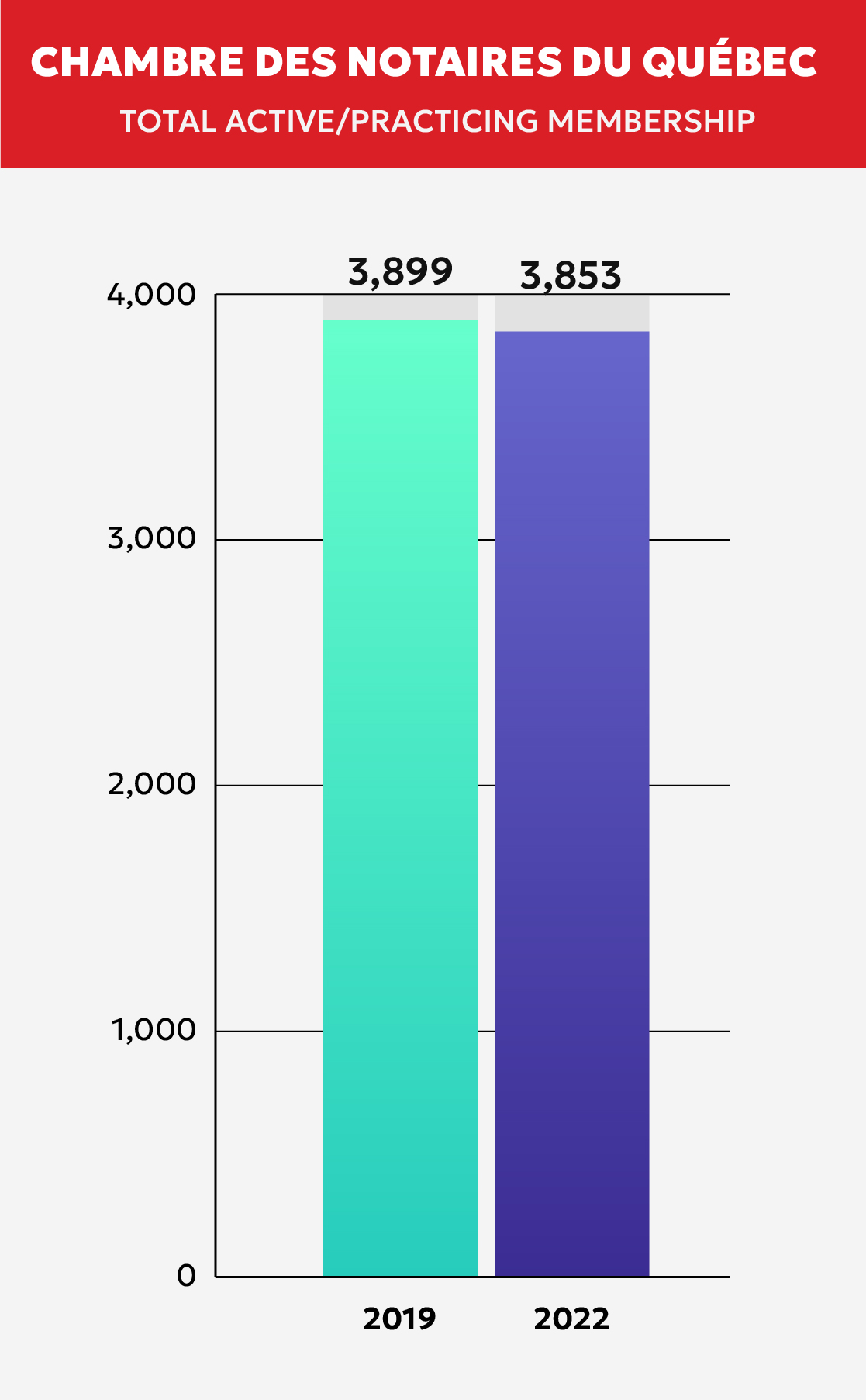 |
 |
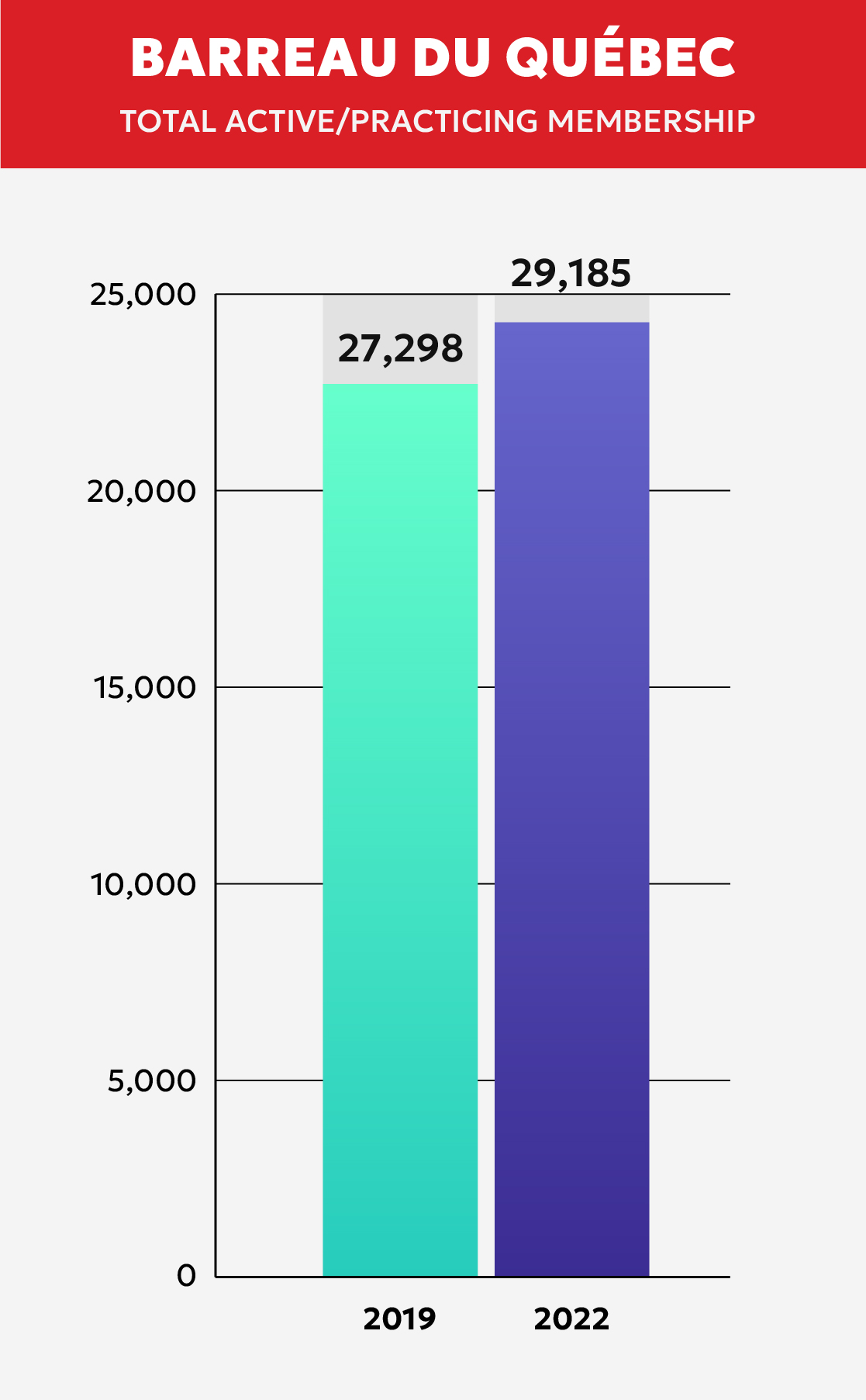 |
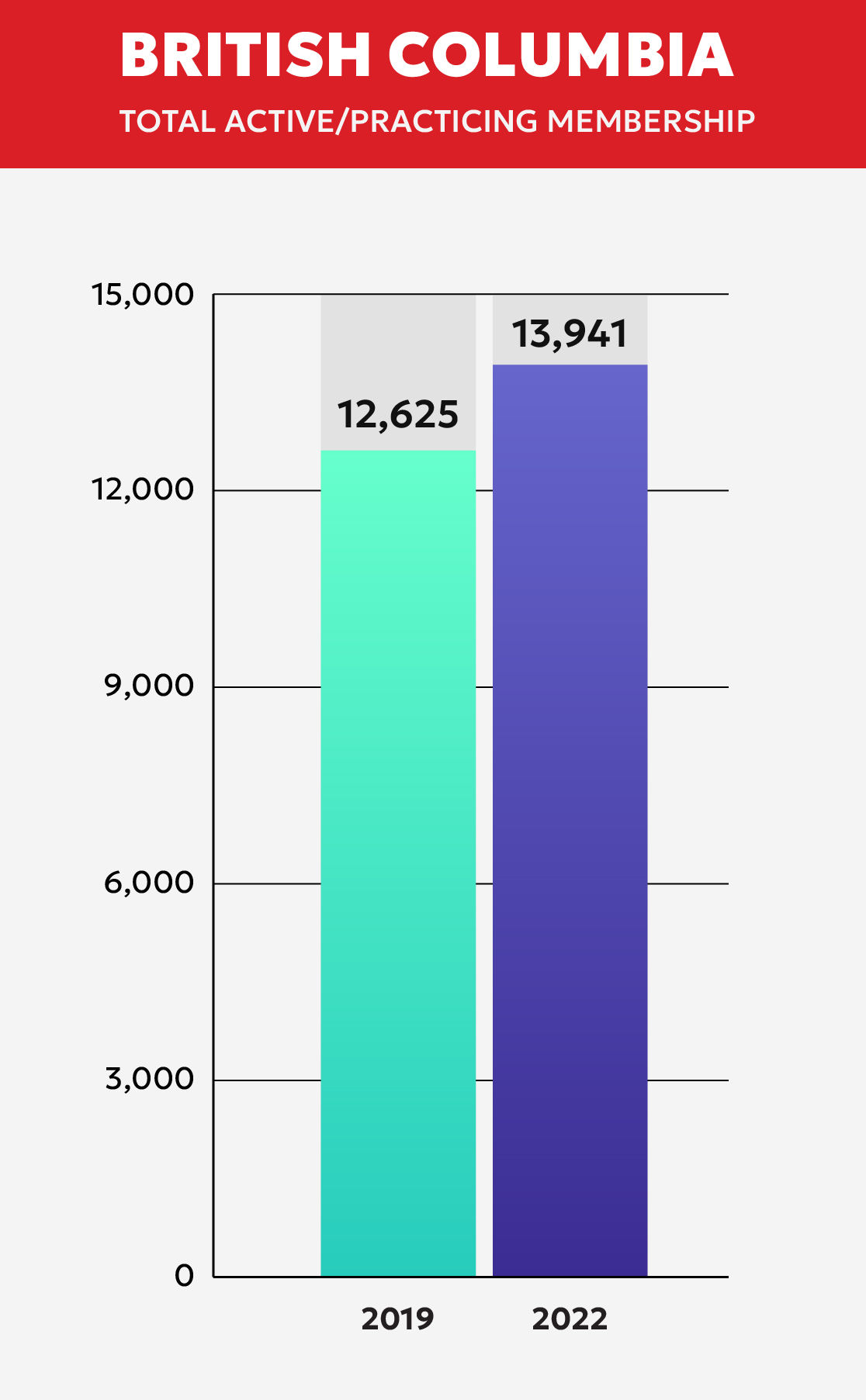 |
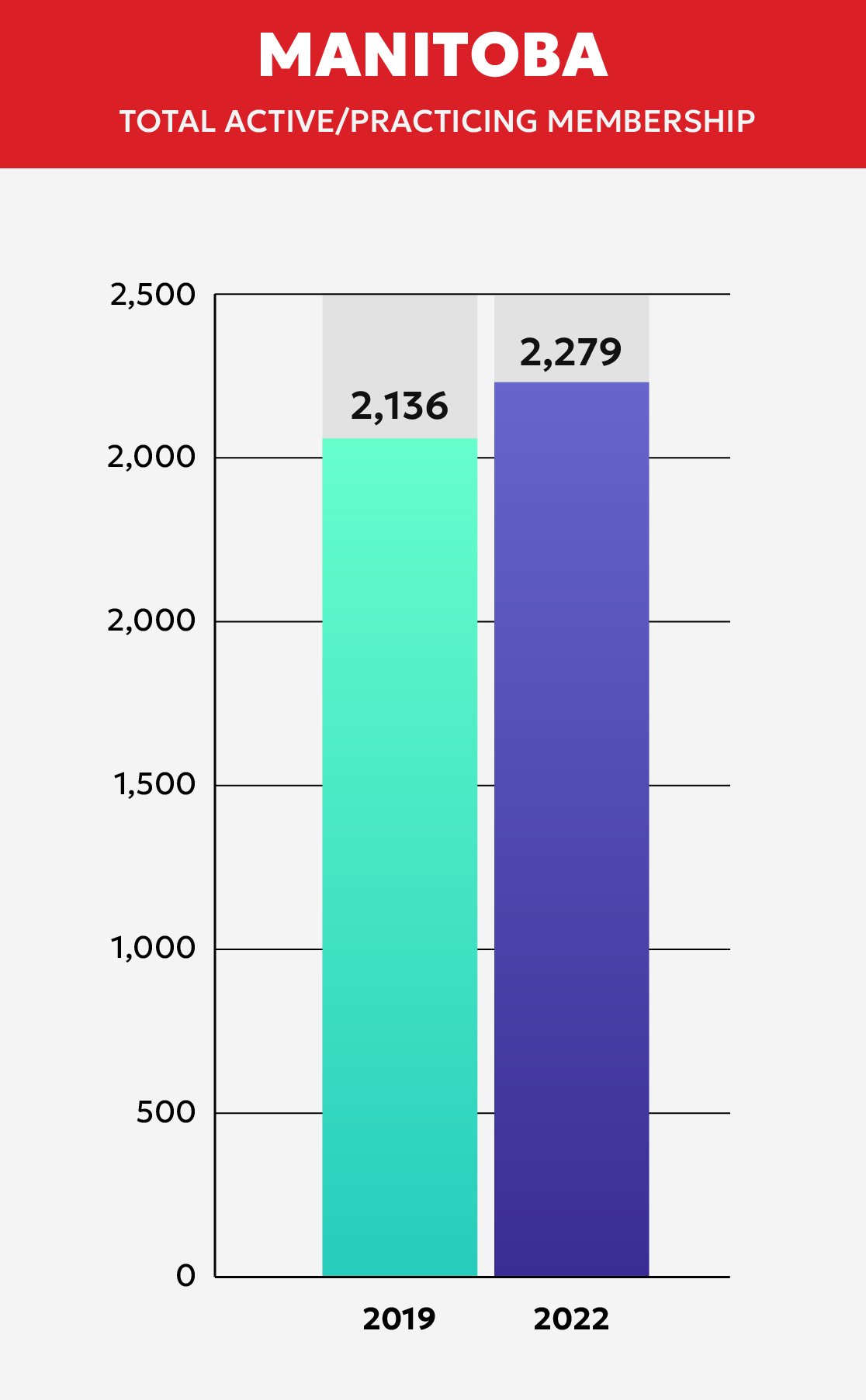 |
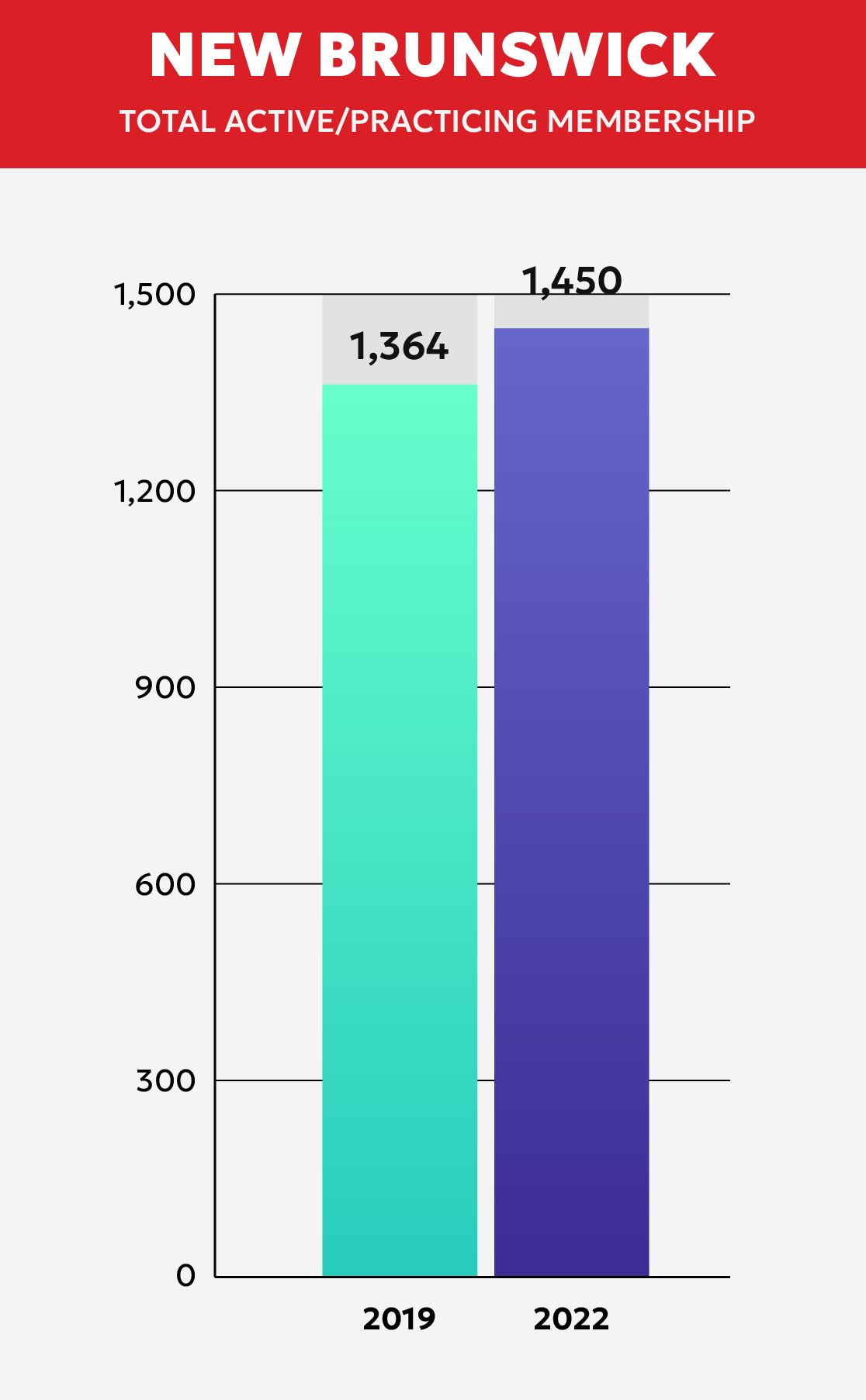 |
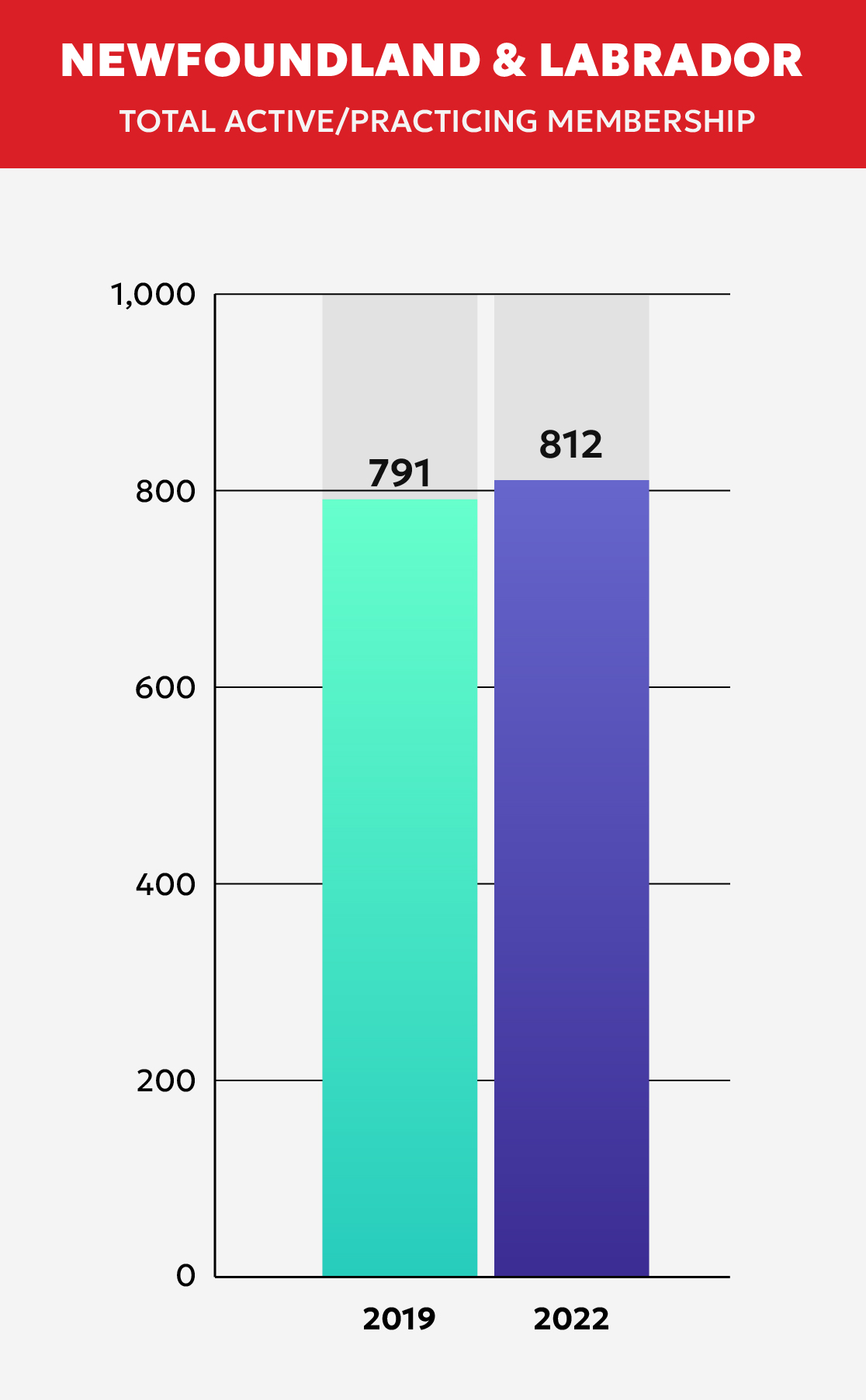 |
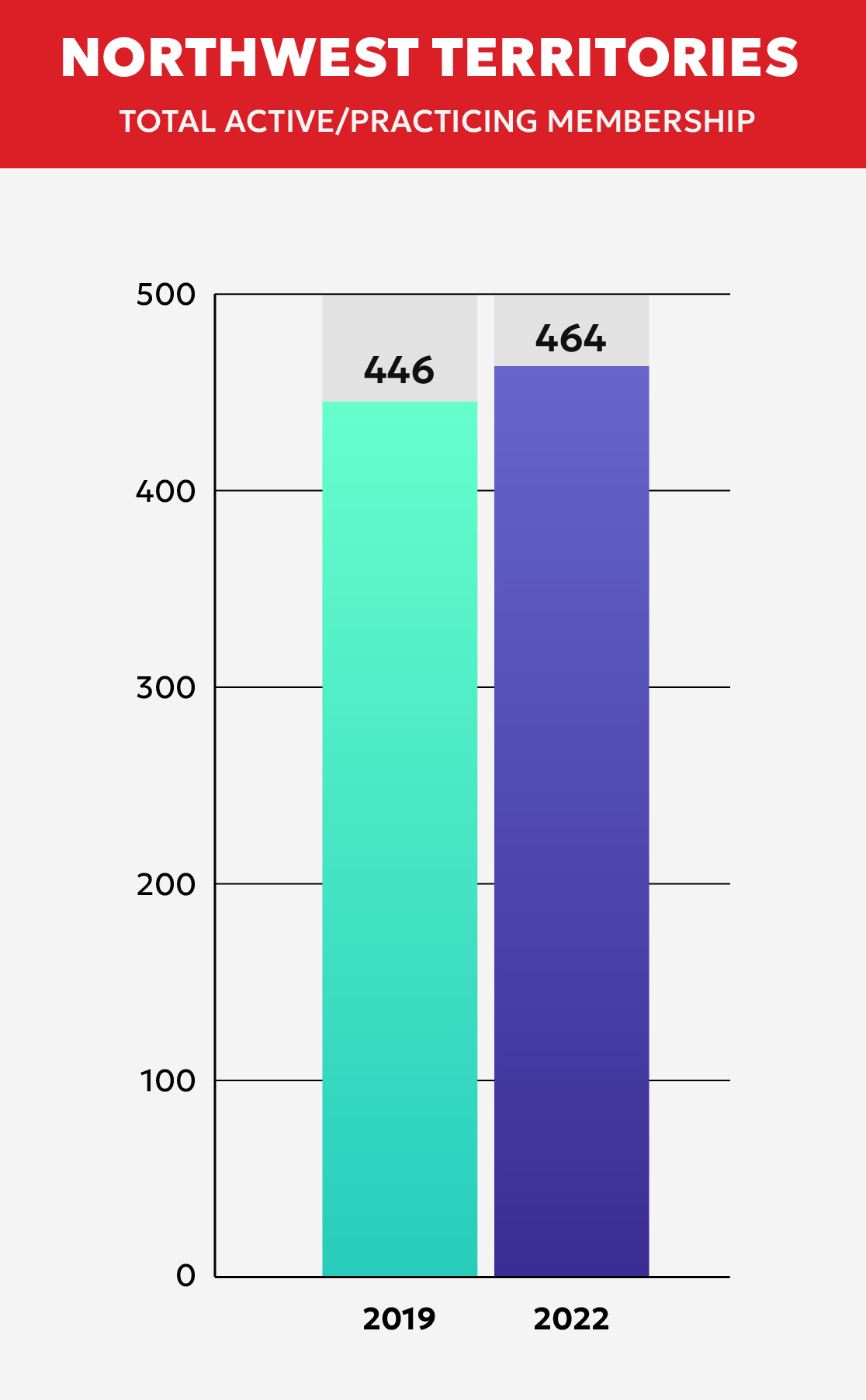 |
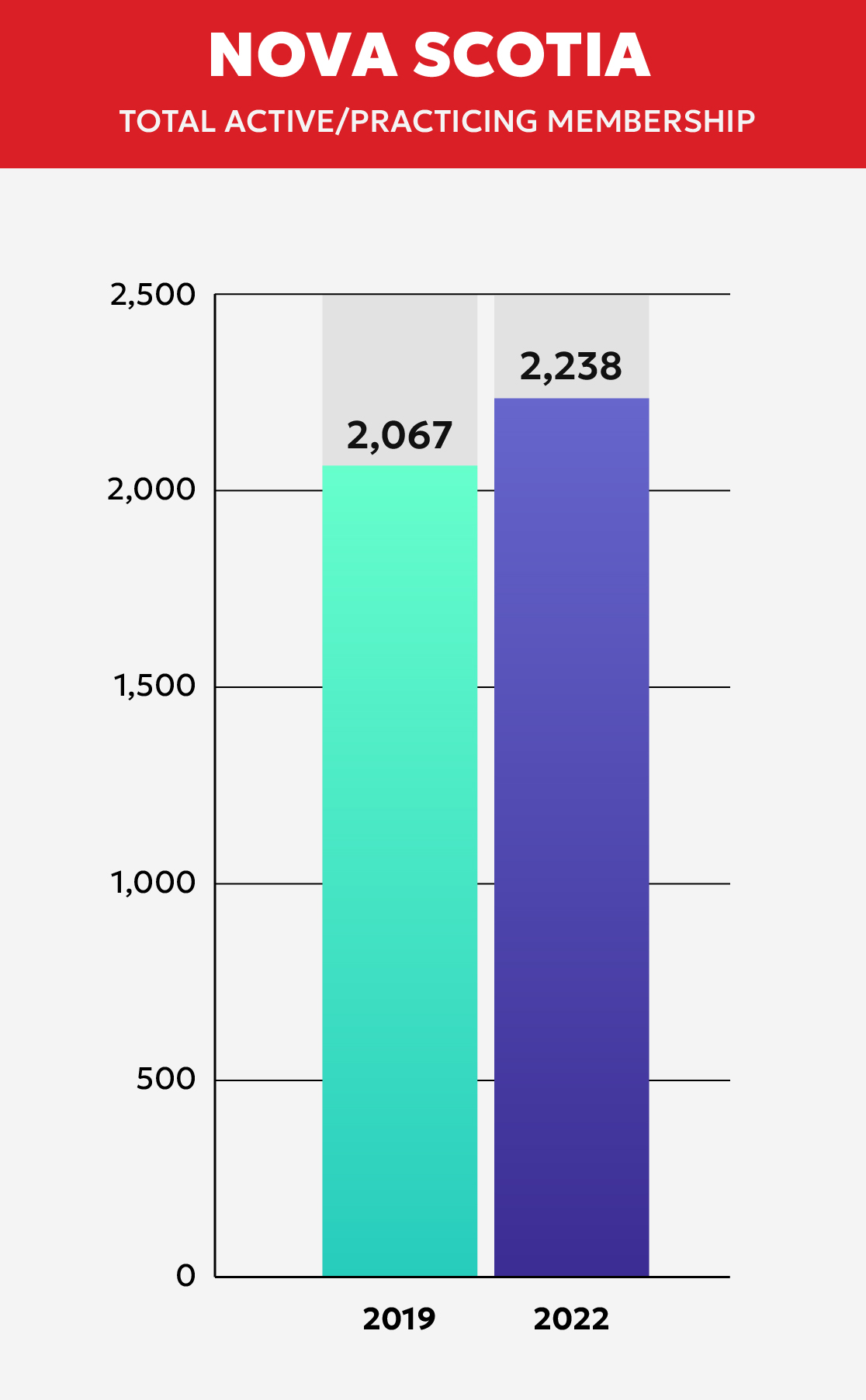 |
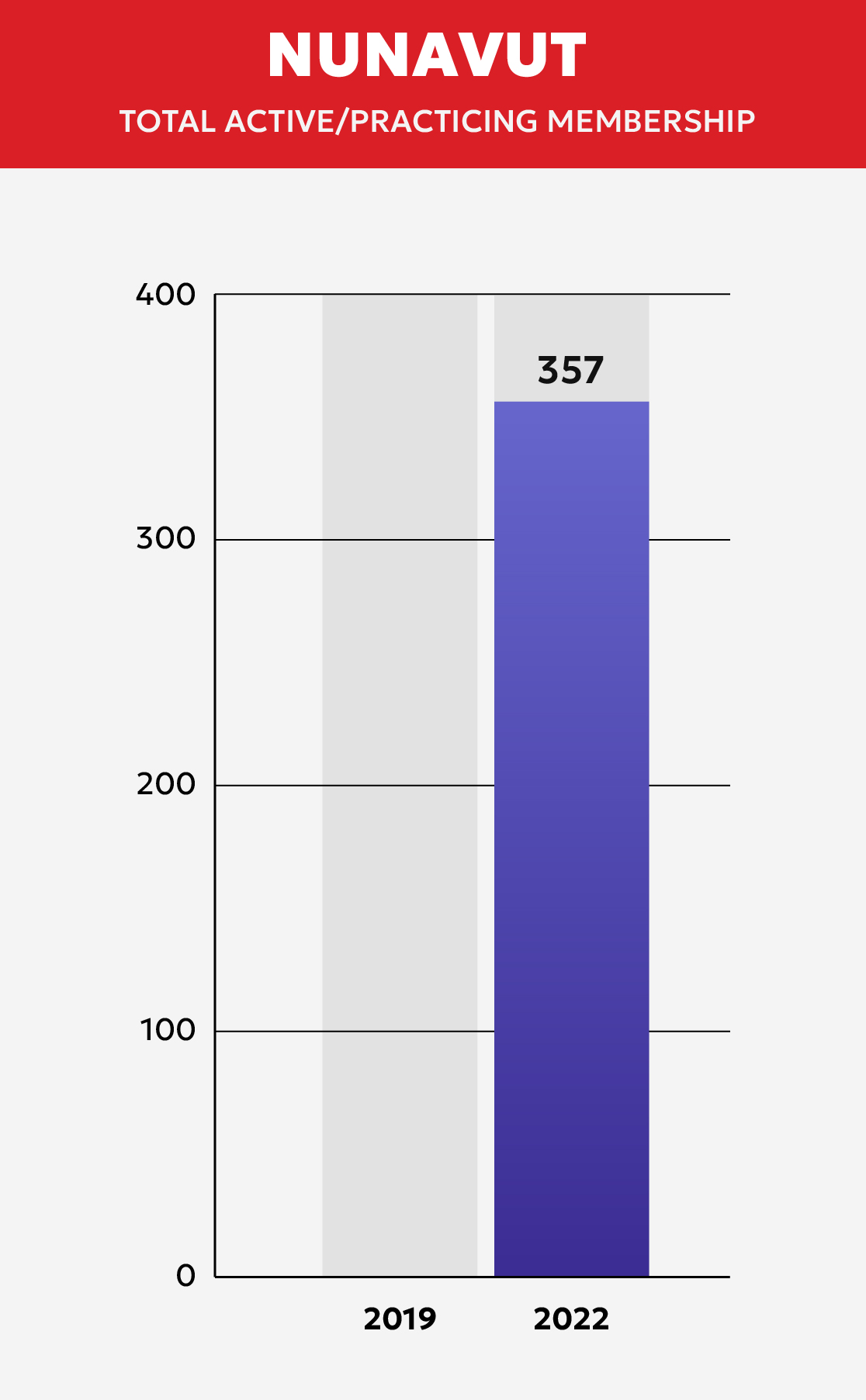 |
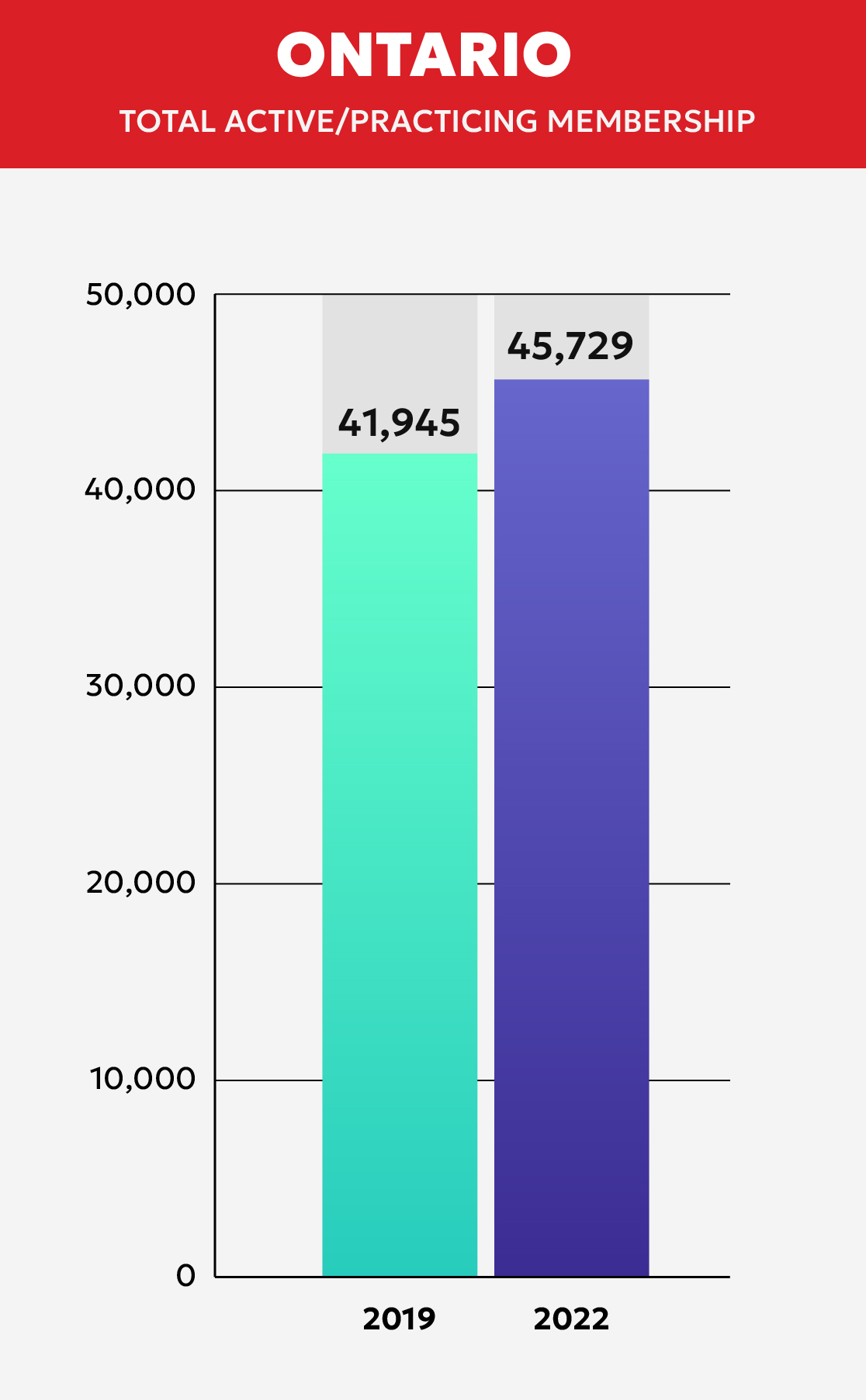 |
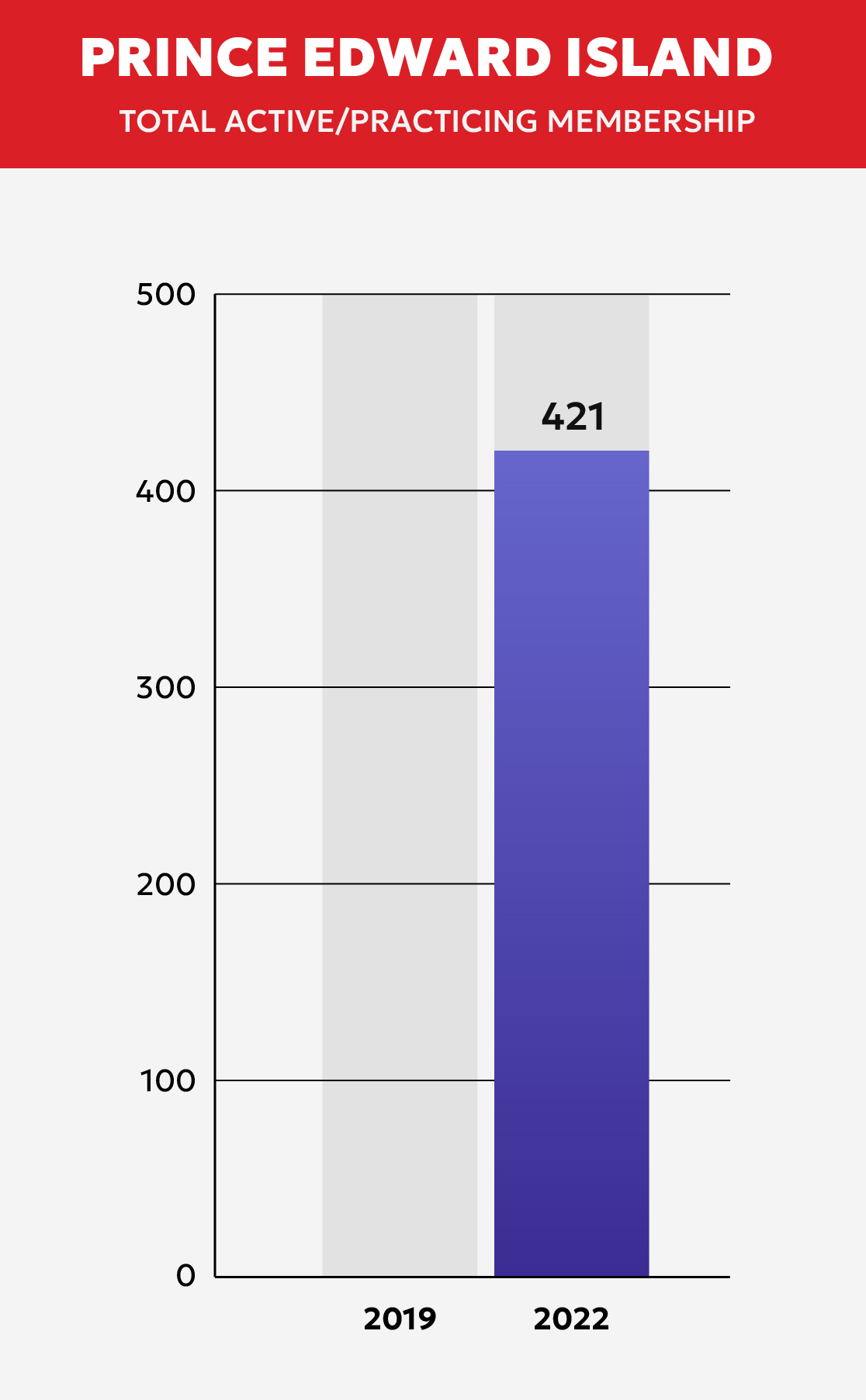 |
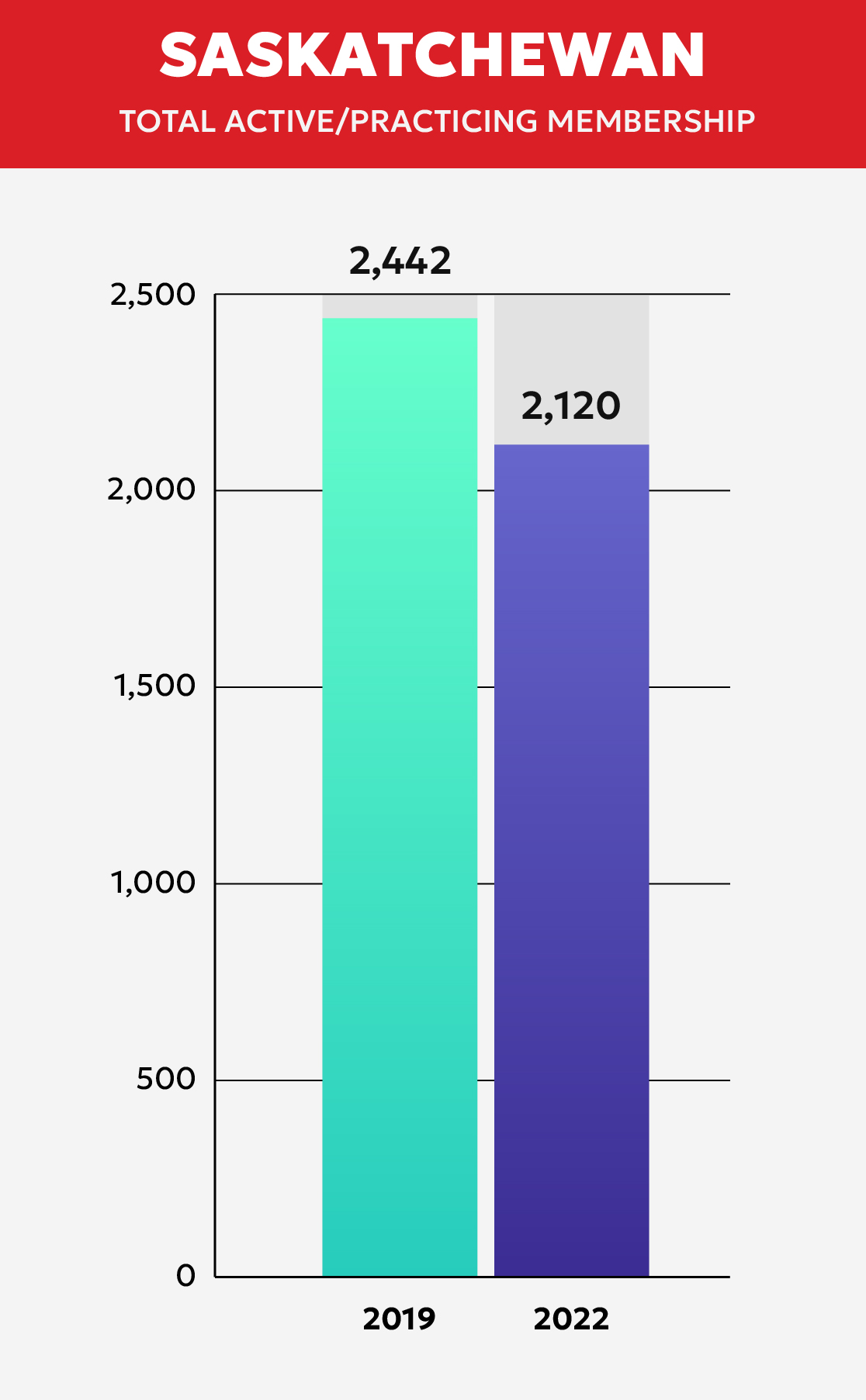 |
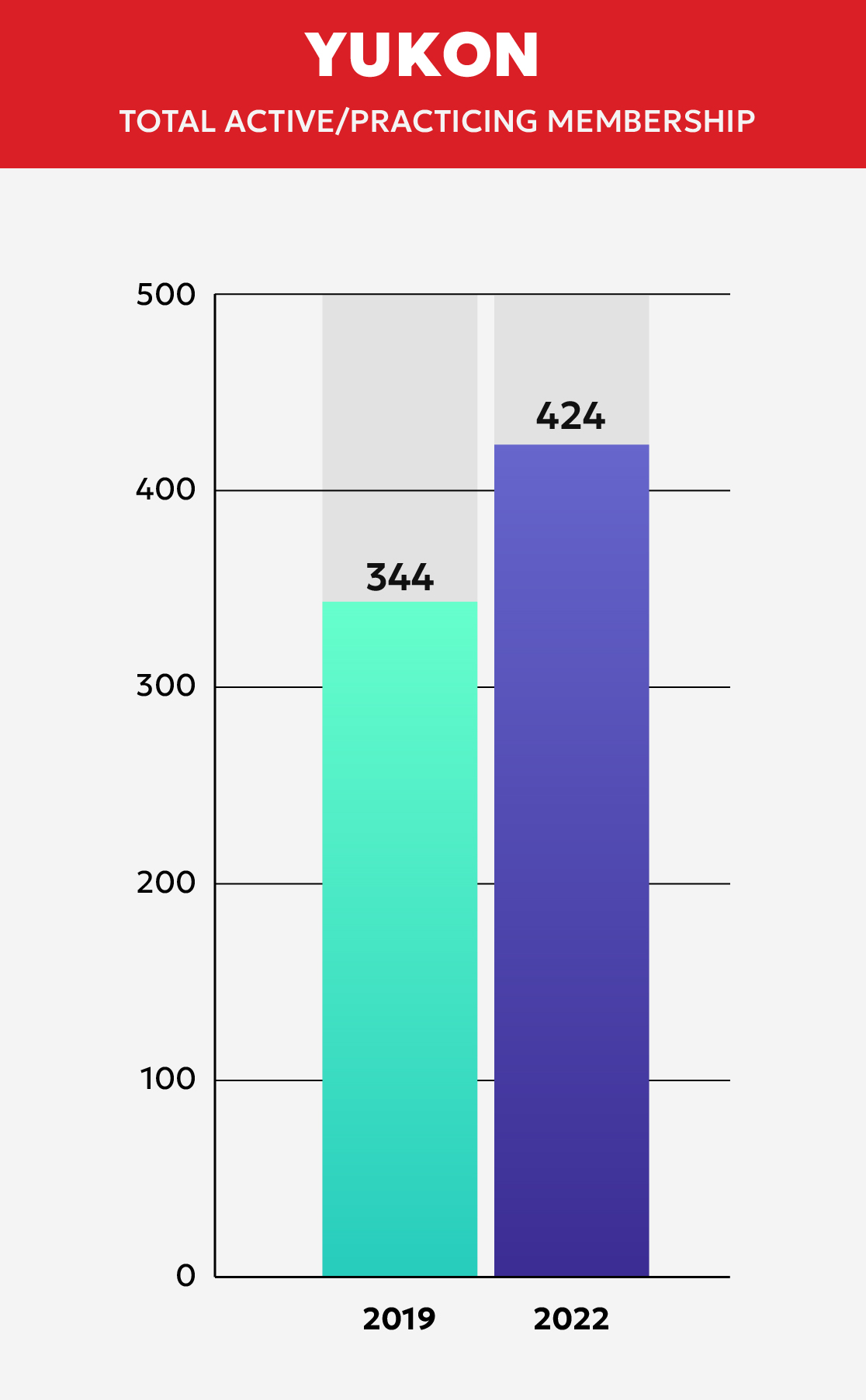 |
Despite the general increase in both the number of law firms and lawyers over the past few years, all positions are not equally easy to fill. According to Warren Bongard, president and co-founder of ZSA Legal Recruitment, three- to six-year in-house counsel positions are the easiest to fill, while technology lawyers are currently the most difficult to place.
“If you’re a corporate commercial lawyer with three to six years of experience, the truth is that there’s plenty of opportunities for you, so they have a bit more of a leverage over the market in terms of which jobs they agree to take. Whereas, in terms of tech lawyers, they’re much fewer and farther between,” he said.
The market also has a disproportionate ratio of jobs to lawyers, with the number of lawyers outnumbering the number of jobs available and law schools “producing plenty” of young new lawyers, according to Bongard. As a result, market pressures for early-career legal positions are currently in employers’ favour.
This coincides with the Government of Canada’s analysis, which states that over the period 2022-2031, new job openings for judges, lawyers, and Quebec notaries are expected to total 39,200, while 49,500 new job seekers (arising from school leavers, immigration, and mobility) are expected to be available to fill them.
In 2022, Canada saw 17,271 students admitted to the Federation of Law Societies of Canada, including articling students, students admitted to the bar admission course, students admitted to the bar admission course with an NCA certificate, and students called to the bar. This was an increase of 2.50 percent from 2019.
 |
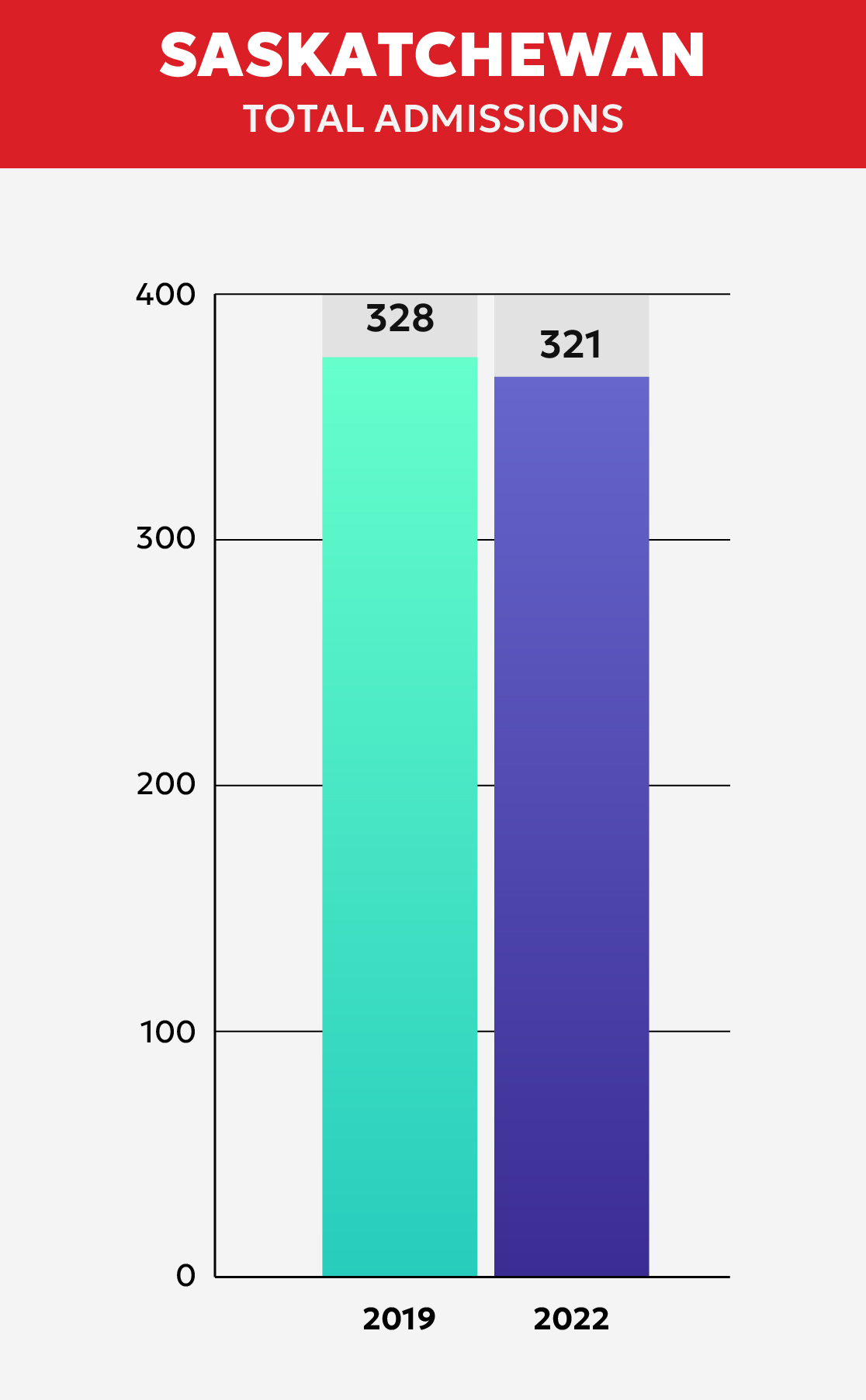 |
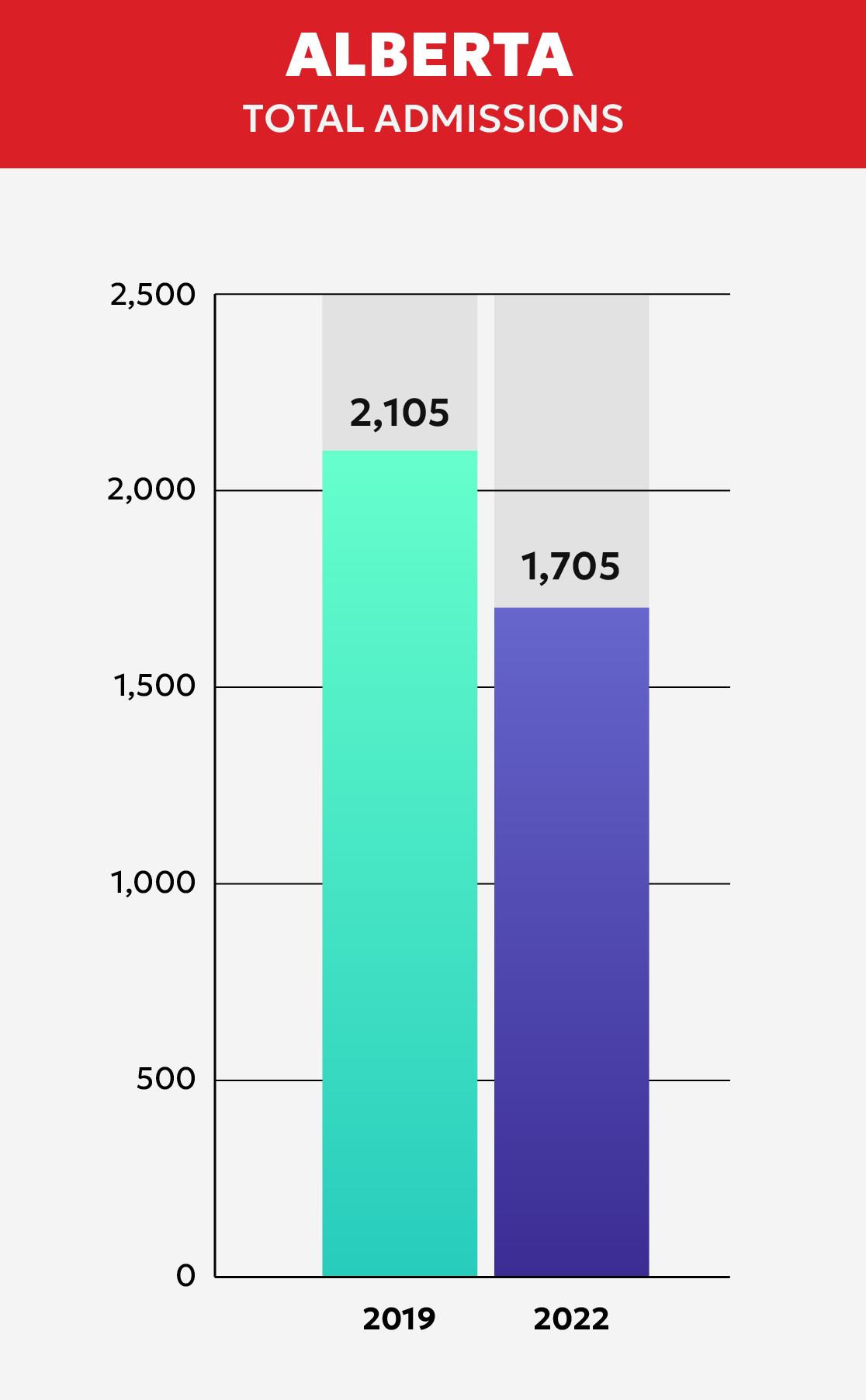 |
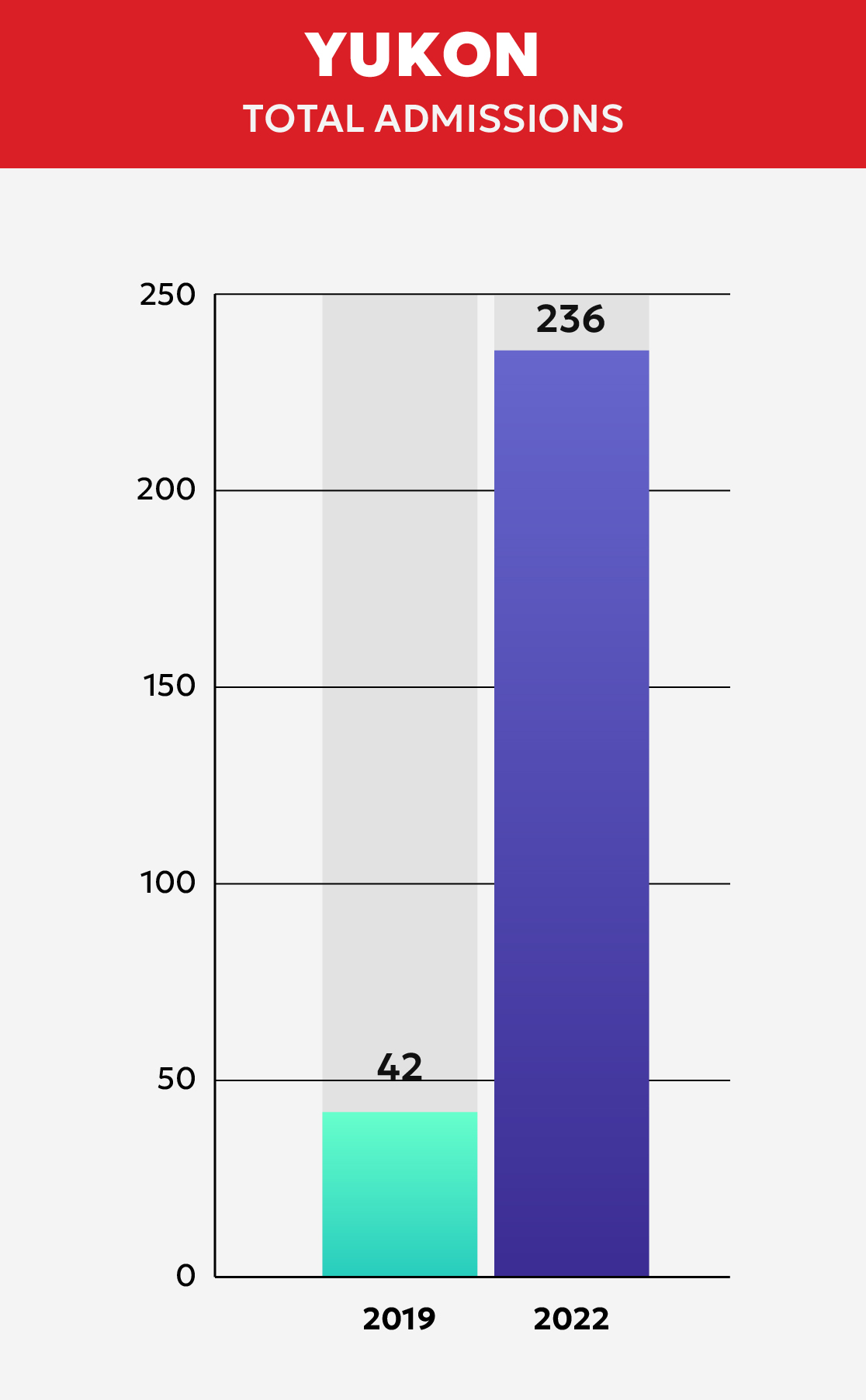 |
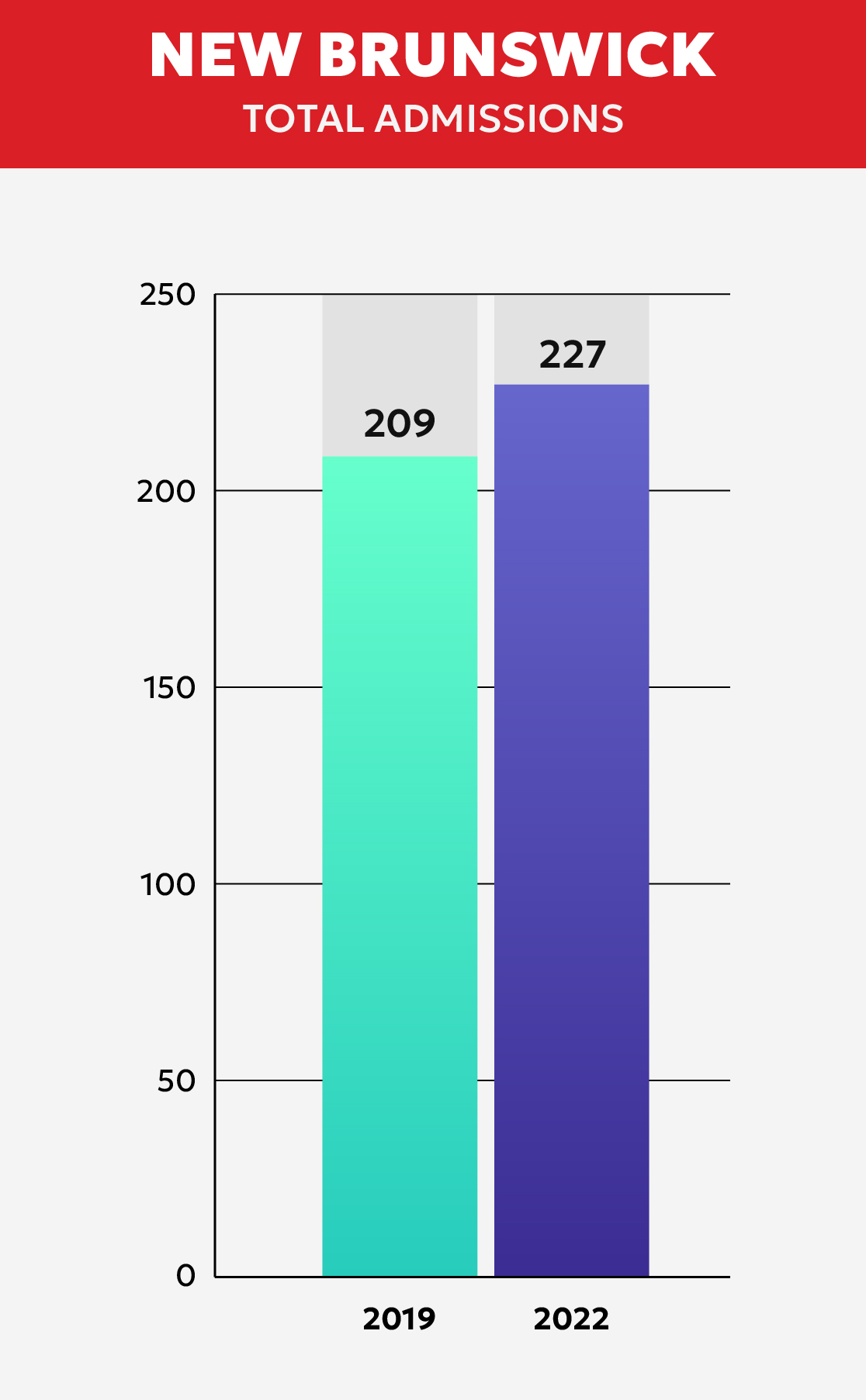 |
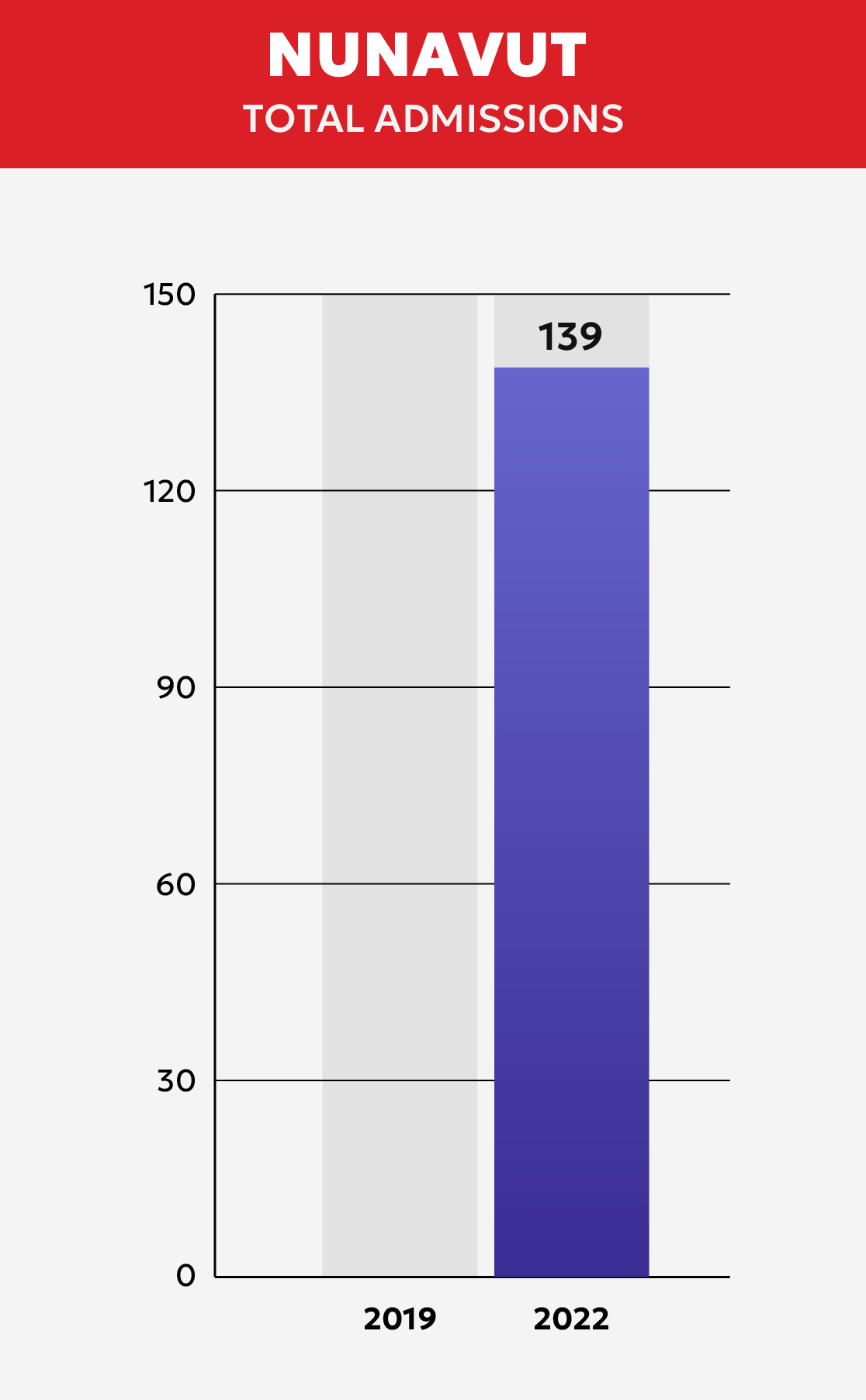 |
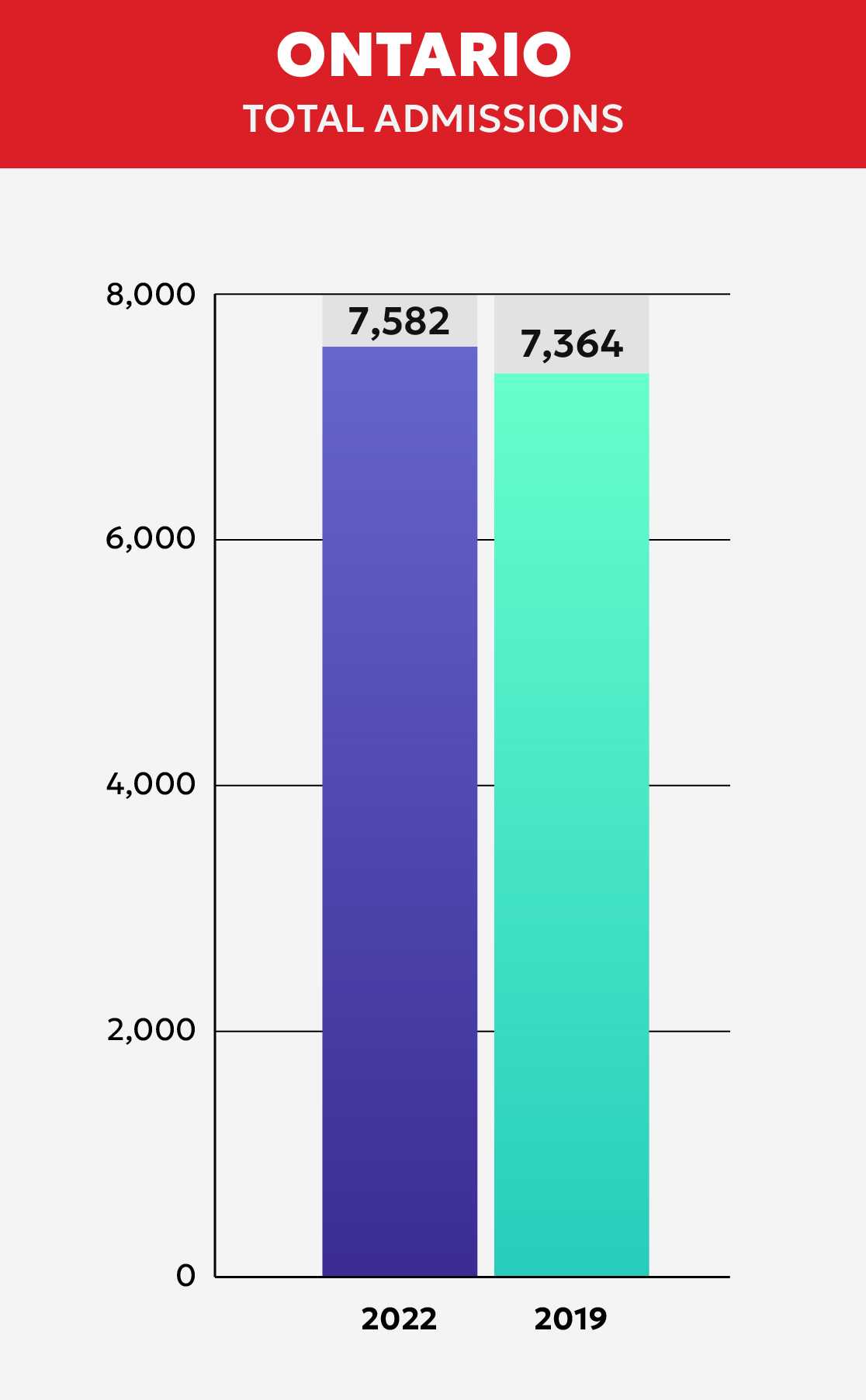 |
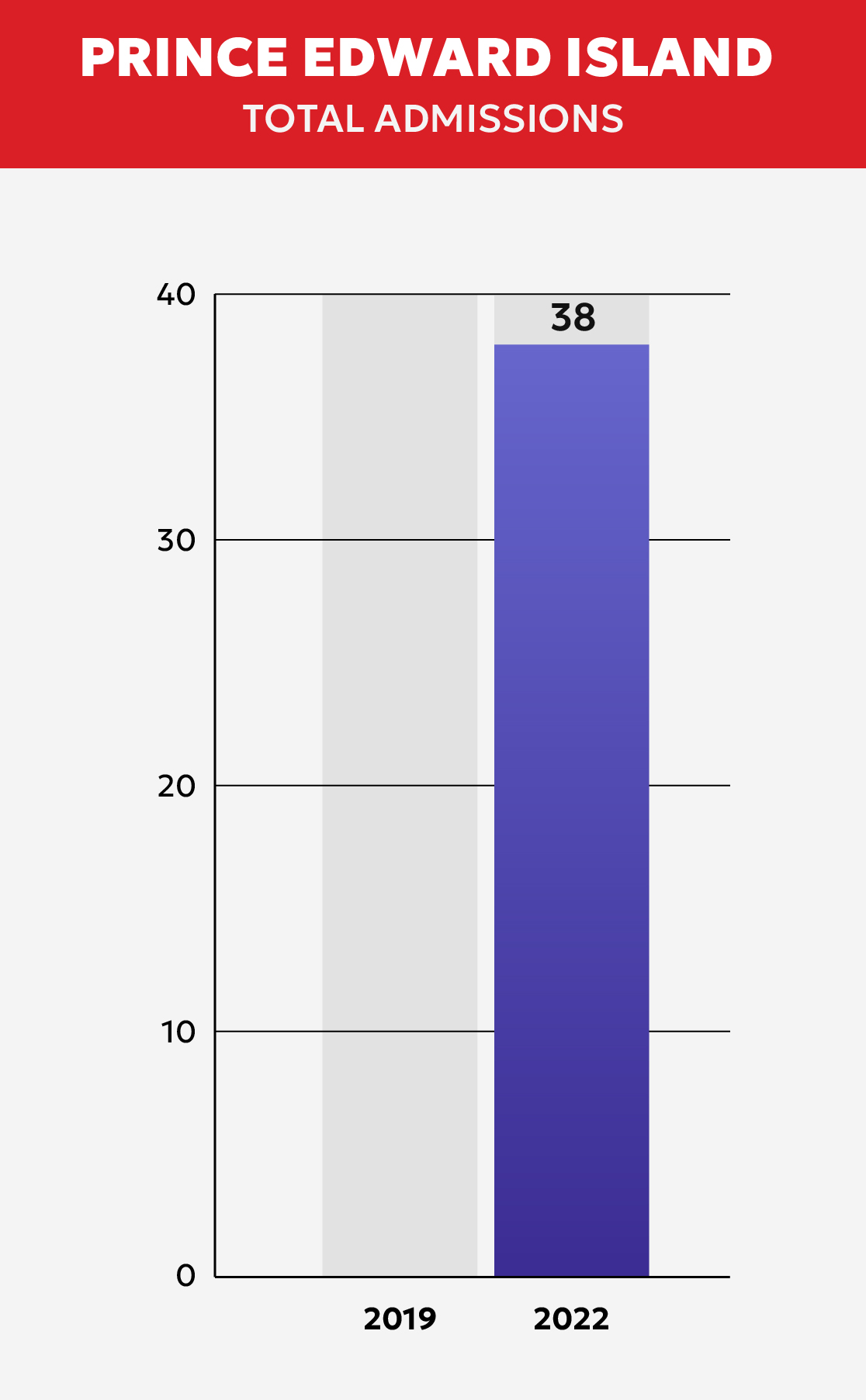 |
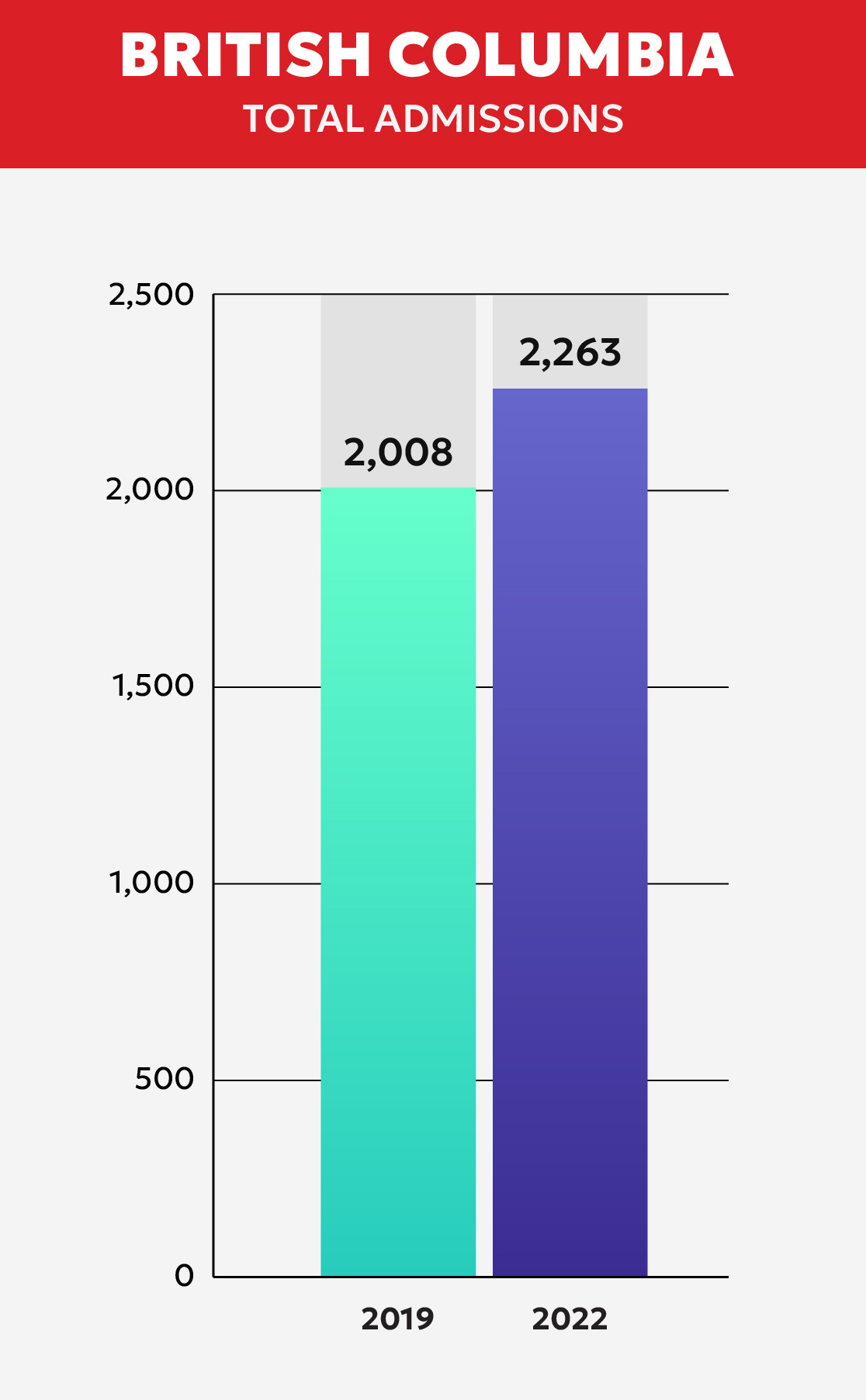 |
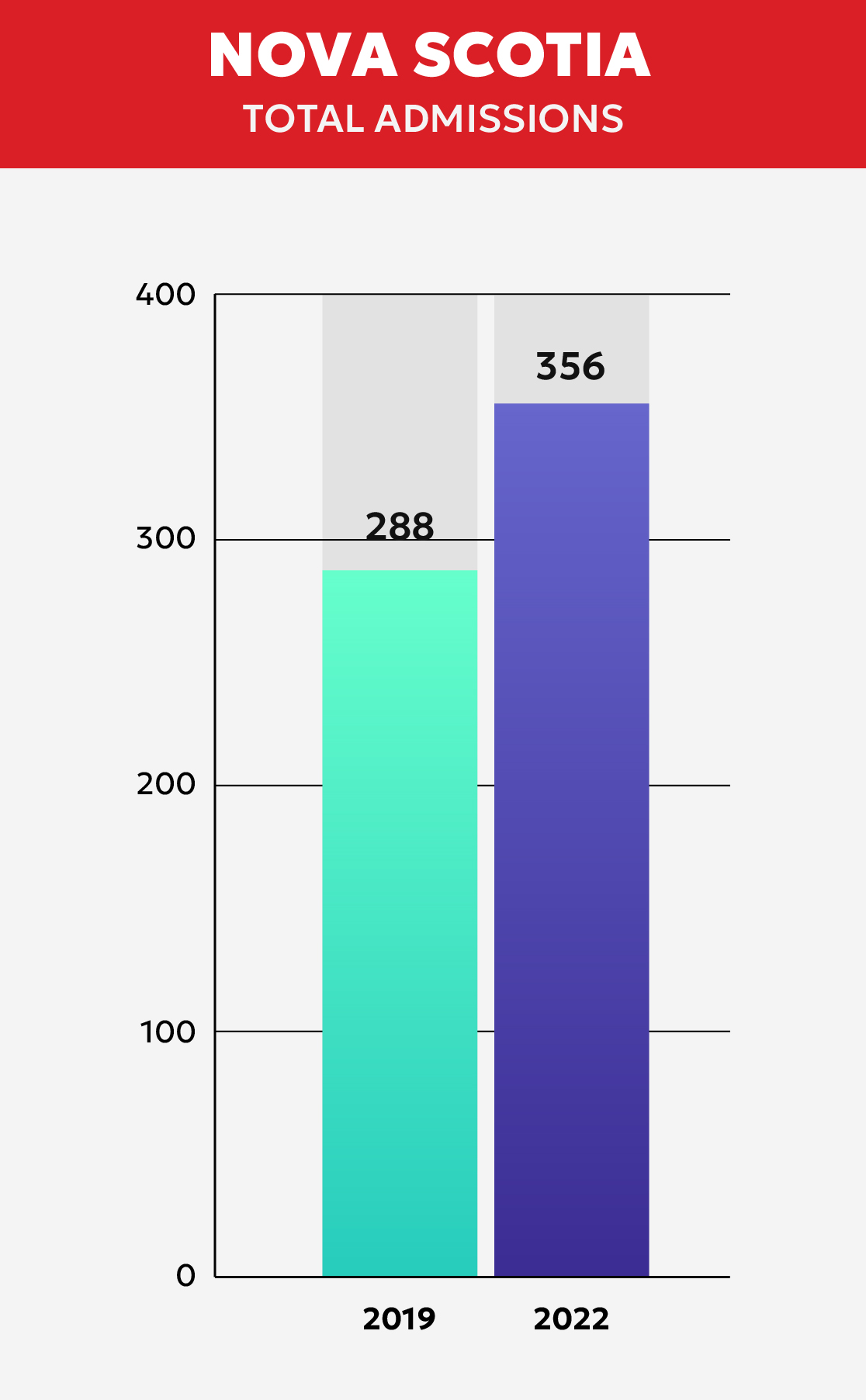 |
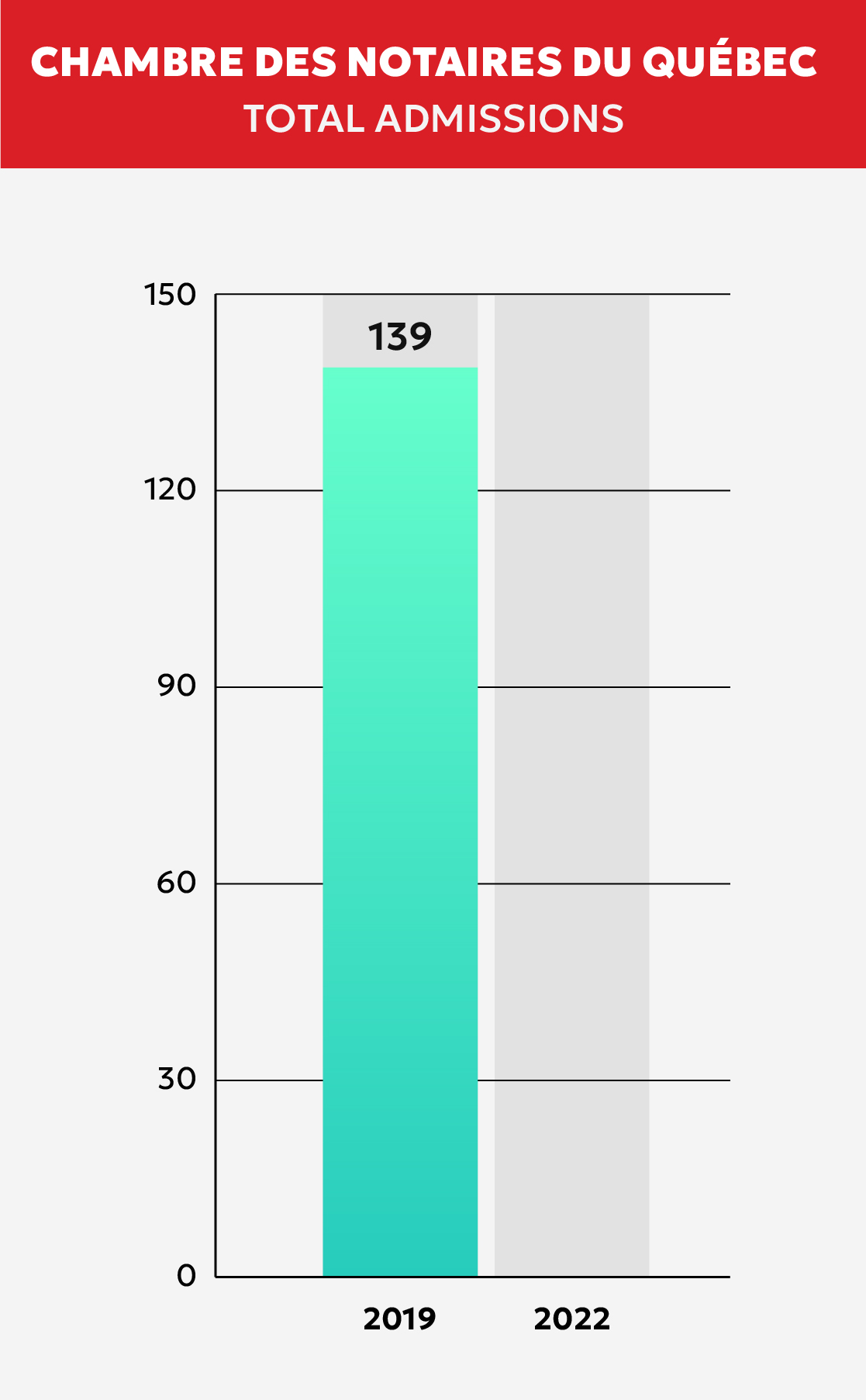 |
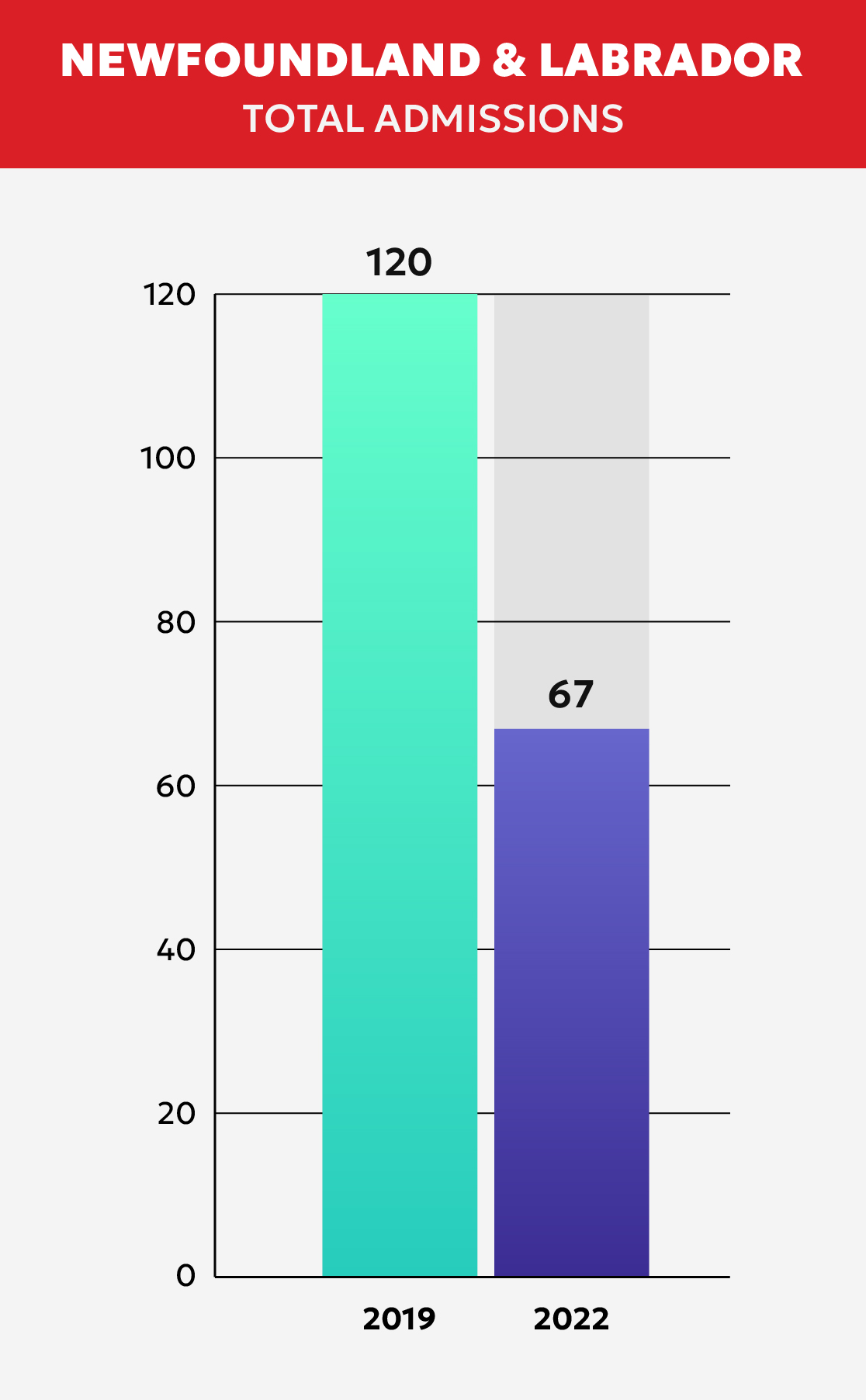 |
 |
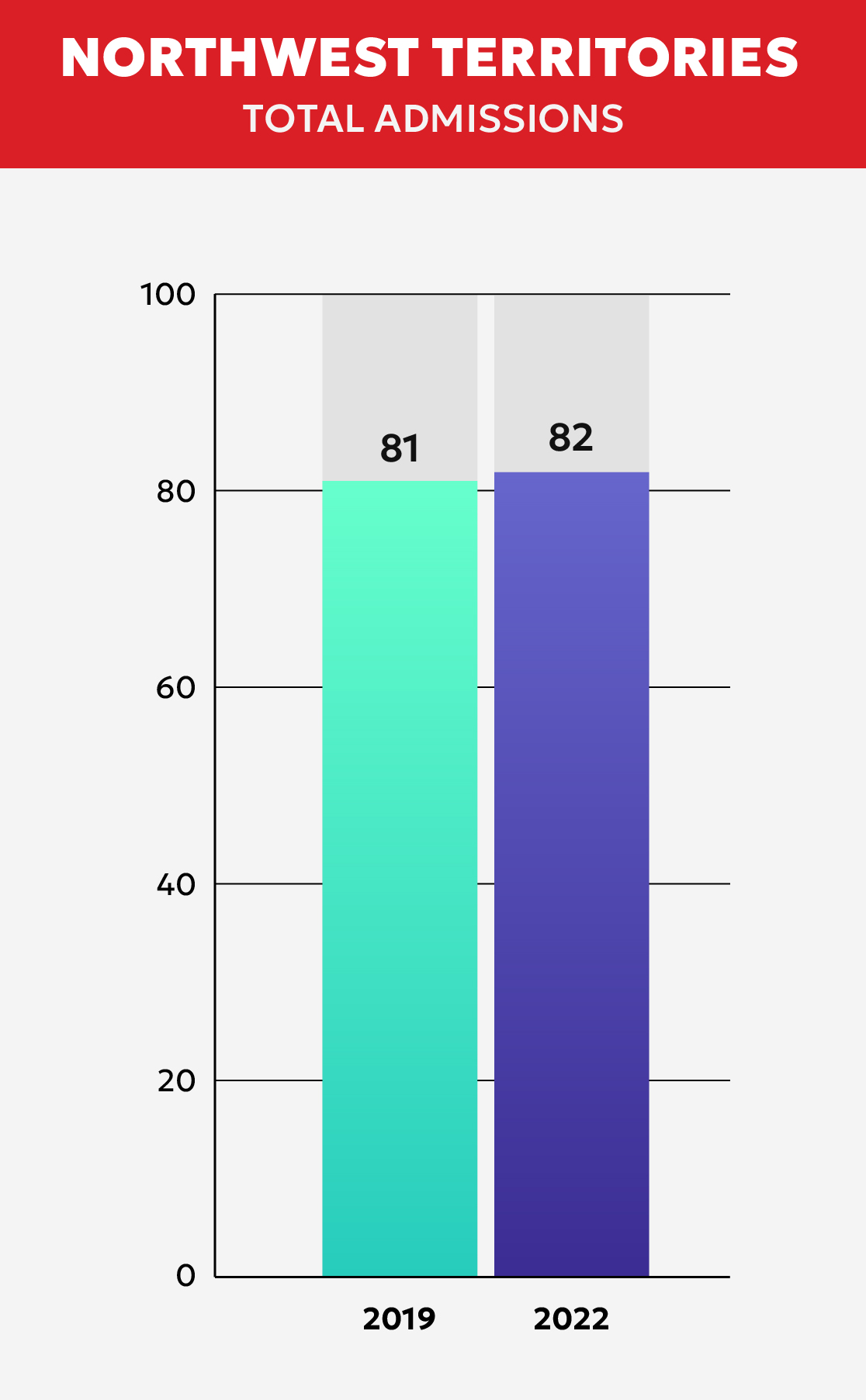 |
However, leaders are still facing hiring challenges and increased competition for positions that call for general administrative, corporate, and legal support skills, with an overwhelming 87 percent of managers struggling to find skilled legal talent, according to Robert Half’s ‘Demand for Skilled Talent Report.’
As a result, 65 percent of legal leaders are gearing up to increase their use of contract professionals in the second half of 2024 to access specialized skills that are crucial in today’s legal job market.
Law firms need contract talent for these positions:
Legal departments need contract talent for the following roles:
In Canada, legal fees are typically calculated using three main methods: hourly rates, flat fees, and contingency fees. Most legal professionals will also request an initial payment, known as a retainer, and clients may be responsible for court fees and other disbursements as the case progresses.
This is the most common method, especially when the complexity of the case makes it difficult to predict the total time required. Lawyers and paralegals charge for each hour worked, with no standardized rate. The hourly rate varies based on factors such as experience, reputation, and regional market conditions. While hourly billing offers flexibility, it can be unpredictable, making it important for clients to monitor costs throughout the process.
A flat or fixed fee is often used for tasks with clear, predictable time frames, such as preparing a will or completing a real estate transaction. Lawyers may also charge a flat fee based on a percentage of the transaction’s value in areas like business financing or property deals. This method provides cost certainty but is less common in complex litigation.
Contingency fees are linked to the outcome of a case, typically used in lawsuits or negotiations. If successful, the lawyer or paralegal receives a percentage of the award or settlement; if not, the fee may be a pre-agreed amount or nothing at all. While contingency fees can improve access to legal representation, particularly for those unable to afford upfront payments, these agreements must be carefully structured. In Ontario, for instance, the Solicitors Act requires contingency fee agreements to be in writing and outlines specific terms, including limits on lawyer compensation relative to the client’s recovery.
For both lawyers and paralegals, clear communication about fees, costs, and expectations at the outset is crucial to avoid misunderstandings and ensure a transparent legal process.
Civil action up to trial (seven days) for civil litigation was the highest median fee for 2024 across all firm sizes at $70,000 for national firms, $60,000 for national firms (one to four lawyers), and $75,000 for national firms (five to 25 lawyers). While this median fee is substantially higher than the rest, it is unsurprising given the duration of the service.
Trials and multi-day services typically had the highest fees across all firm sizes, while wills and estates had the lowest fees for services like power of attorney and personal directives. Basic employment contract review and severance package review also had lower fees than other services in the labour and employment category. Again, these numbers reflect industry standards and expectations, with more complex tasks being more expensive than their simpler counterparts.
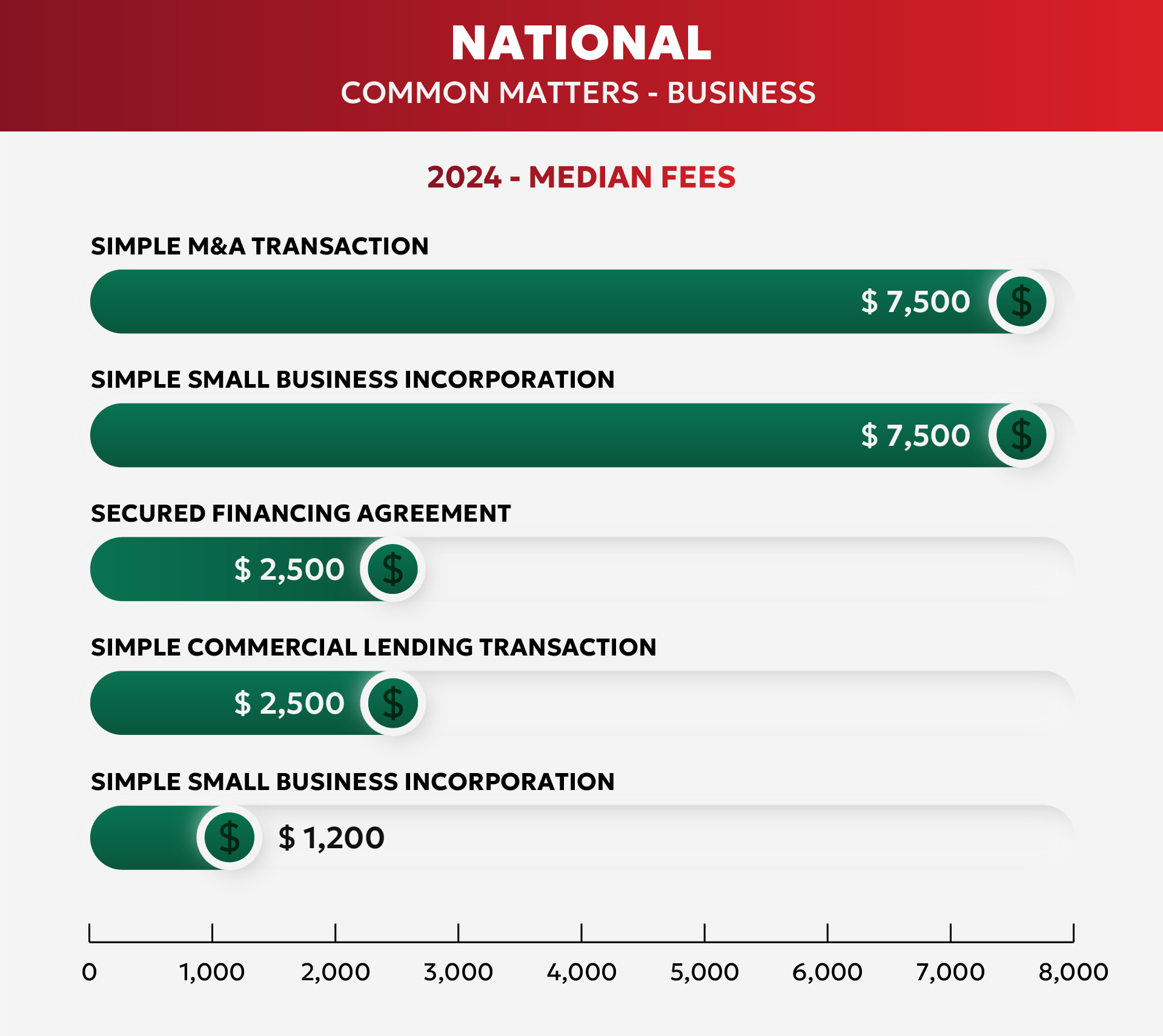
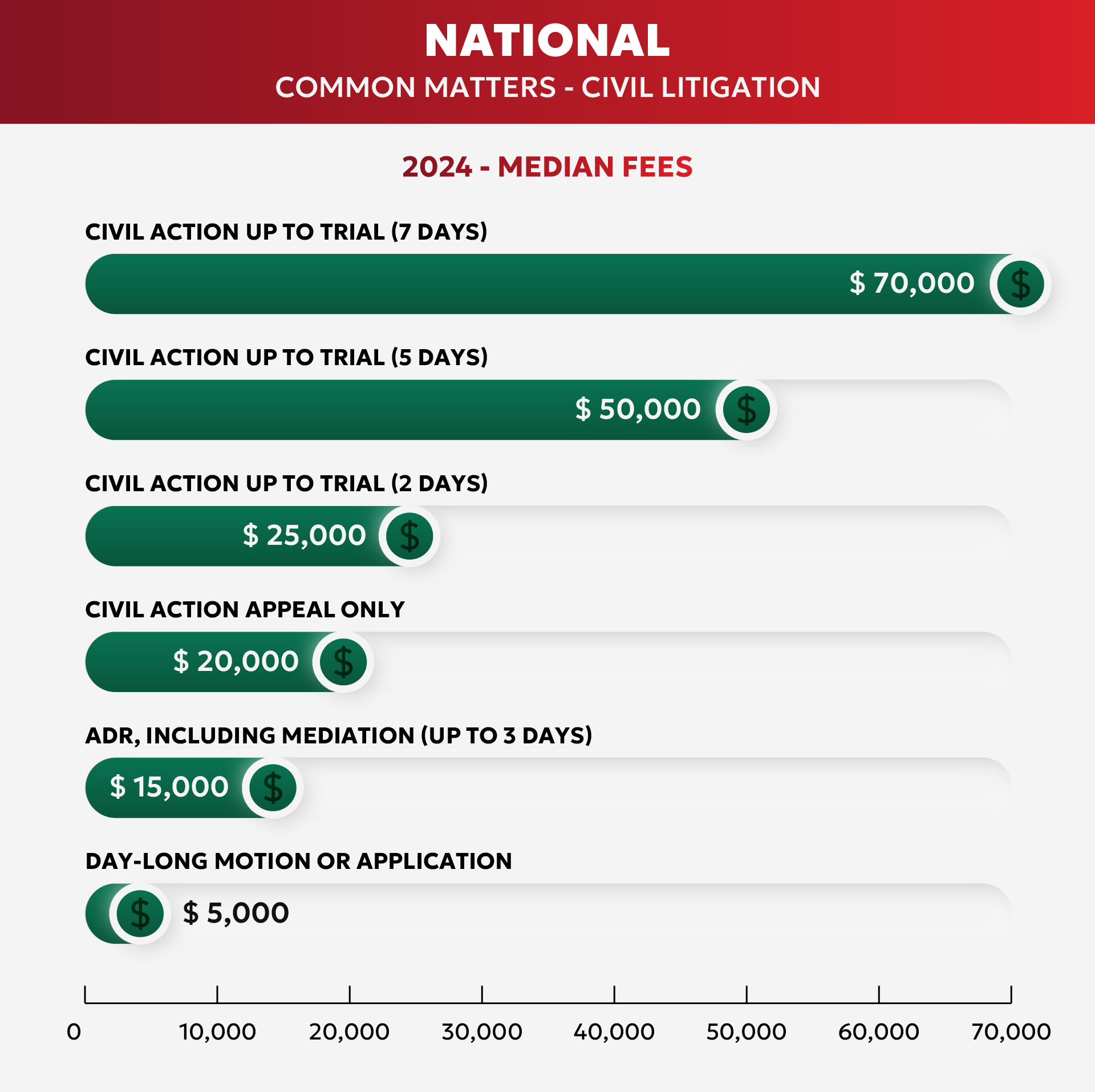
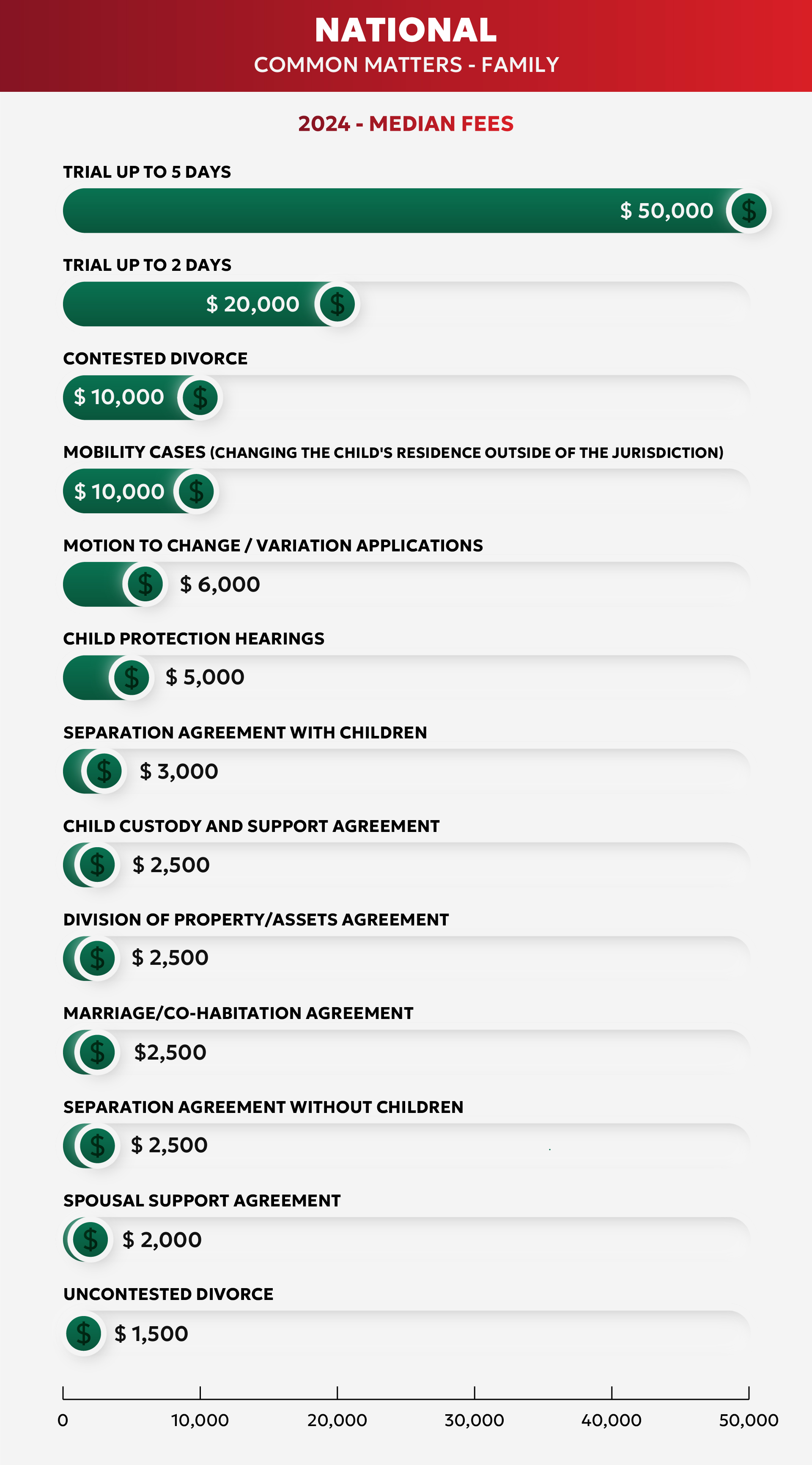
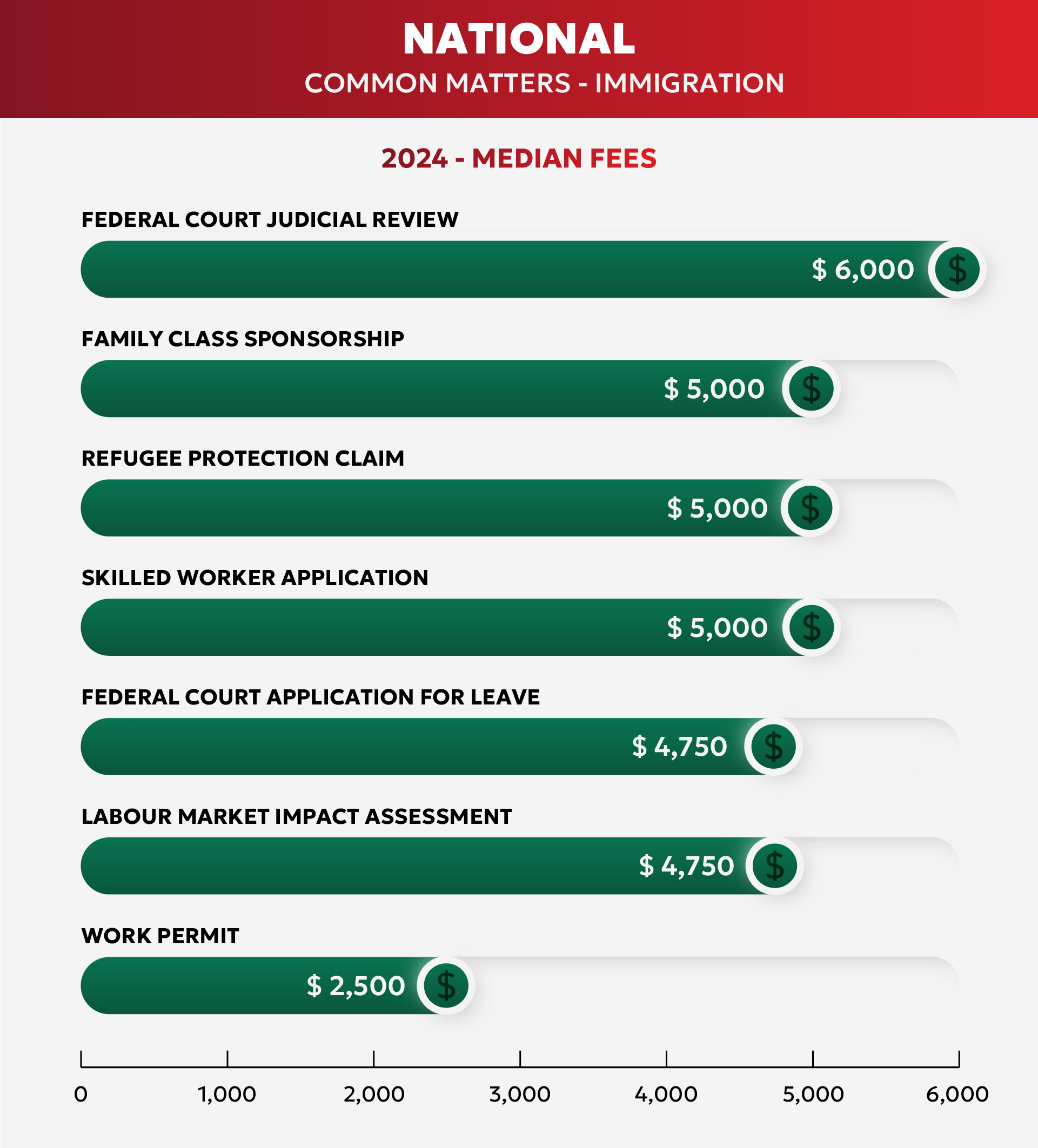
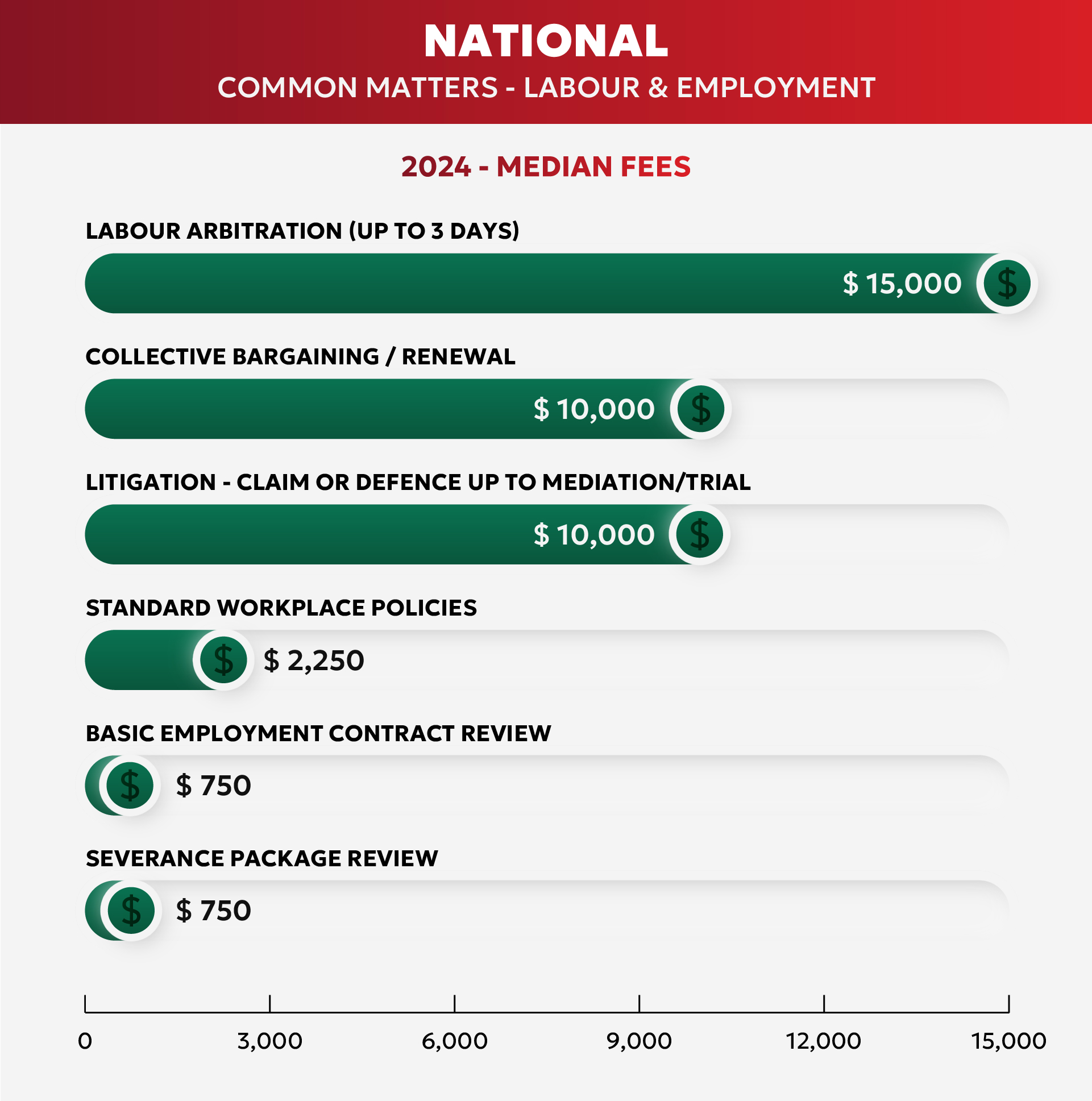
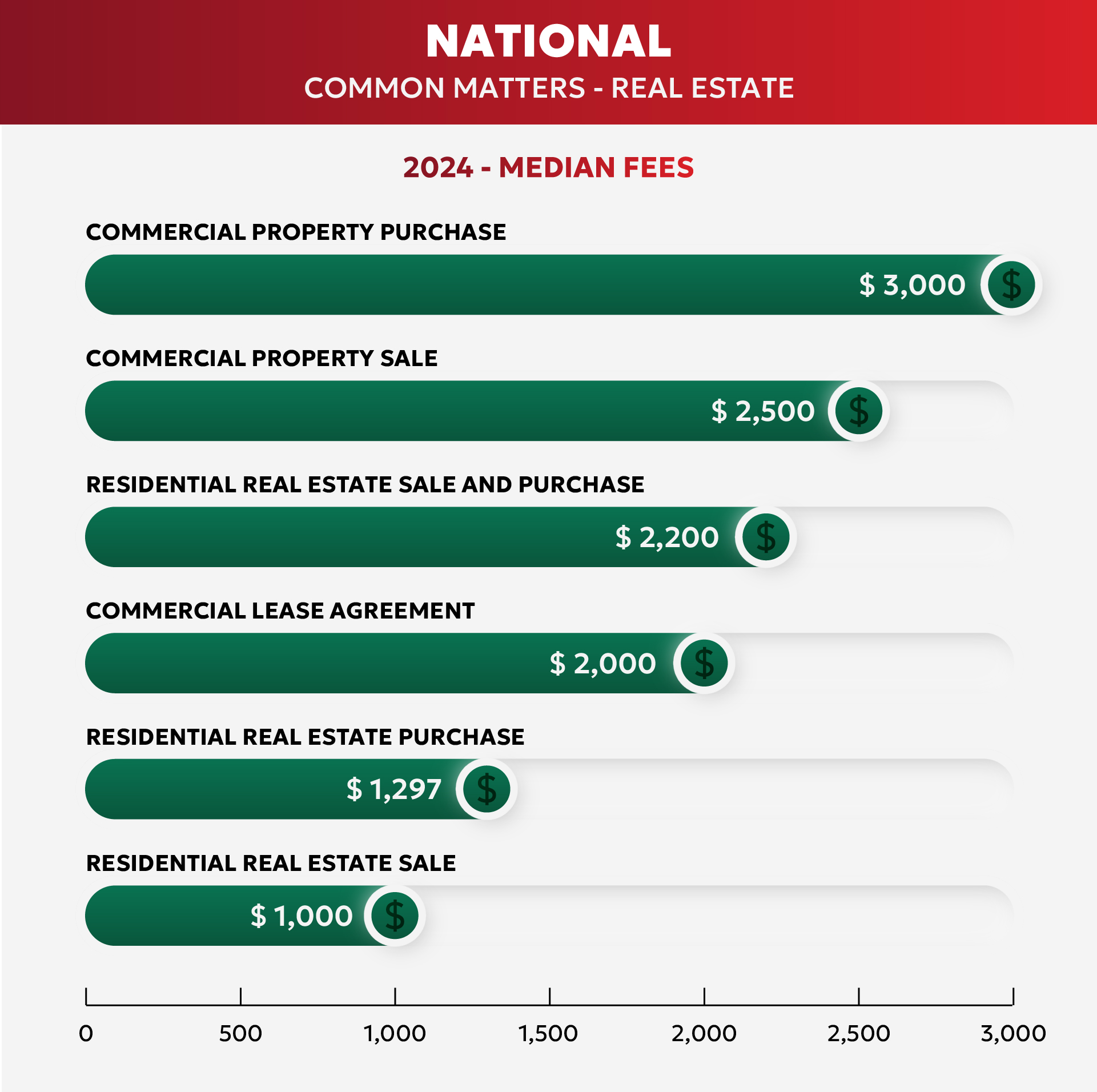
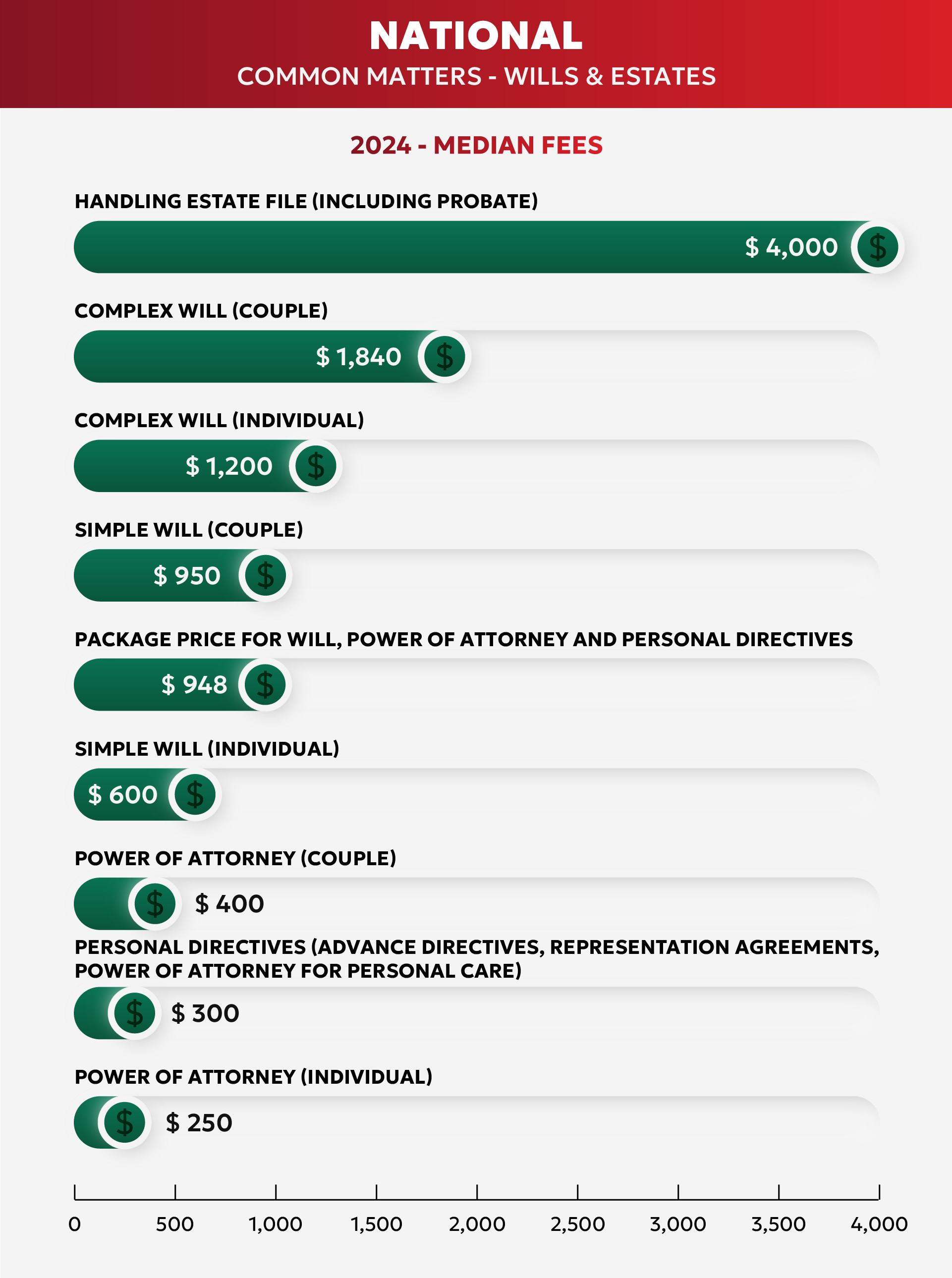
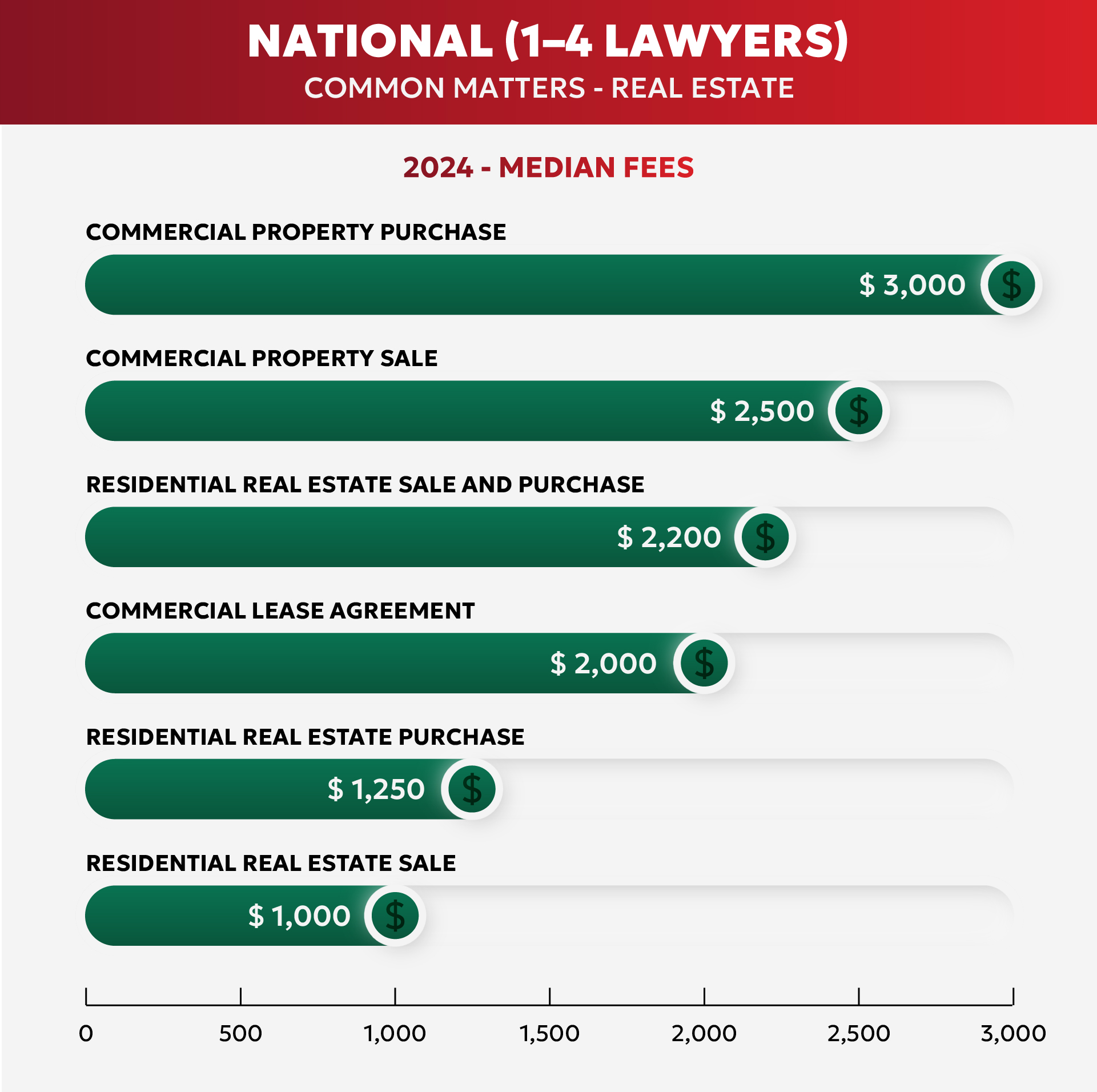
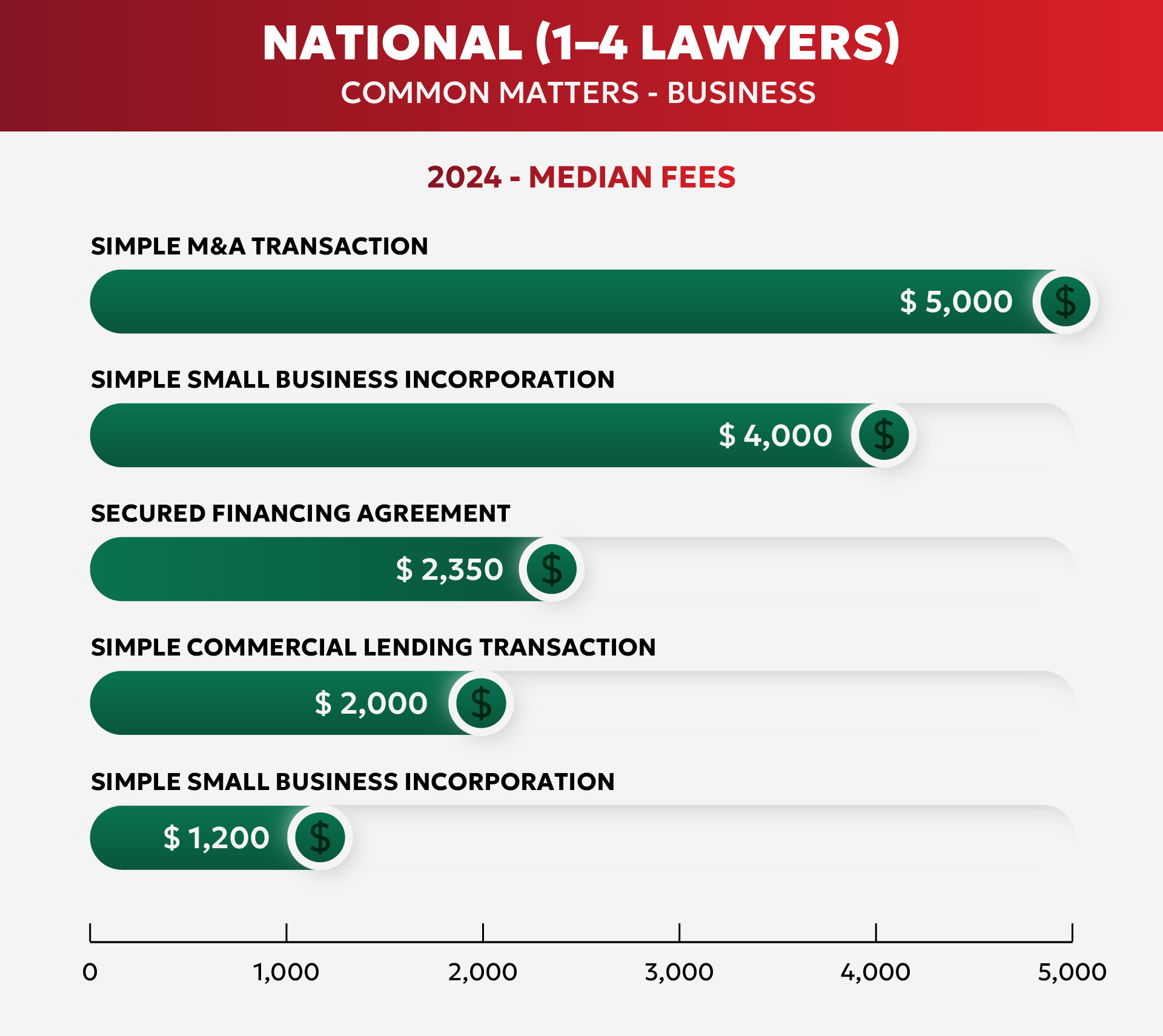

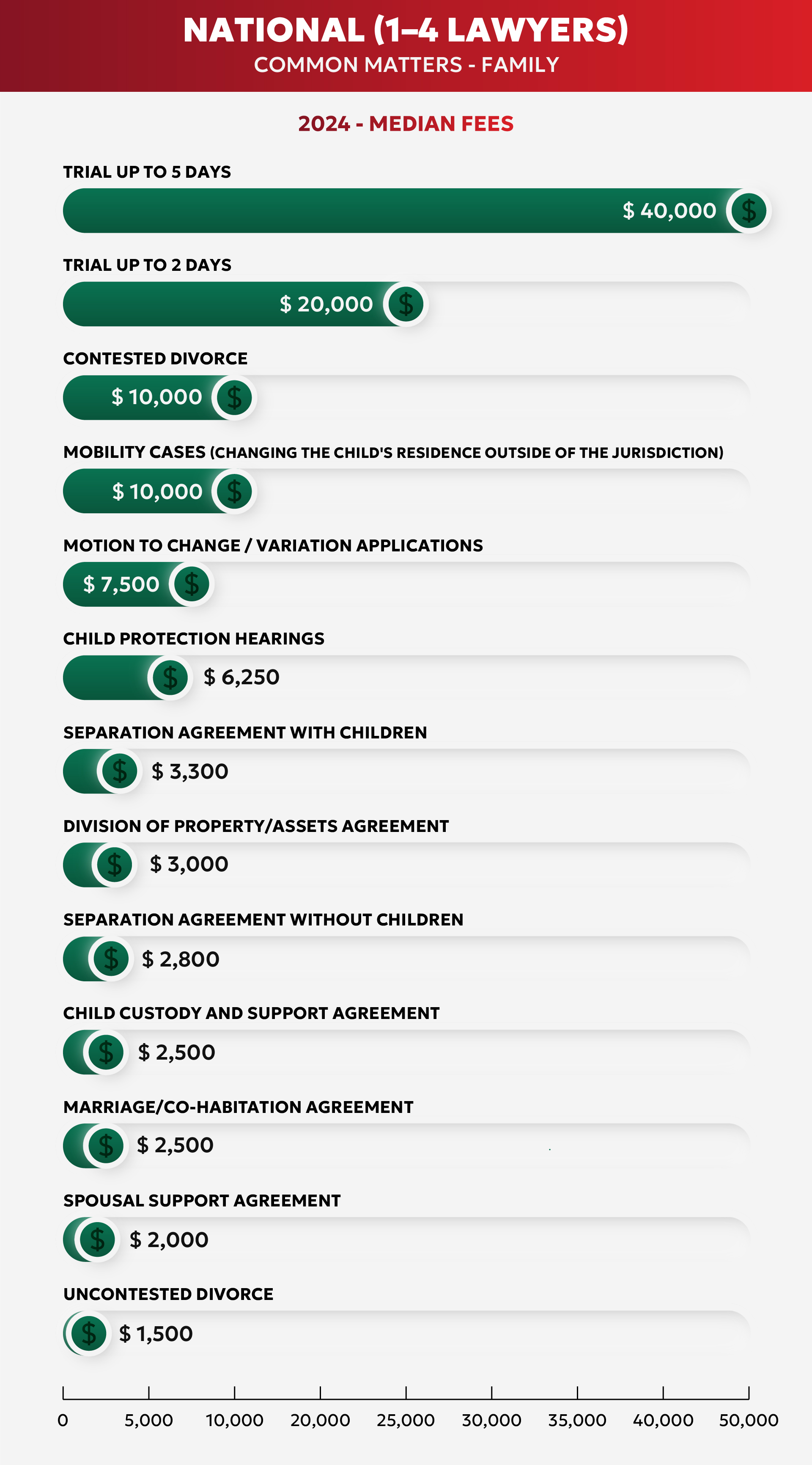
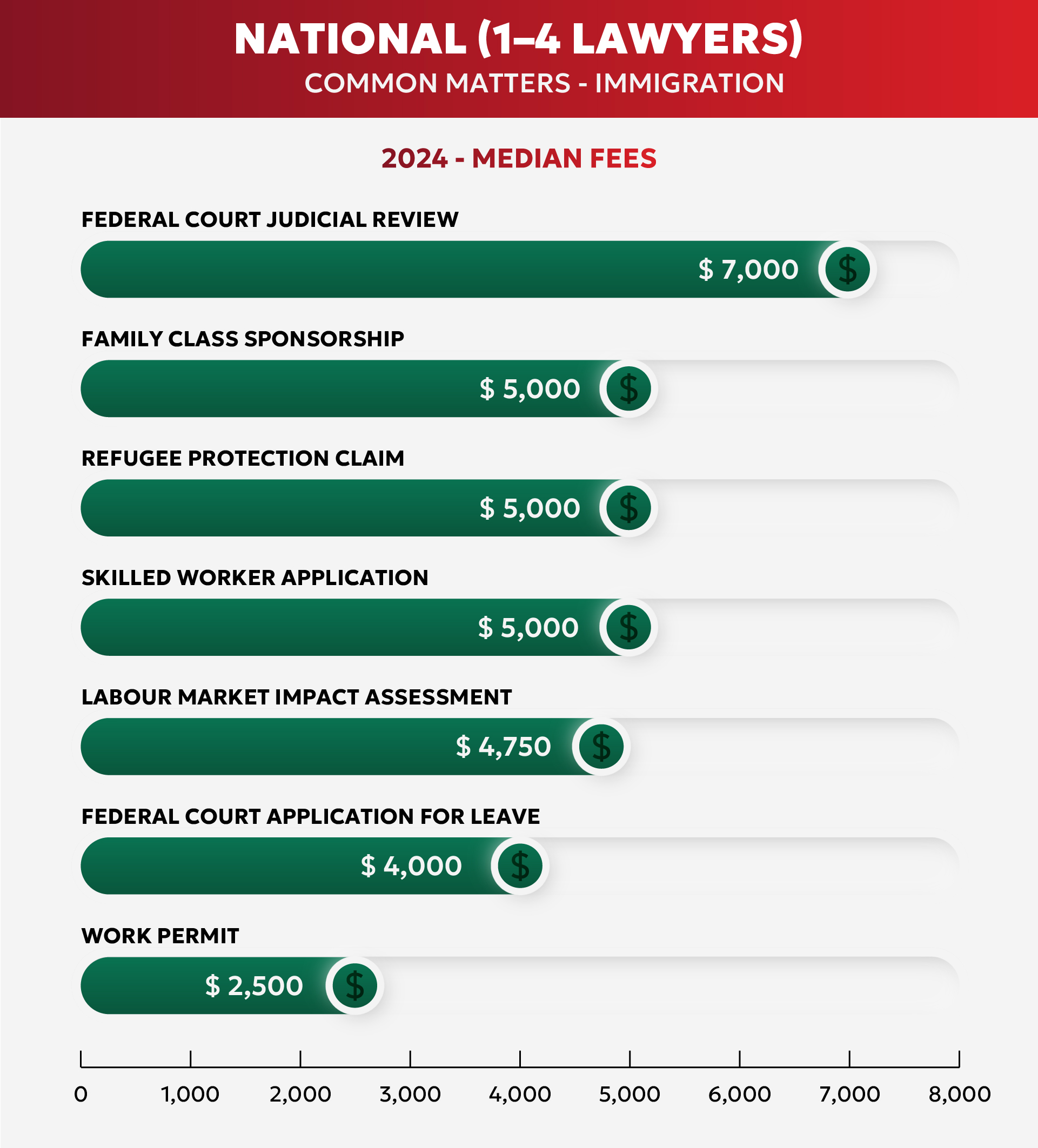
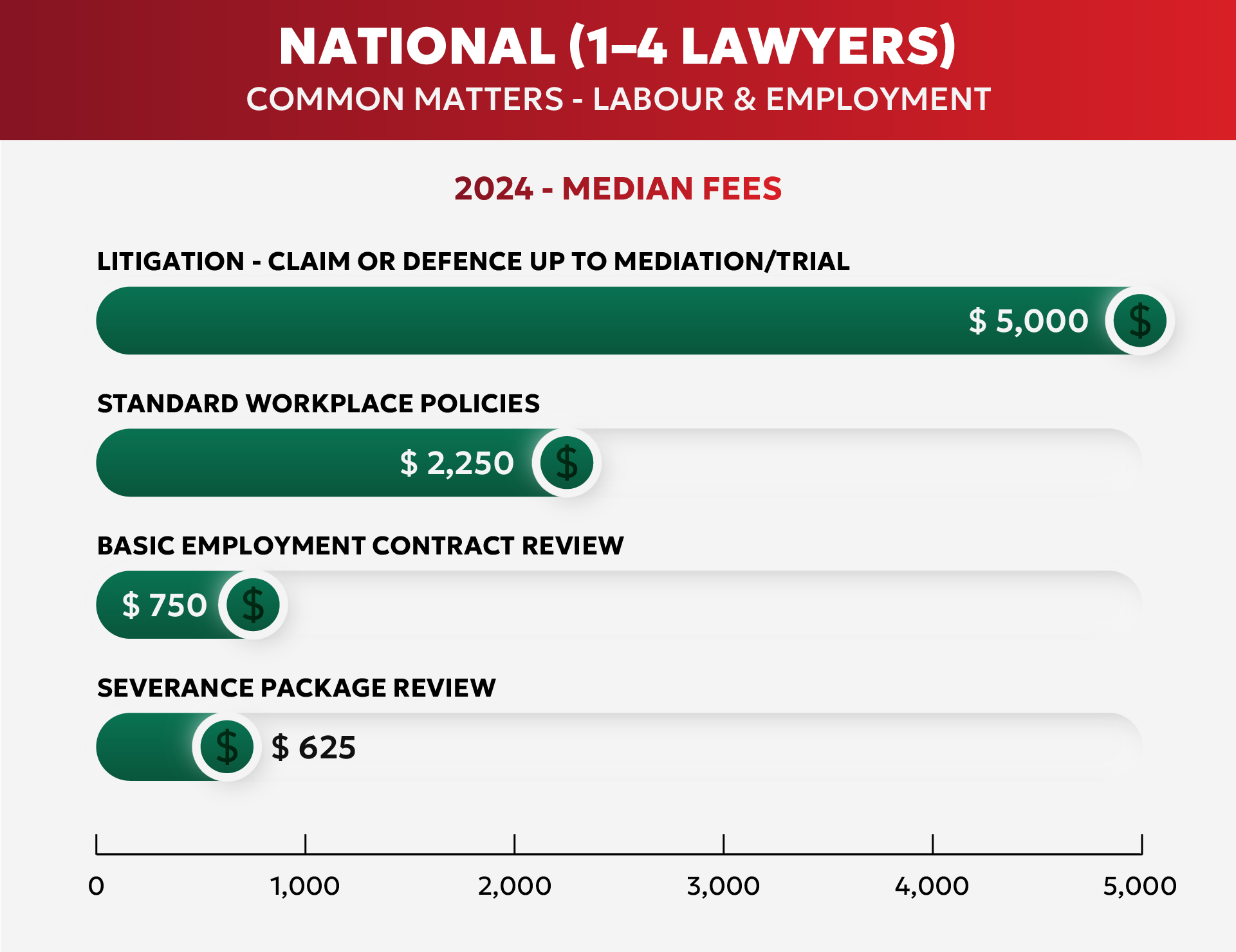
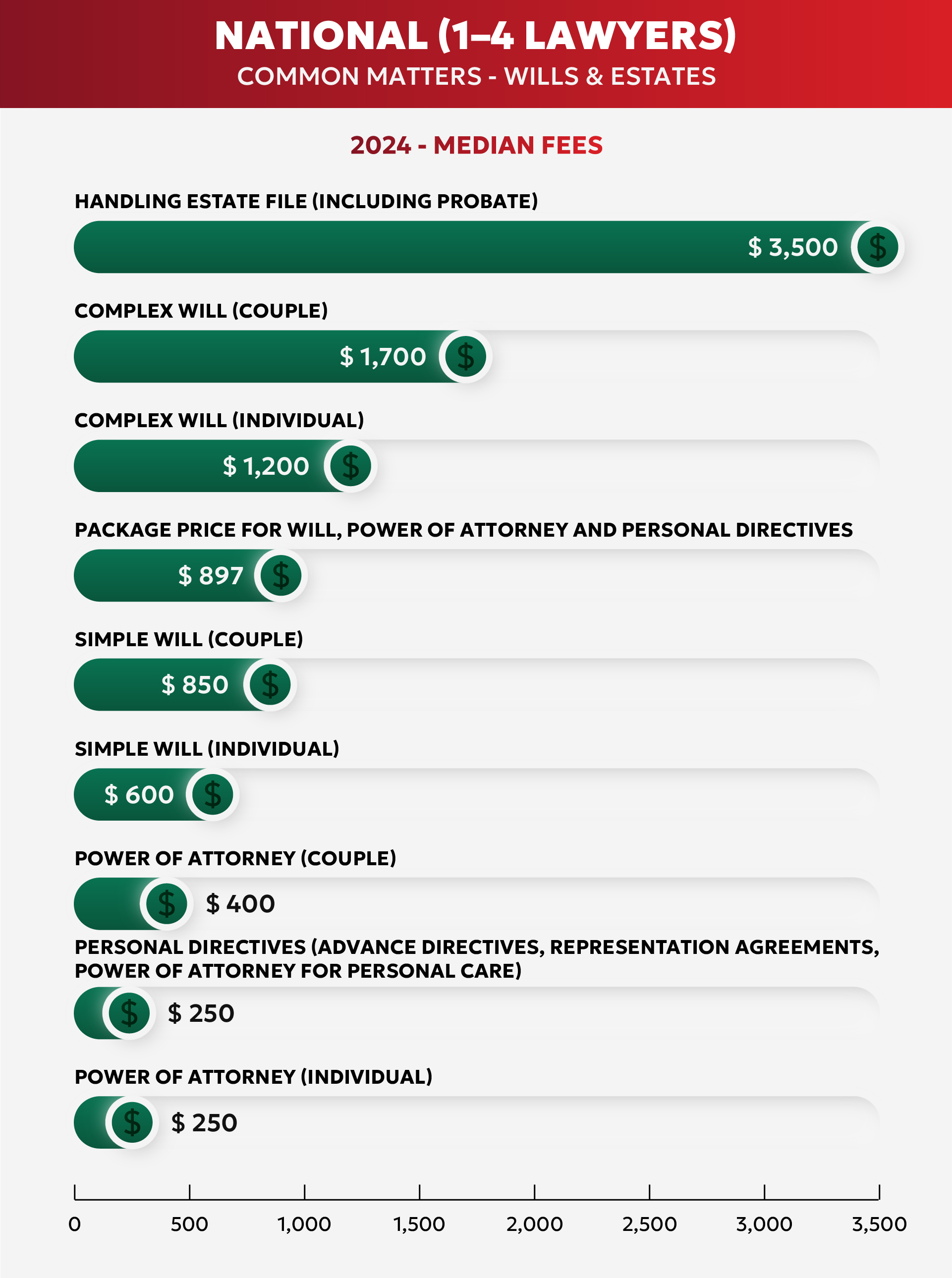
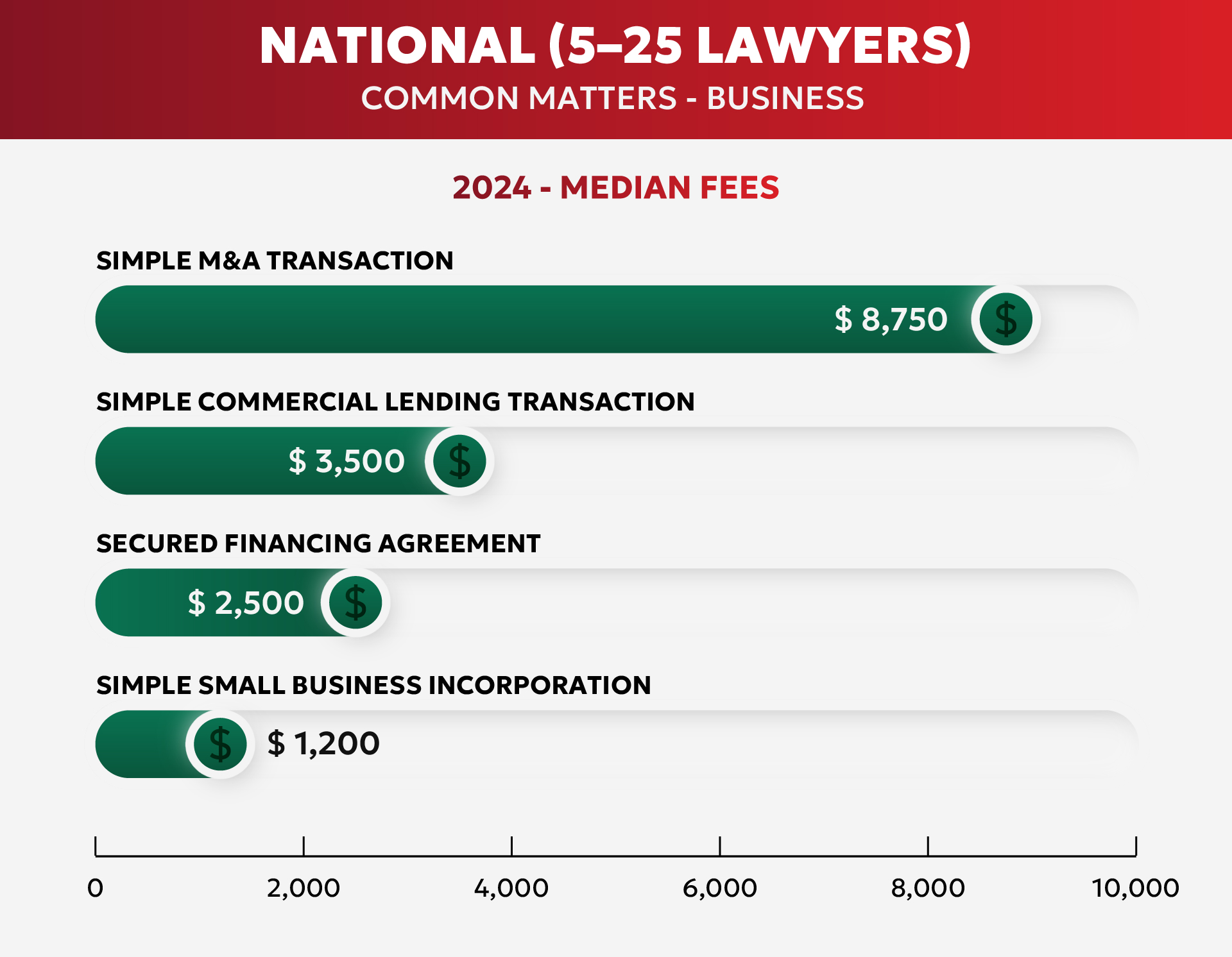
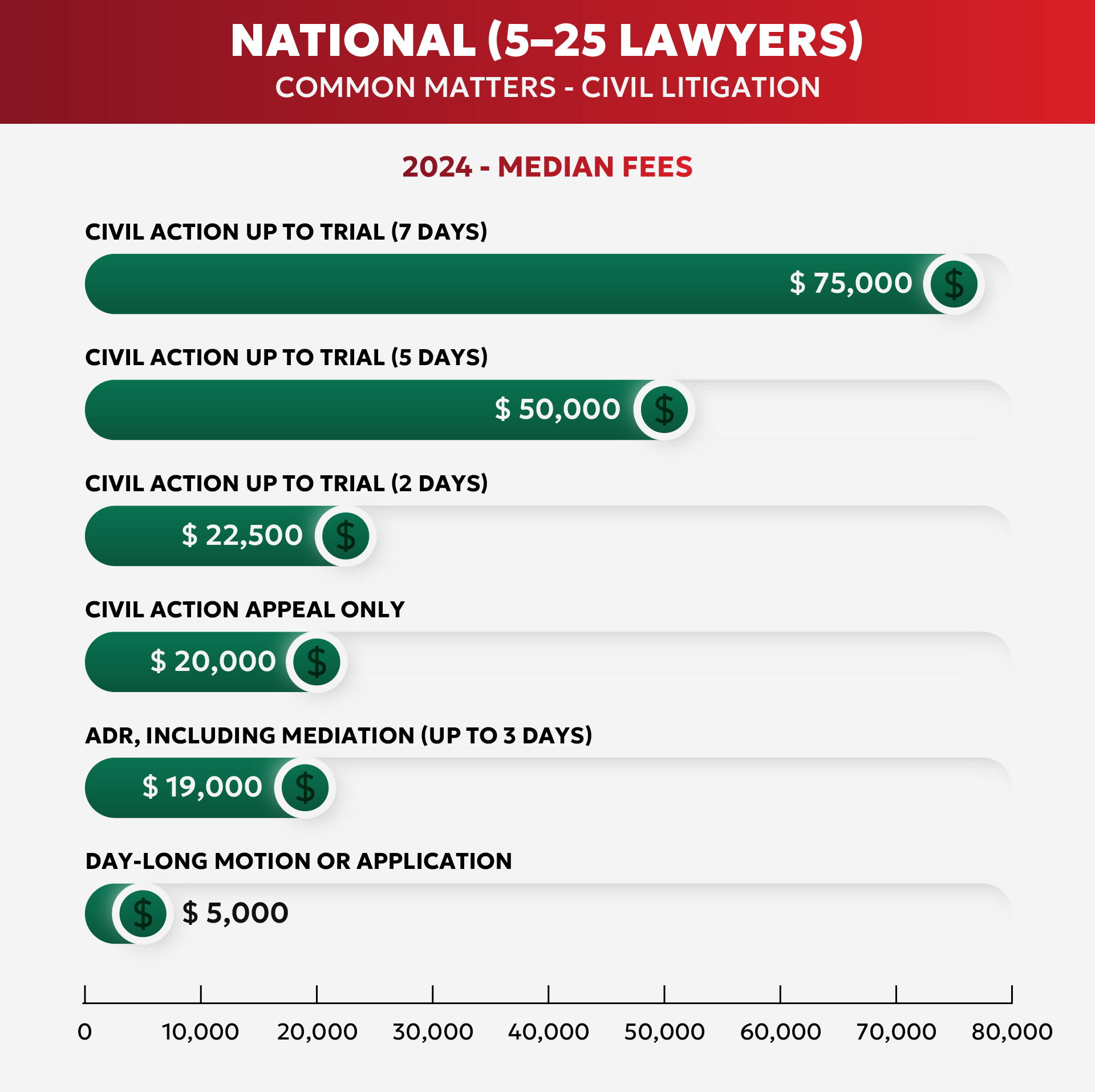
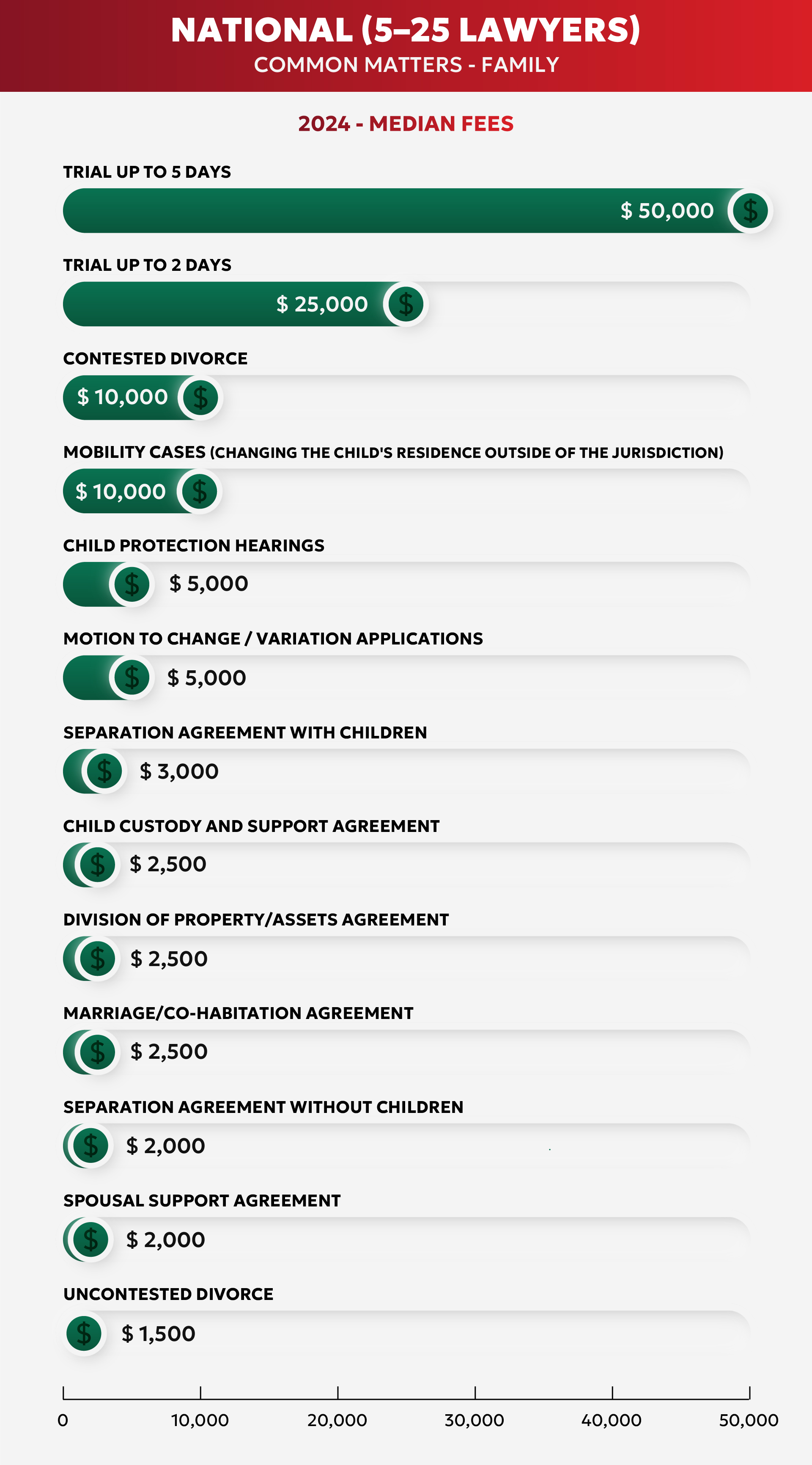
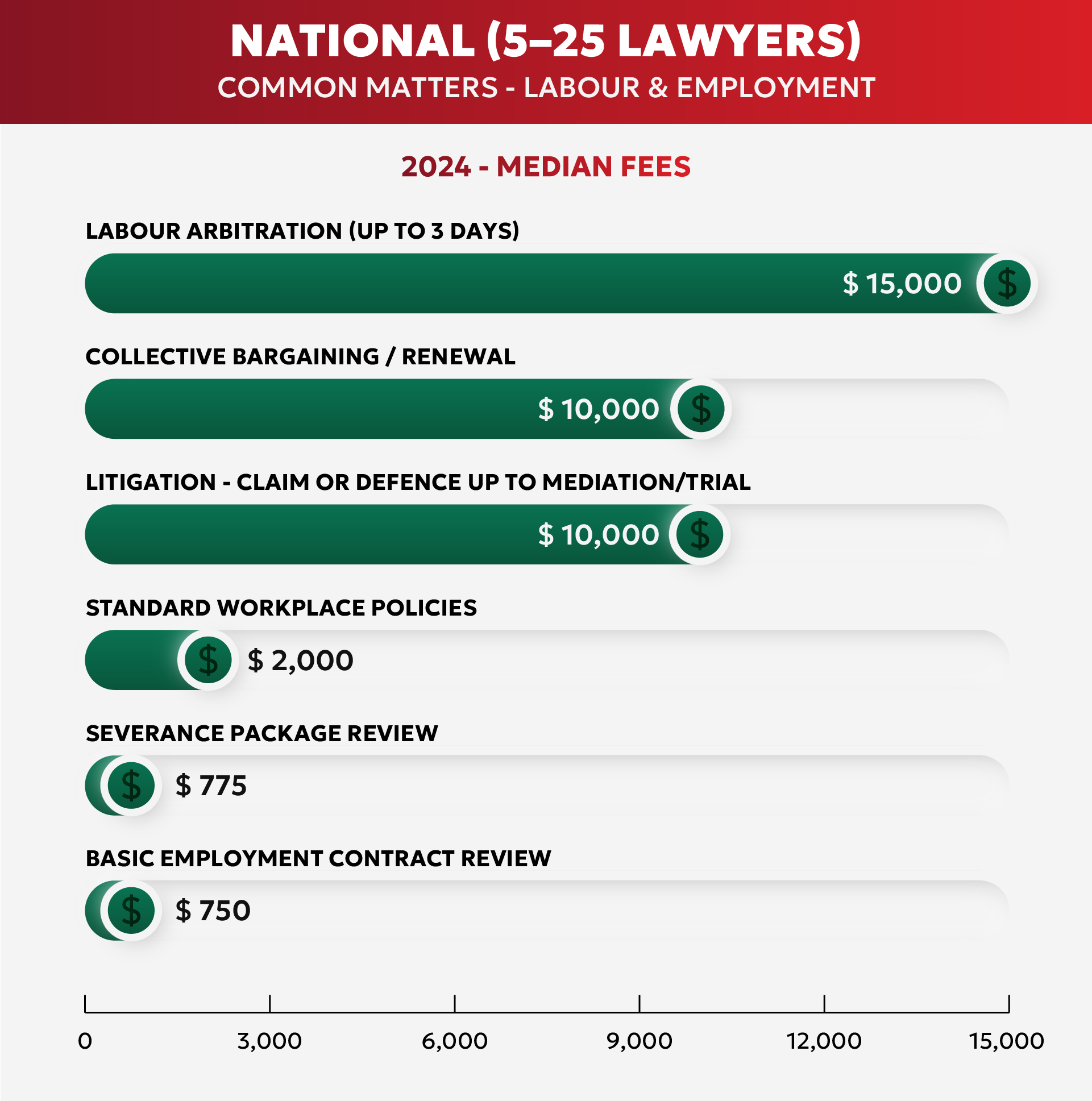
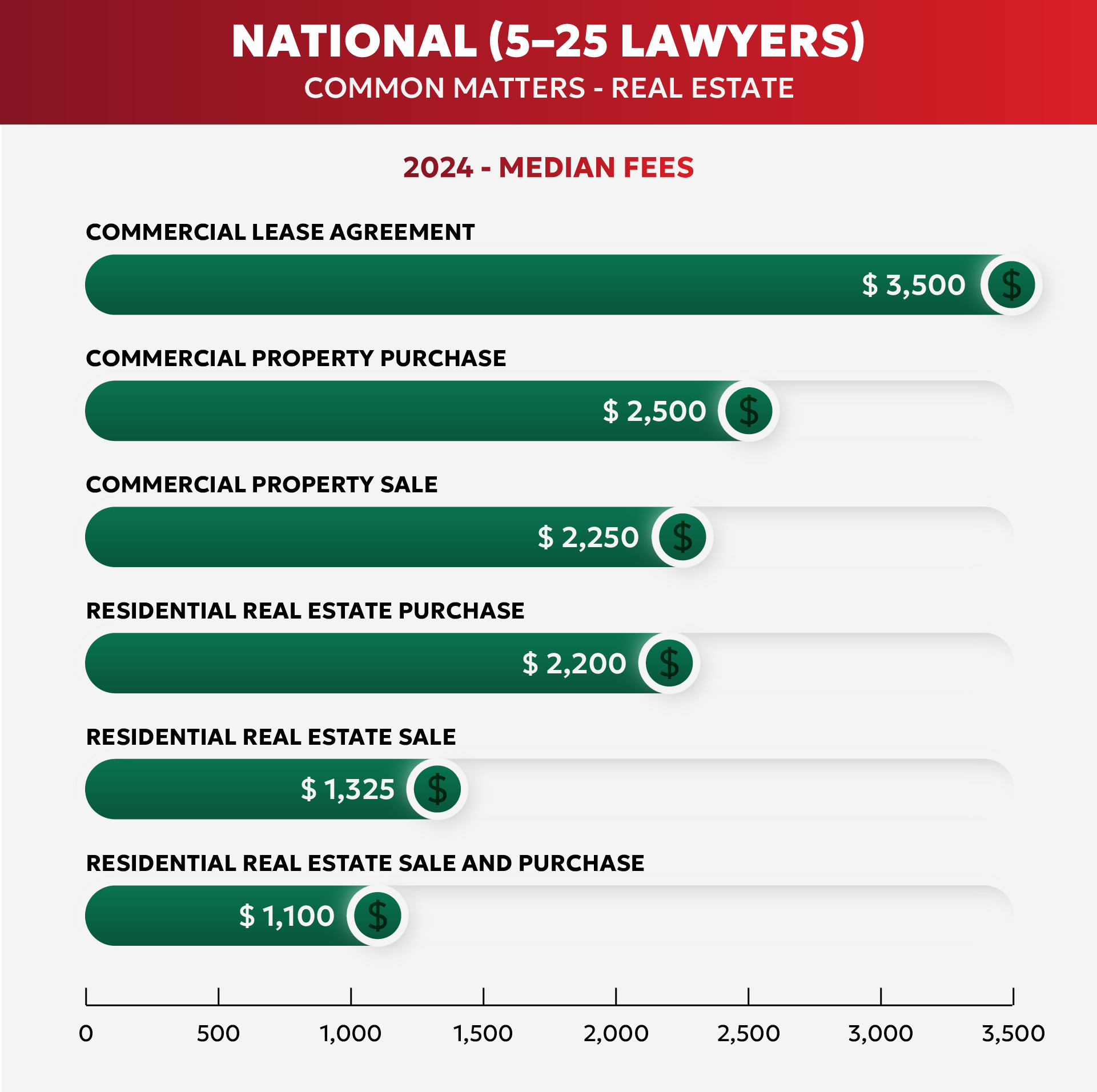
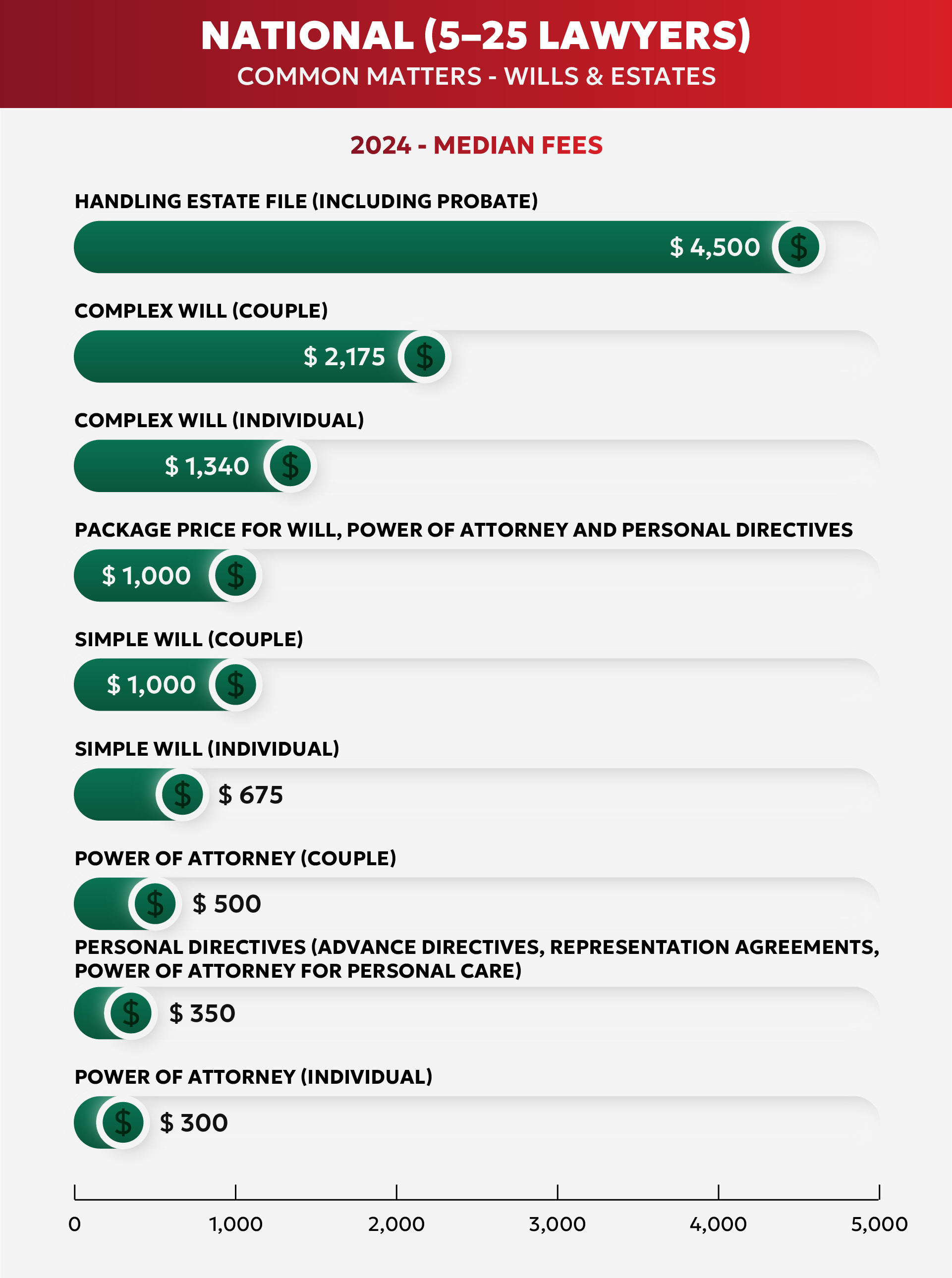
The East region saw lower fees than the West region and Ontario in a few key areas, such as civil action up to trial (two days and five days) for civil litigation, trial (up to two days and five days) for family law, and claim or defence up to mediation/trial for labour and employment litigation. Fees for trial-related services seem to be significantly lower in the East region than in the West region, which saw, on average, the highest fees overall of the three regions.
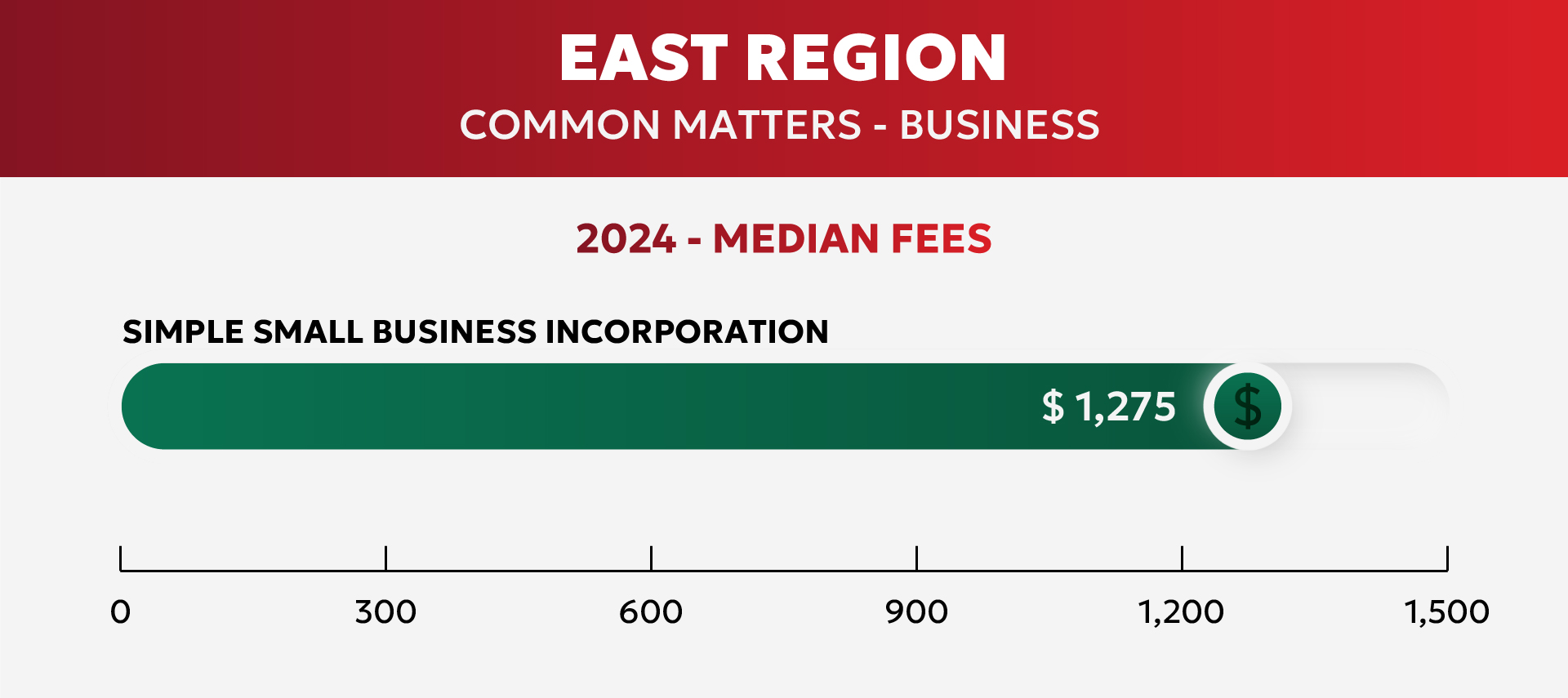
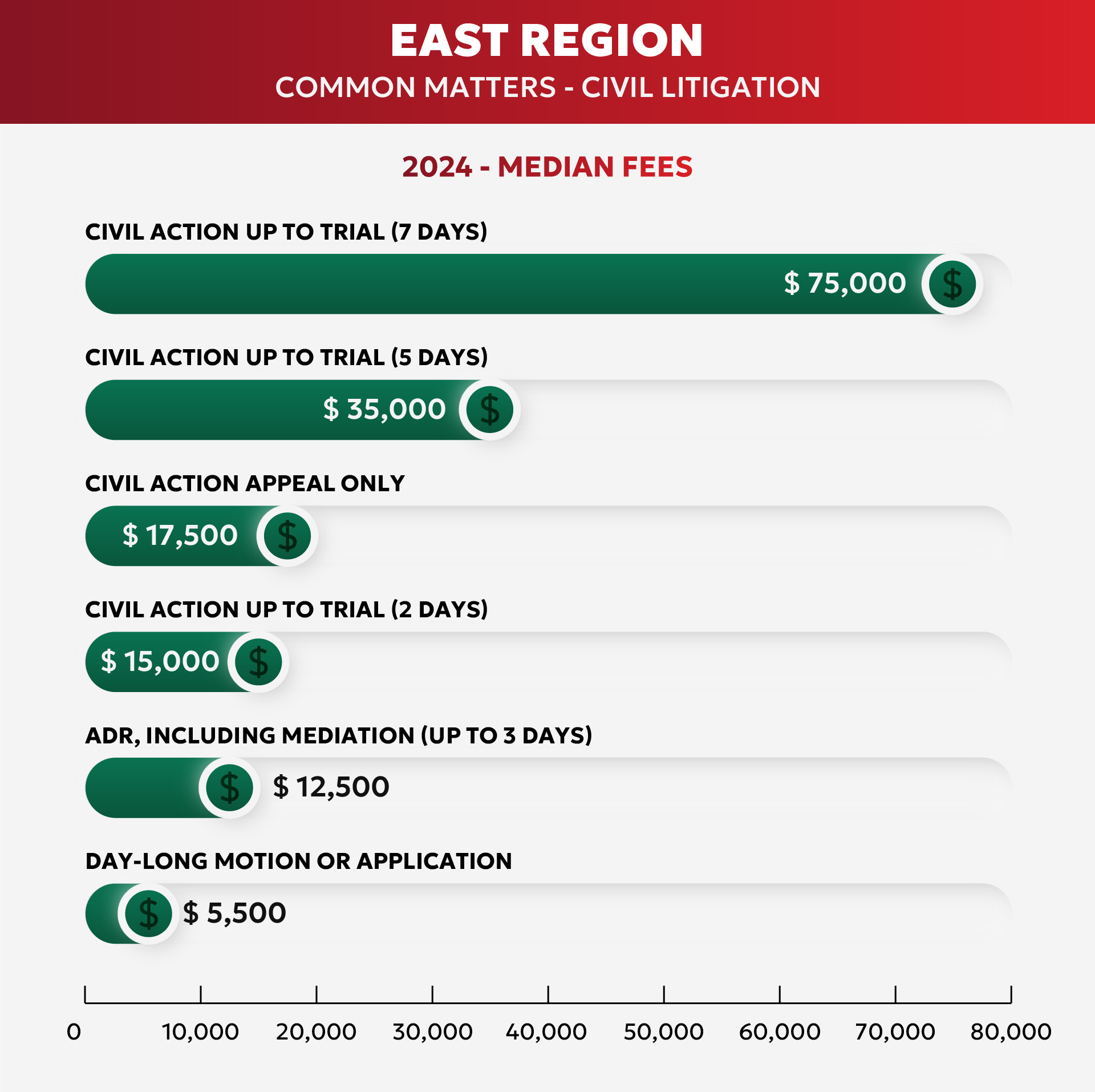
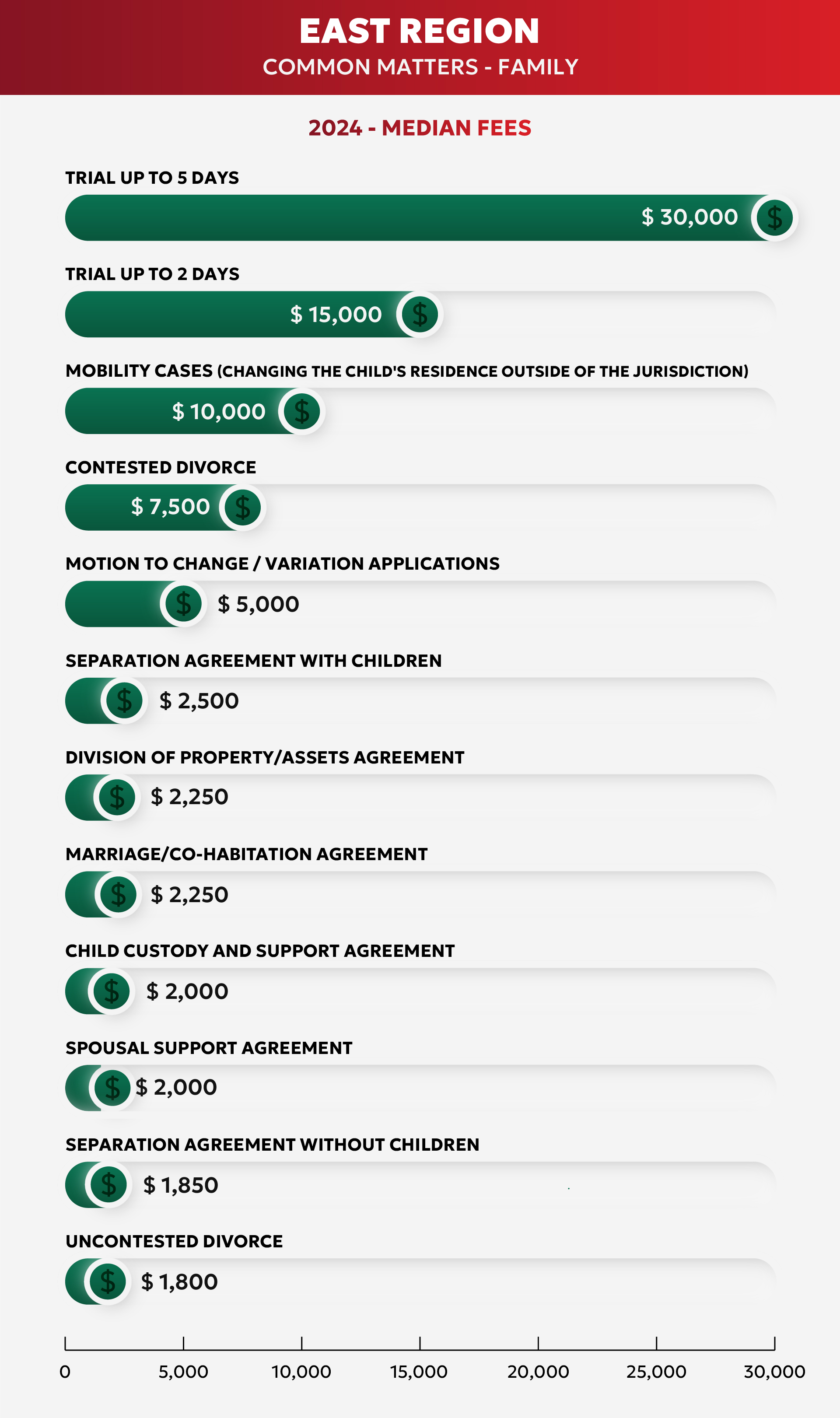
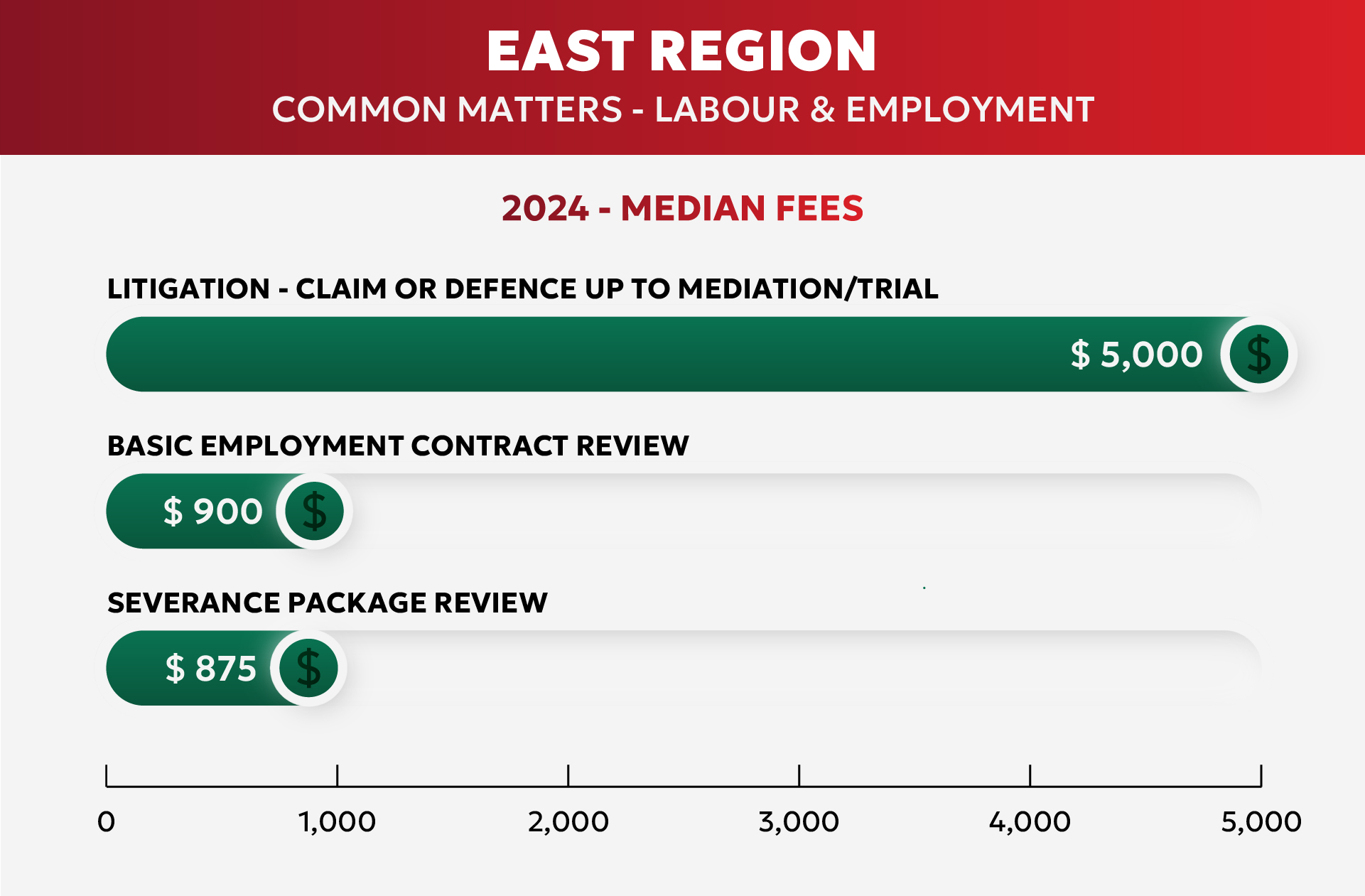
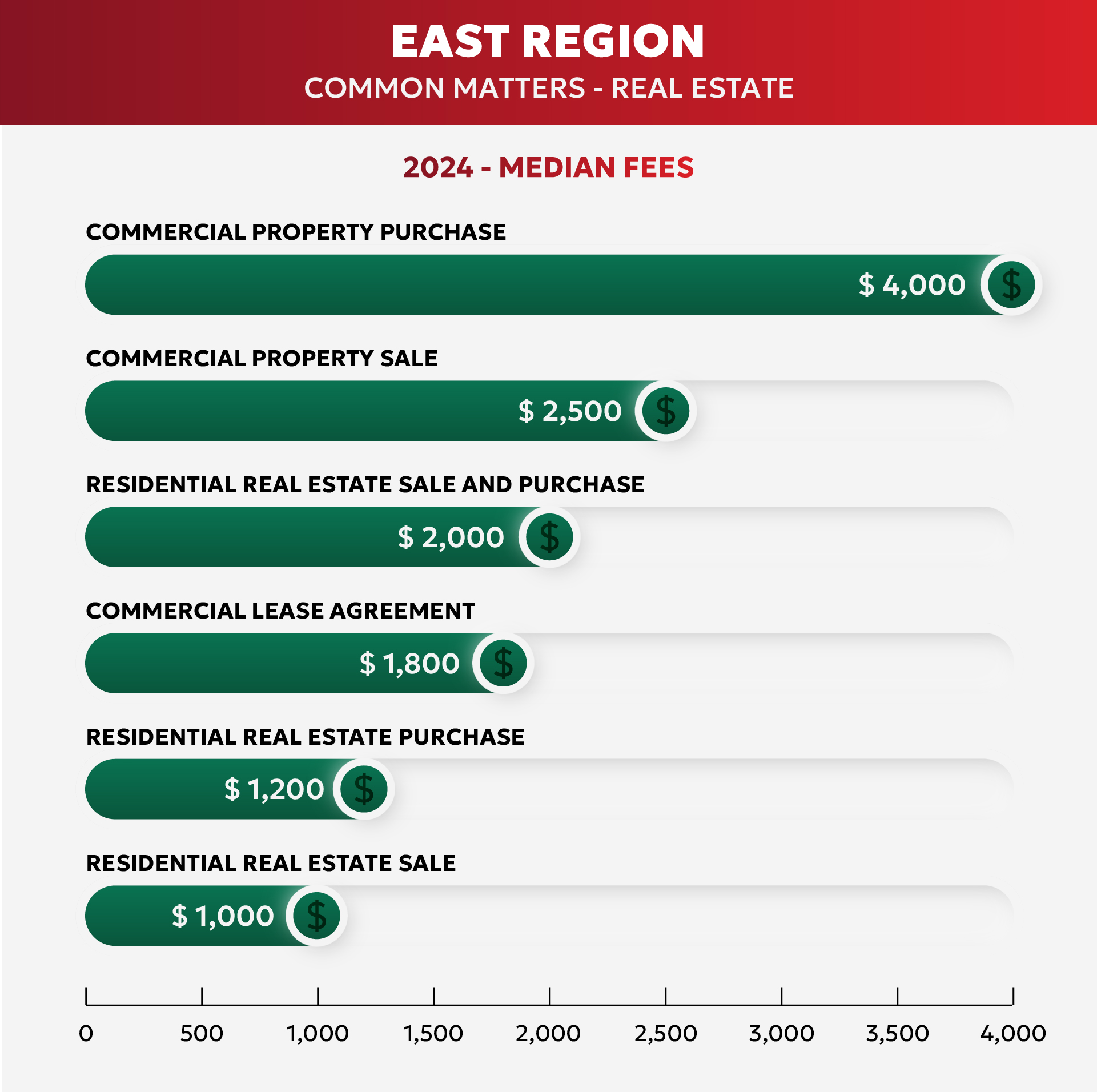
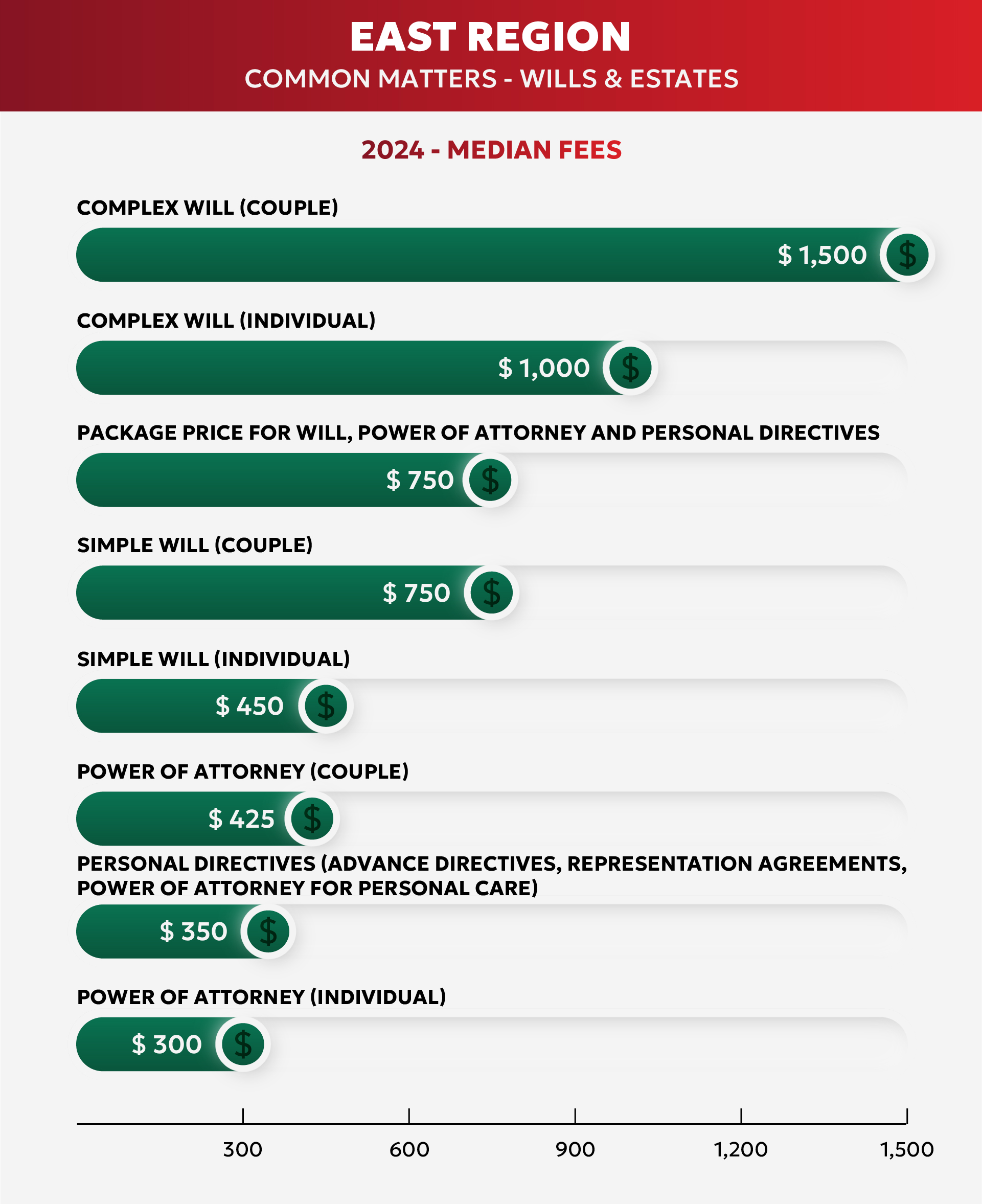
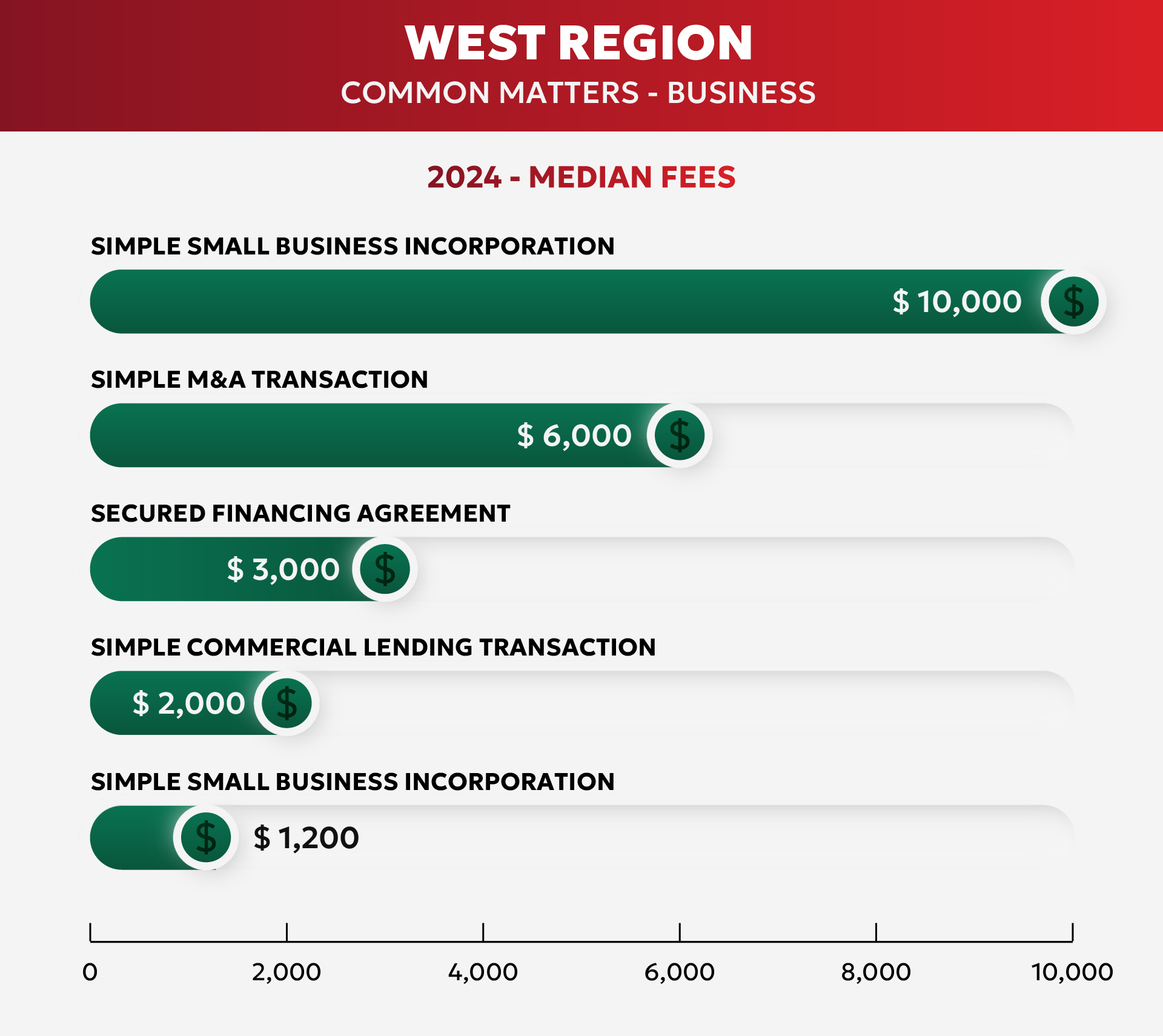
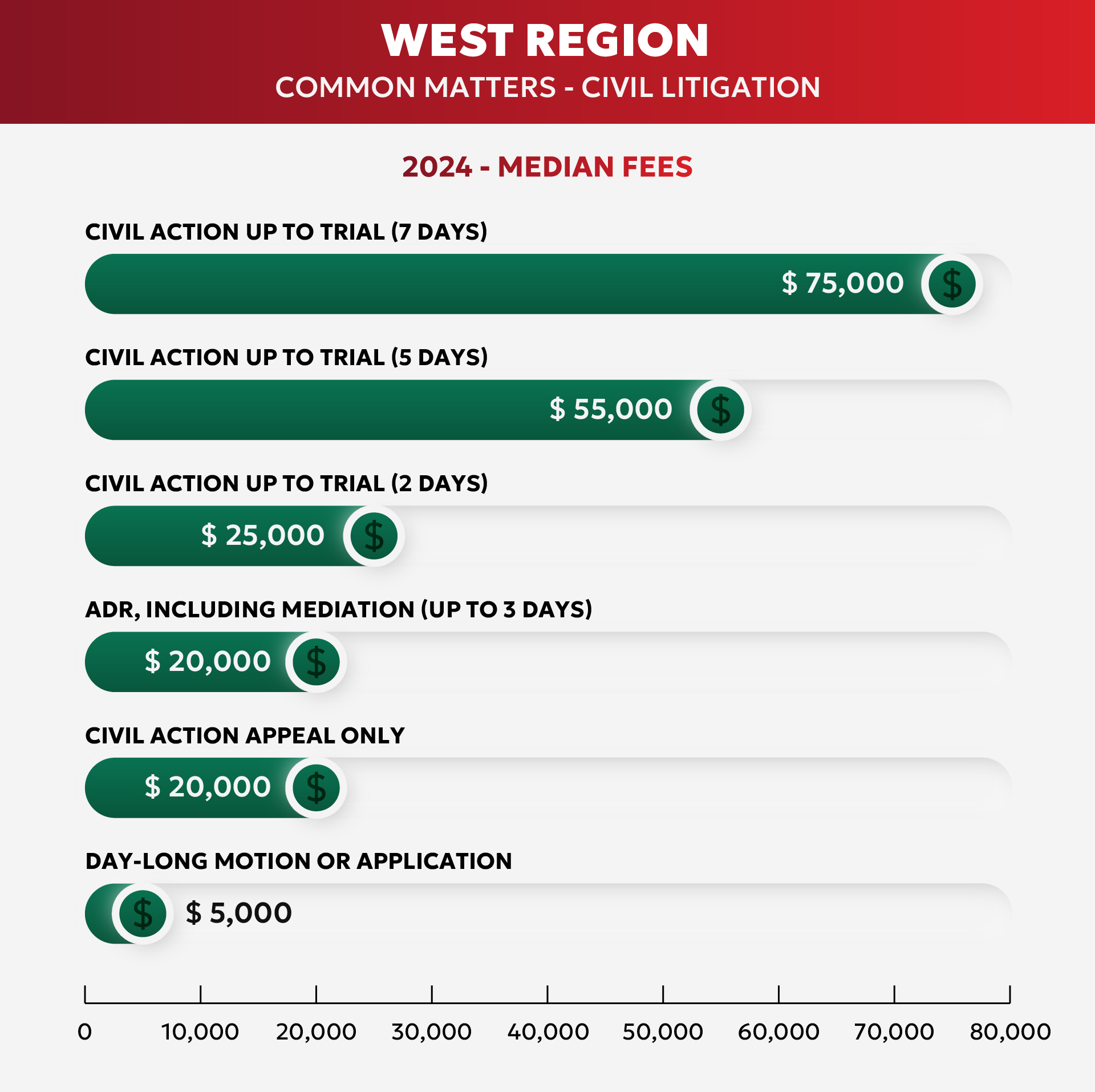
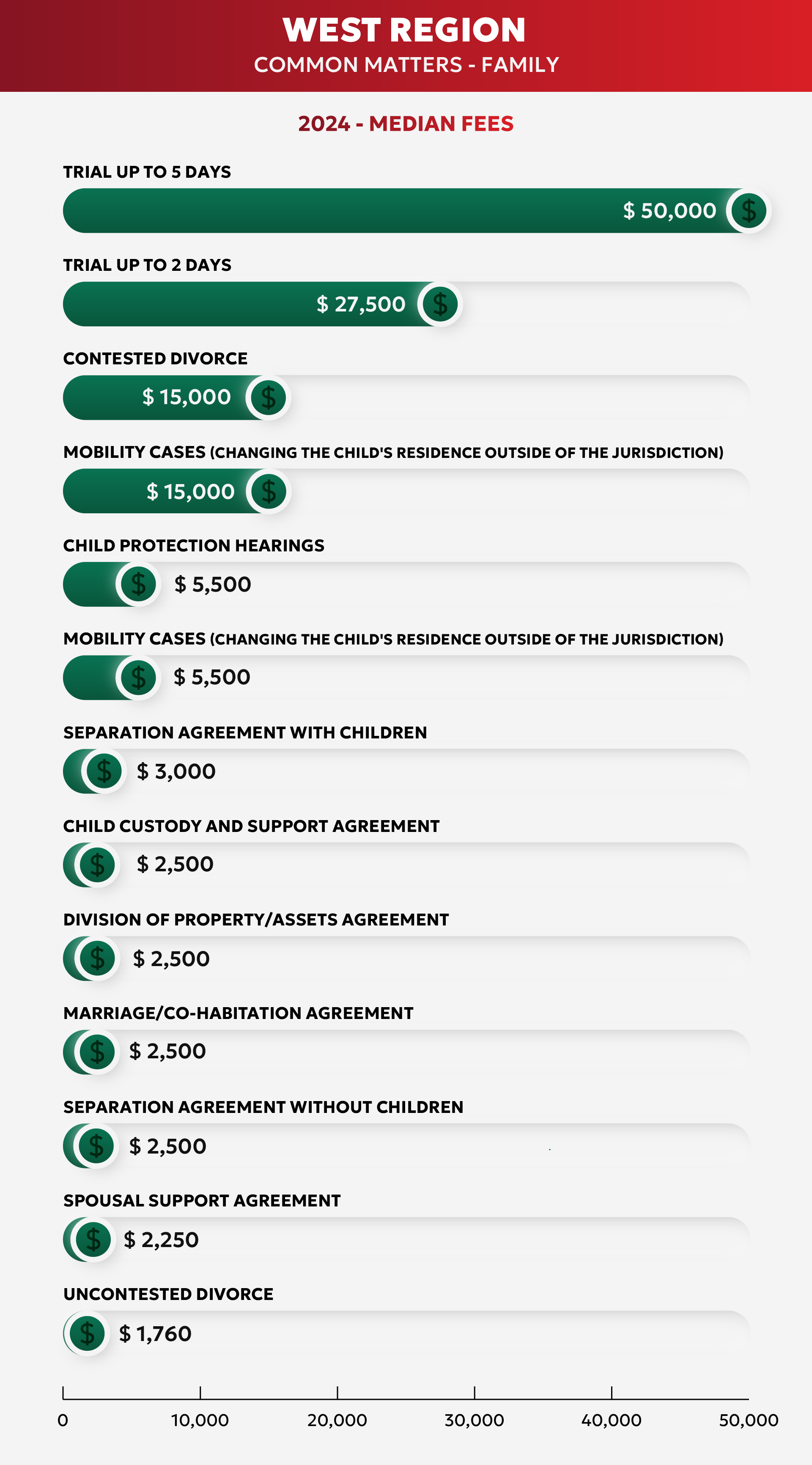
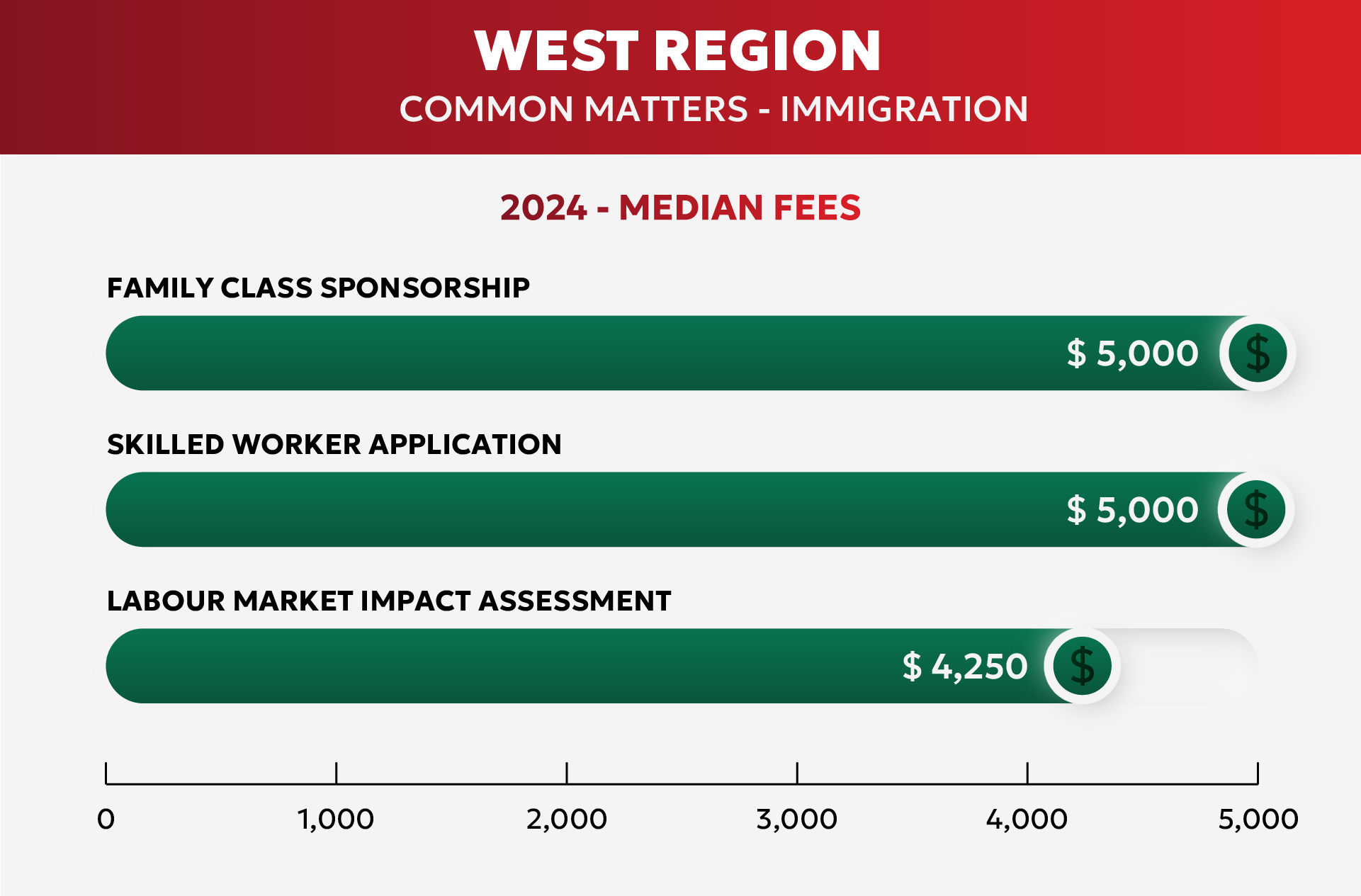
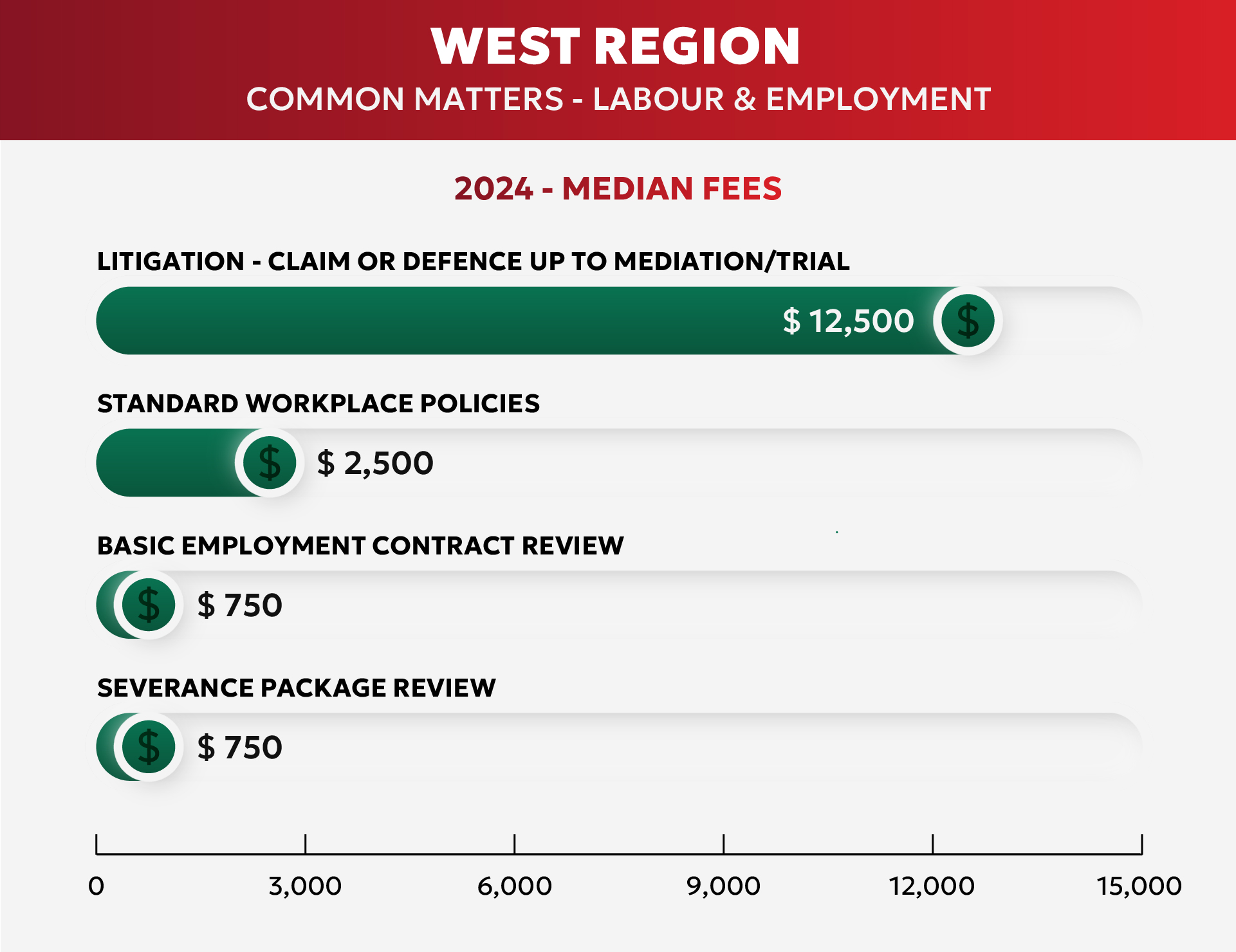
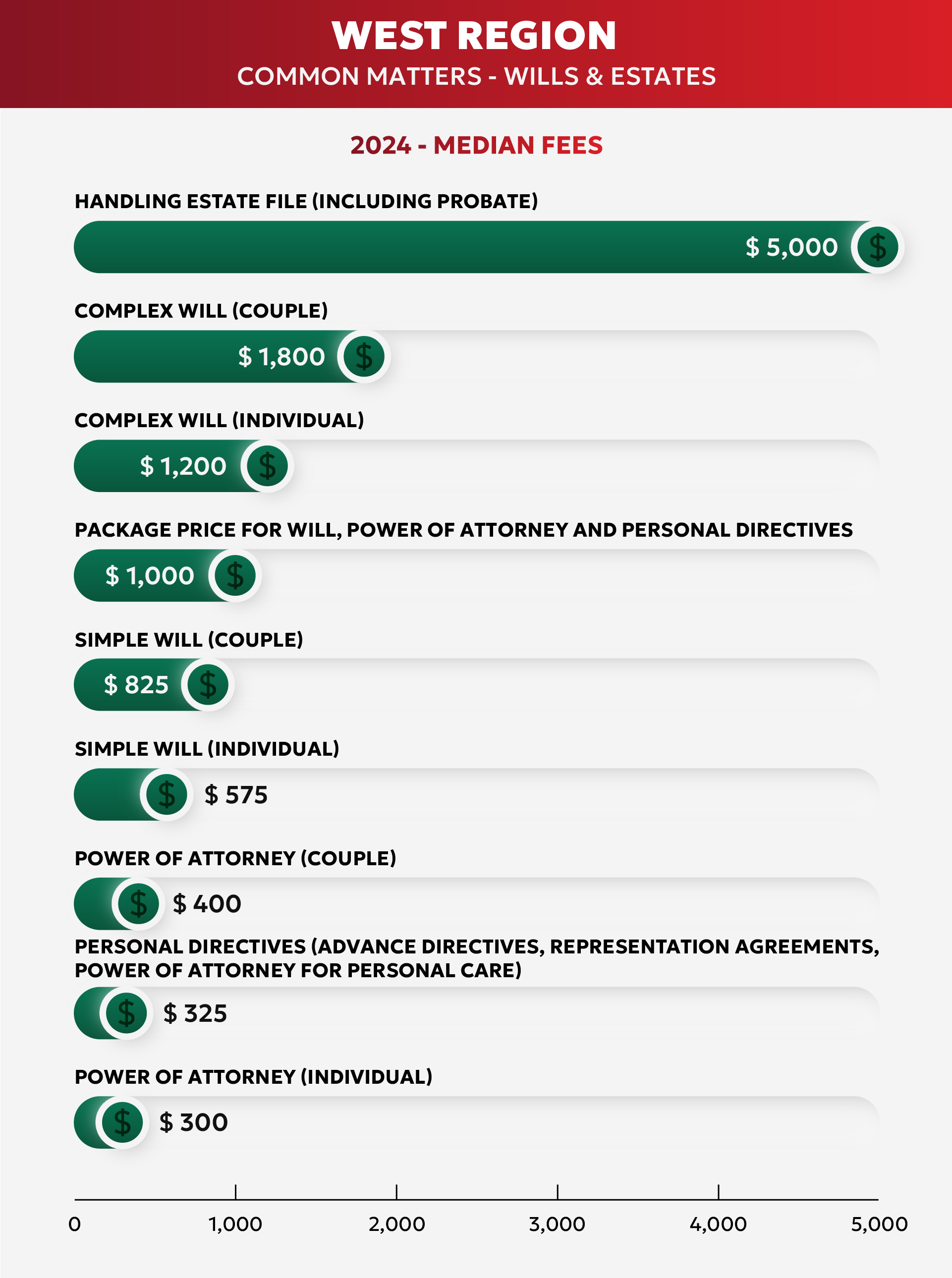

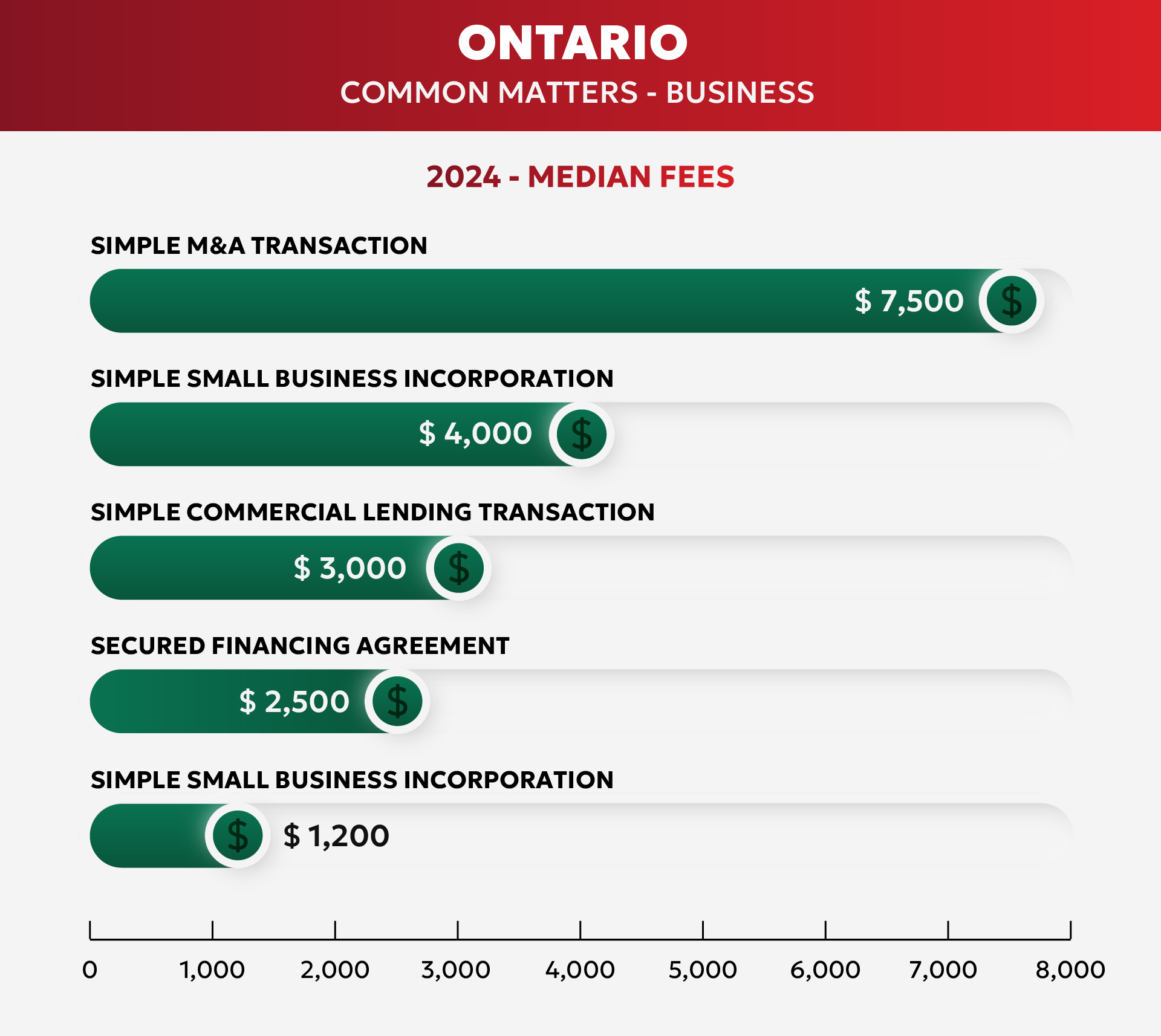
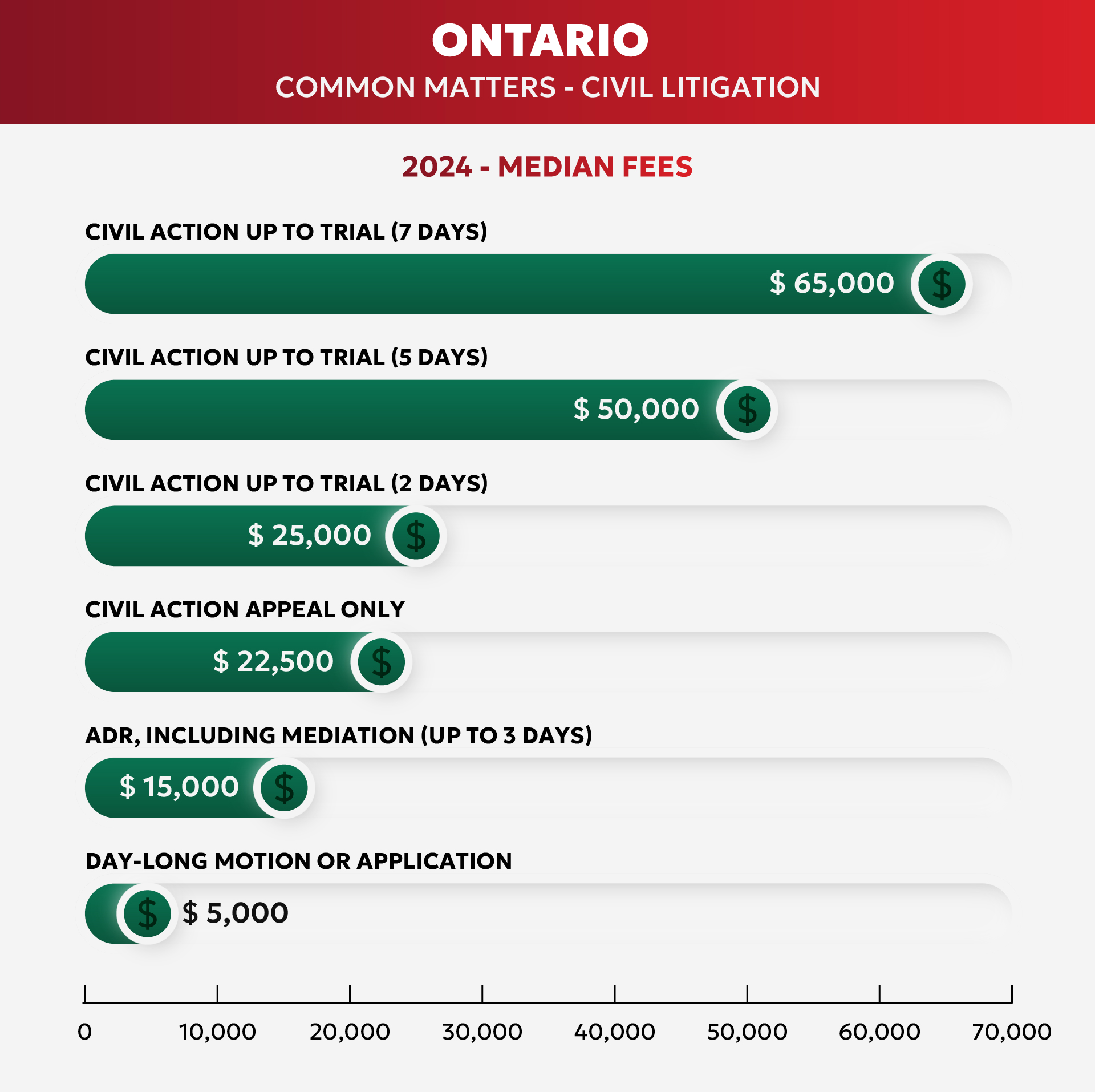
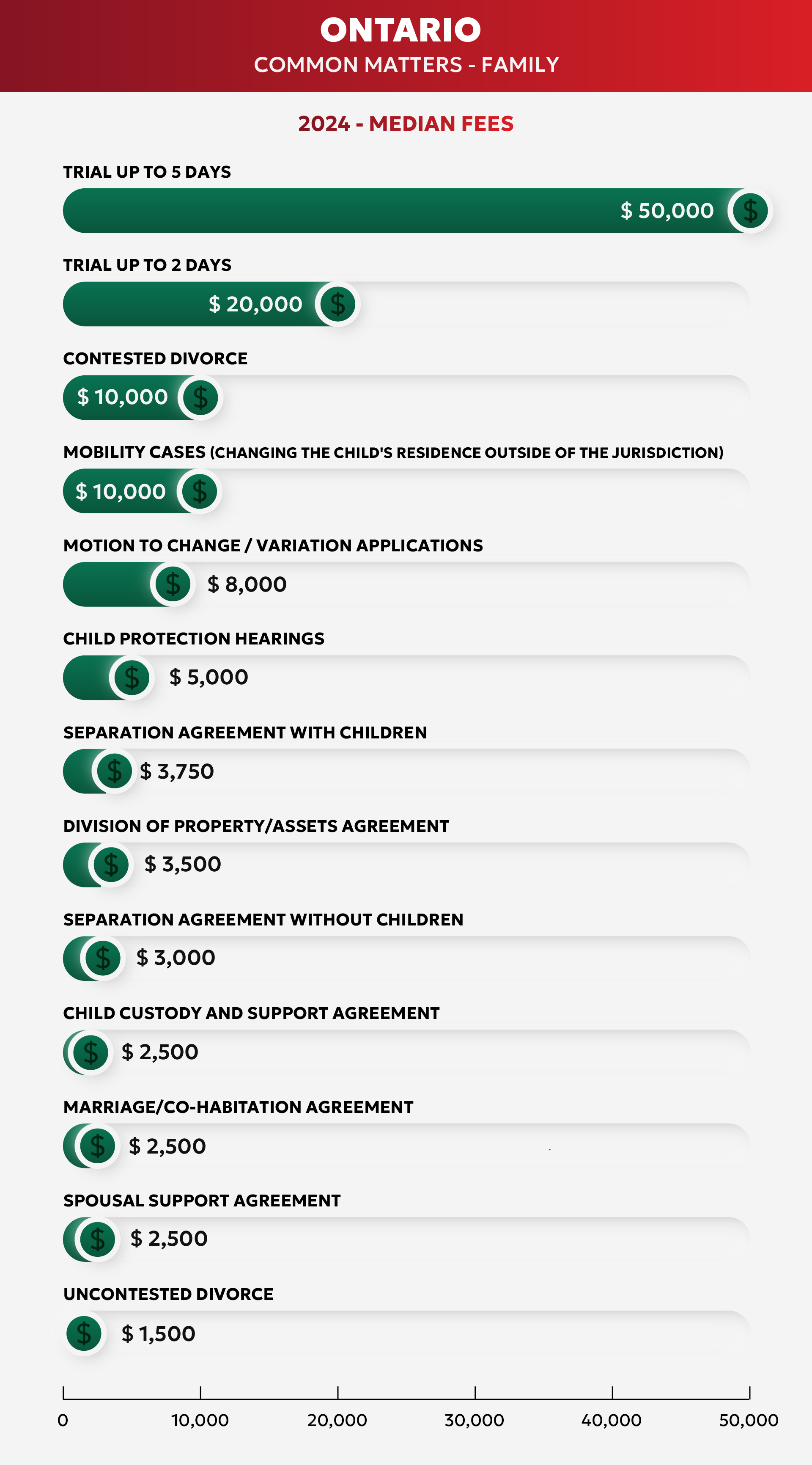

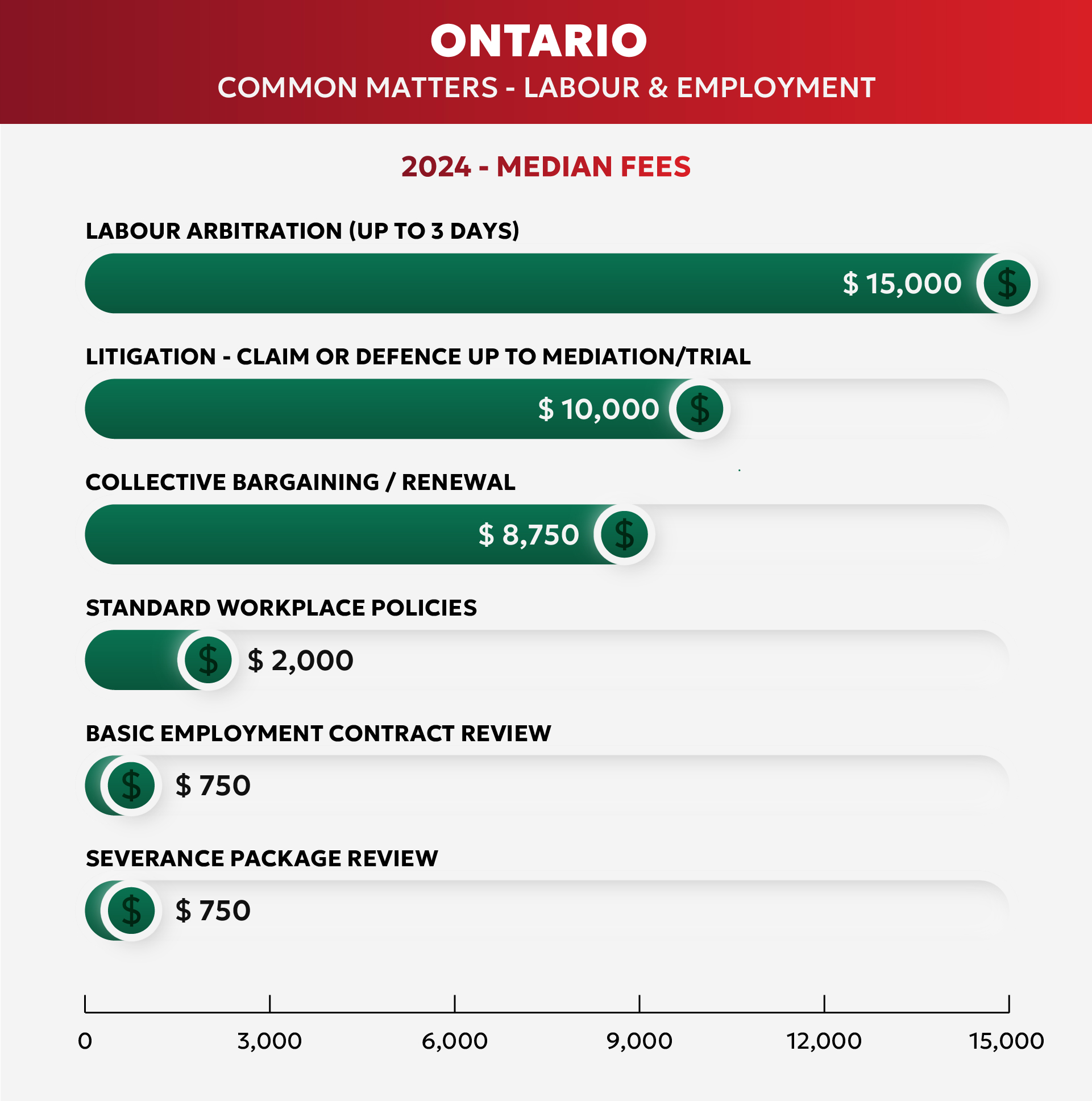
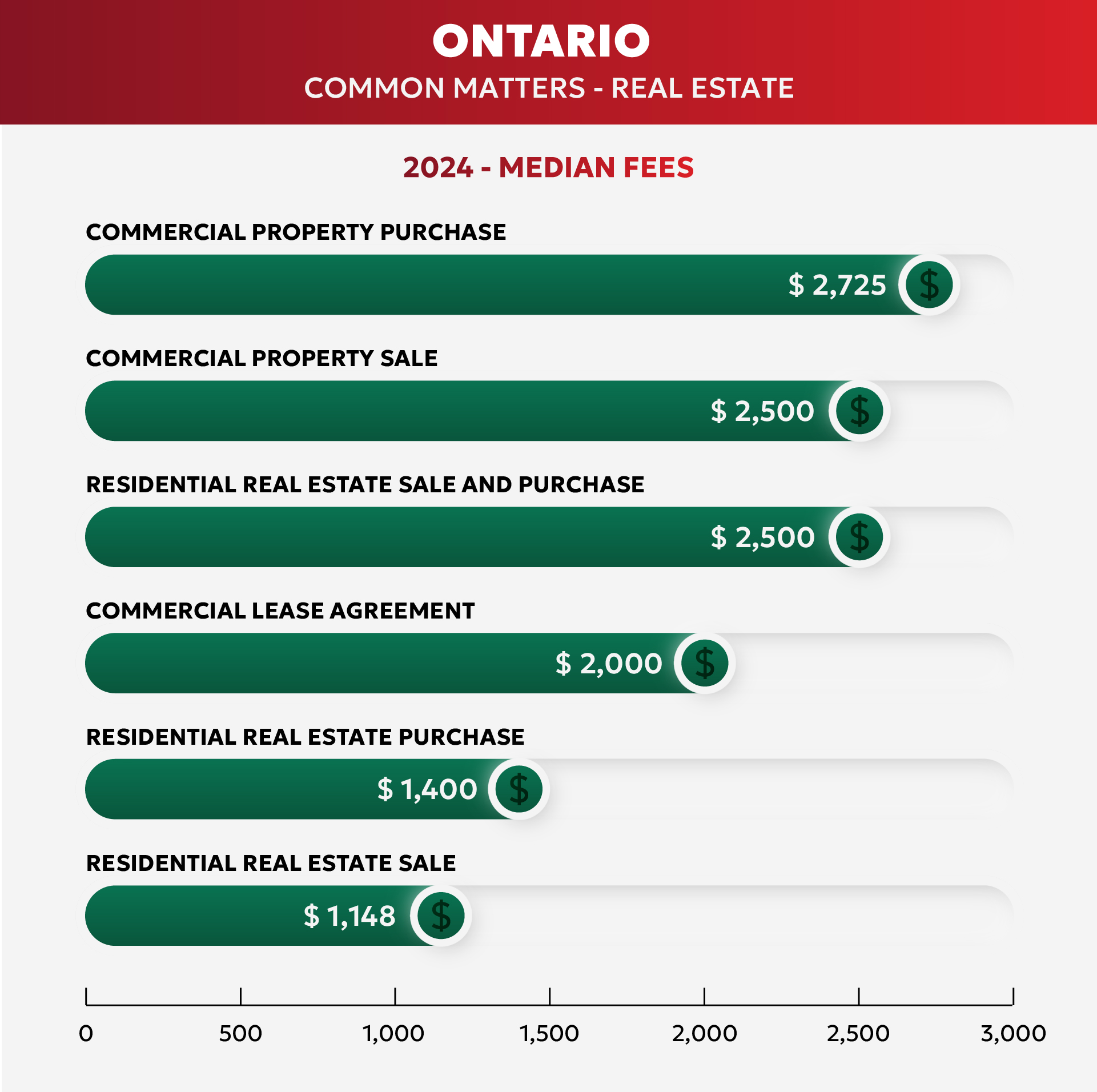
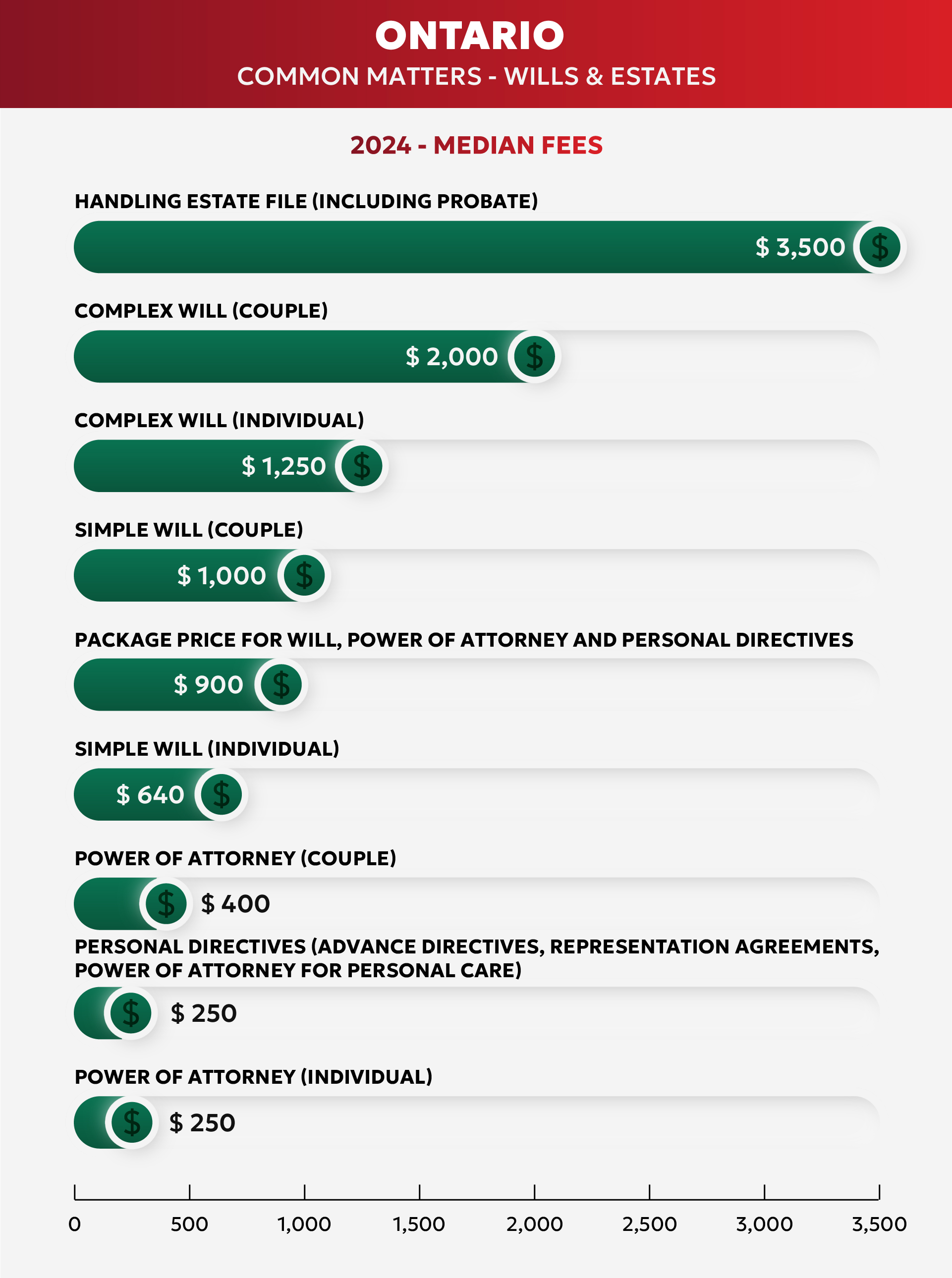
Given the global rise in the cost of living, it’s unsurprising that in 2024, 64 percent of firms had plans to increase fees compared to 2023. Meanwhile, only 1 percent had plans to decrease fees, and 35 percent had plans to keep fees the same, according to a Canadian Lawyer’s 2024 Legal Fee survey.
All fee changes are expressed as a percentage change in comparison to data from CL’s previous Legal Fee survey in 2020/2021, which previously saw a lower percentage of firms (53.02 percent) plan to increase fees from 2020 rates.
Legal fee types in Canadian law were divided into seven categories within common matters: business, litigation, family, immigration, labour and employment, real estate, and wills and estates.
Among these, real estate and wills and estates experienced the highest average fee increase for national firms, rising by 23 percent.
In contrast, simple M&A transactions and alternative dispute resolution (ADR), including mediation for up to three days, saw the most significant individual percentage increase since 2021, jumping by 50 percent.

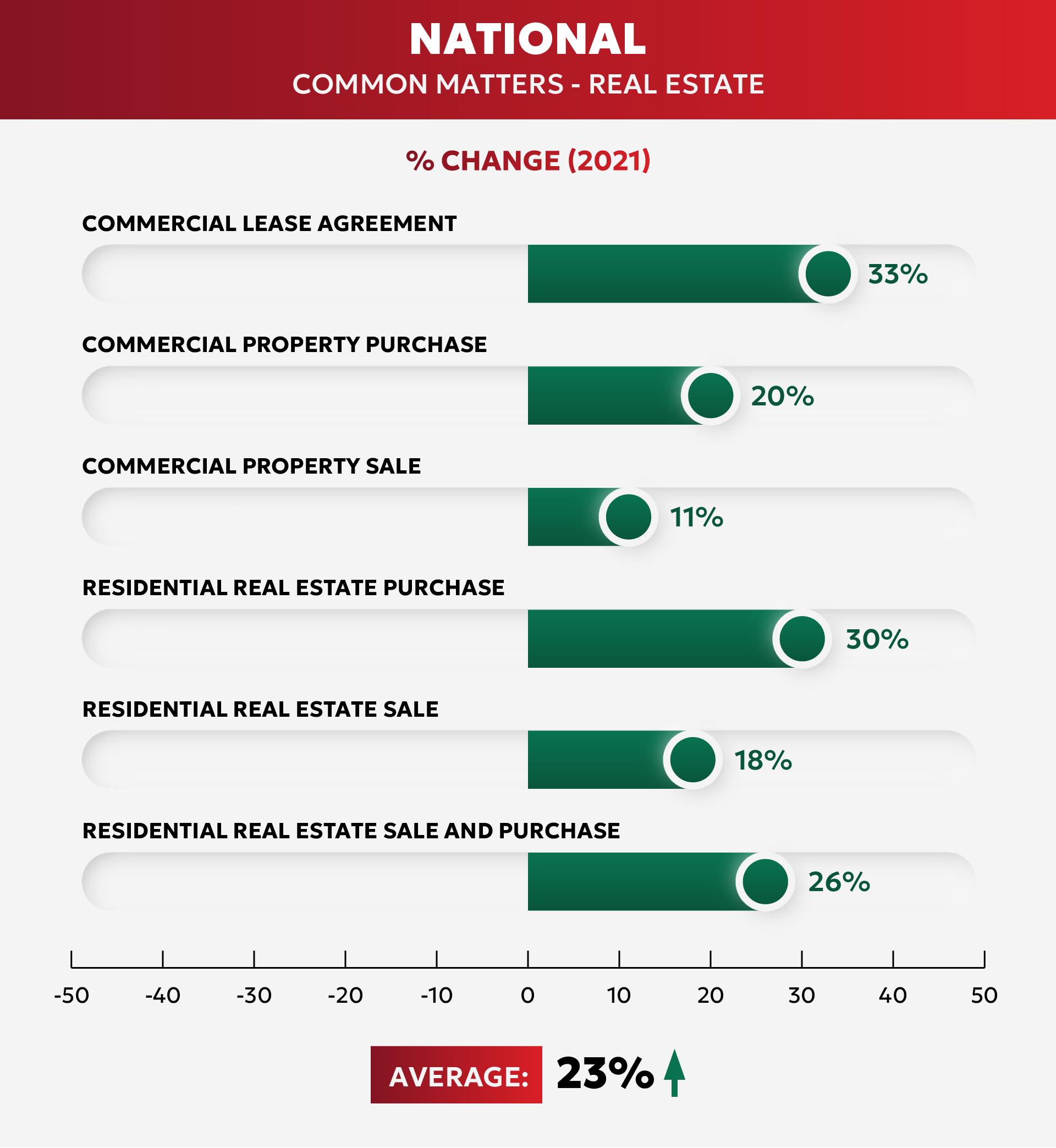
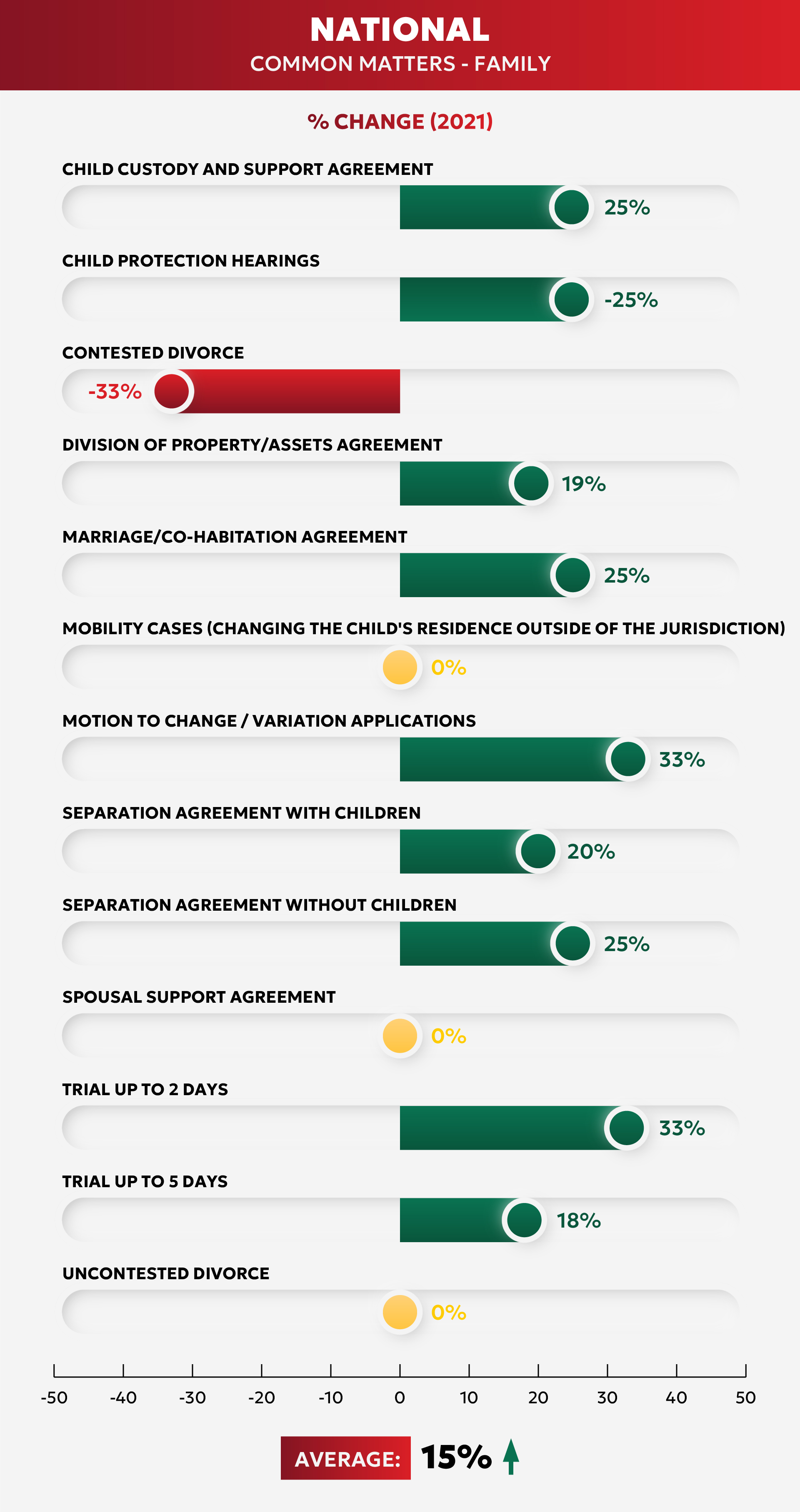
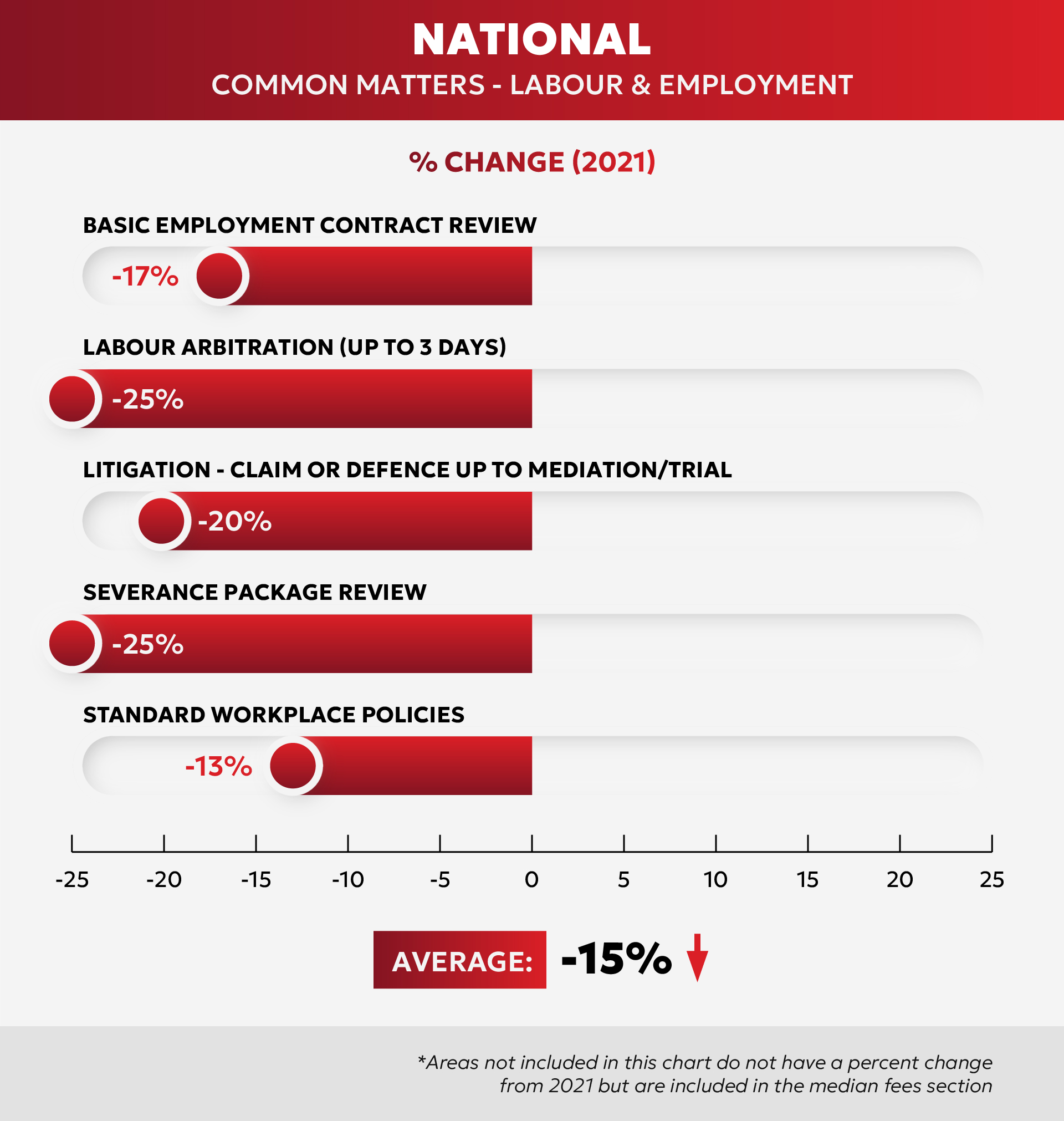
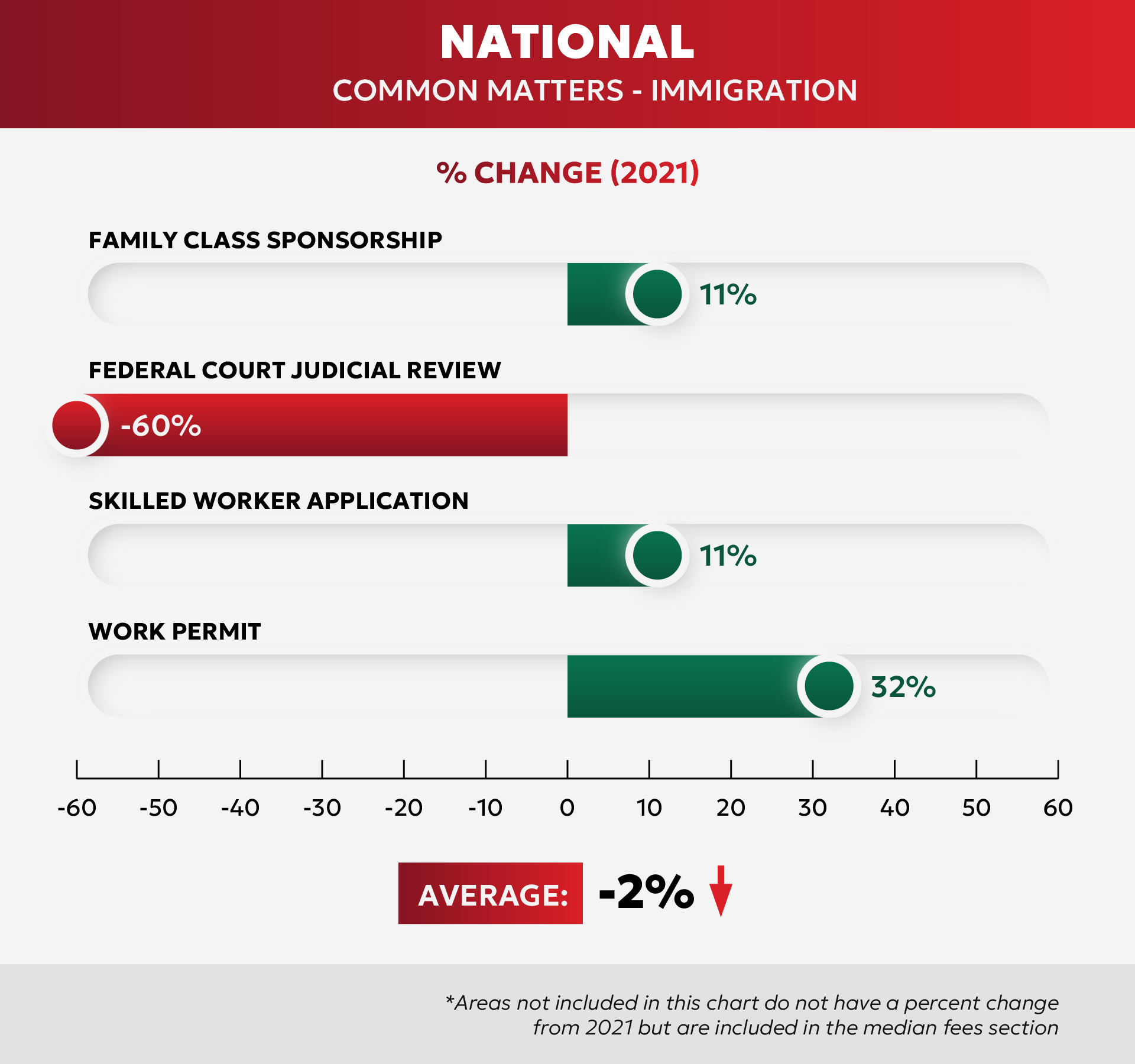
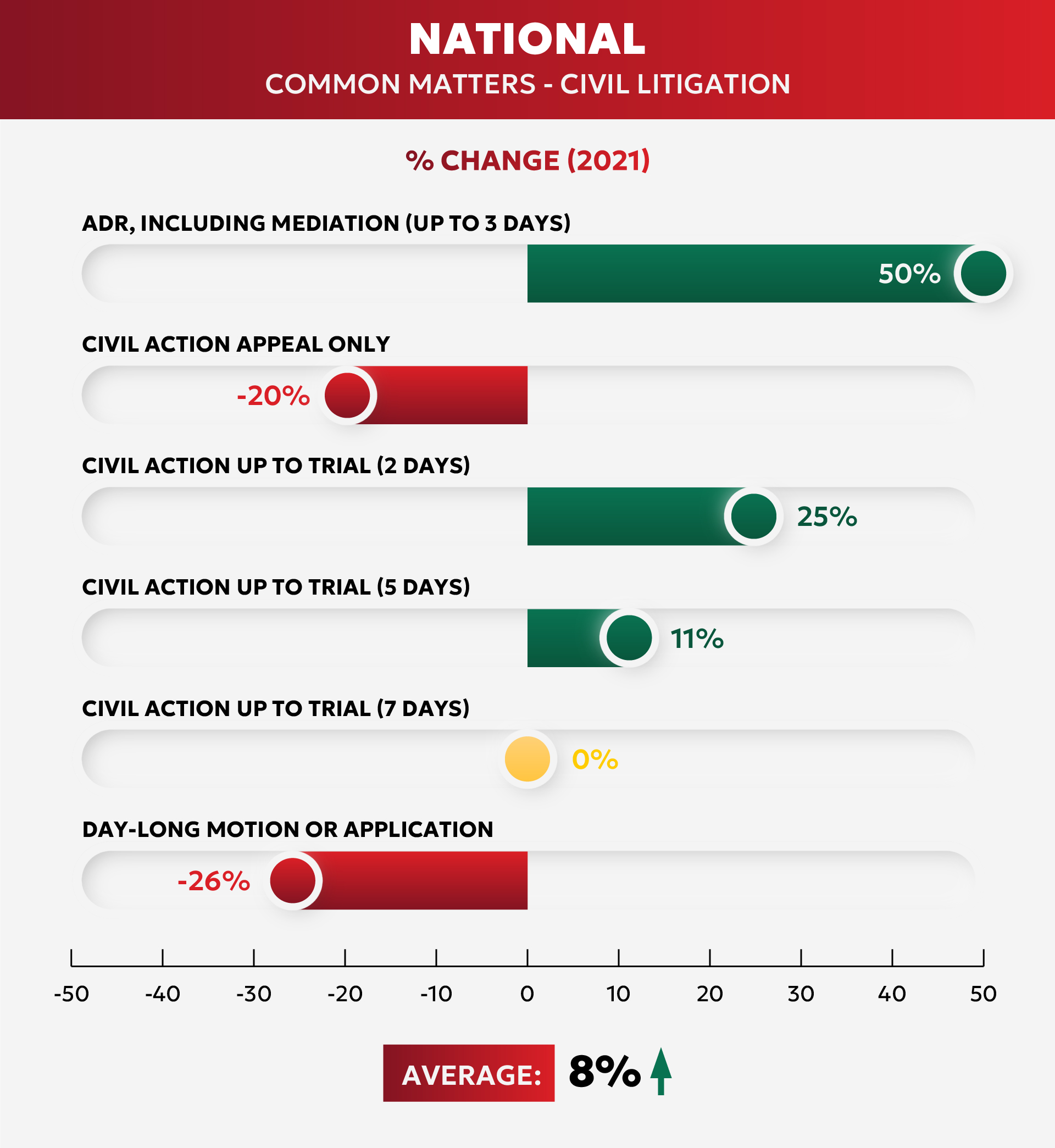
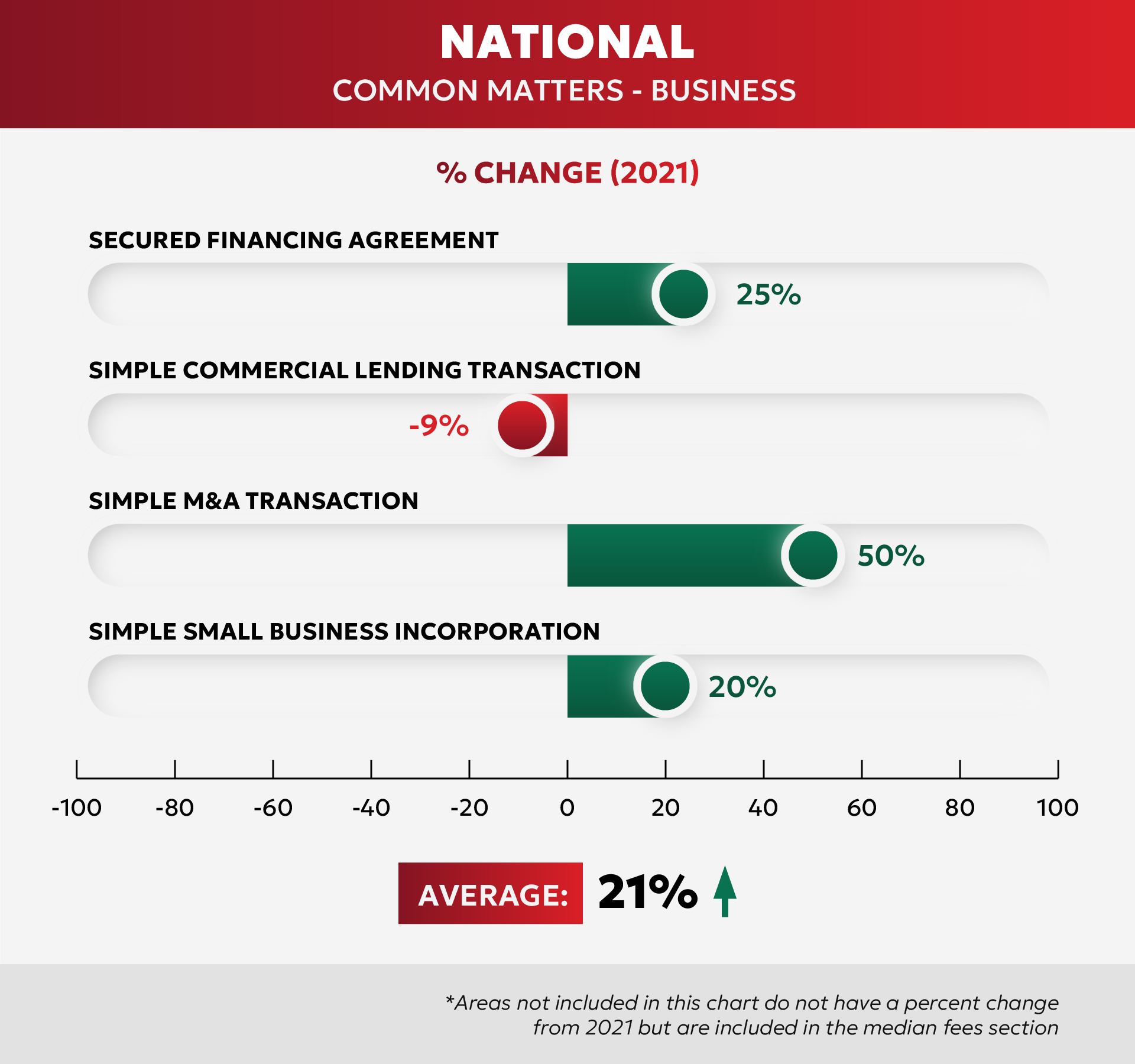
Wills and estates saw the highest practice area fee increase, at 43 percent, for medium-sized national firms with five to 25 lawyers. Much like their larger national counterparts, these firms also saw the greatest individual fee increase for ADR, including mediation (up to three days), at 90 percent.
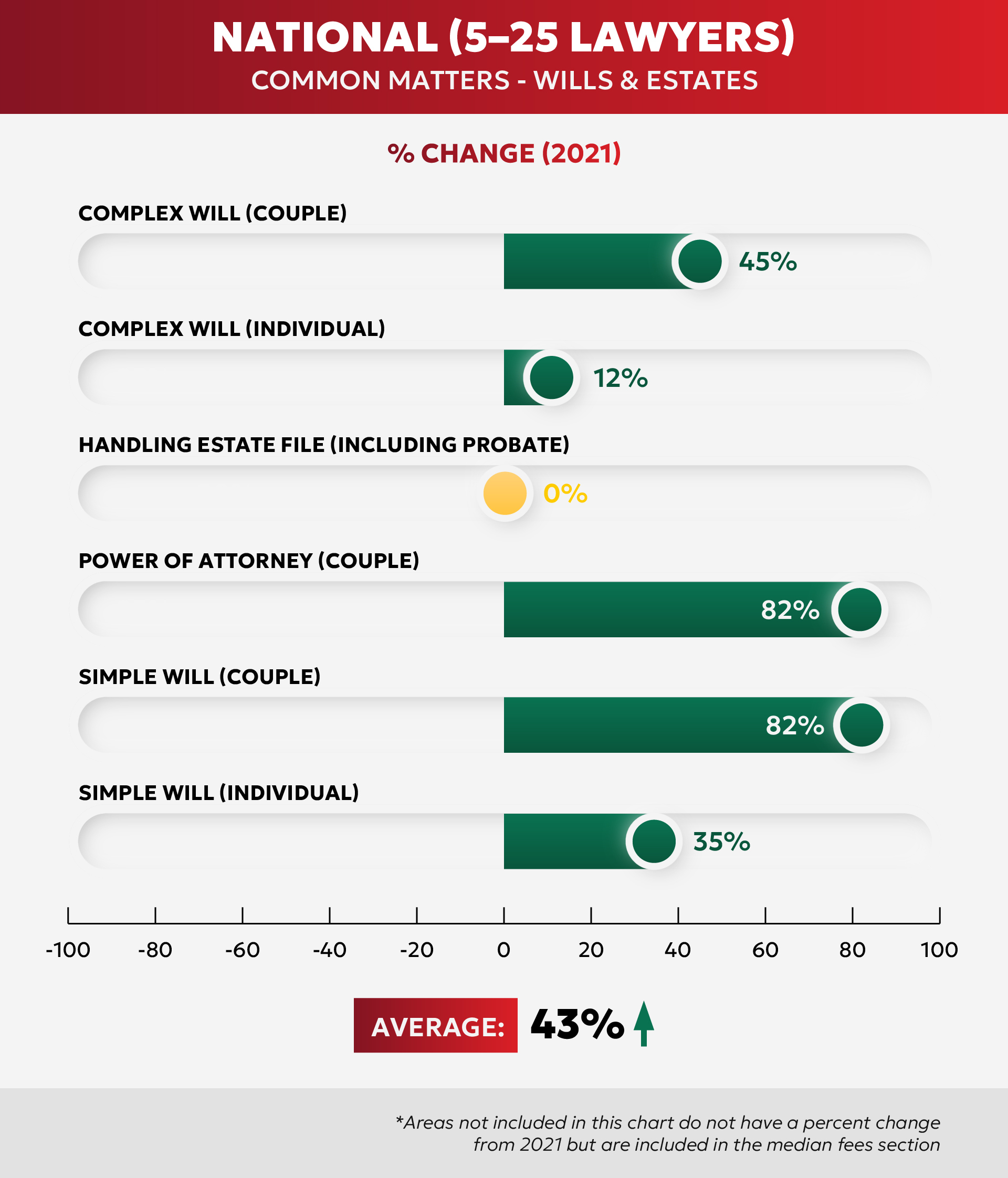
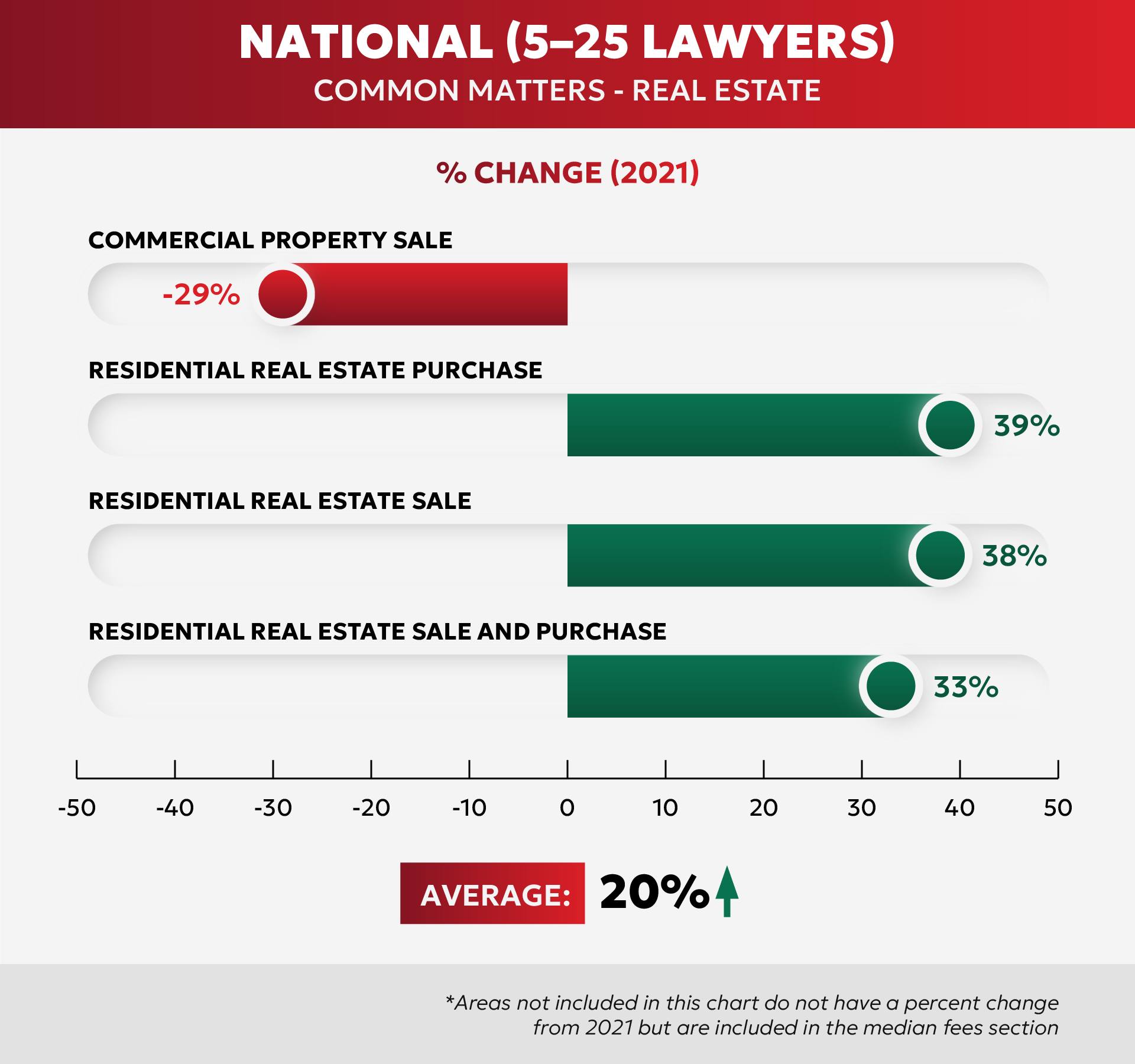
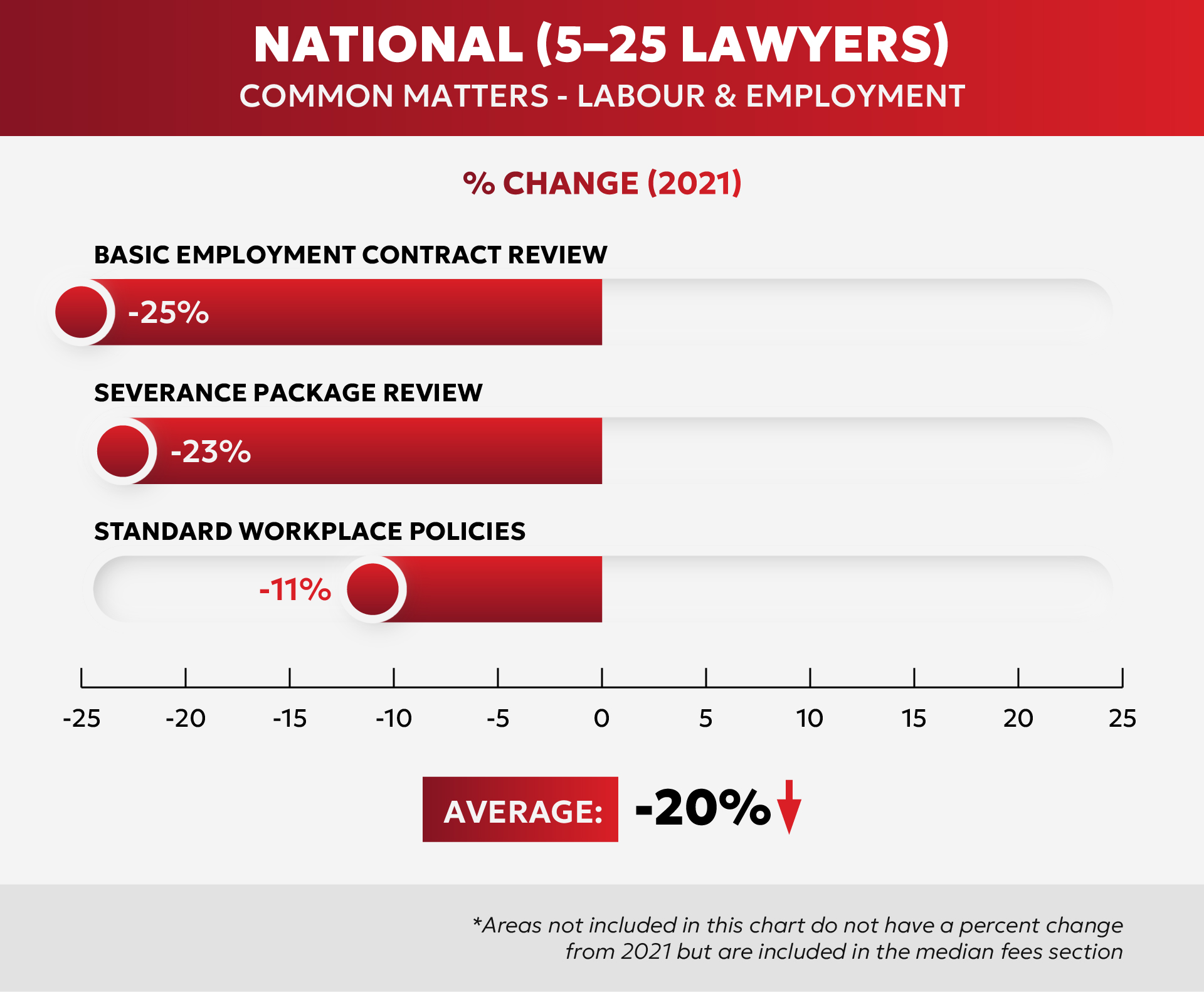
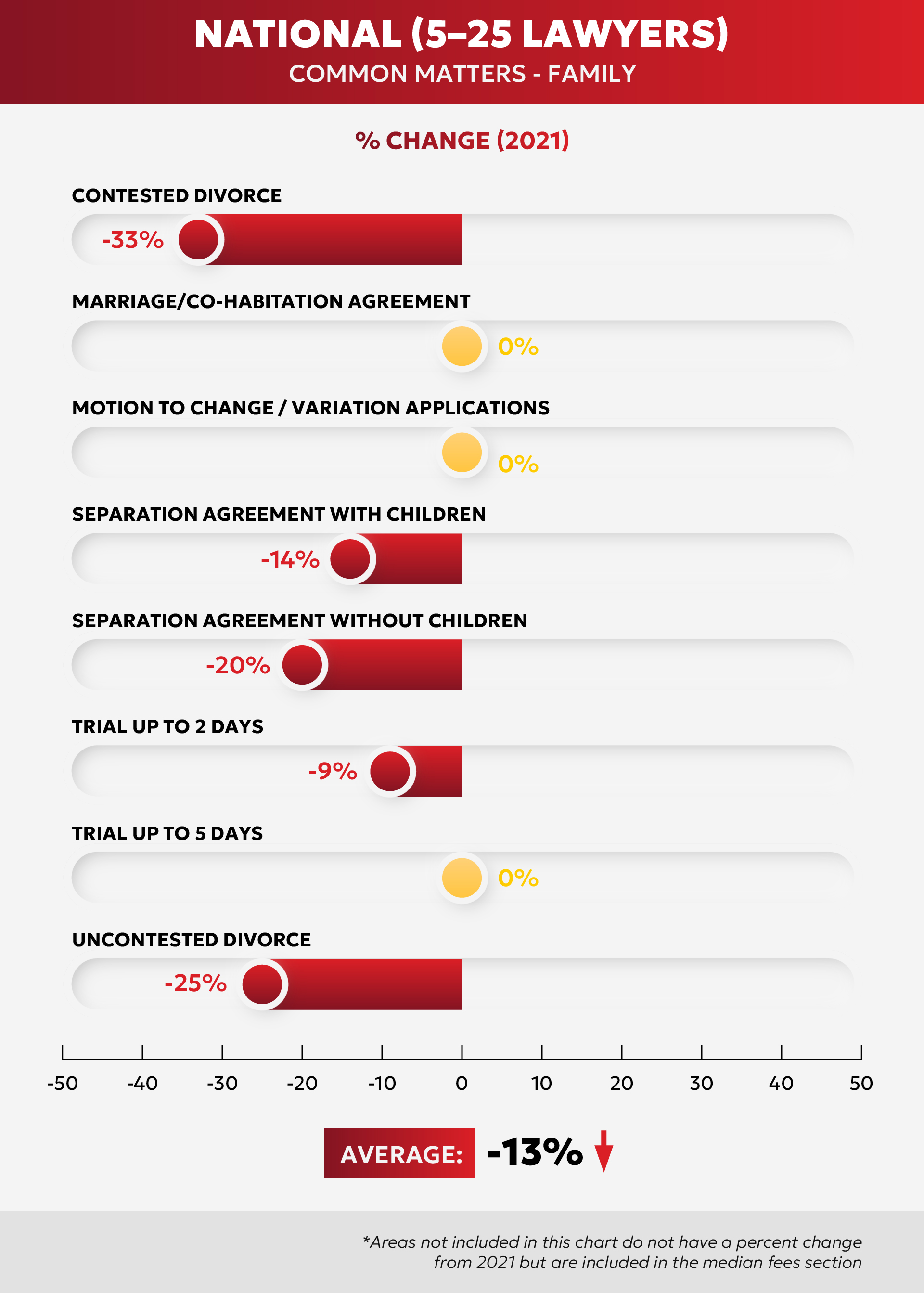
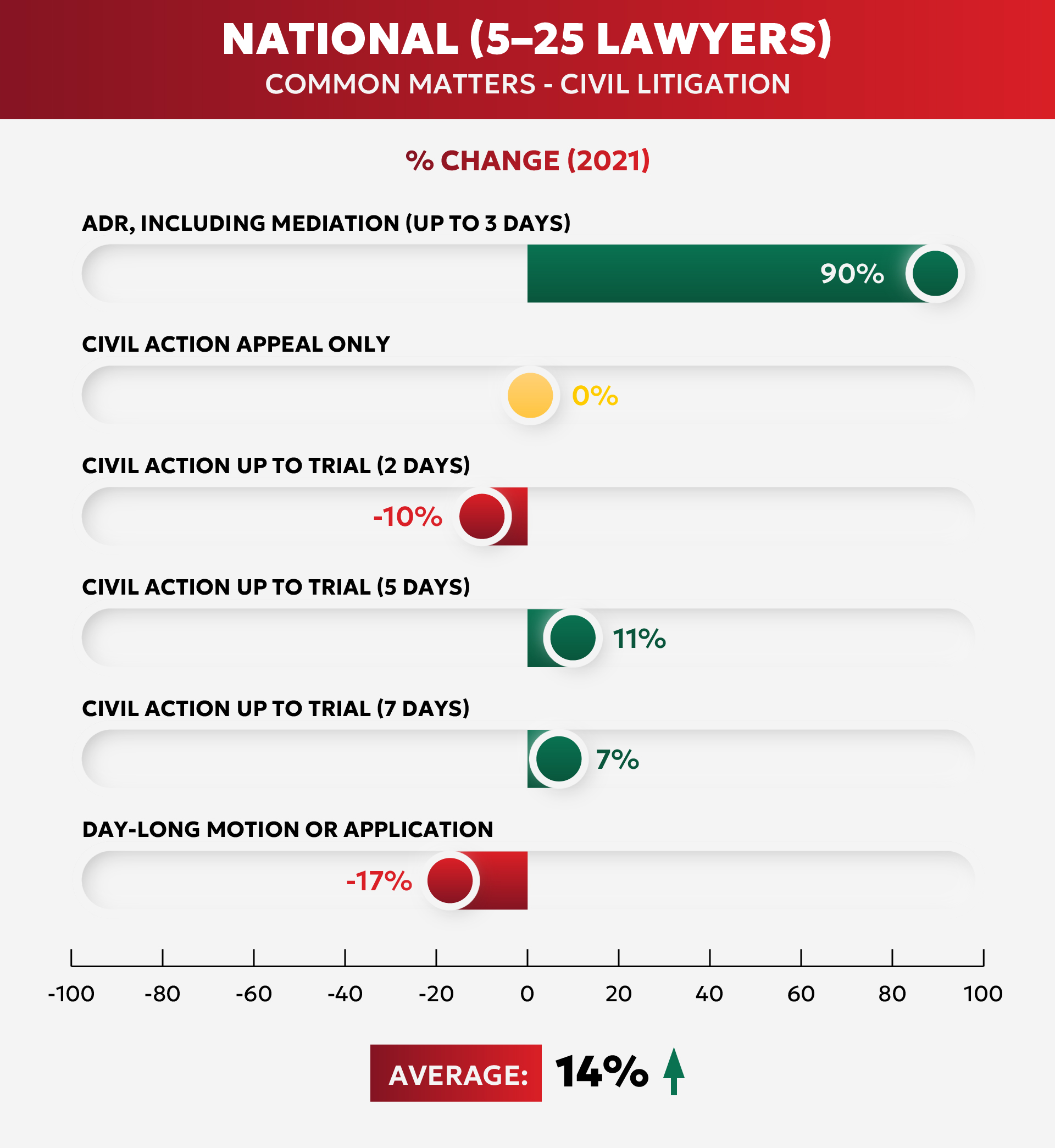
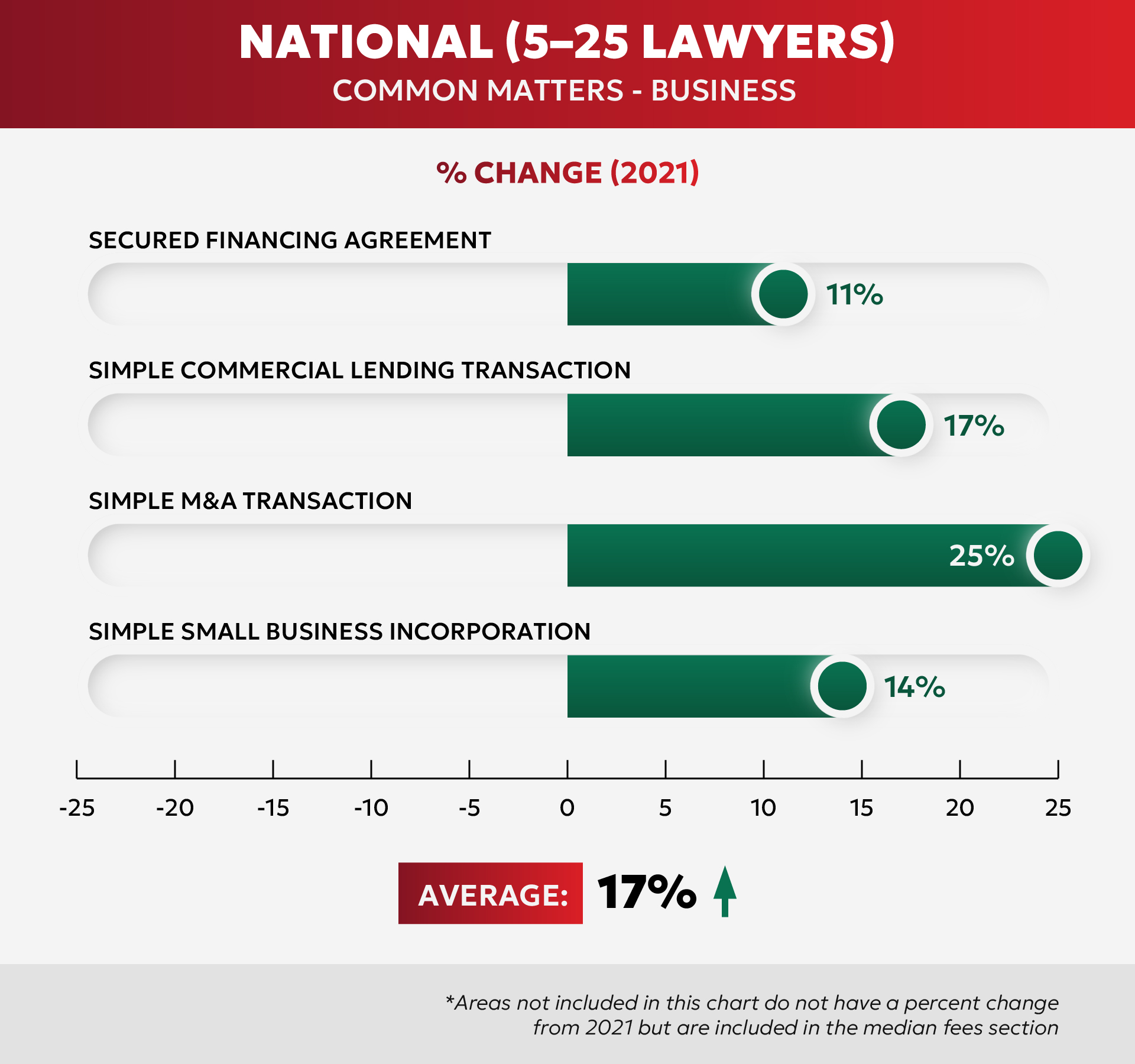
Meanwhile, smaller national firms with one to four lawyers saw the highest practice area percent change in family law, with a 45 percent increase.
Secured financing agreements for firms with one to four lawyers increased by 135 percent. Despite this large increase, these fees remain below those of their medium and large counterparts.
Small firms also saw substantial fee increases for child protection hearings and motion to change/variation applications, at 127 percent and 114 percent, respectively.
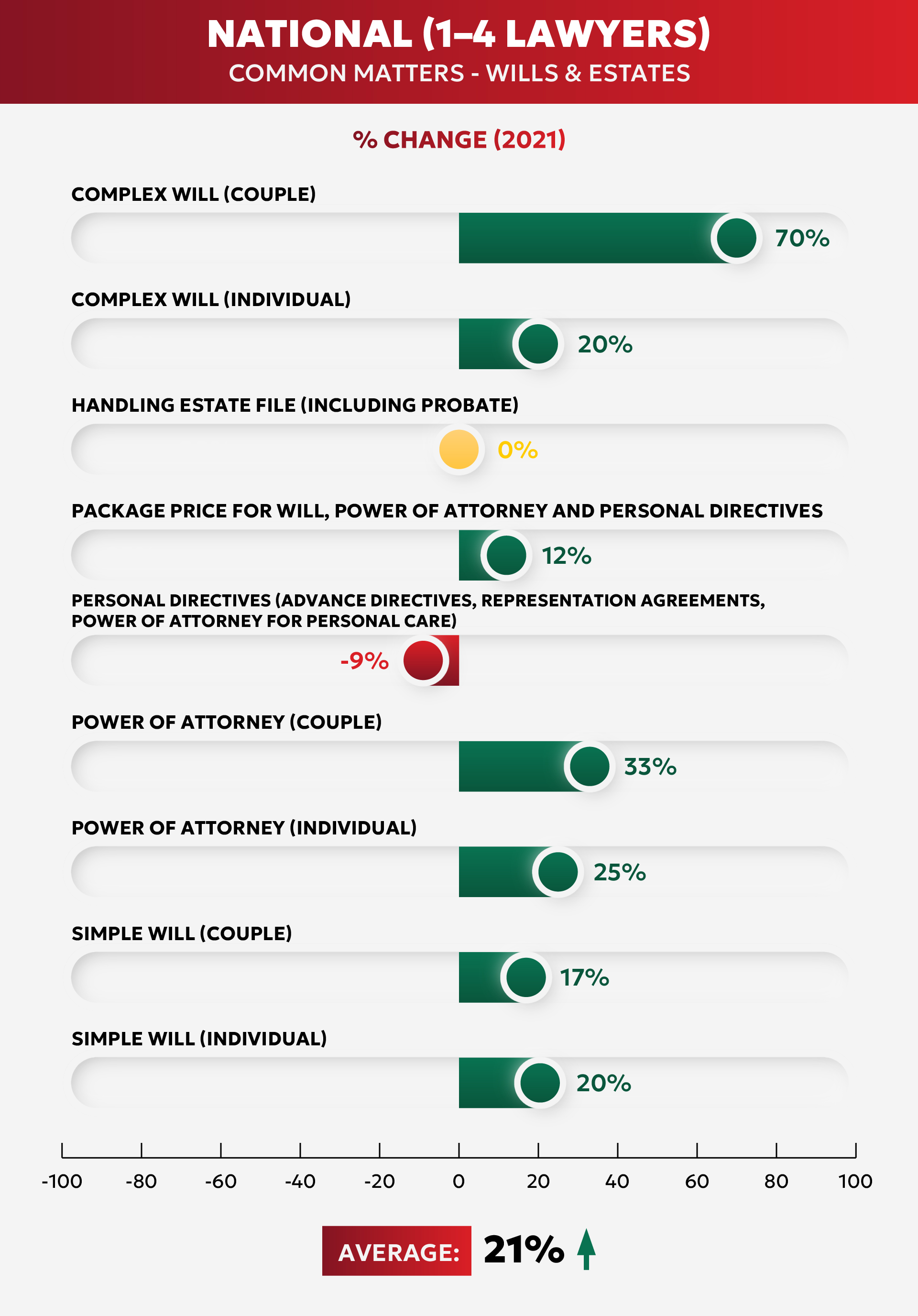
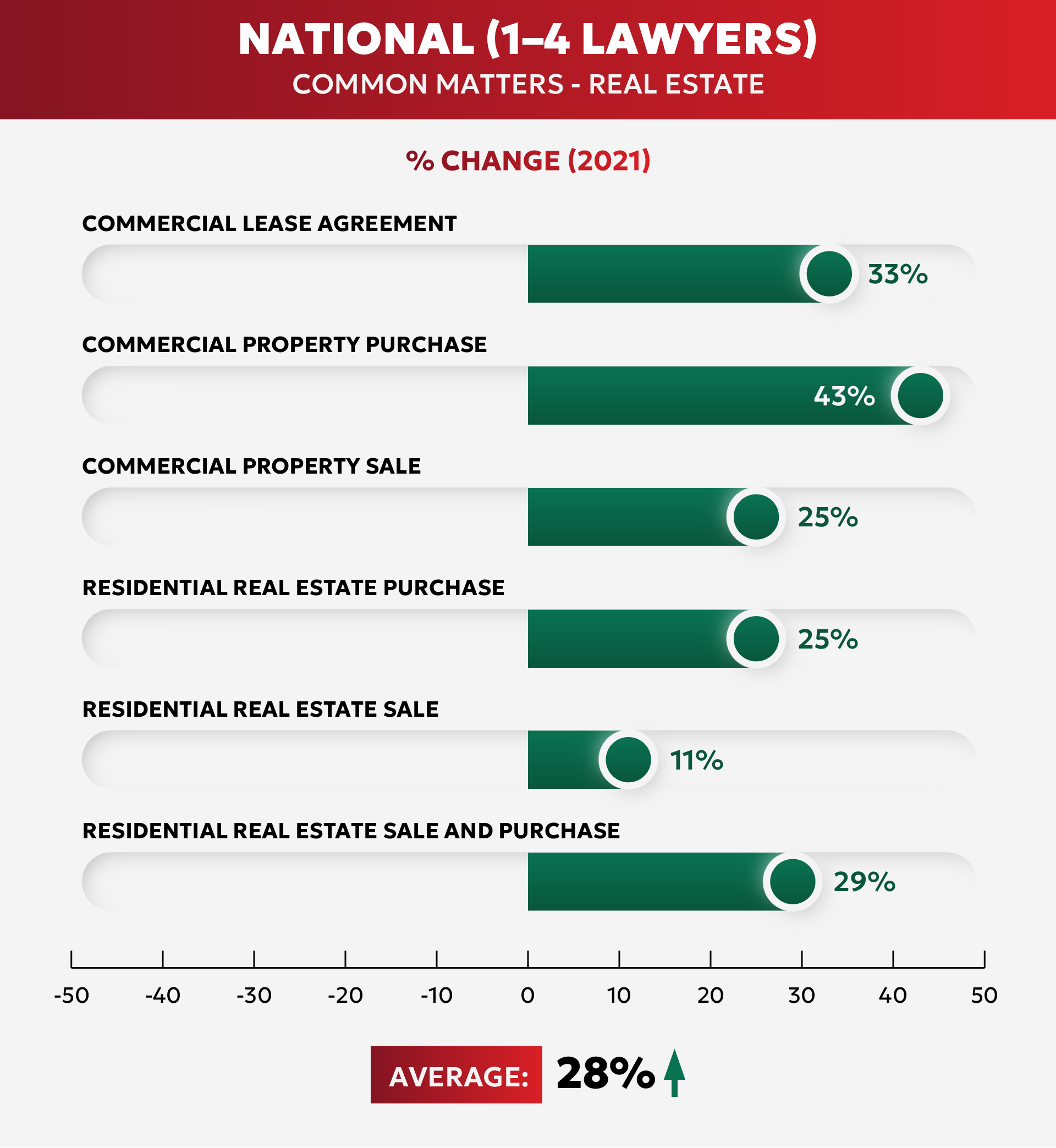
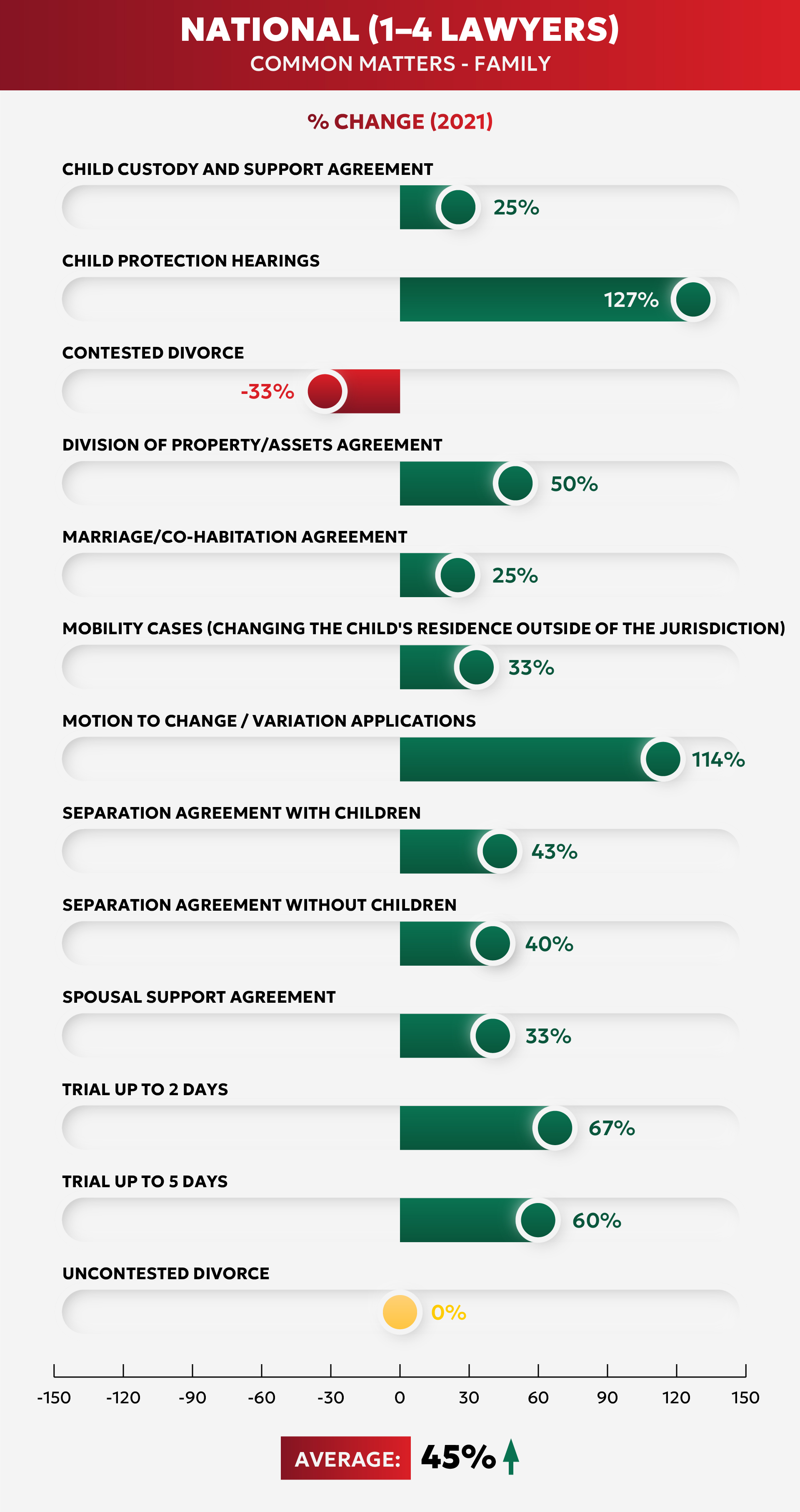
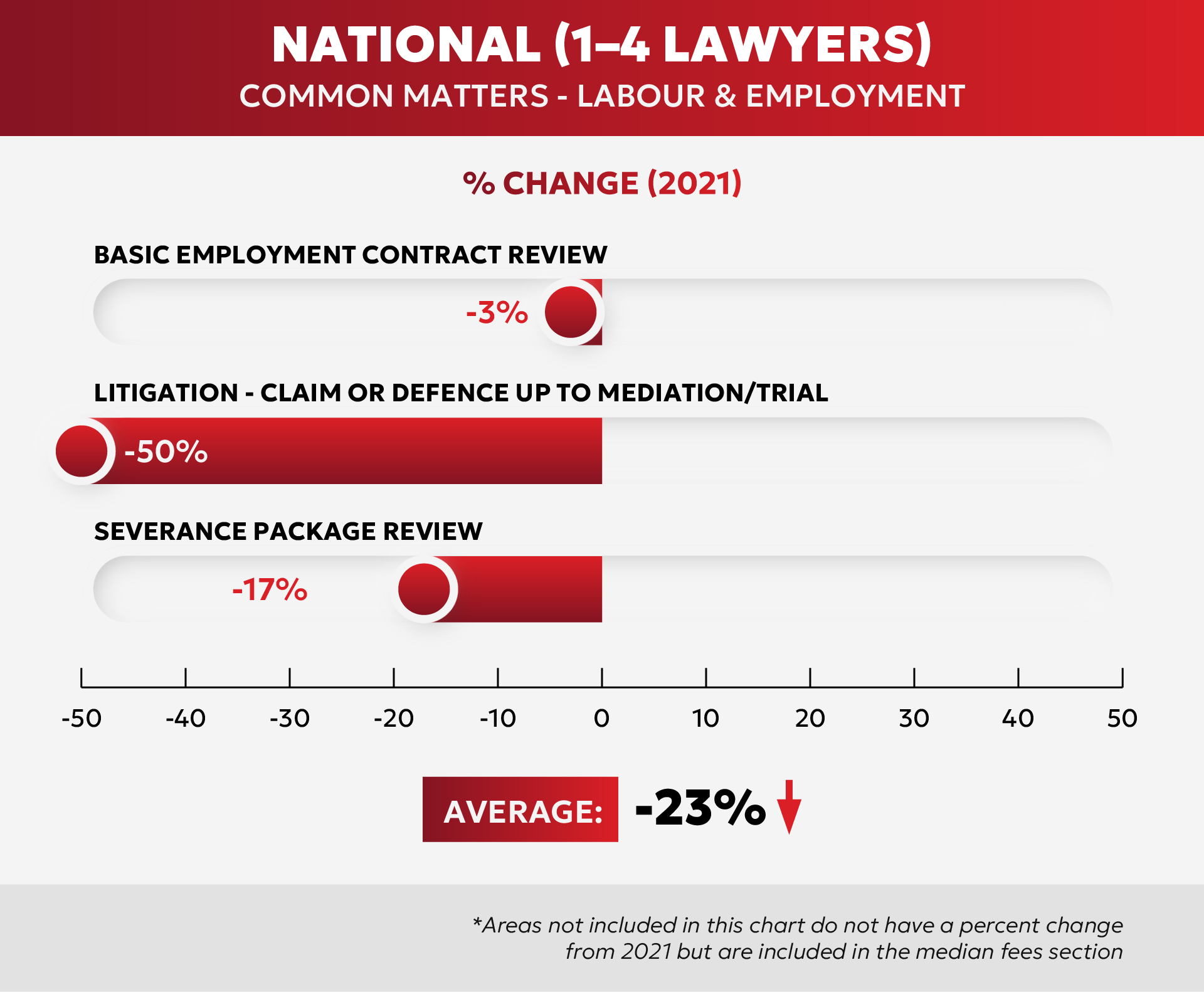
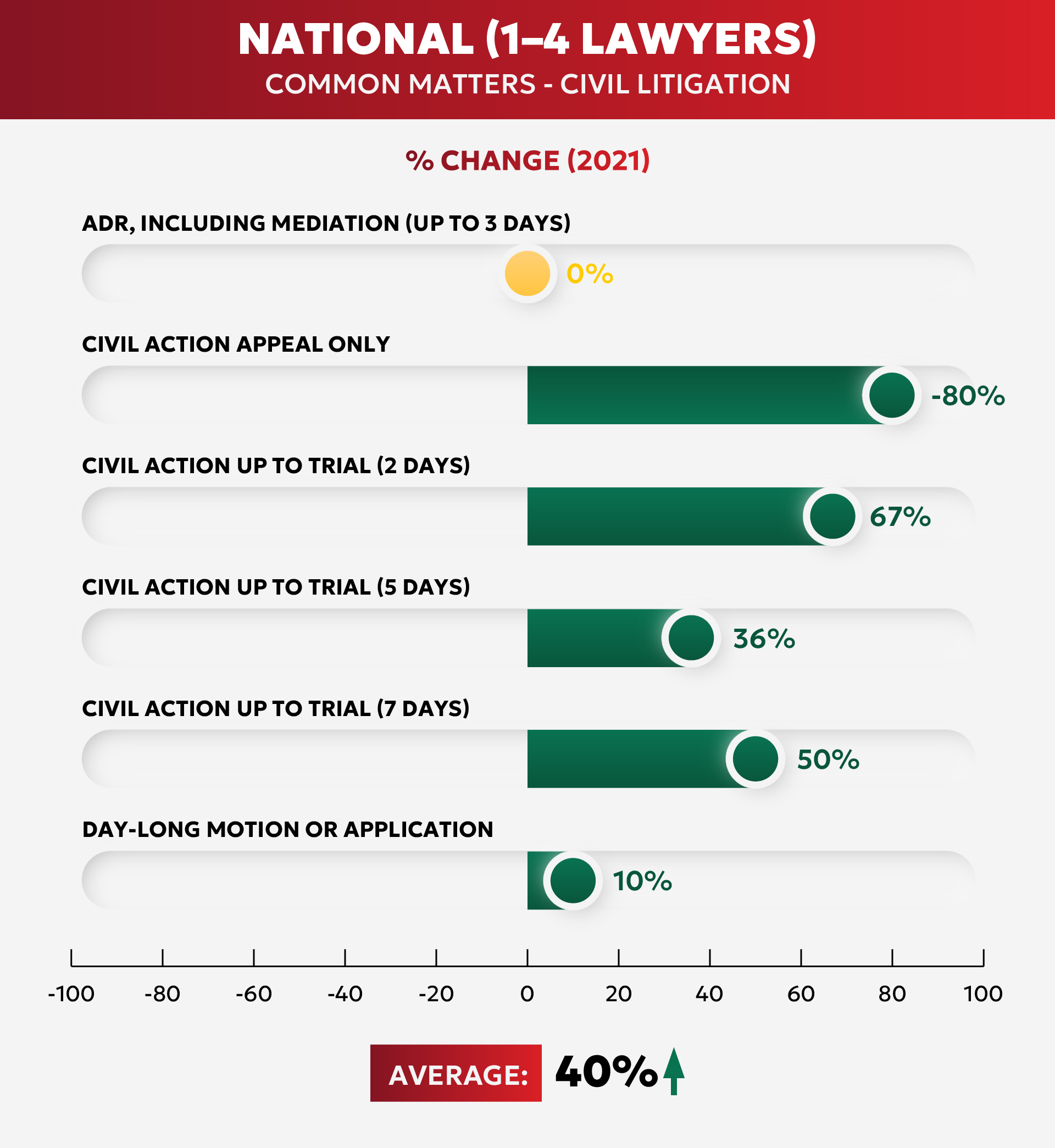
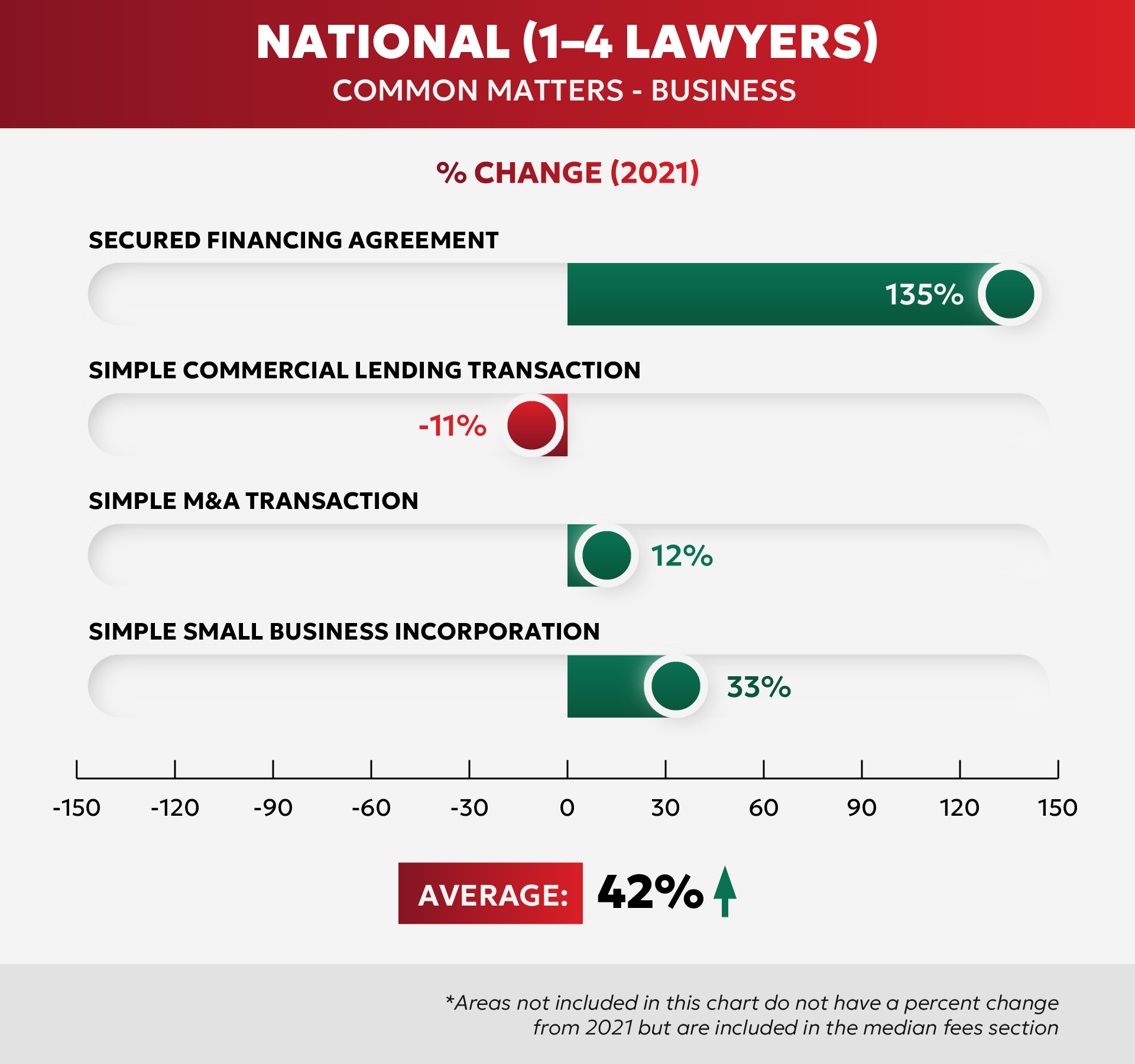
The average percent changes since 2021 show that the majority of practice areas saw an average increase in fees, with fewer seeing an average decrease.
While fees in most practice areas have increased since 2021, labour and employment law saw consistent decreases across all firm sizes. National firms saw a 15 percent decrease in this category, national firms with five to 25 lawyers saw a 20 percent decrease, and national firms with one to four lawyers saw a 23 percent decrease.
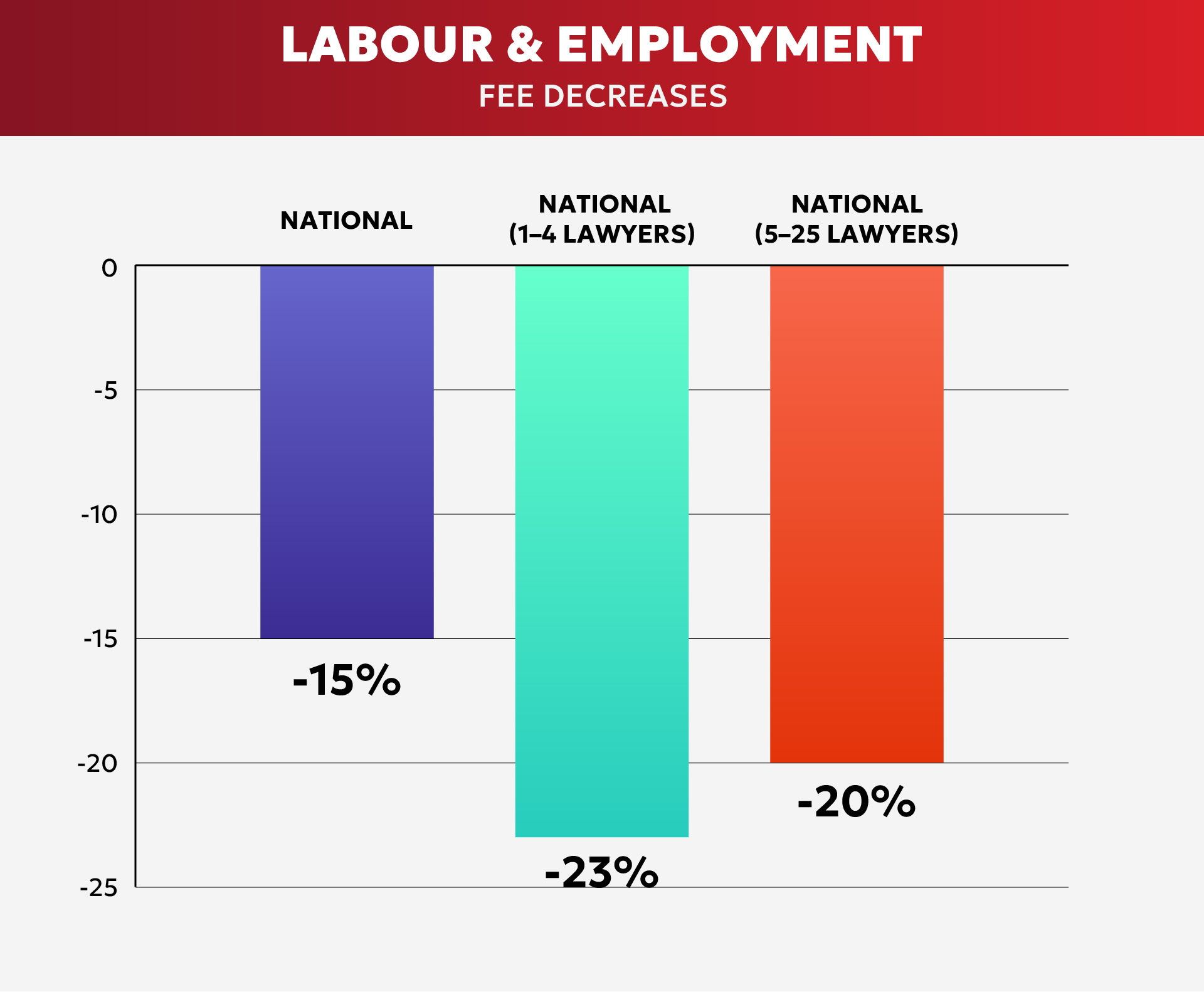
One potential explanation for this decrease could be that only 4 percent of firms reported labour and employment as their biggest practice area in terms of revenue – a decrease from 5.1 percent in 2021. This suggests that as labour and employment law becomes a lesser component of revenue, fees are decreasing accordingly.
The only other fee type to see a decrease across all three firm sizes was contested divorce, which saw a consistent decrease of 33 percent for all firms.
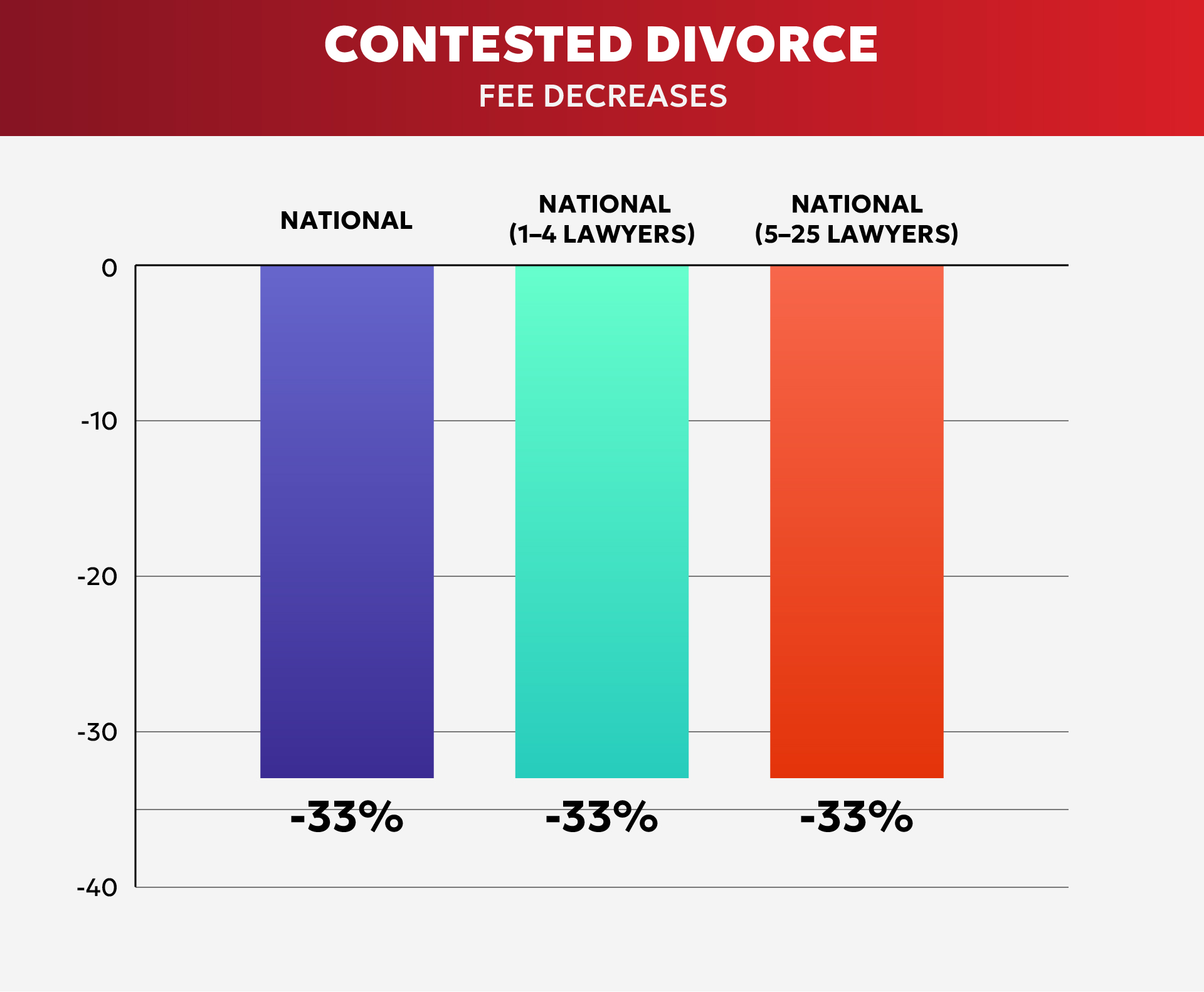
For national firms, the fee type that saw the greatest decrease since 2021 was Federal Court judicial review for immigration, which decreased by 60 percent.
In comparison, national firms with five to 25 lawyers saw the highest percent decrease for contested divorce cases, with this fee type declining by 33 percent.
National firms with one to four lawyers saw the greatest percent decrease in fees for labour and employment litigation matters (claim or defence up to mediation/trial) with a decrease of 50%. The 2024 median fee for this firm size and fee type was $5,000. Meanwhile, national firms and national firms (five to 25 lawyers) charged their clients double that, with a median fee of $10,000.
Despite a general trend of increasing legal fees across the country, the majority of survey respondents reported no change in their staffing levels in 2023, suggesting that fees are increasing to accommodate factors such as the rising cost of living rather than an expanded workforce.
In fact, 81 percent of firms reported no change in their number of partners, while 13 percent reported an increase and 6 percent reported a decrease. These numbers were consistent with the number of other lawyers at a firm, with 62 percent reporting no change, 26 percent reporting an increase, and 12 percent reporting a decrease.
Similarly, in 2020, the majority of firms reported no change in the number of partners (61.6 percent), other lawyers (53 percent), and other staff (48.5 percent). Interestingly, the percentage of firms experiencing no staff changes has increased since 2020, suggesting other factors may be at play when it comes to rising legal fees.
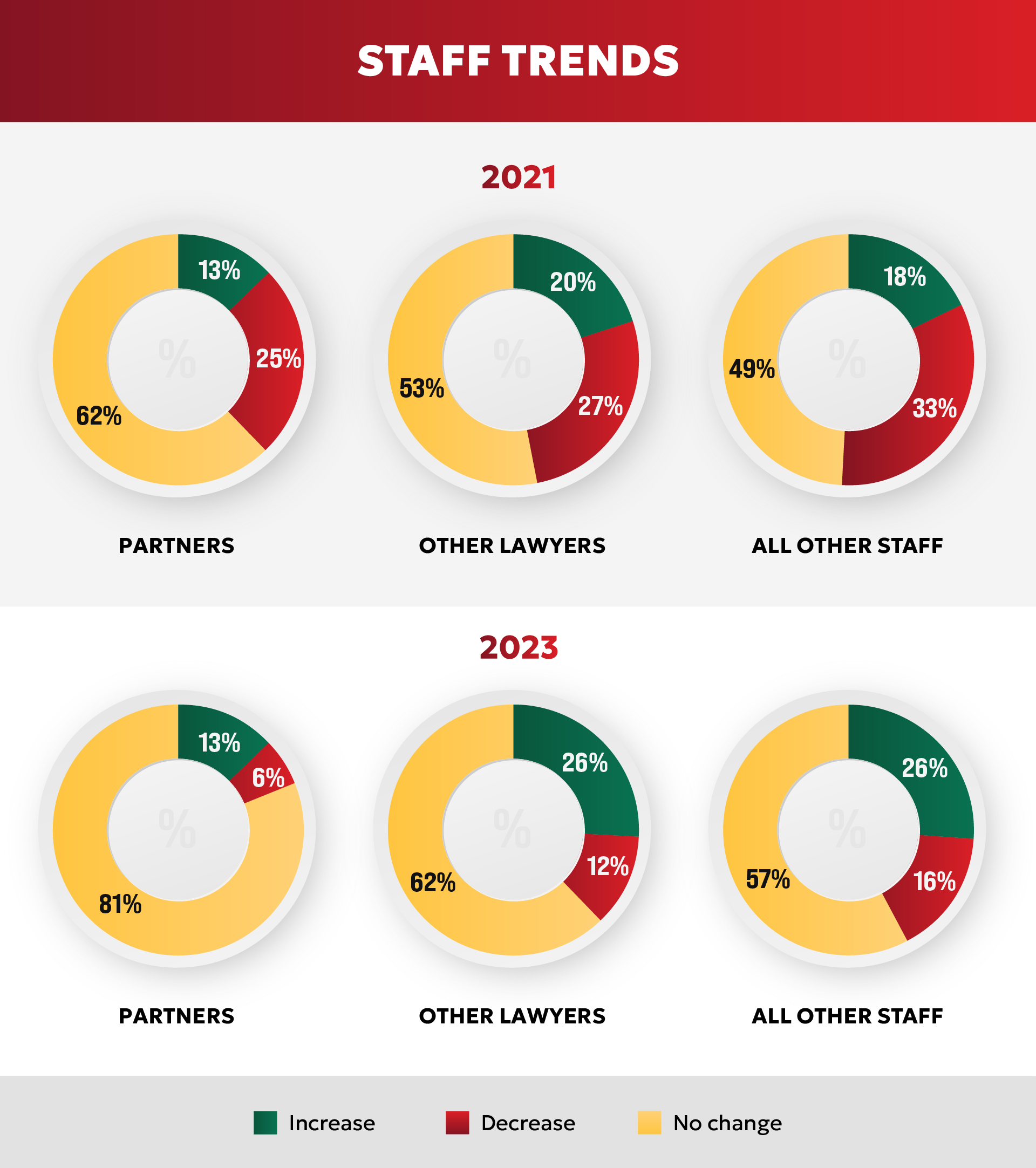
With inflation rates and the cost of living increasing across the country, there is no doubt about the impact this is having on rising legal fees.
According to Michael Clark, partner at Korman and Company, whose firm reported planning to increase fees between six percent and 10 percent, increases are largely due to salaries rising in proportion to inflation.
“With inflation comes increased demands from staff for salary increases, and we’re having to slightly increase our base legal fees in order to cover that increase to staff salaries,” Clark said. “We have to keep up with what the salaries our competitors are offering employees, and, overall, we’re seeing an increase in salary demands, particularly in Toronto.”
The Consumer Price Index (CPI) rose 1.6 percent on a year-over-year basis in September. Although the rate at which prices are increasing has slowed, price levels remain elevated. Compared with September 2021, the CPI rose 12.7 percent in September. Canadians continue to feel the impact of higher price levels for day-to-day basics such as rent (+21.0 percent) and food purchased from stores (+20.7 percent), which increased during that same three-year period, according to Statistics Canada. This ultimately supports the notion that salaries are increasing in conjunction with rising prices for everyday necessities.
Most of the salary increases in the legal sector have primarily benefited junior staff, according to Impact Recruitment’s 2024–25 legal salary guide.
In Toronto, junior staff have seen modest pay raises in response to inflation, highlighting a growing focus on improving compensation for junior roles.
Support roles, such as paralegals, have seen significant salary growth in regions like British Columbia, with top-end salaries reaching $90,000–$130,000. Lawyer salaries have experienced similar increases in certain high-demand areas, such as commercial real estate, litigation, and estate planning, with salaries for low-demand areas remaining consistent with previous years.
Data aggregated from multiple sources, including Robert Half and Hays, shows the average salaries for lawyers, based on experience level, across five Canadian cities. In Calgary, Toronto, Montreal, Ottawa, and Vancouver, the average salary for legal professionals ranges from $100,000 for first-year lawyers to over $220,000 for chief legal officers.
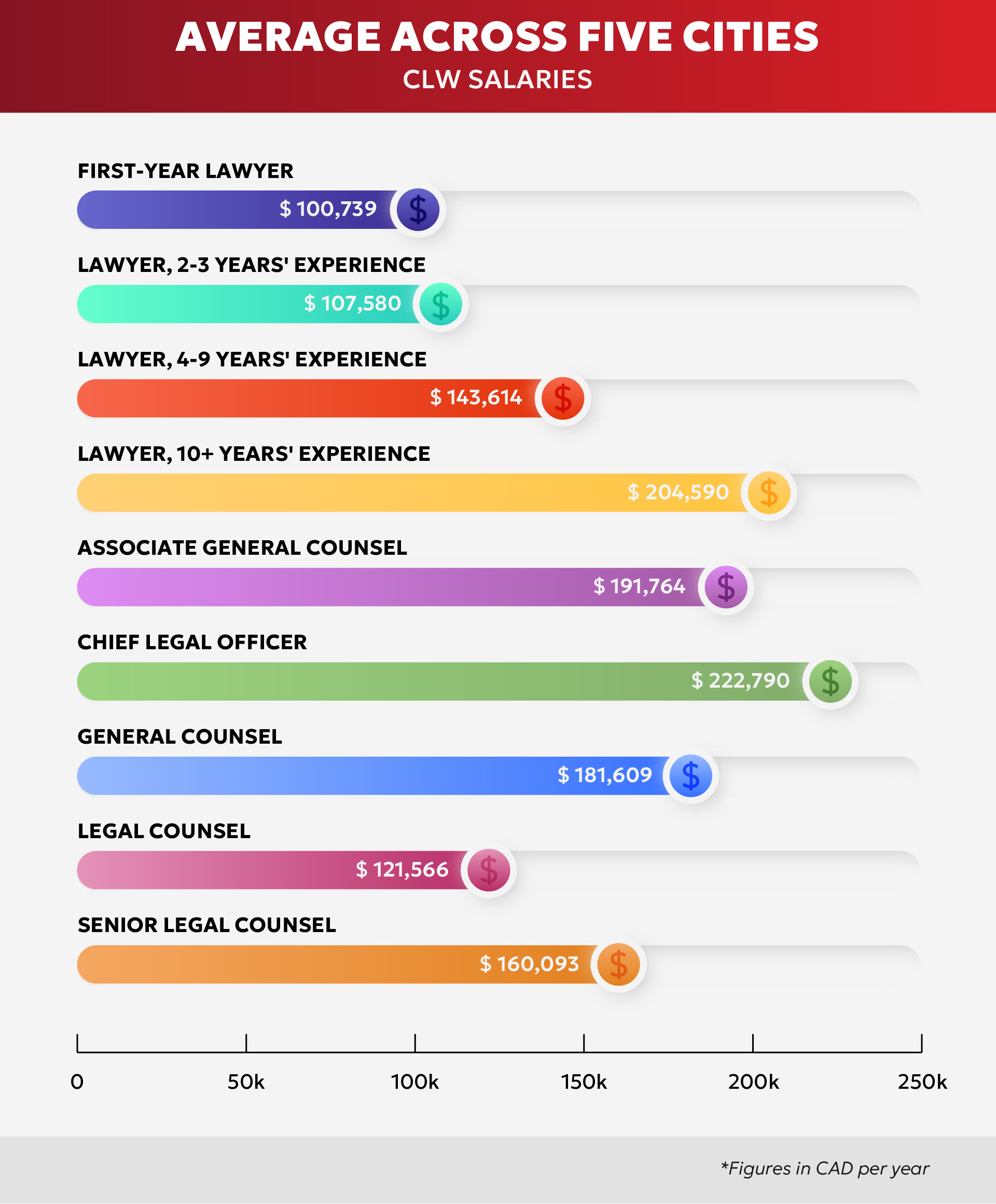
Calgary saw the highest salaries for first-year lawyers and lawyers with two to three years’ experience at $111,438 and $122,978, respectively. However, as experience level increases, the city paying the highest salaries also changes.
Vancouver saw the highest salaries for lawyers with four to nine years’ experience ($153,298), associate general counsel ($205,059), and legal counsel ($149,944).
Montreal saw the highest salaries for lawyers with over 10 years’ experience ($223,739) and chief legal officer ($296,107), while simultaneously seeing the lowest salaries for general counsel and senior legal counsel.
Meanwhile, Toronto saw the highest salaries for general counsel ($203,869) and senior legal counsel ($181,082), but the lowest salary for associate general counsel ($172,765).
Ottawa, however, consistently saw the lower end of the salary scale for all lawyers, regardless of years of experience and legal counsel.
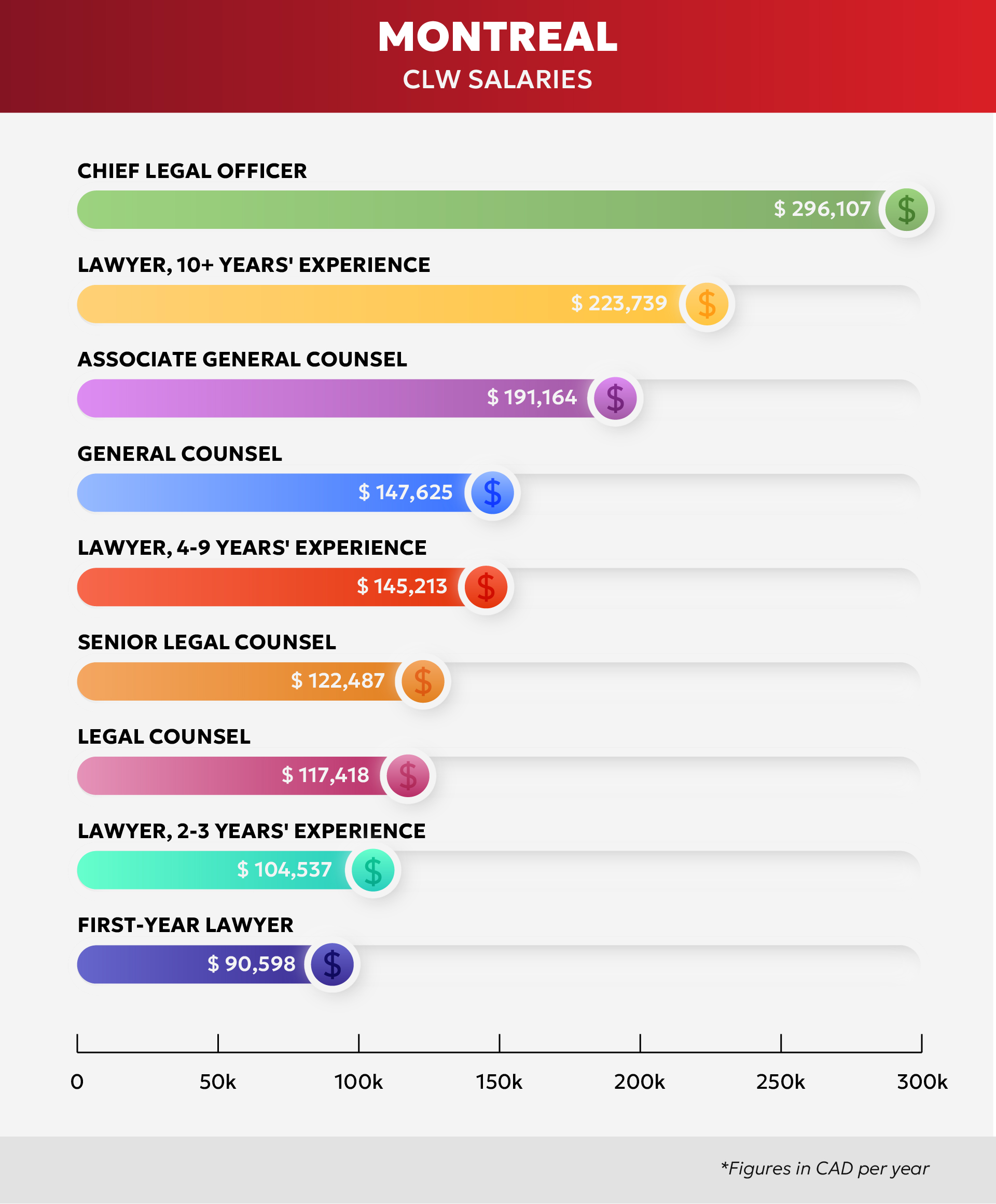
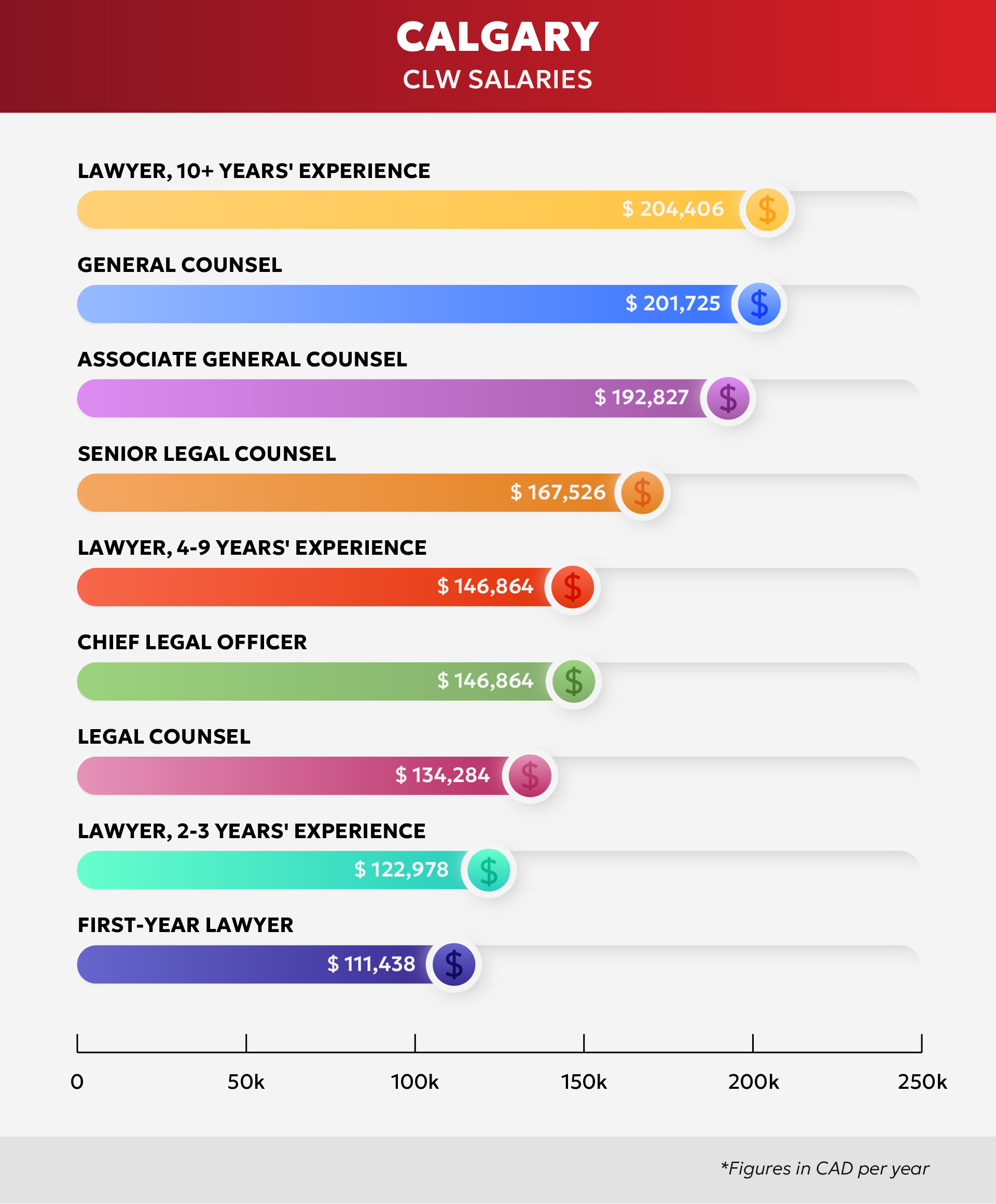
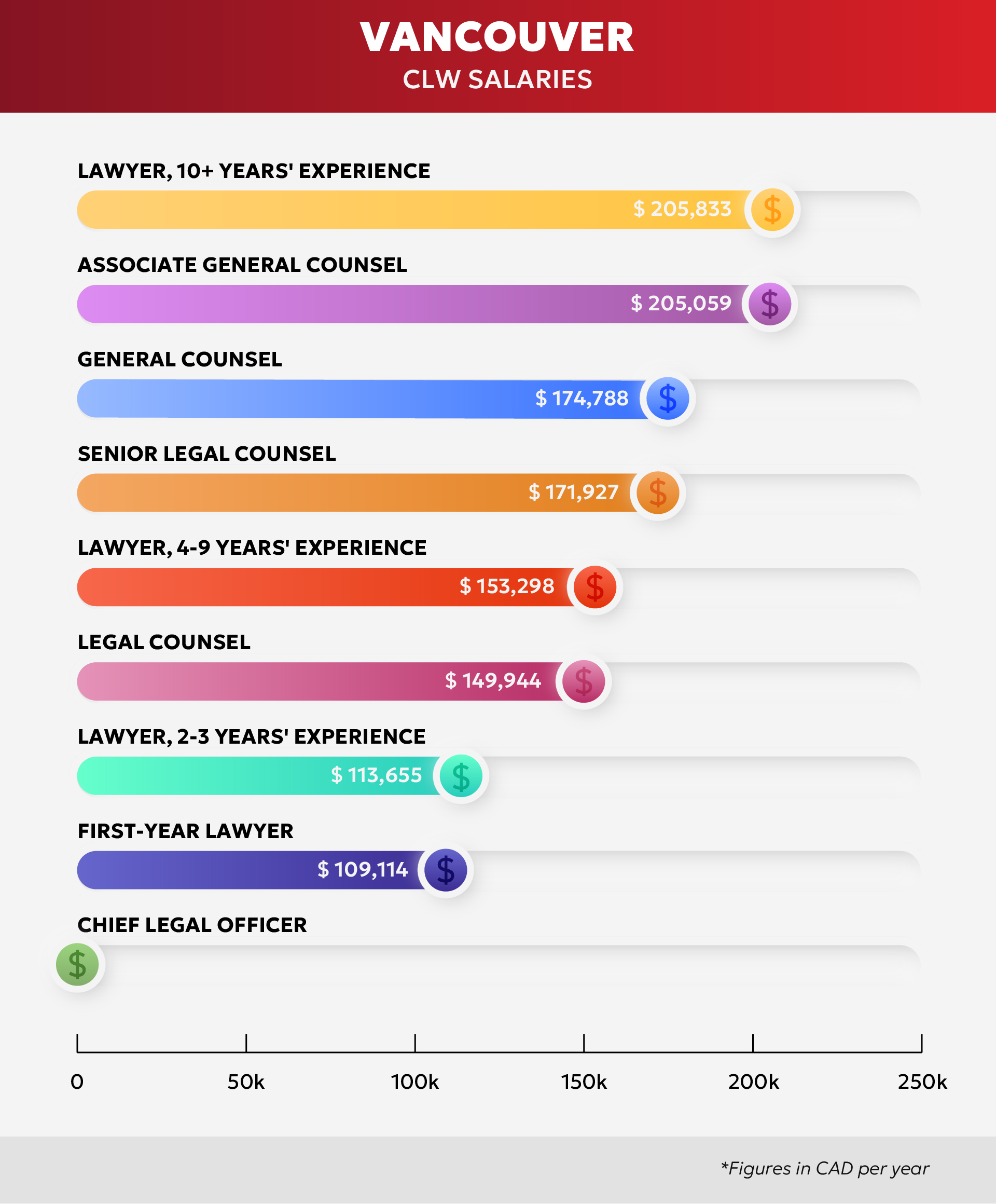

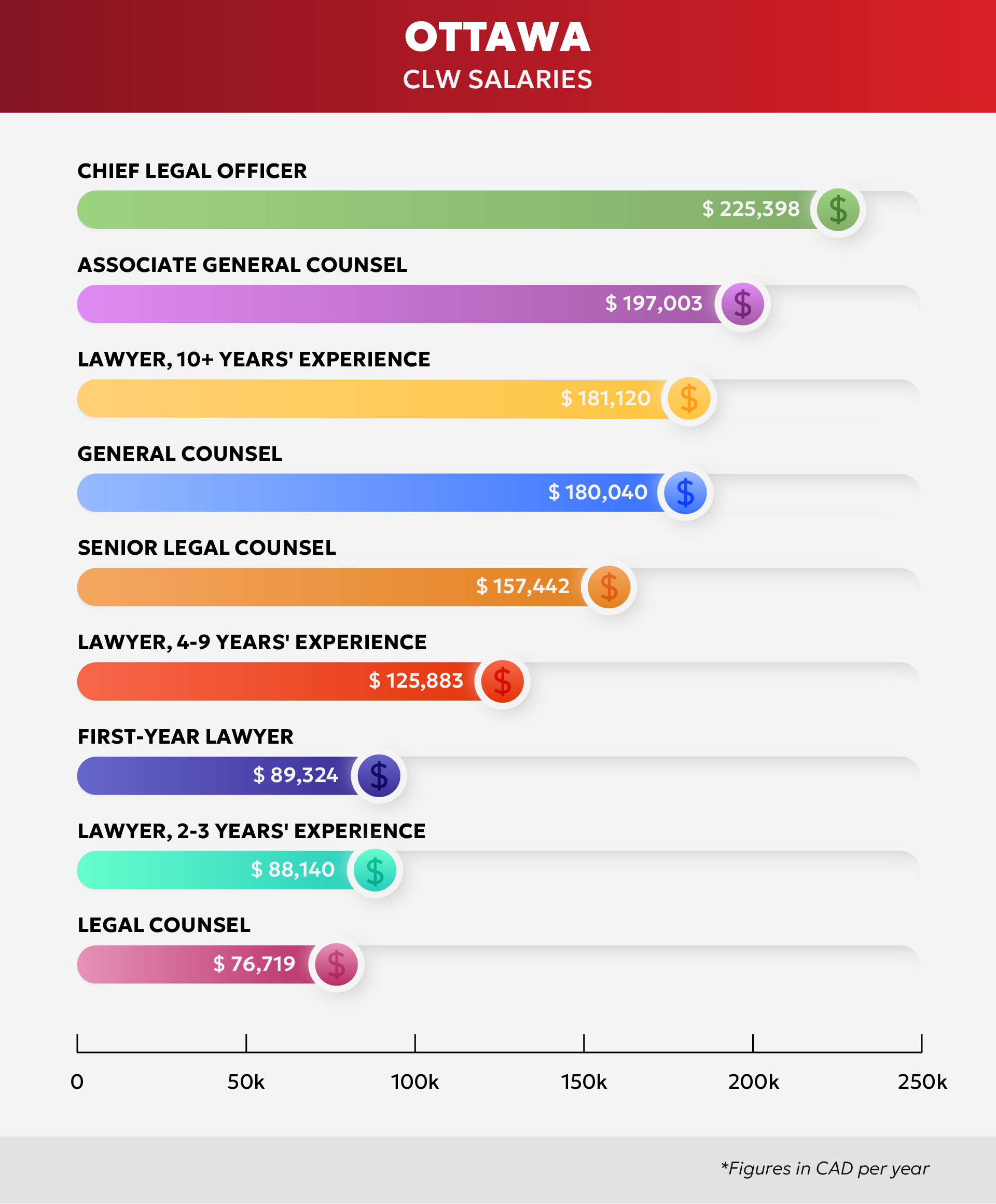
Salary increases because of inflation appear to be one of the main factors driving “abnormally higher rate increases that are being seen both locally and internationally,” said Rosalyn Hogg, partner at Michael, Evrensel & Pawar. According to Hogg, inflation goes hand in hand with administrative and technology costs, which have “increased exponentially in the past year or so.”
“Technology costs have changed; they've gone from buying software on a CD-ROM and owning that software to a subscription-based model for almost every type of software,” Hogg said. “While this might be more expensive, it does mean that we ultimately have more effective tools at our disposal to offer our clients more efficient legal services. So, that’s a positive thing, even though the expense side has changed, and this is contributing to legal fee increases across the board.”
It remains unclear how these trends will continue to progress, particularly with the uncertainty surrounding AI and the role new technology will play in the legal field as it continues to develop.
However, Hogg predicts that technology costs will continue to increase for a period before they start to plateau.
“The issue for me when it comes to the increasing cost of technology and whether that will translate to the same trajectory for legal fees is that there’s not necessarily a perfect correlation between expenses and increases in legal fees, so it depends on how firms react to the rise of costs,” Hogg said.
Among the respondents, 74 percent reported using blended hourly rates as a fee structure, followed by flat fees at 65 percent. Meanwhile, rising discounts were the least widely used fee structure, with only 8 percent of respondents reporting using them.
In comparison, the most widely used fee structure by firms in 2021 was fee packages/bundles (59.6 percent), while 58.08 percent reported using blended hourly rates. Rising discounts were again the least widely used fee structure, used by only 9.6 percent of respondents.
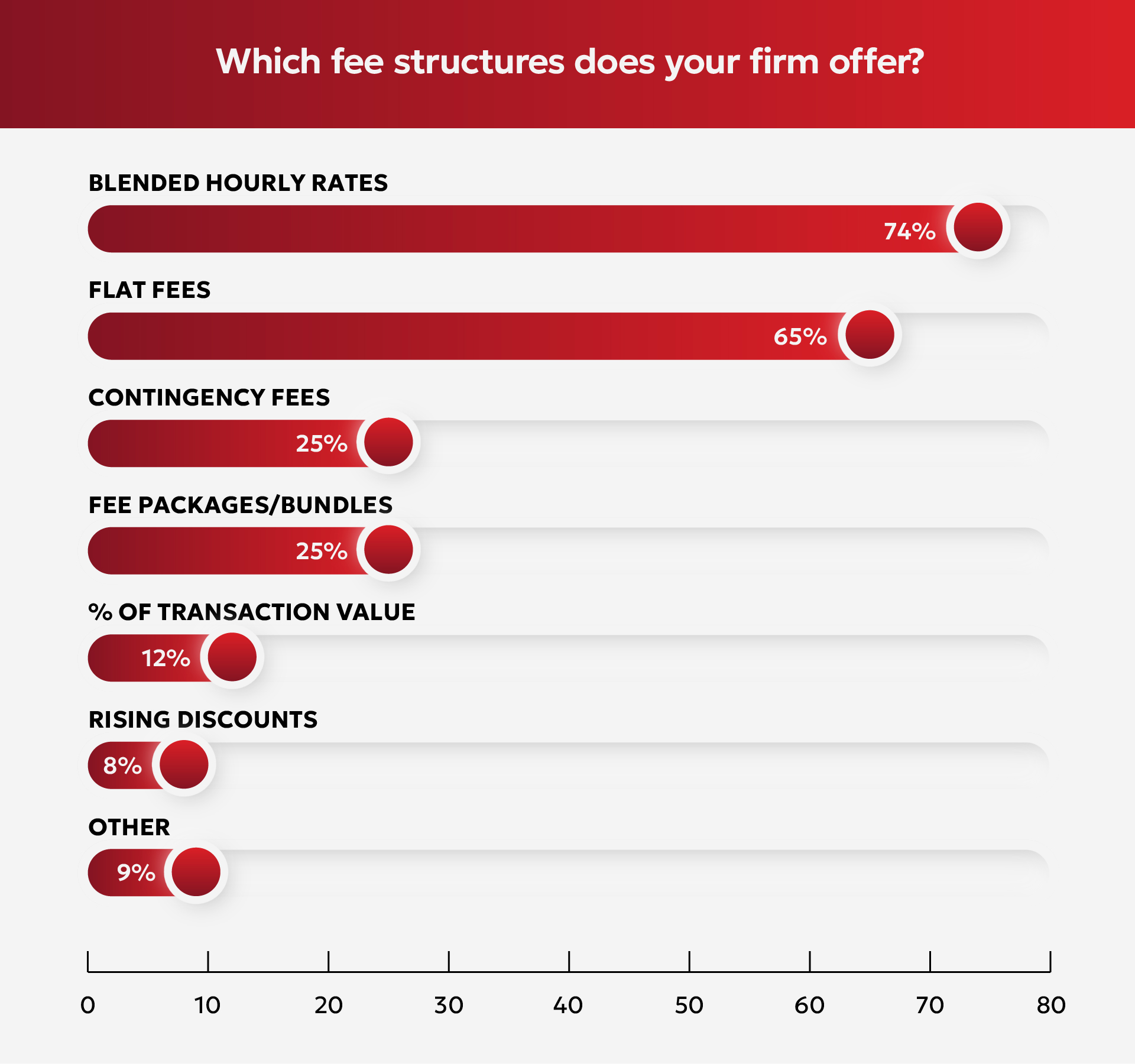
More than half of firms (51 percent) also reported having 1 percent–25 percent of firm revenue billed using an alternative fee structure (not solely an hourly rate). In comparison, 0 percent of firms reported having 0 percent or 100 percent billed by an alternative fee structure, highlighting the prominence of blended fee structures.
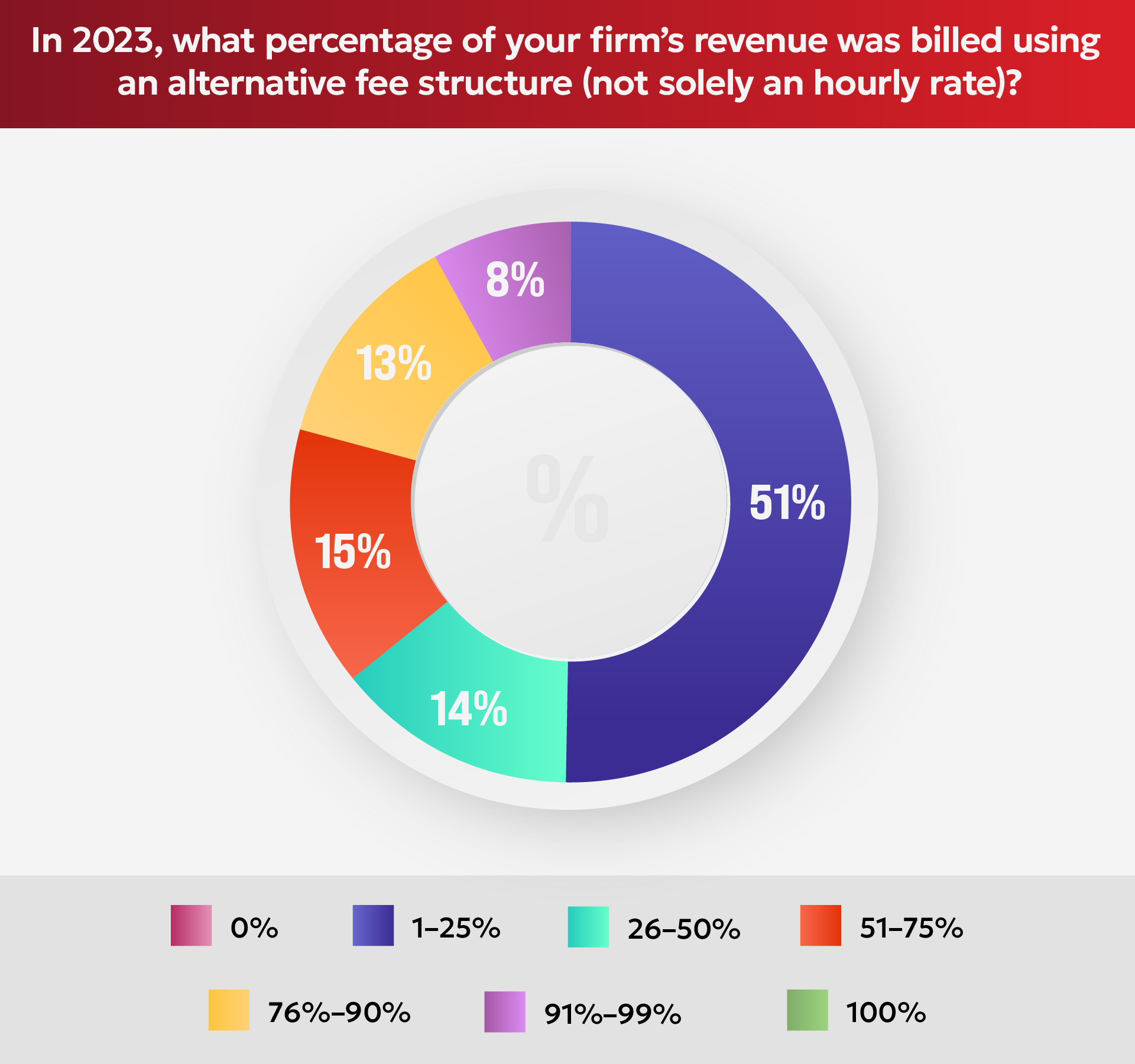
In addition, 50 percent of respondents reported that 1 percent–25 percent of their firm’s revenue comes from flat fees. Again, 0 percent of firms reported having 0 percent or 100 percent of firm revenue coming from flat fees.
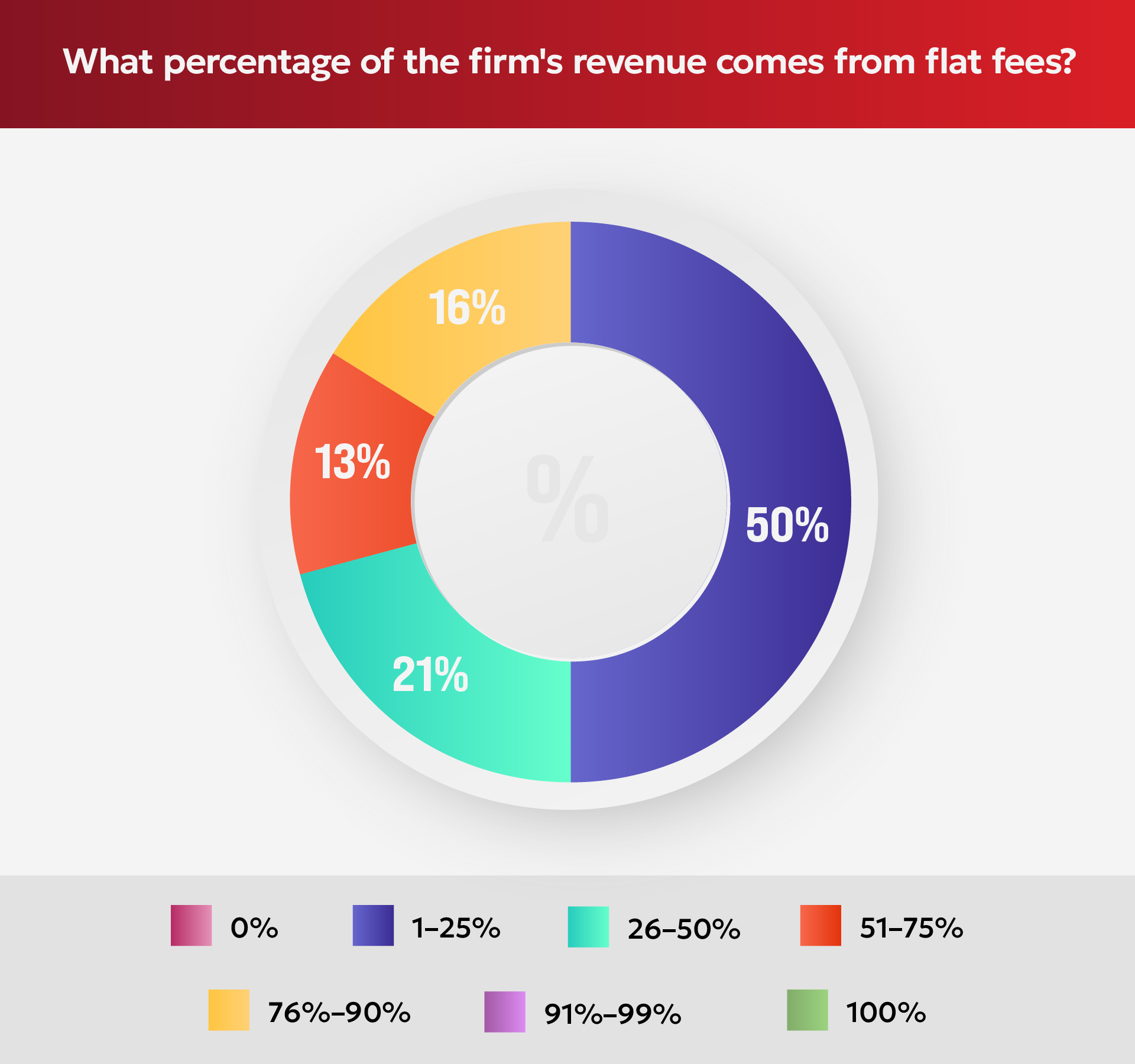
Despite this, 67 percent of respondents said the share of revenue from alternative fee structures saw no change in 2023, relative to the year before, while 24 percent reported some increase.
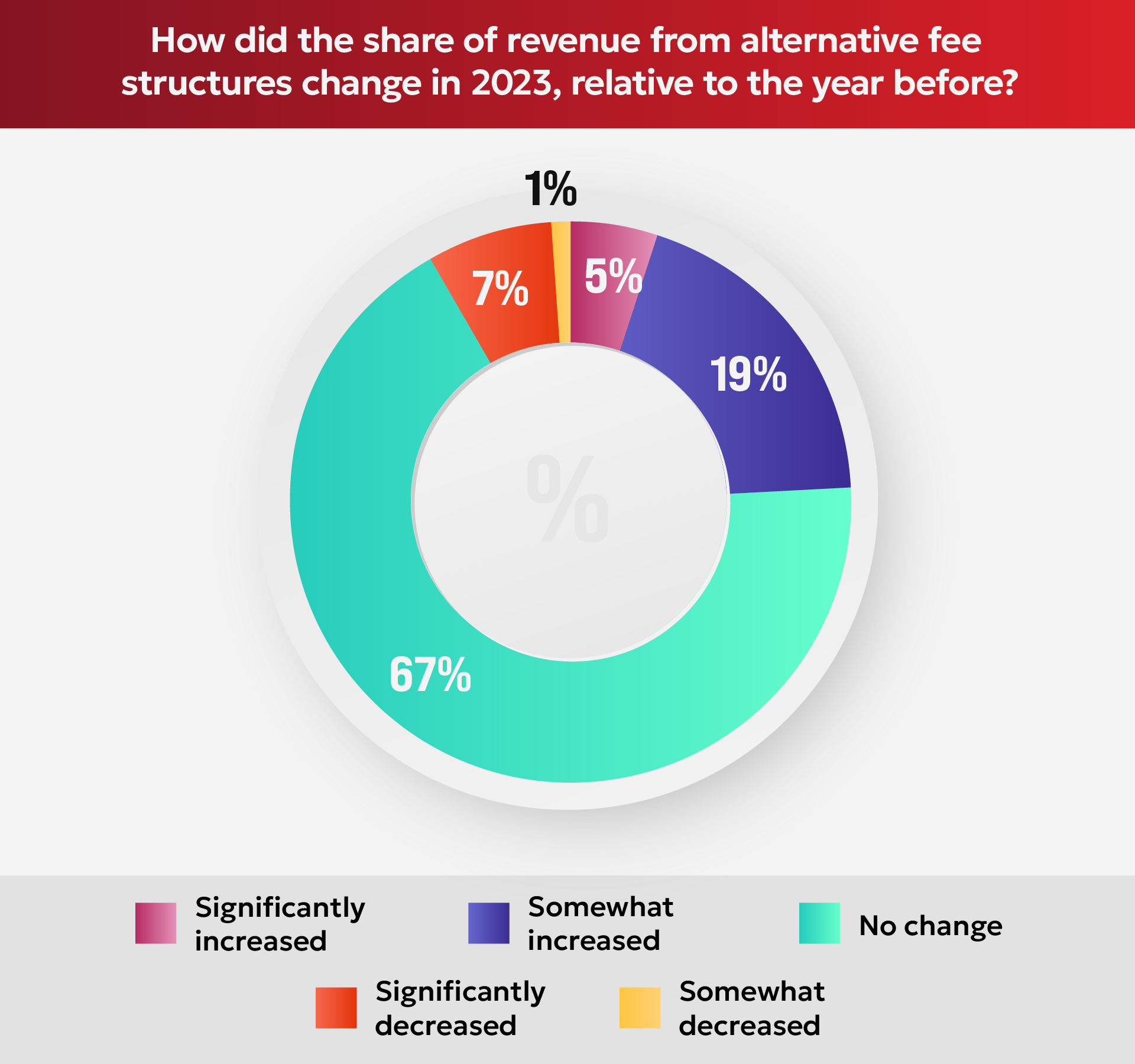
Unsurprisingly, hourly billing rates increase in conjunction with years of experience and become more expensive as firm size increases. This was consistent across all firm sizes, regions, and fee types, highlighting the impact of experience on legal fees.
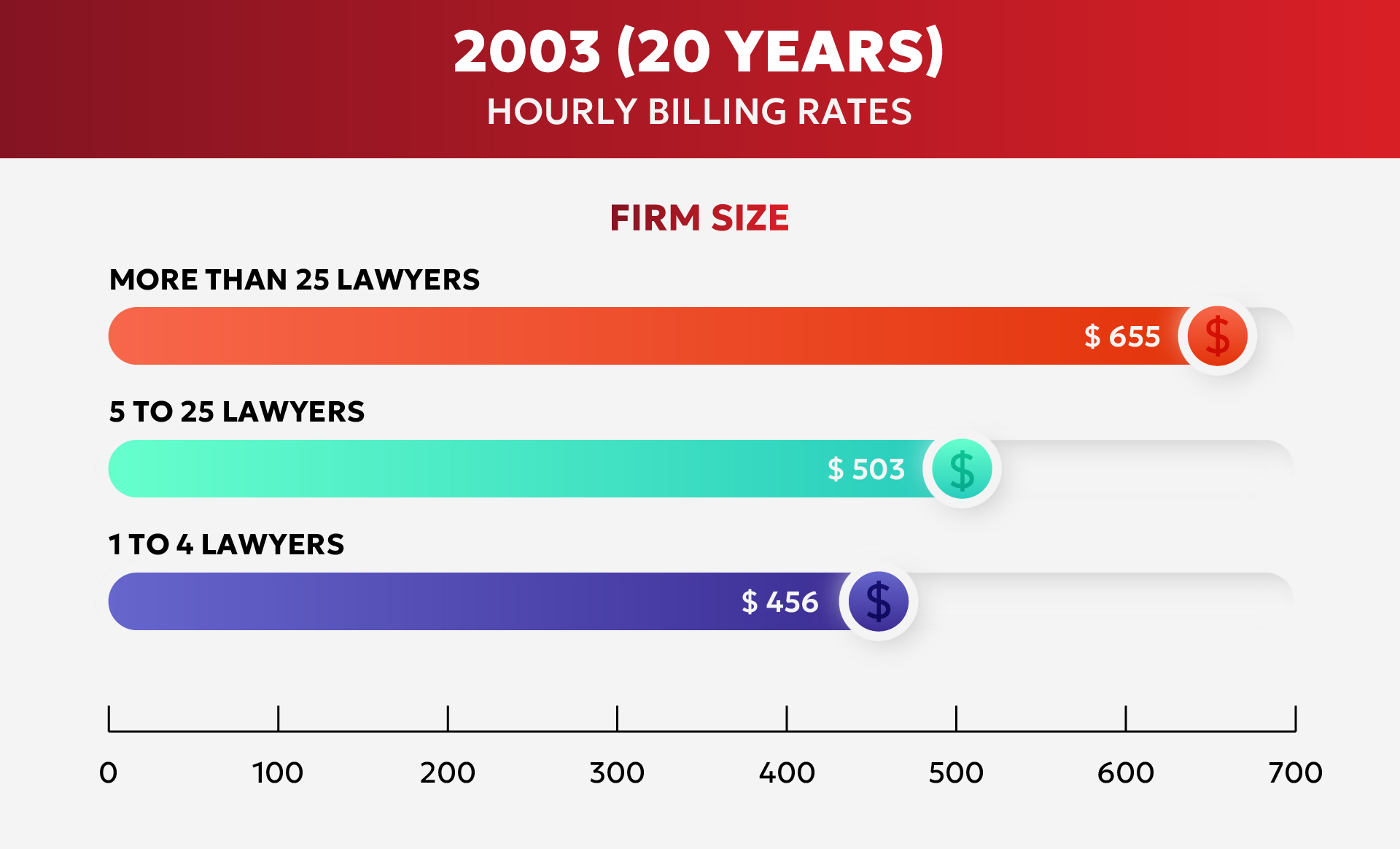
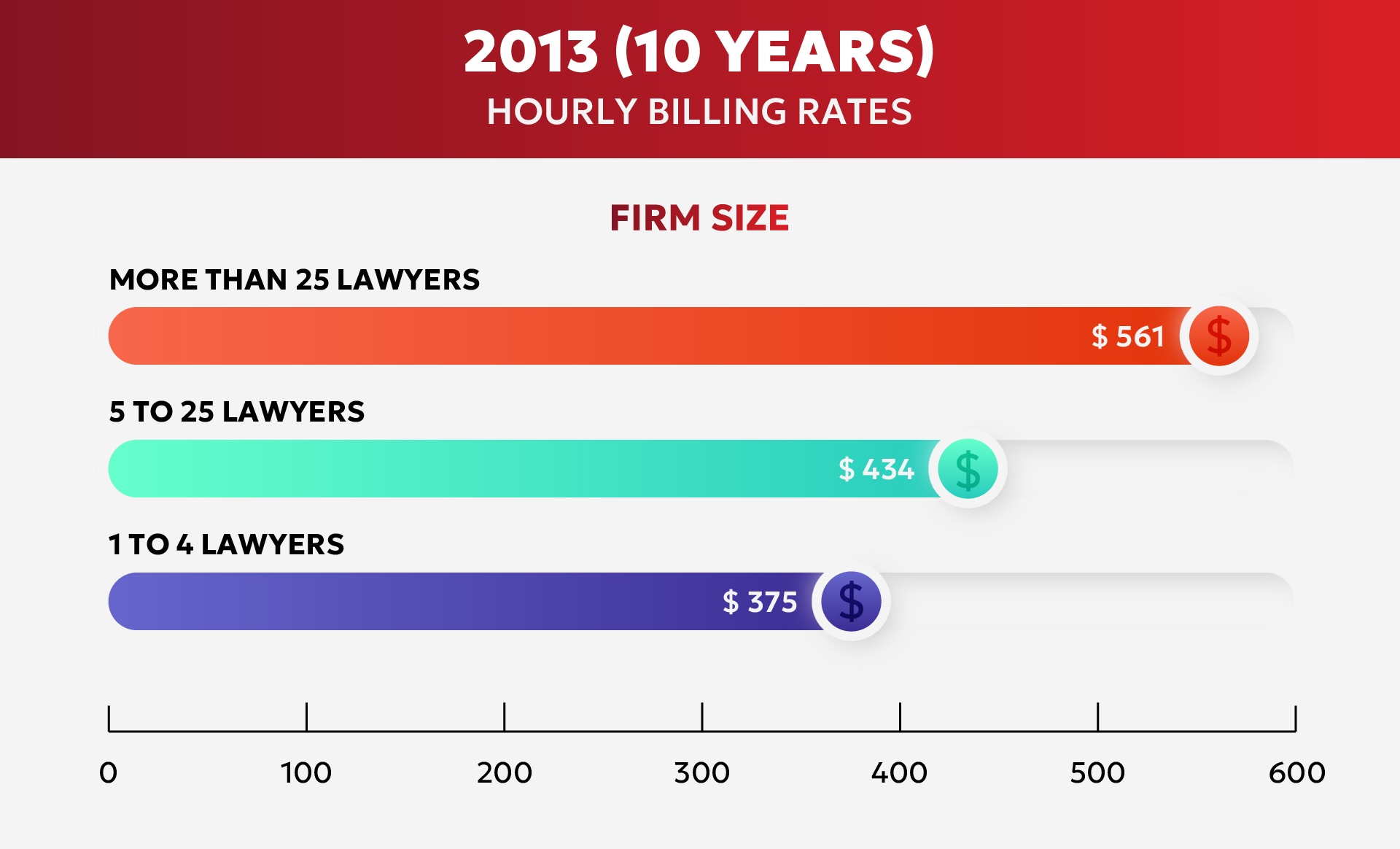
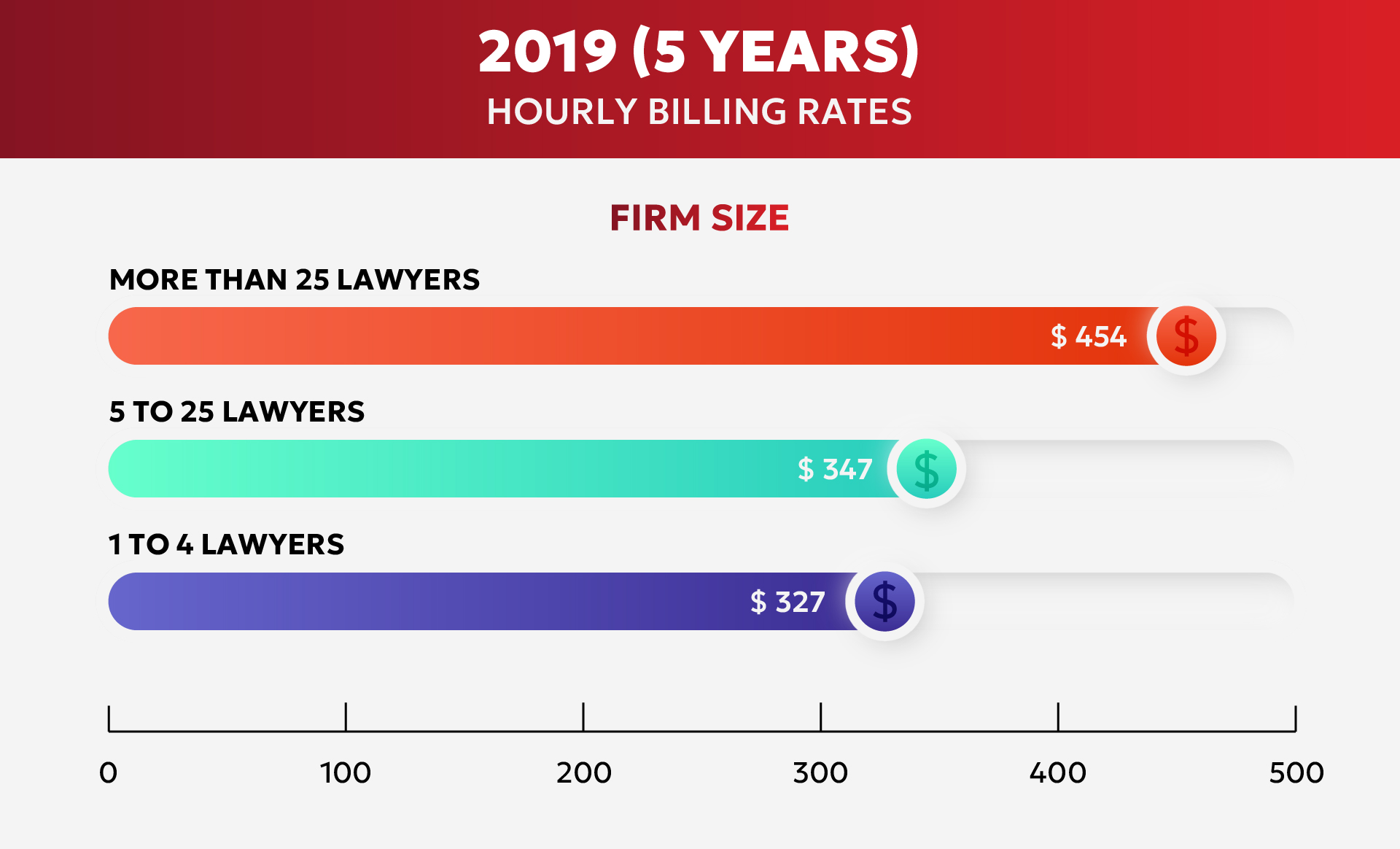
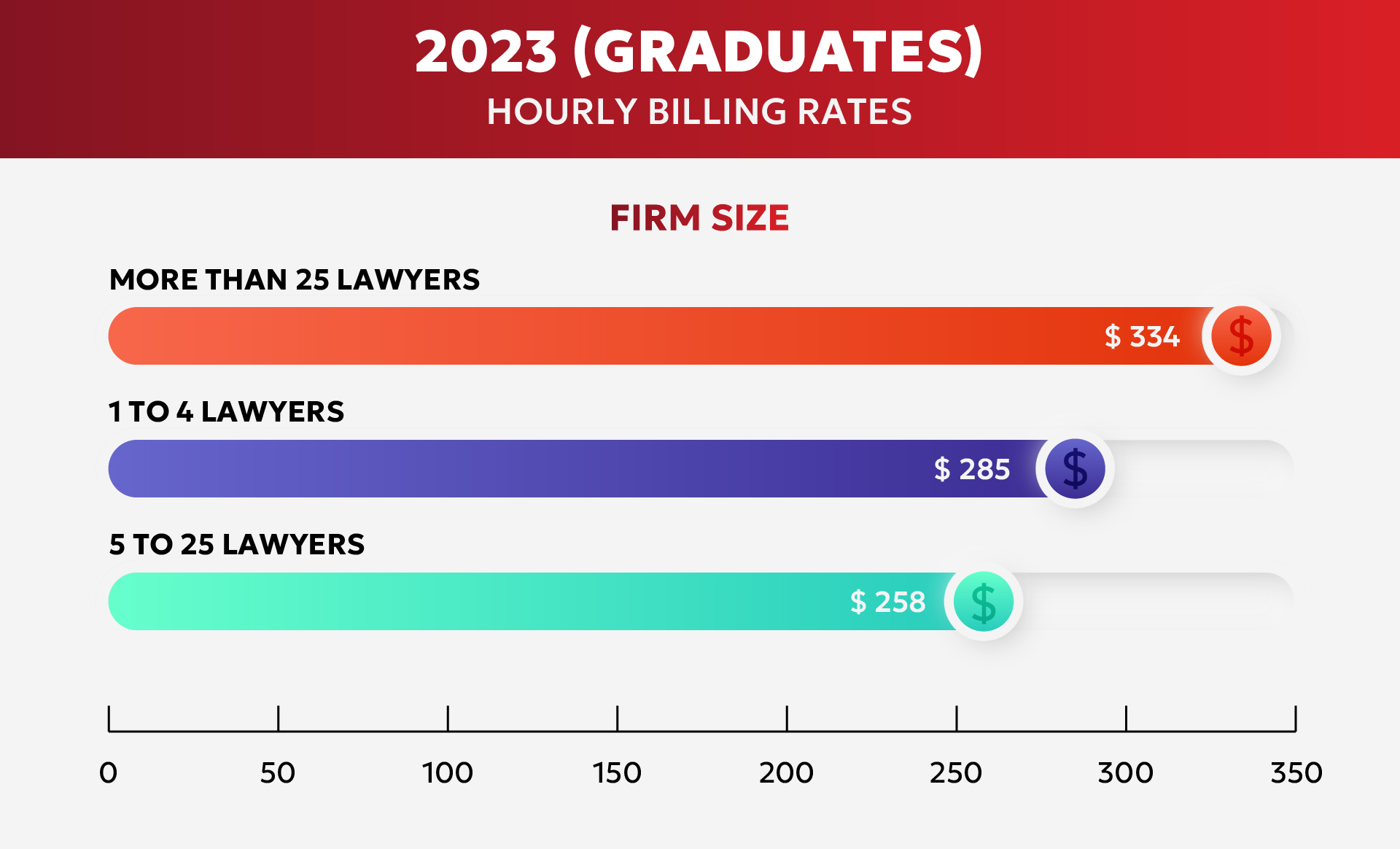
The East region saw the highest hourly billing rates across all experience levels. Meanwhile, Ontario saw the lowest fees for graduates, lawyers with five years’ experience, and lawyers with 10 years’ experience. However, national rates were lowest for lawyers with 20 years of experience, and the West region saw the lowest rates for lawyers with more than 20 years of experience.
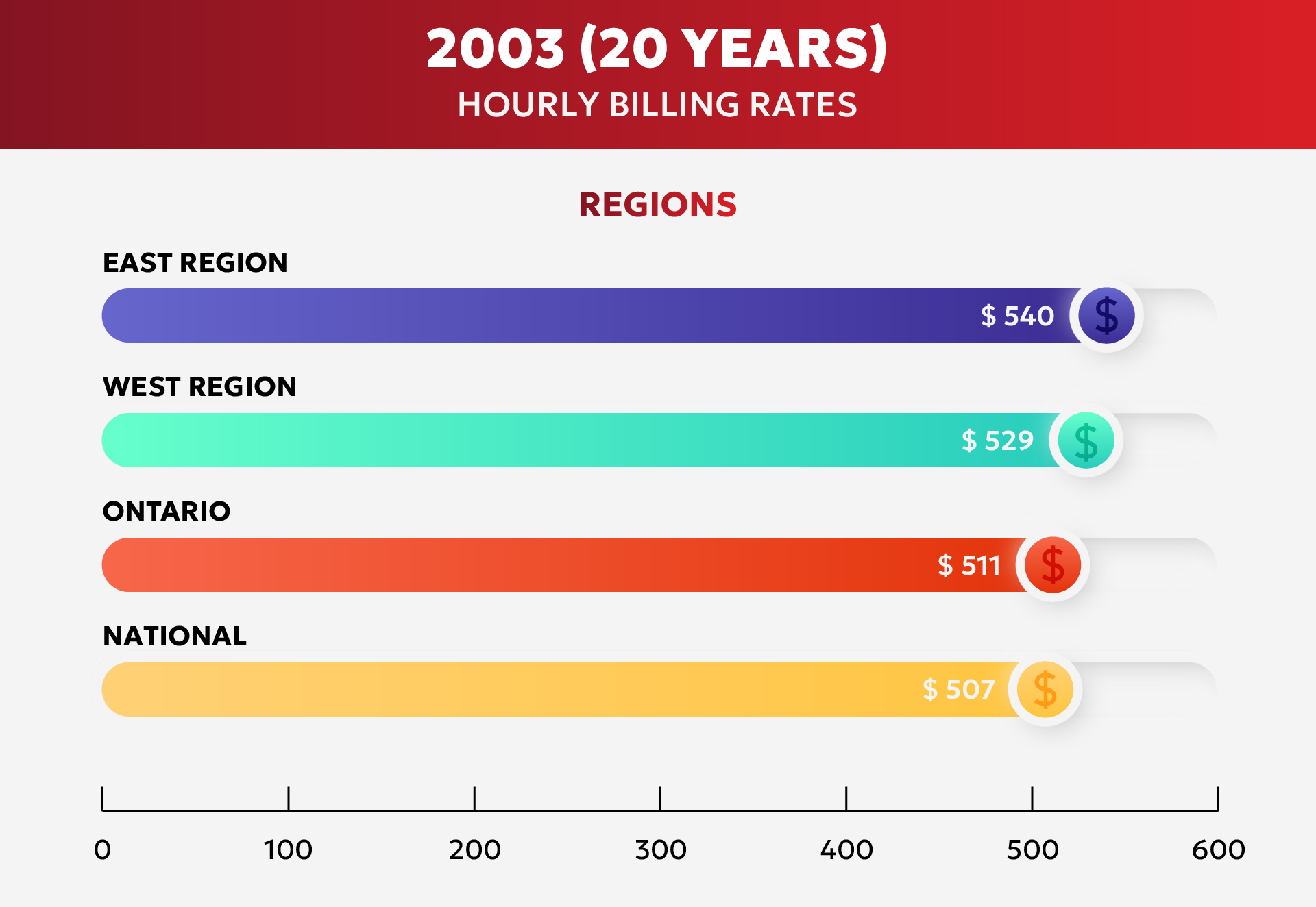
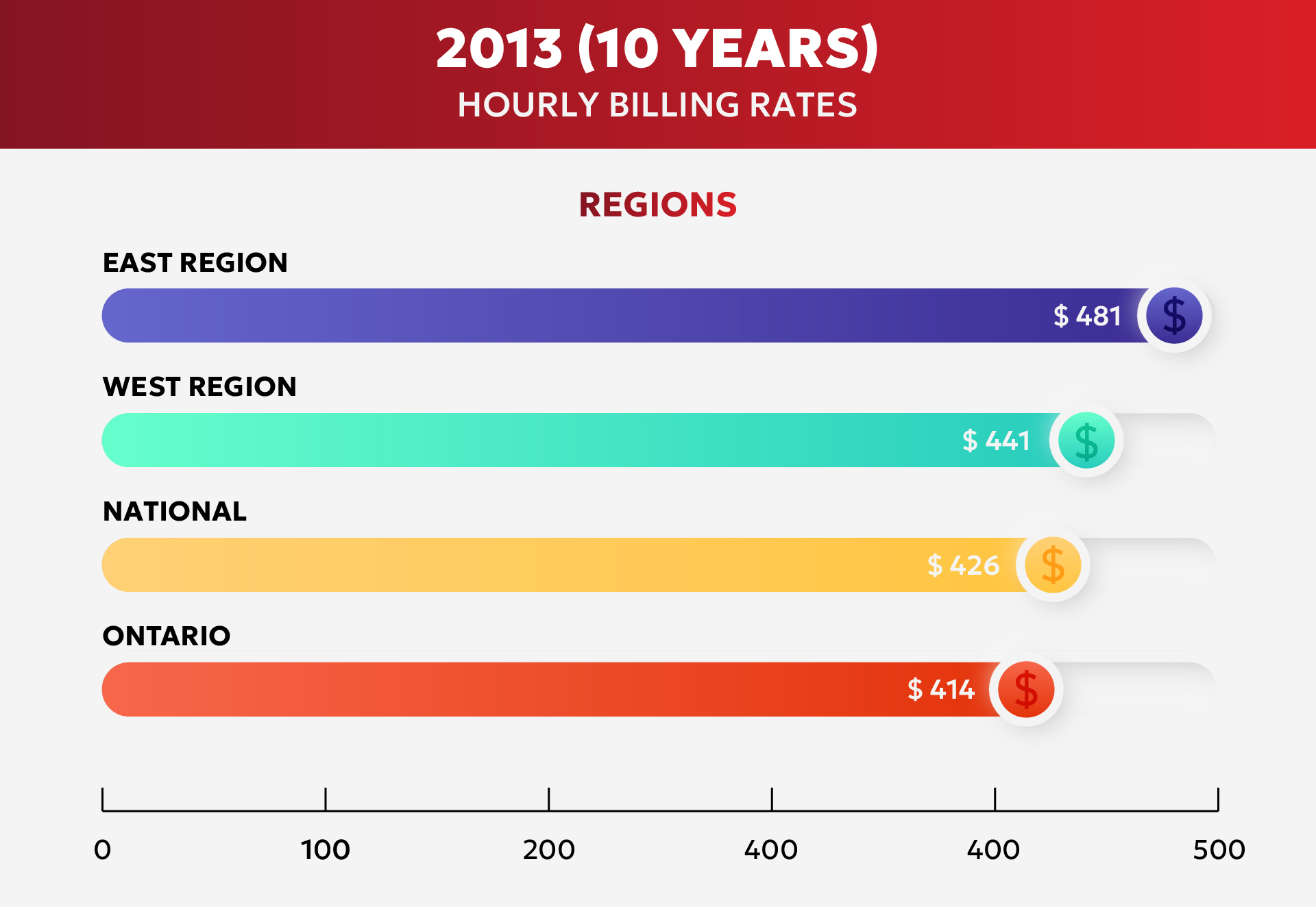
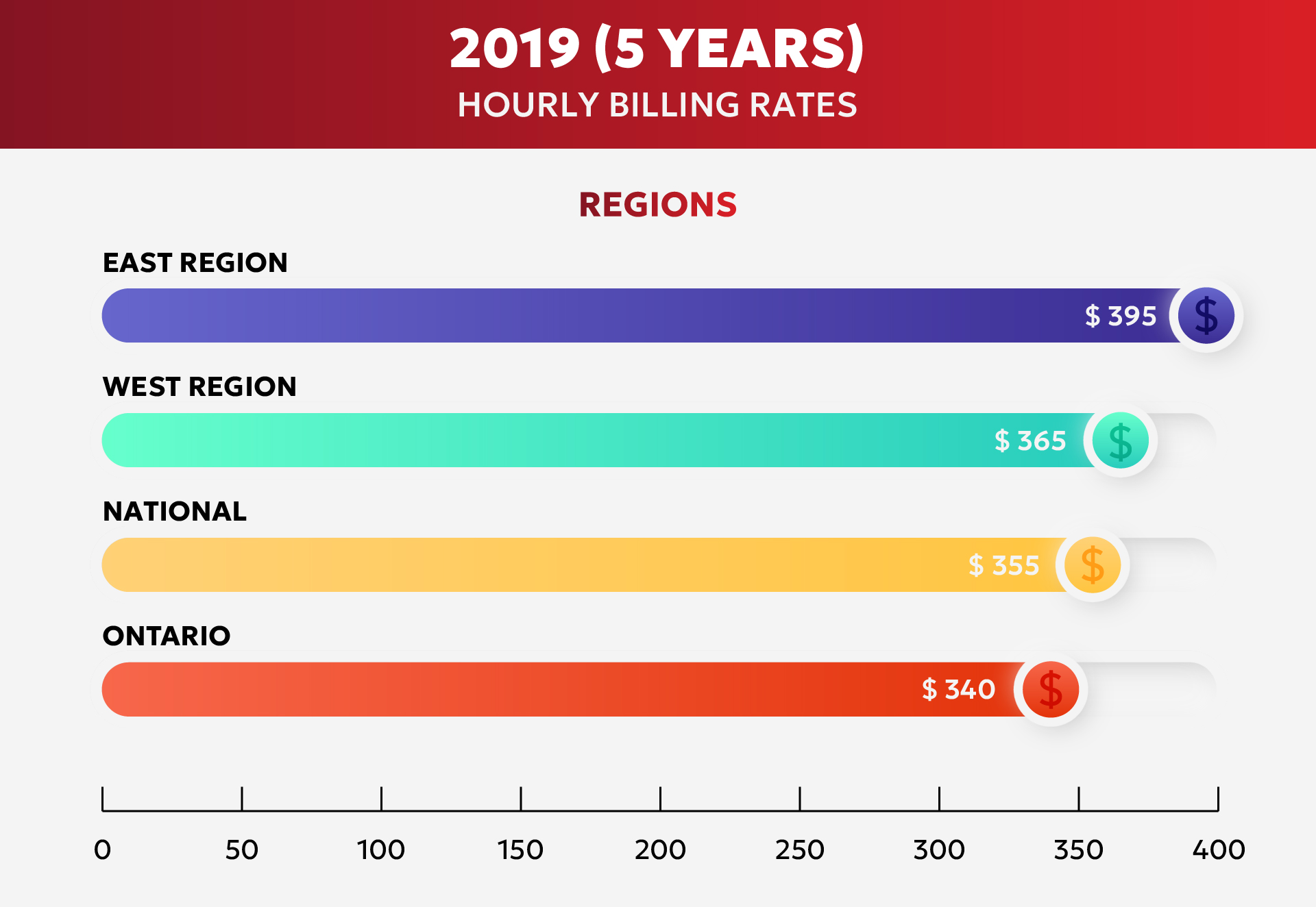
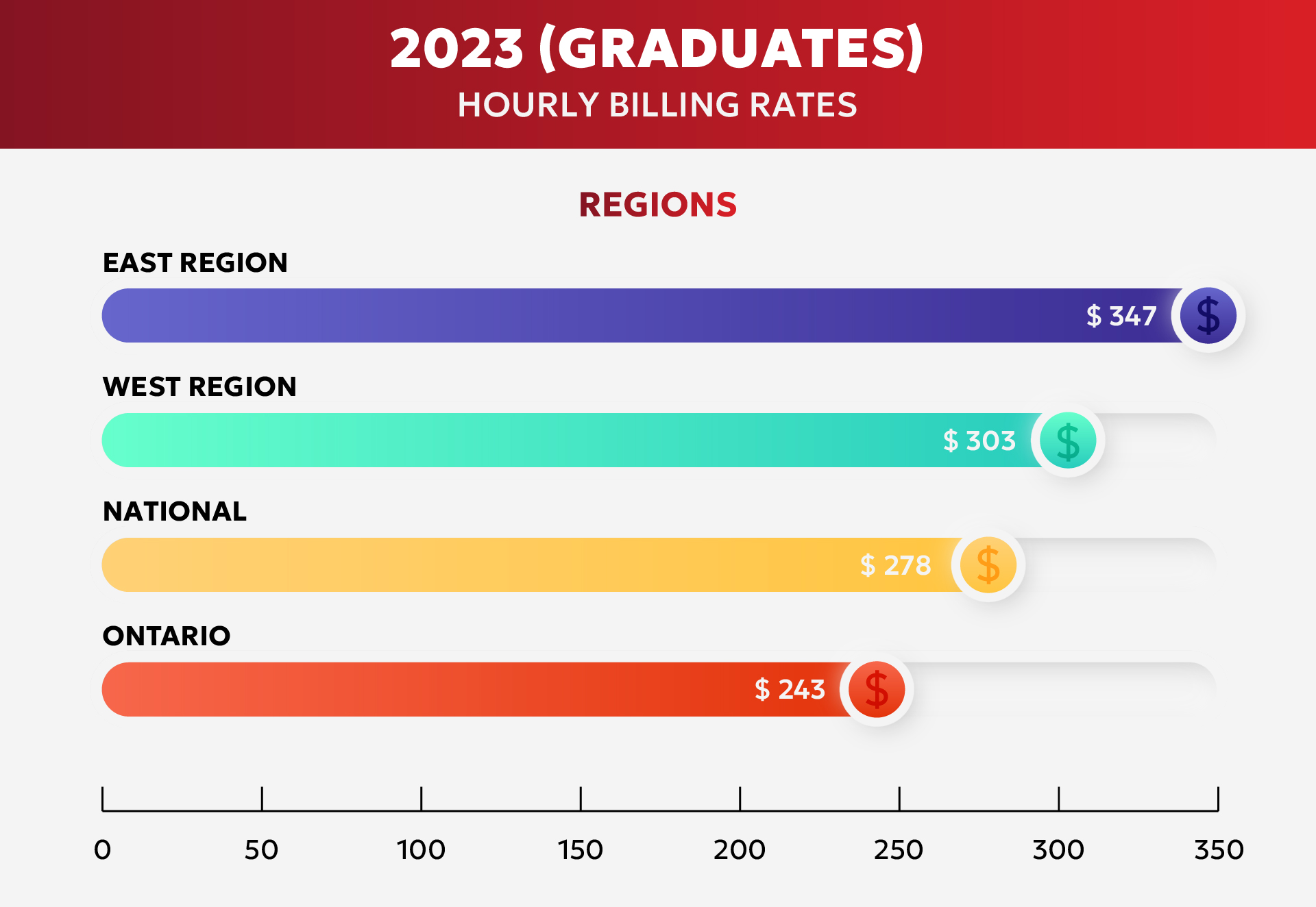
Meanwhile, intellectual property was the highest hourly billing rate for all lawyers except graduates, whose highest fee was for immigration.
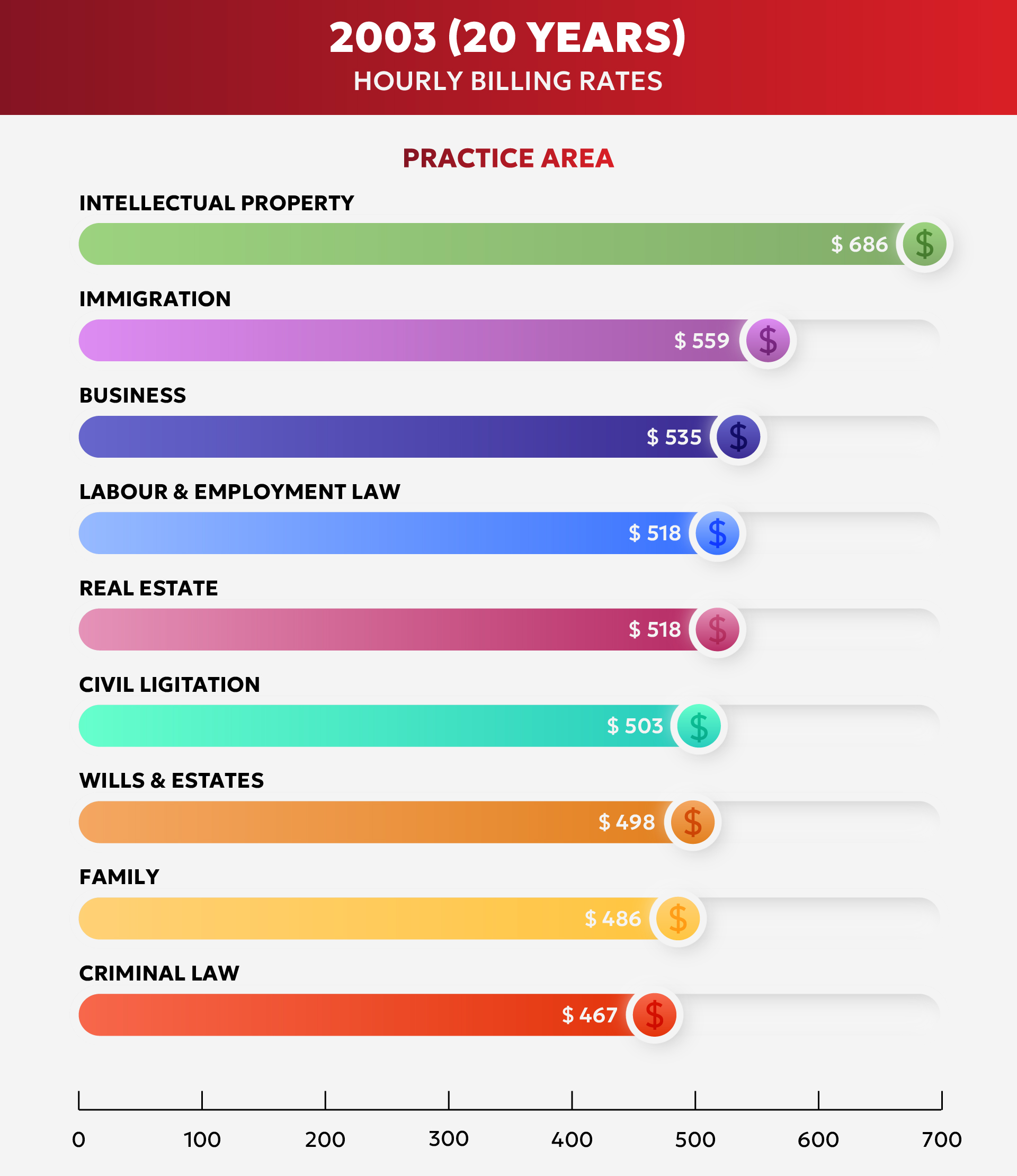
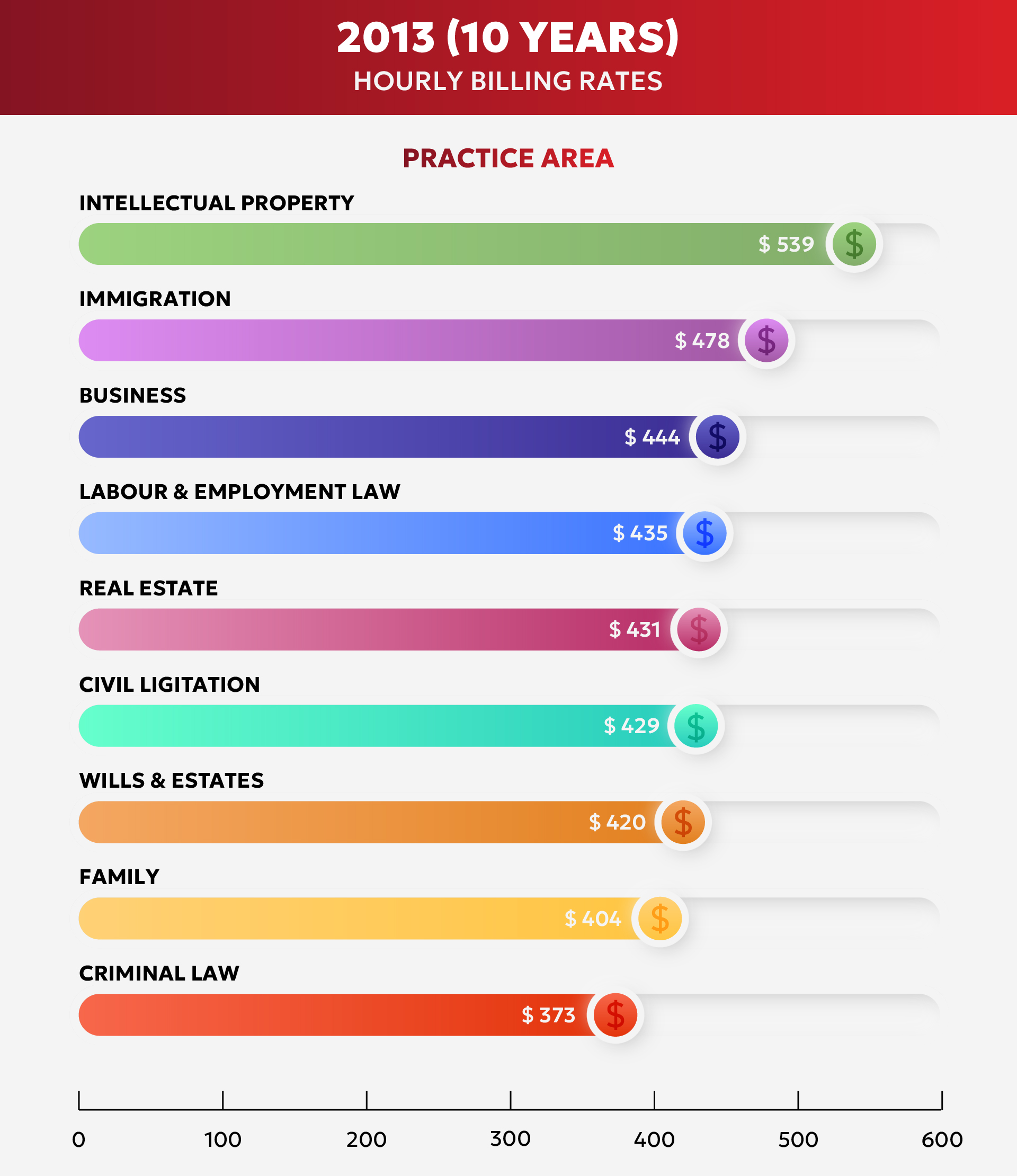
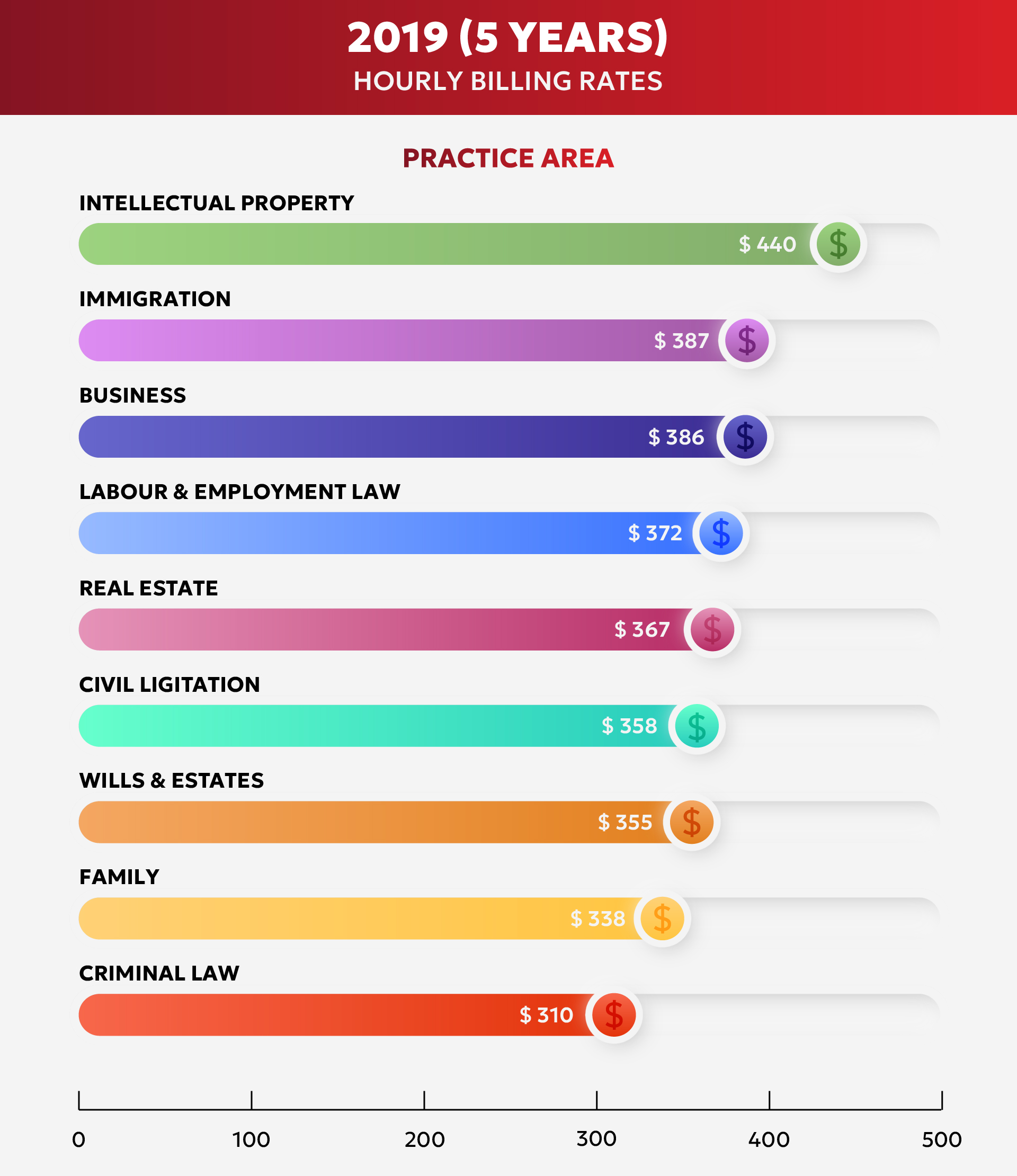
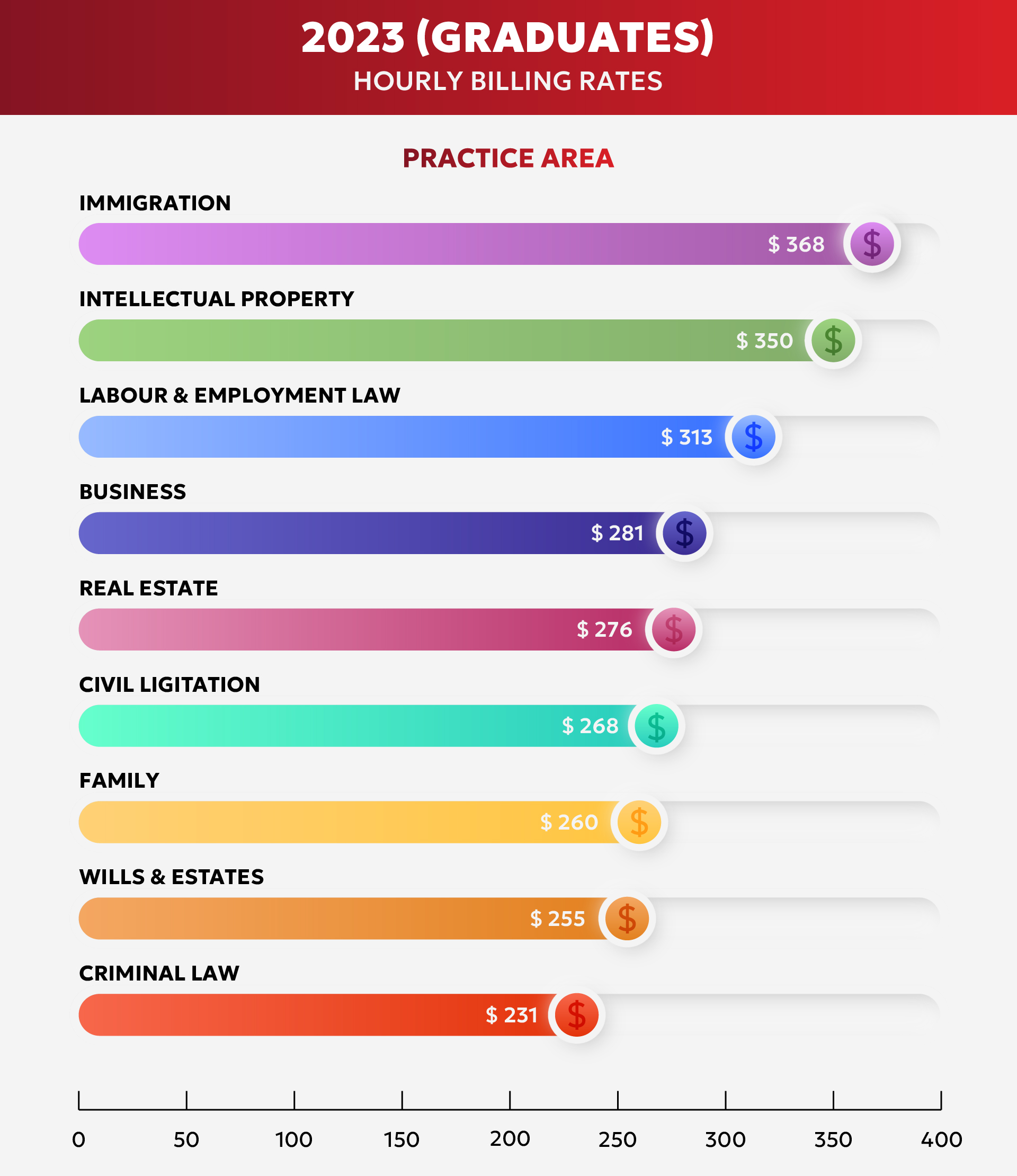
According to our survey respondents, real estate (24 percent) is the leading practice area, indicating its significant contribution to law firms’ revenue, followed by business (20 percent) and civil litigation (16 percent). In comparison, criminal law, immigration, and intellectual property were the smallest contributors to revenue at 3 percent, 3 percent, and 1 percent, respectively.
Interestingly, in 2020, criminal law was the biggest source of revenue for 18.4 percent of firms, and real estate was the second biggest source at 14.9 percent.
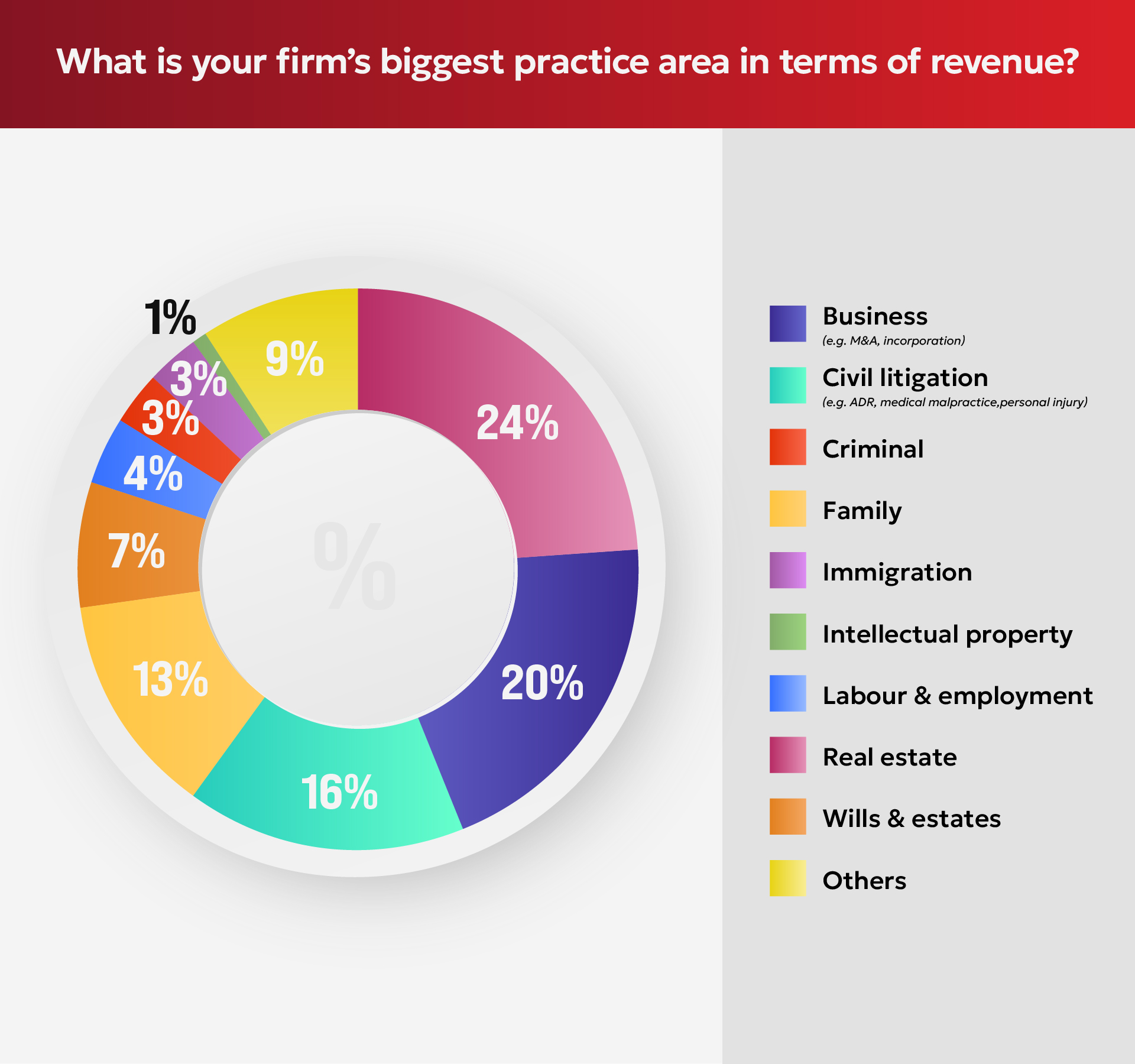
Criminal law was also projected to see the most revenue growth (17.2 percent) in 2021. However, in 2024, business and wills and estates were both projected to see the most revenue growth (20 percent), with criminal law falling to the bottom alongside immigration and intellectual property.
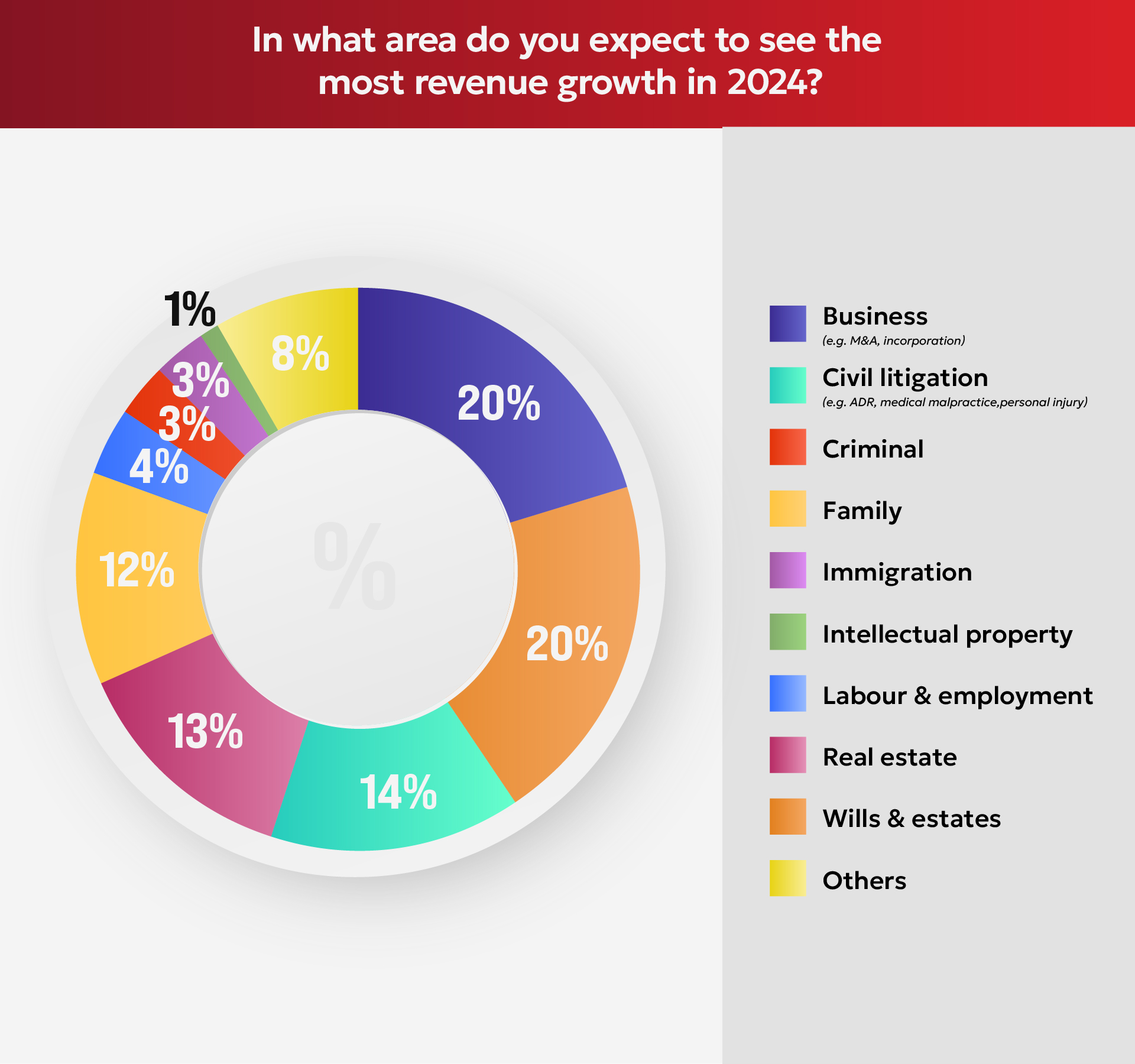
Recruiting and training staff was reported as the top economic challenge (36 percent), highlighting issues in talent acquisition and development, closely followed by increasing revenue (34 percent) and expense management (33 percent).
Expanding business from existing clients and client retention ranked lowest among economic concerns at 7 percent and 5 percent, respectively, suggesting strength in existing client relationships, while nearly one-third of firms saw attracting new clients as the greatest economic challenge.
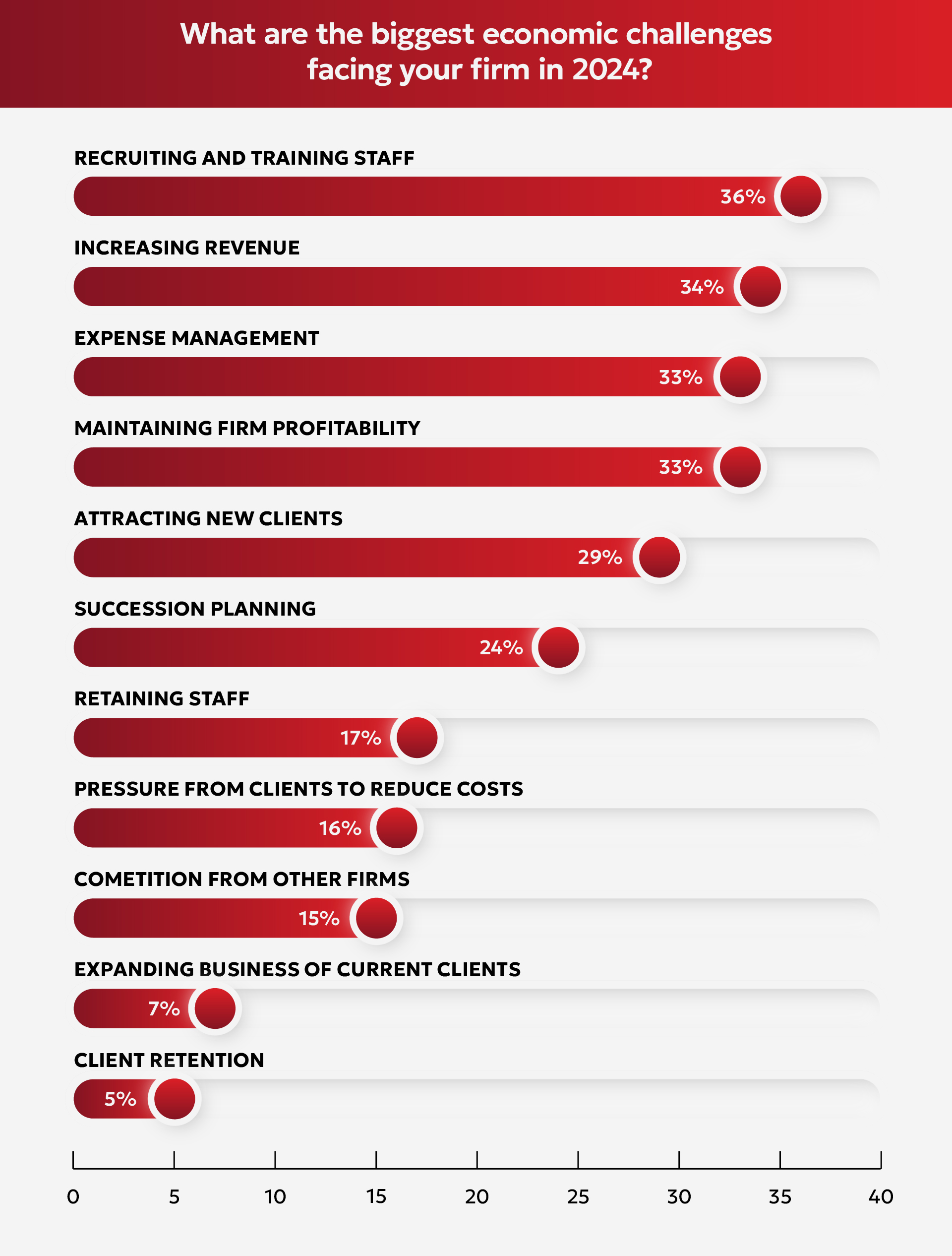
In comparison, in 2021, maintaining firm profitability and recruiting and training staff were the top economic challenges facing law firms, both at 33 percent, closely followed by increasing revenue at 29.7 percent.
Thomson Reuters Institute’s 2024 State of the Canadian Law Firm Market report also highlighted attracting and retaining top talent as a “significant challenge” for 25 percent of firms, second only to spending too much time on administrative tasks and not enough time practising law (29 percent).
On the other end of the spectrum, only 3 percent of firms reported retaining client business as a “significant challenge,” only behind conducting meetings virtually at 2 percent.
According to Rosalyn Hogg, partner at Michael, Evrensel & Pawar, the landscape has changed significantly post-COVID when it comes to recruiting and training talent. Greater emphasis is being placed on providing comprehensive compensation and benefit programs and work-life balance. This shift marks a stark contrast from pre-pandemic times when monetary compensation was the primary consideration for legal professionals. This change in employee expectations also affects law firms’ recruitment strategies.
“We’re seeing a lot more emphasis on non-monetary benefits like time off, flex time, or work-from-home options,” she said. “Previously, employees were much more willing to tolerate certain aspects of private practice in order to climb the corporate ladder. But I don’t know how much of that exists anymore.”
The evolving economic landscape extends beyond recruitment and impacts how law firms increase revenue – the second biggest economic concern for our survey respondents. Law firms are also exploring new ways to expand service offerings and attract clients, though this is proving difficult as both firms and clients face the same economic pressures.
“There are always multiple ways to increase revenue – part of it is just increasing our rates, and part of the challenge in doing that is ensuring we are doing right by our clients,” Hogg said. “Expanding business with current clients can be more difficult when they’re facing the same difficult economic circumstances.”
Despite the challenges, many firms are finding success by positioning themselves as providers of sound business advice in addition to traditional legal services, a shift that clients are increasingly demanding.
The primary conclusion of this report lies within the correlation between inflation, salaries and legal fees, with inflation creating demand for higher salaries, which is, in turn, driving legal fees upward. While there are other factors also contributing to increased costs for law firms, like administrative and technology costs, the domino effect created by the increasing cost of living, particularly in big cities, seems to be the driving force behind the increase in legal fees.
Across Calgary, Toronto, Montreal, Ottawa, and Vancouver, the average salary for legal professionals ranges from $100,000 for first-year lawyers to over $220,000 for chief legal officers. No one city, however, paid more for all legal roles than any other, with location seemingly having little effect on salary for these larger cities.
While many practice areas saw fees increasing, some have also seen decreases, perhaps suggesting changes in demand for certain legal services, promoting a fee decrease. All firms, regardless of size, saw fee increases for secured financing agreements, simple M&A transactions, and simple small business corporations for business law. Civil litigation up to trial (five days), residential real estate purchases, residential real estate sales, residential real estate sales and purchases, complex wills (couples and individuals), power of attorney (couples) and simple wills (couples and individuals) also saw consistent increases relative to 2021. These increases align with business, wills and estates, civil litigation and real estate being the top four areas expected to see the most revenue growth in 2024.
Despite a trend of increasing legal fees in many areas, with 64 percent of firms planning to increase fees from 2023 rates, the majority of firms also reported no change in staffing levels for partners (81 percent), other lawyers (62 percent) and all other staff (57 percent). With staff levels, and as a result, salary costs, remaining steady, this further highlights the impact of inflation on the legal profession. Law firms don’t have to accommodate salaries for increased staff, but rather provide more money for existing staff as the cost of living continues to become more of a challenge, especially for those in big cities like Toronto.
This goes hand in hand with the top economic challenges faced by employers, with recruiting and training staff reported as the top concern (36 percent), closely followed by increasing revenue (34 percent) and expense management (33 percent). With regards to the future, however, legal experts are unsure how the legal fee landscape will continue to develop, with factors such as technology and inflation playing influential roles in its future. There is no telling how long fees will continue to increase or when they will flatten out, but for now, the key for law firms is striking a balance between profitability and client satisfaction.